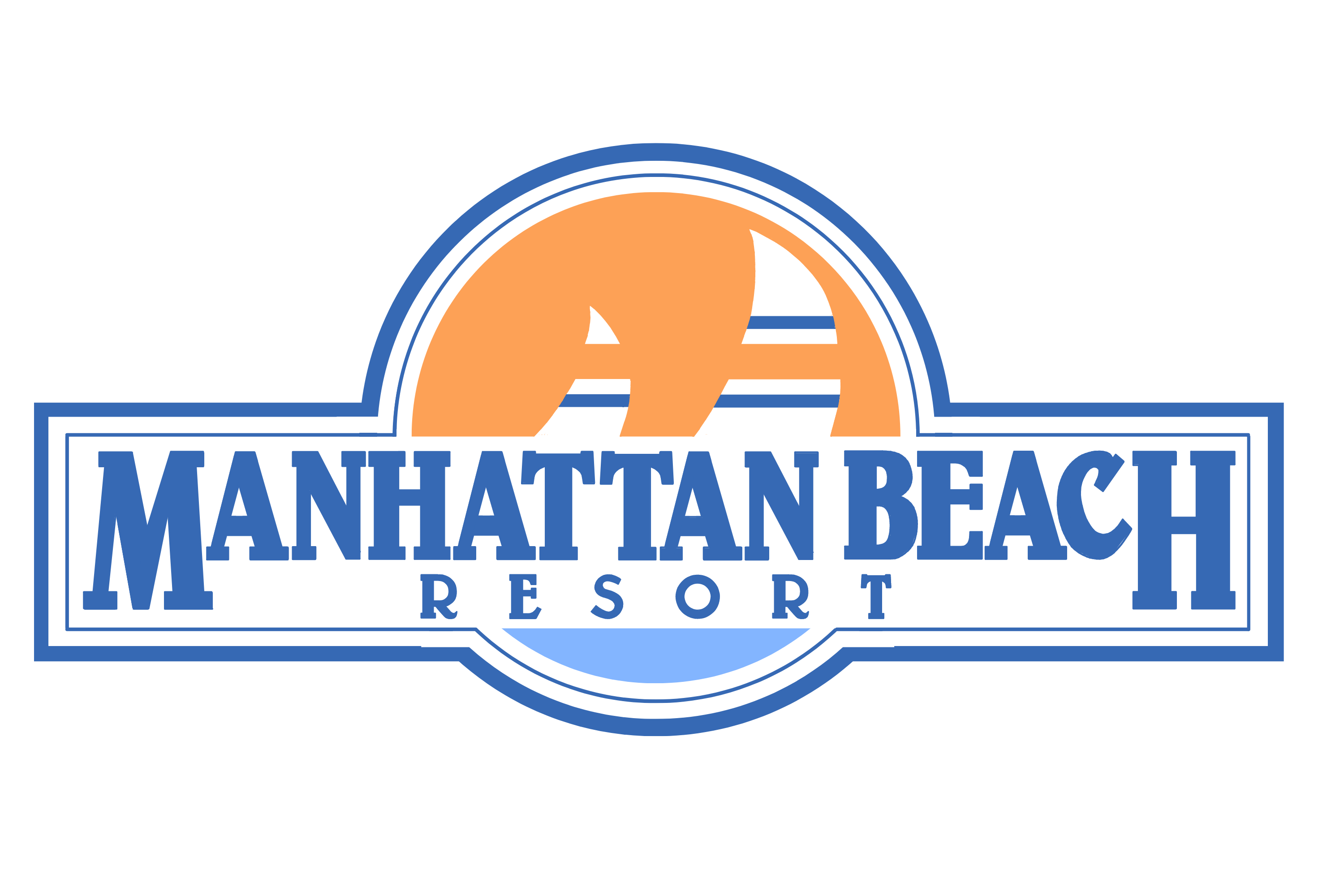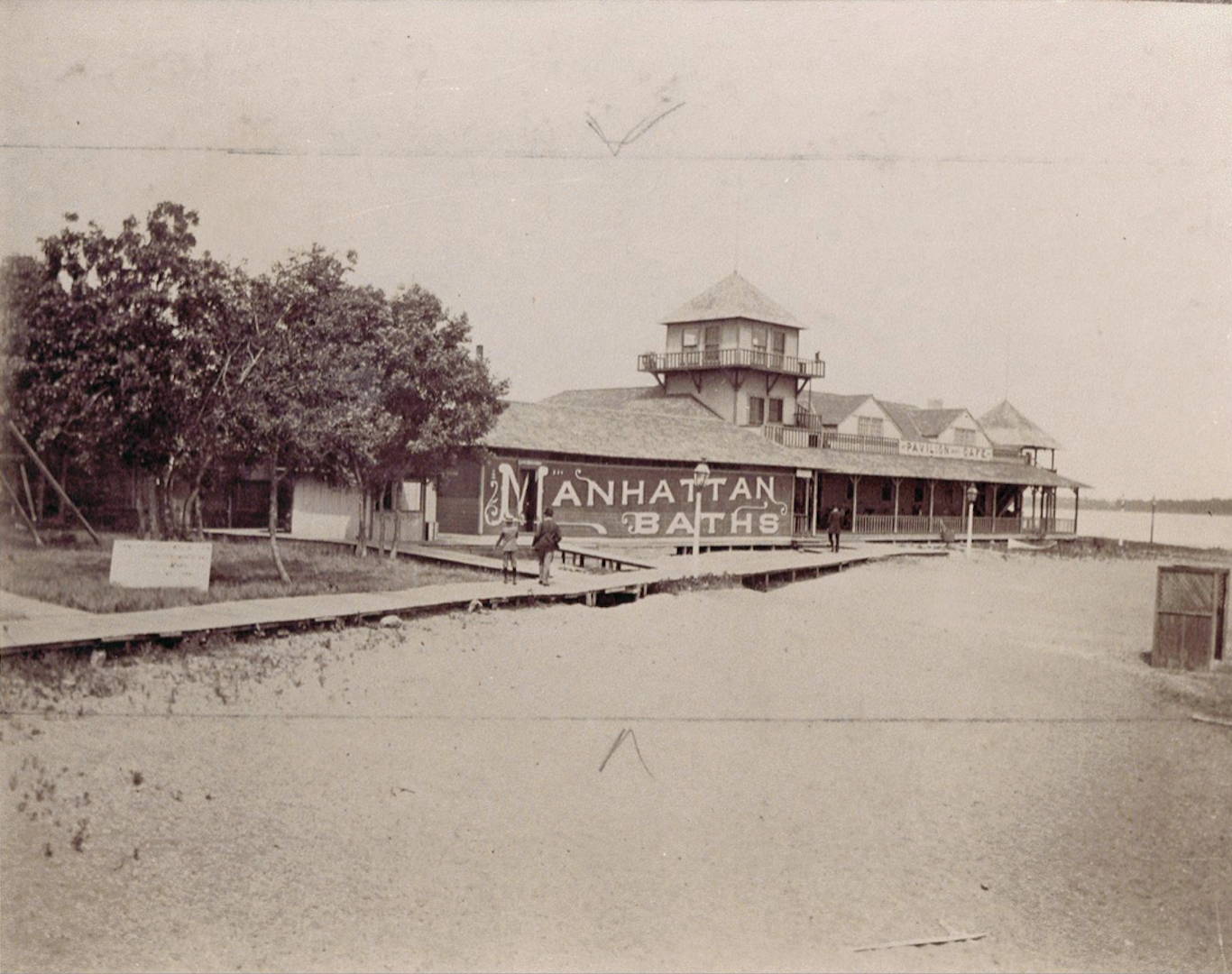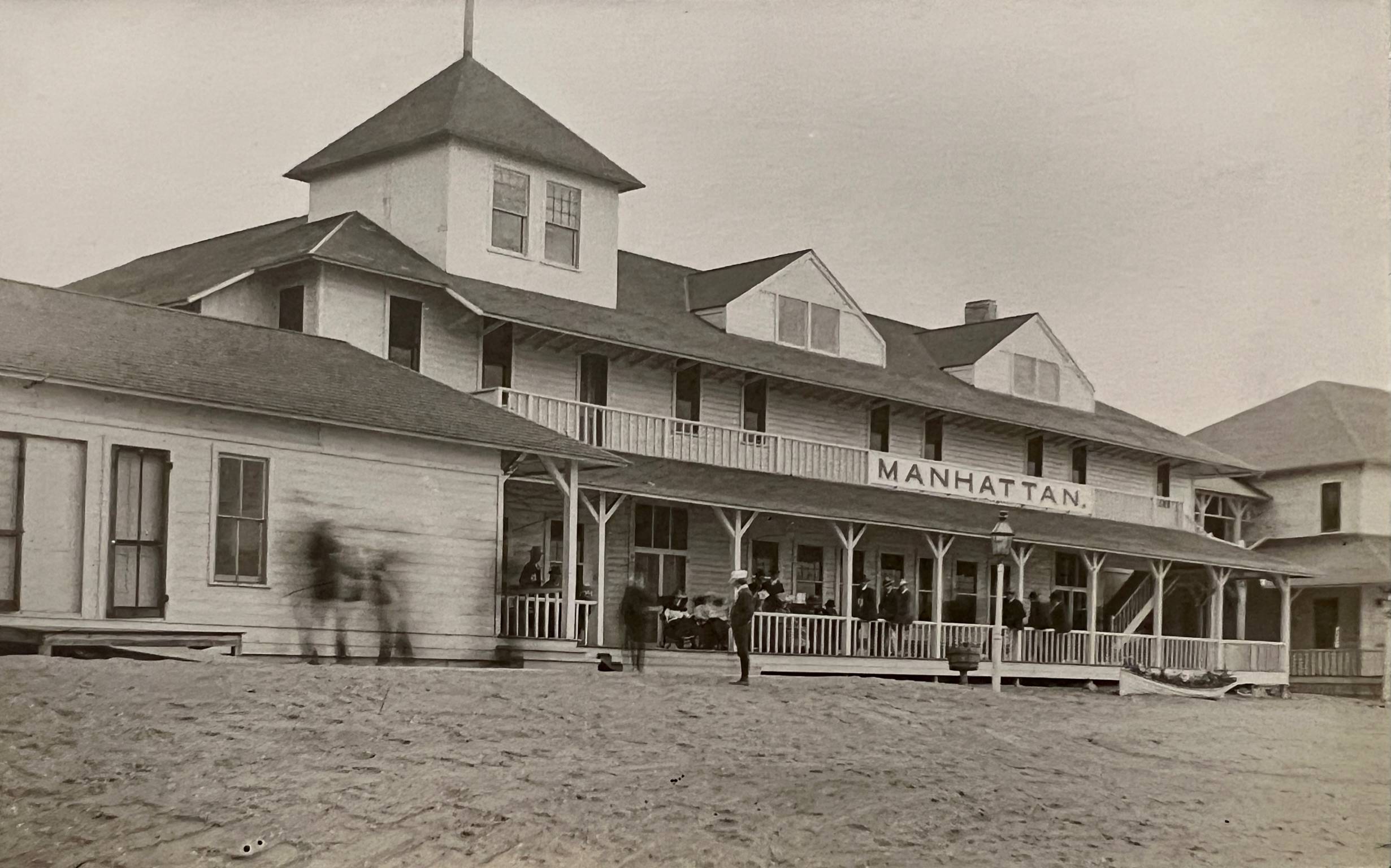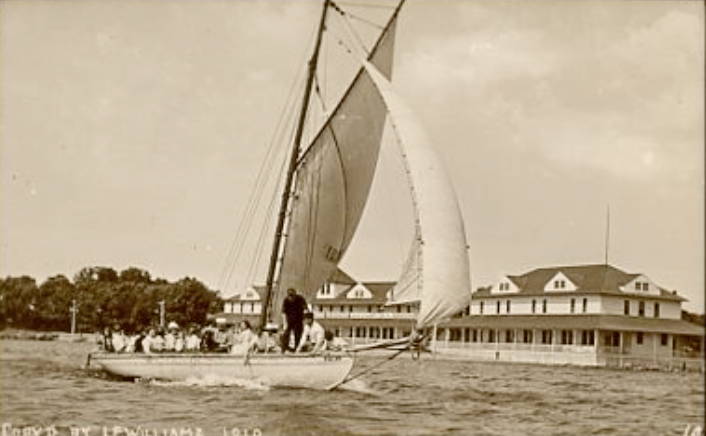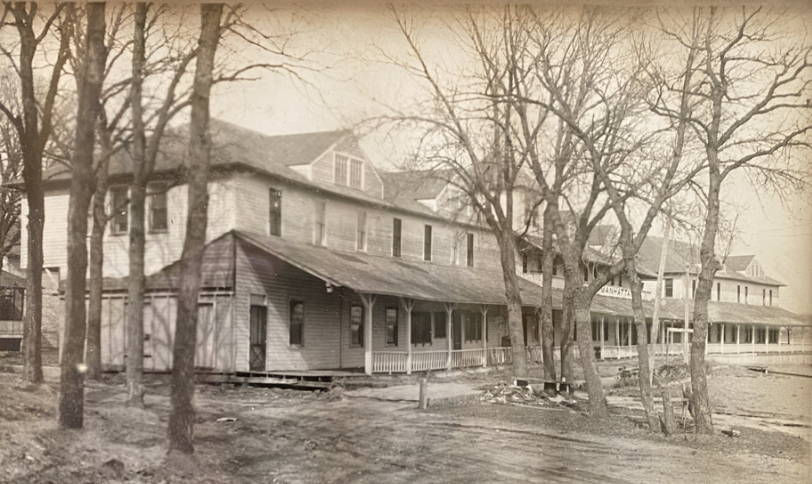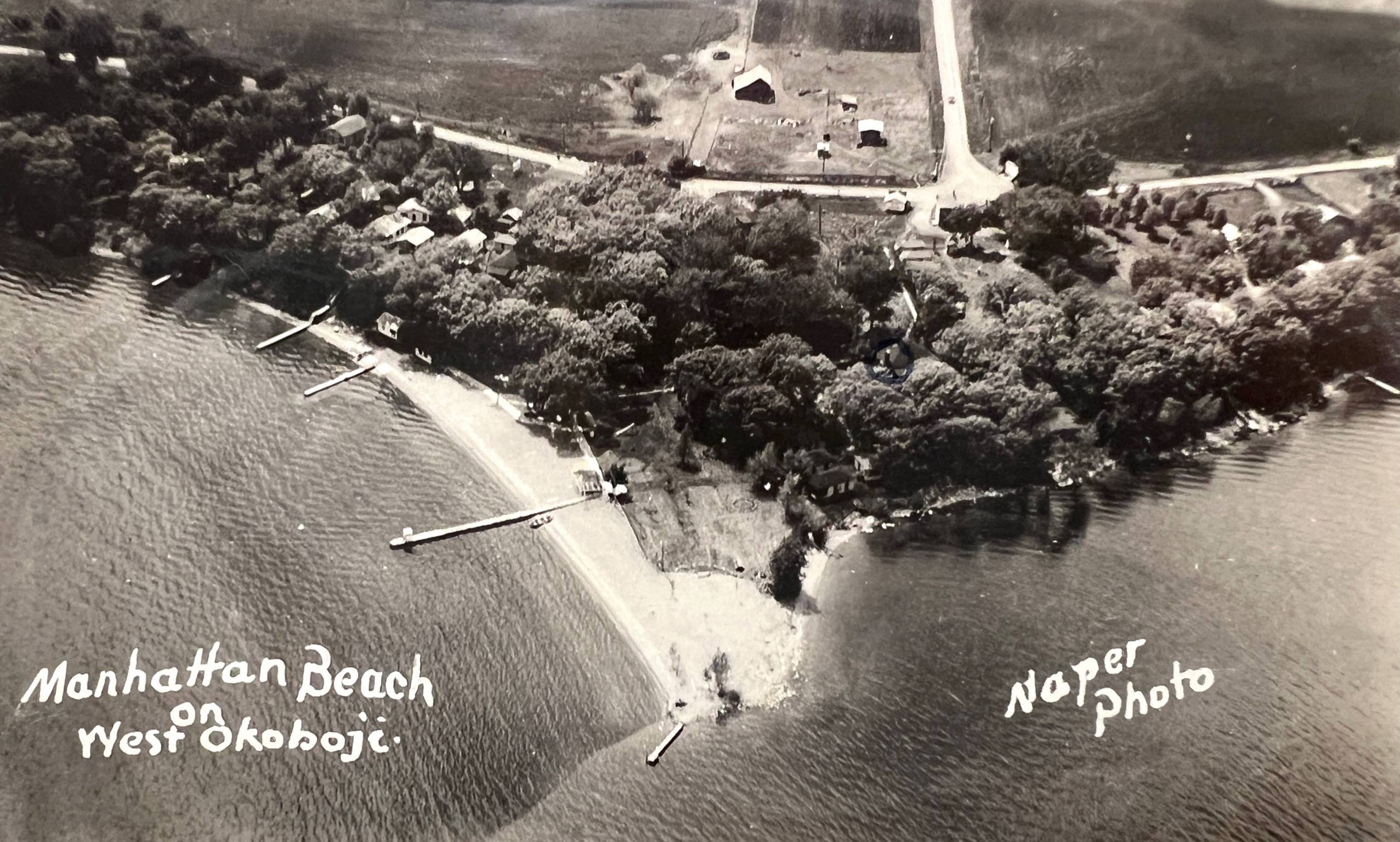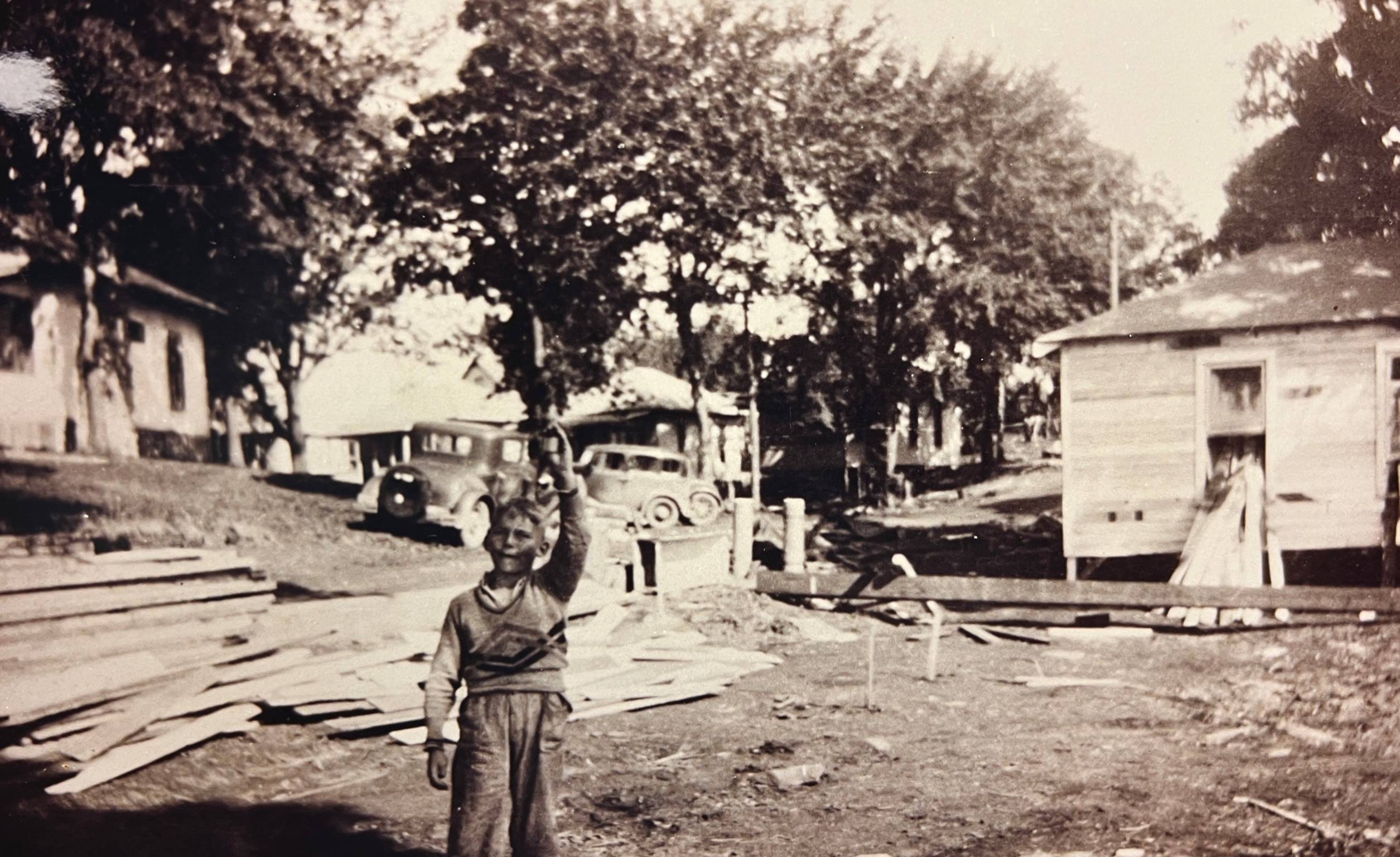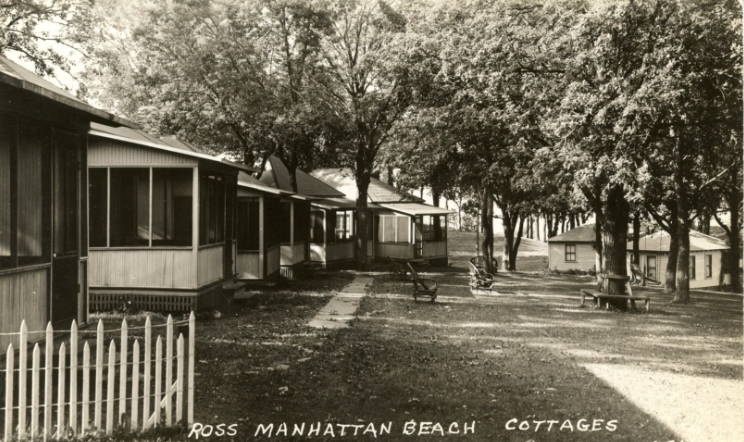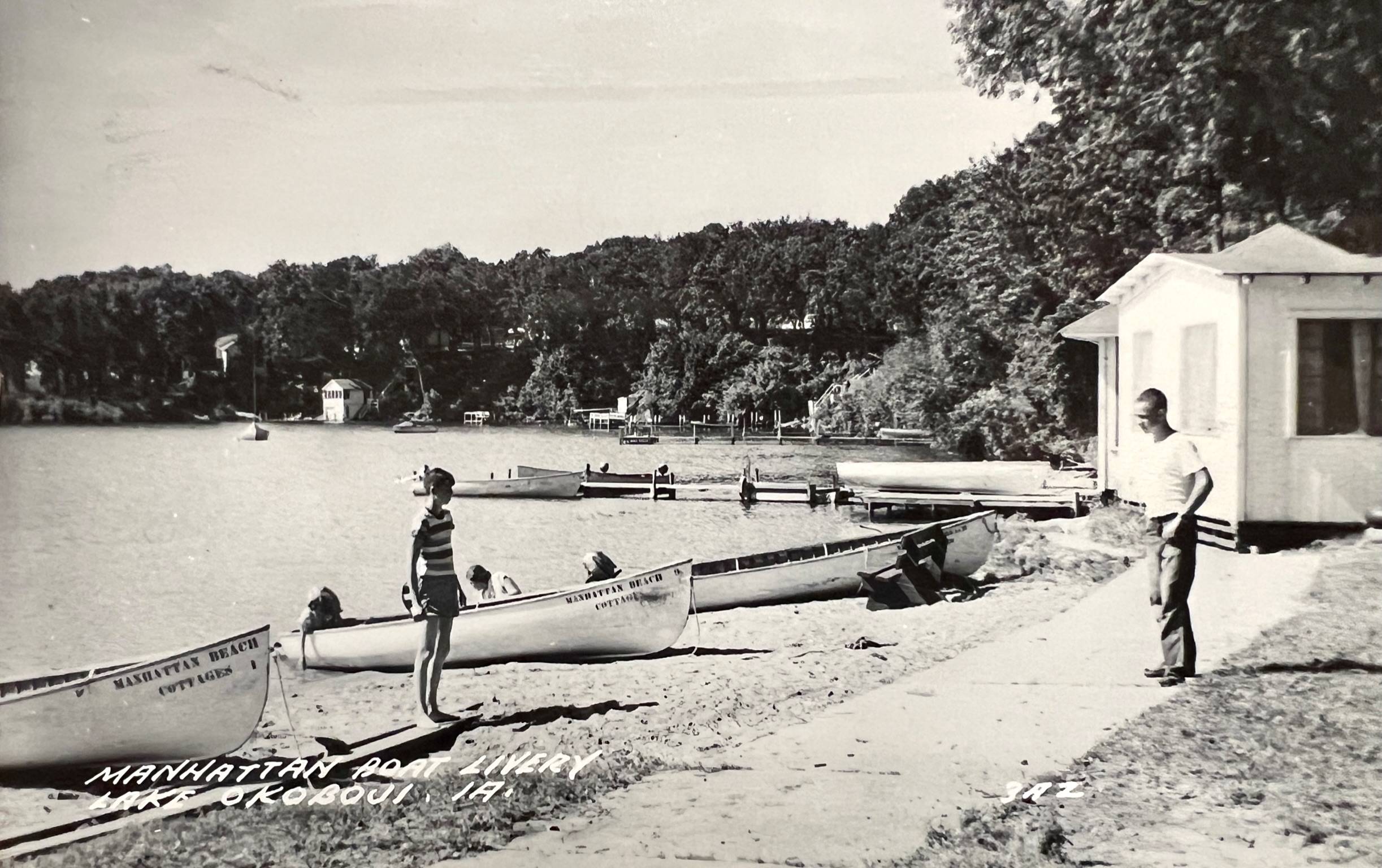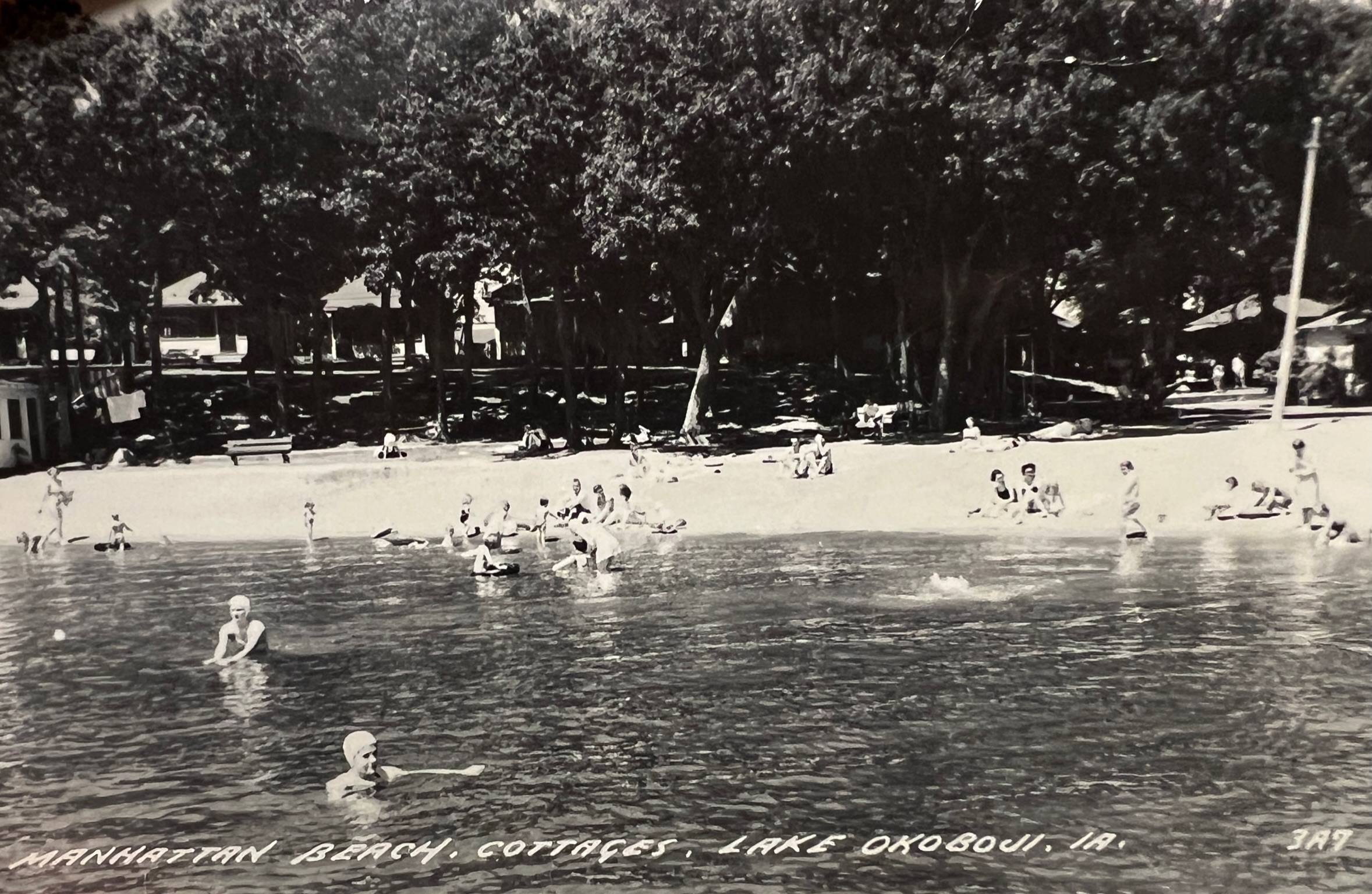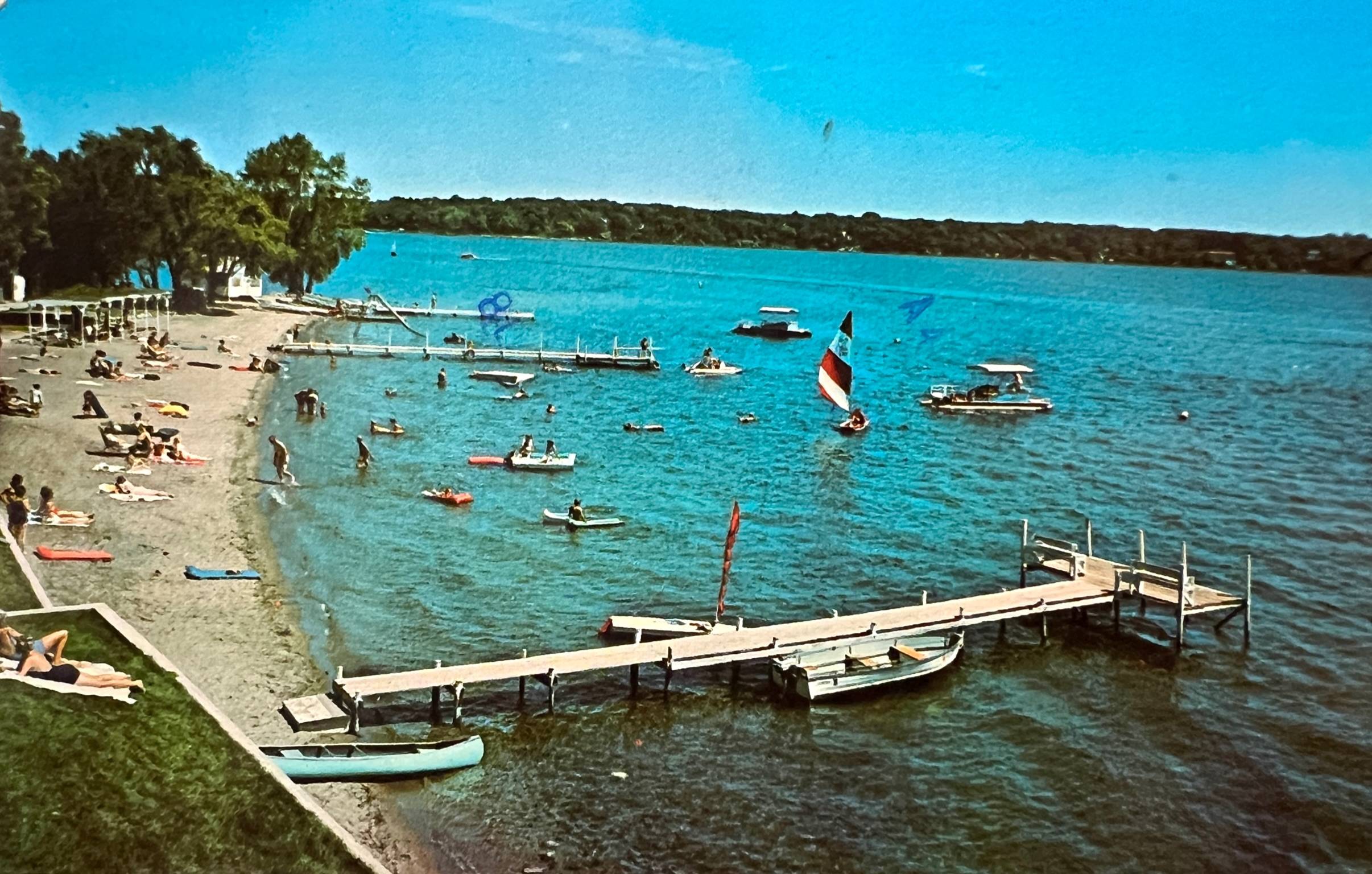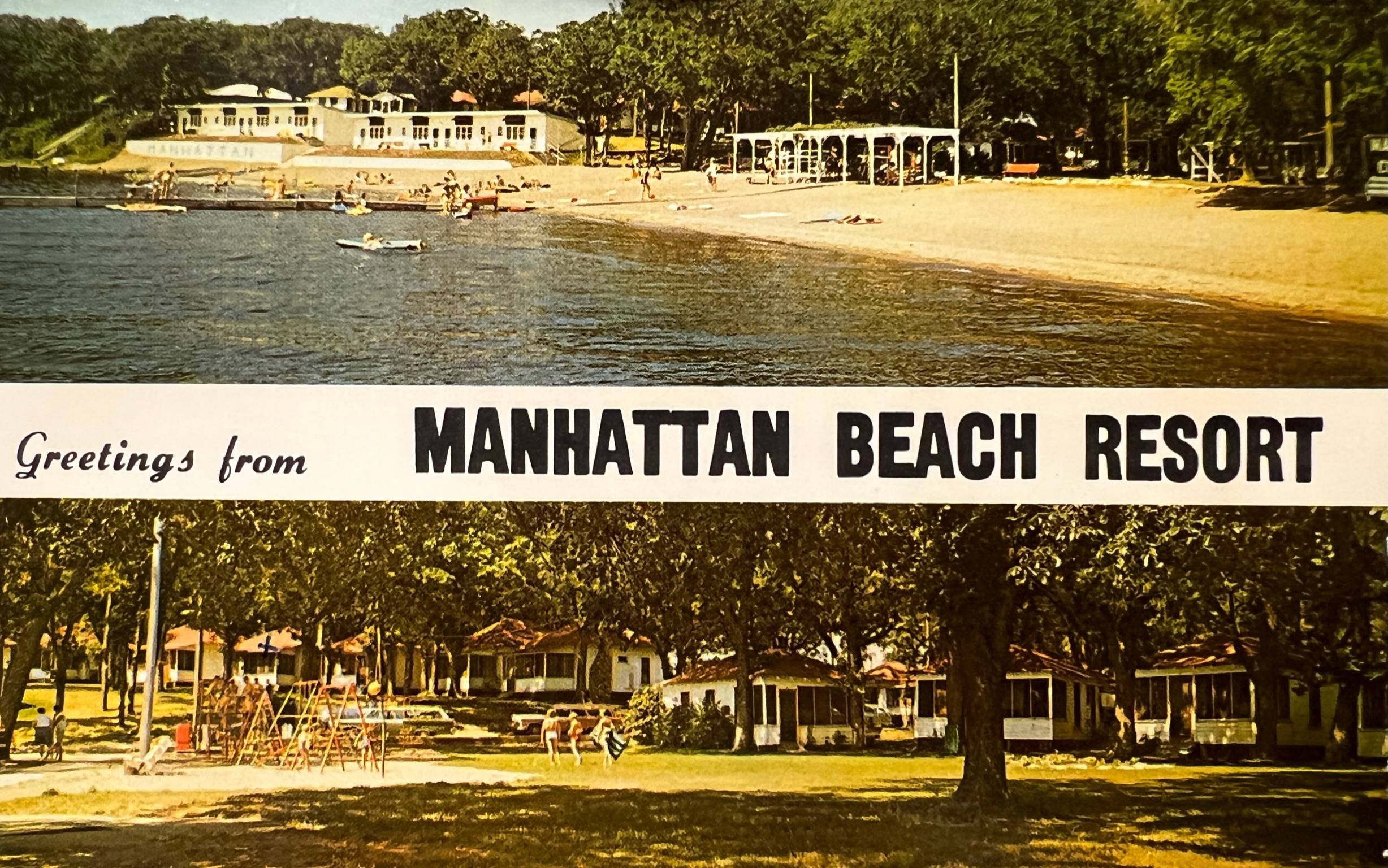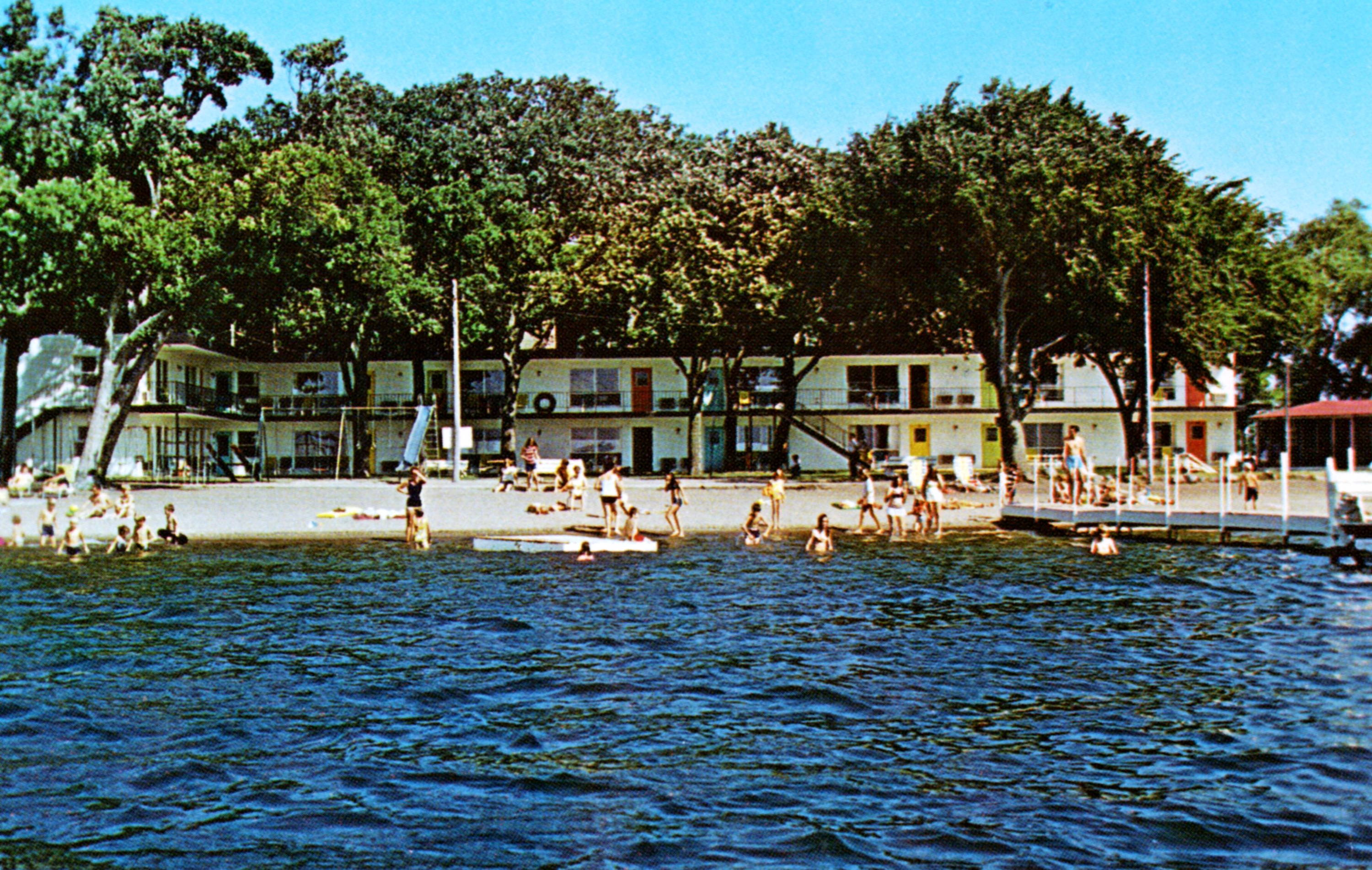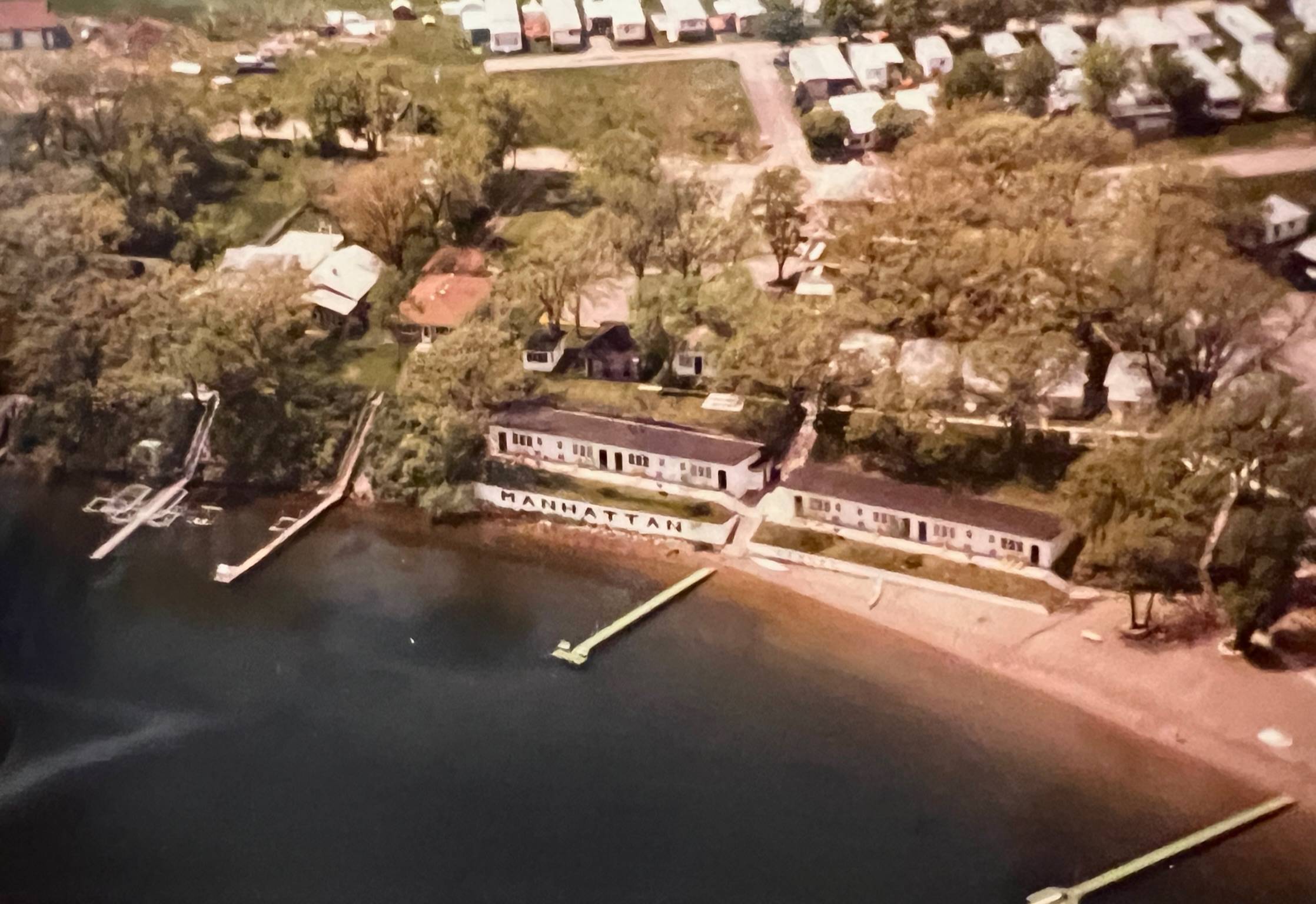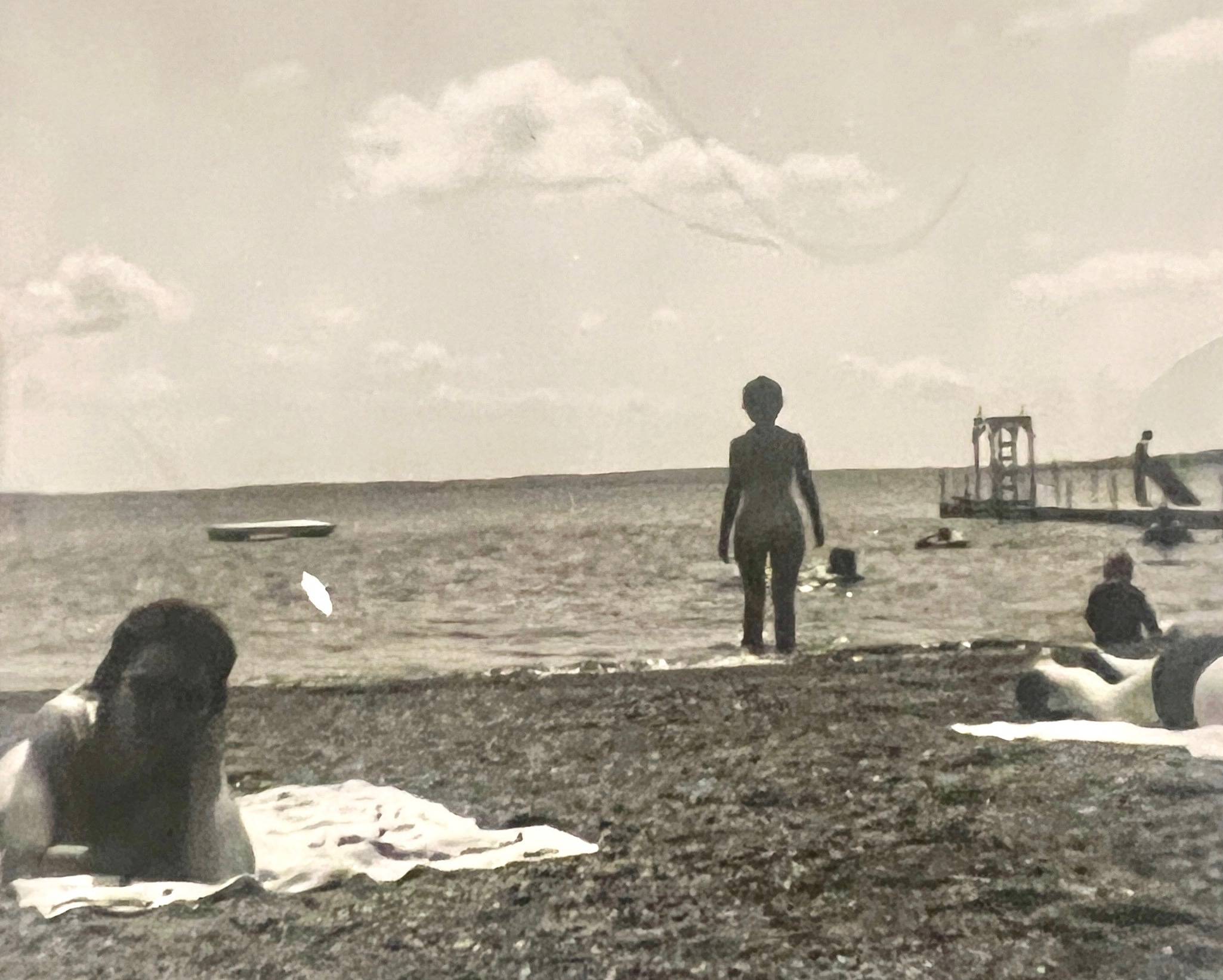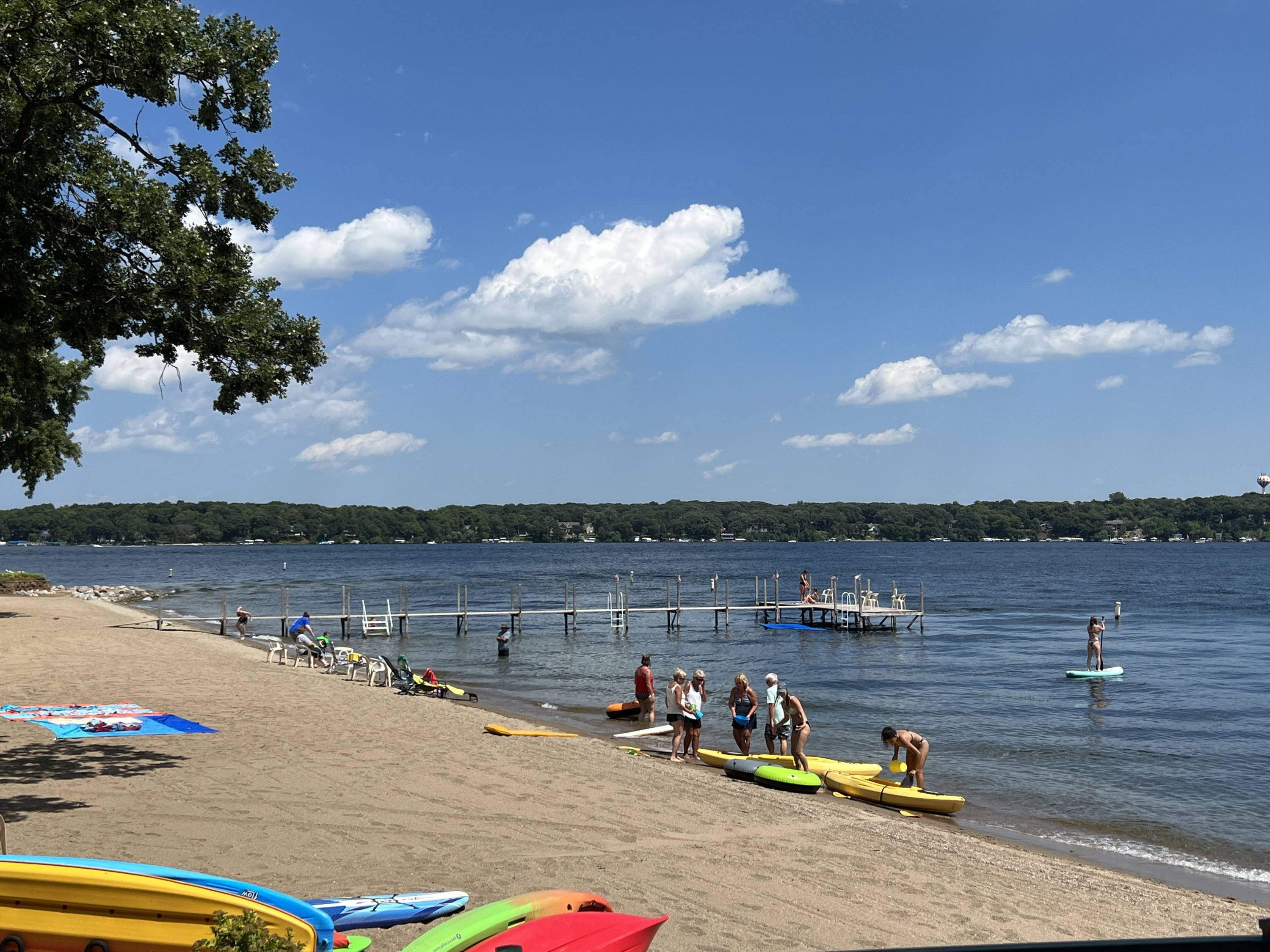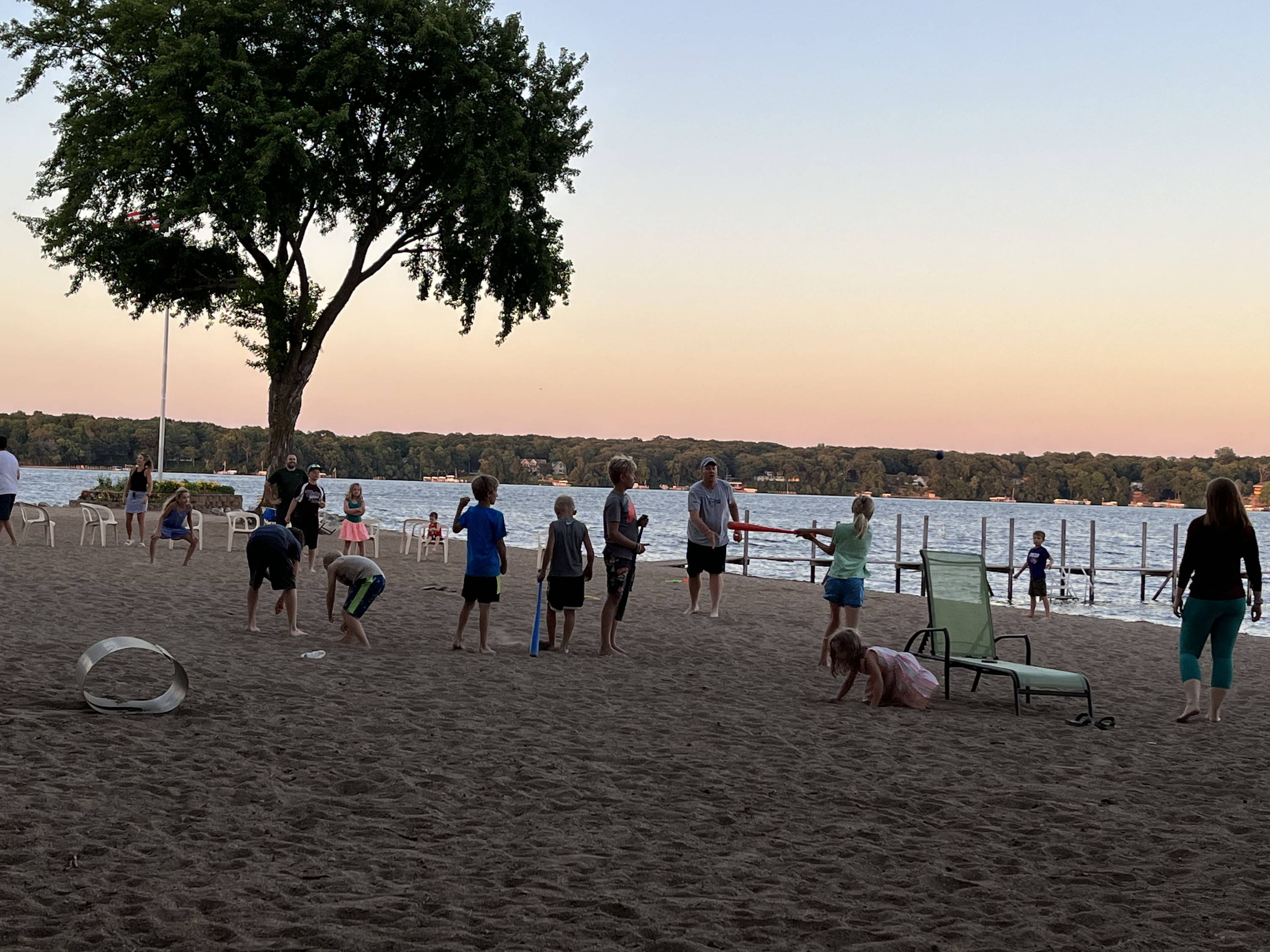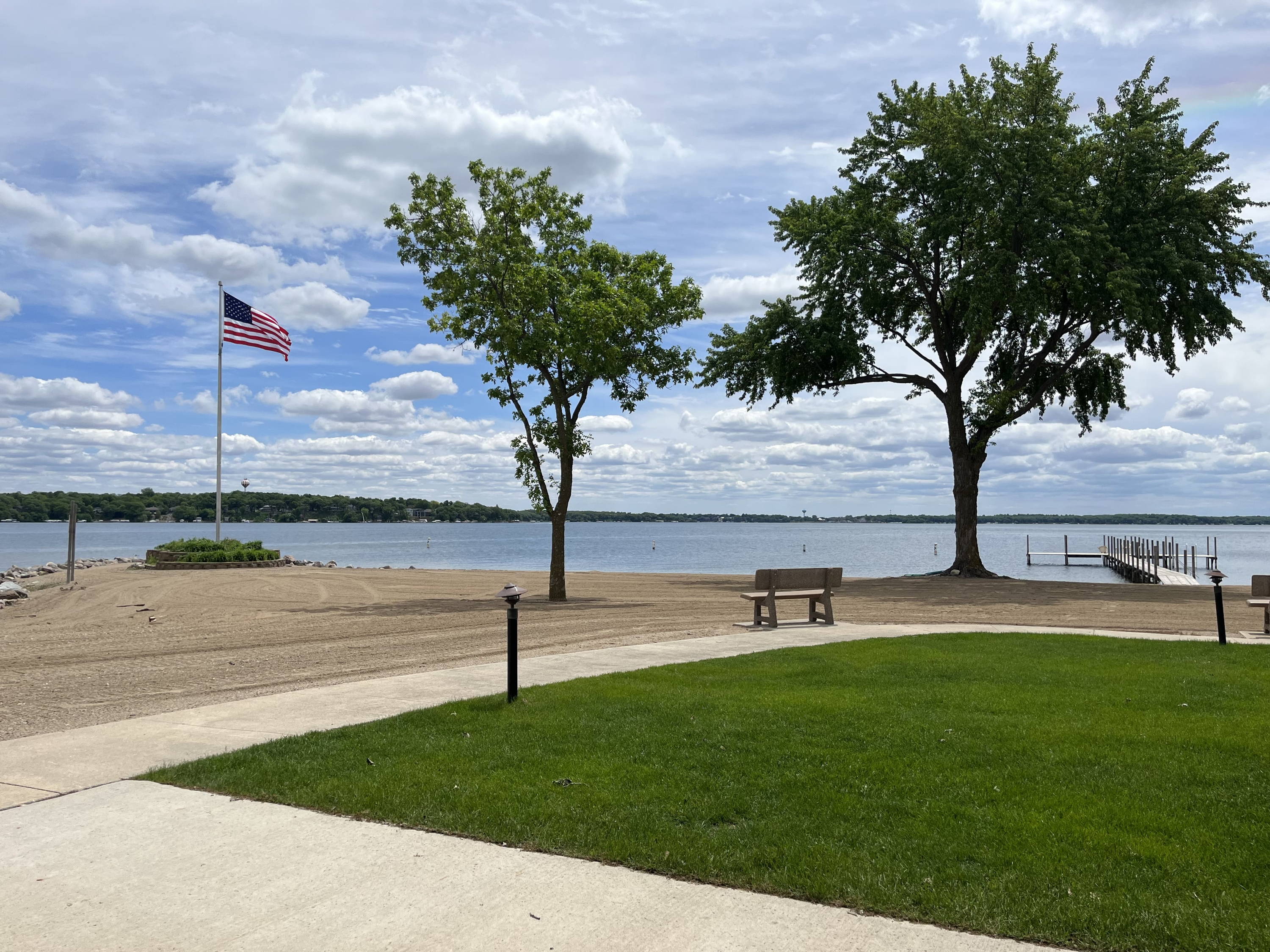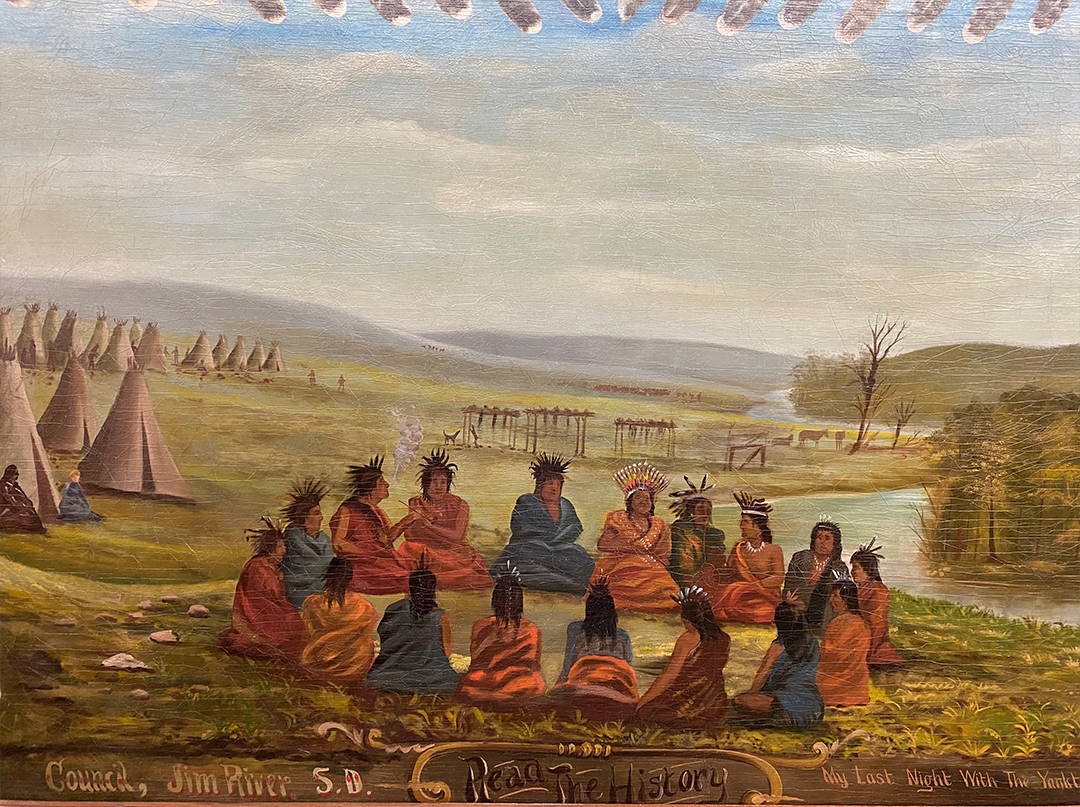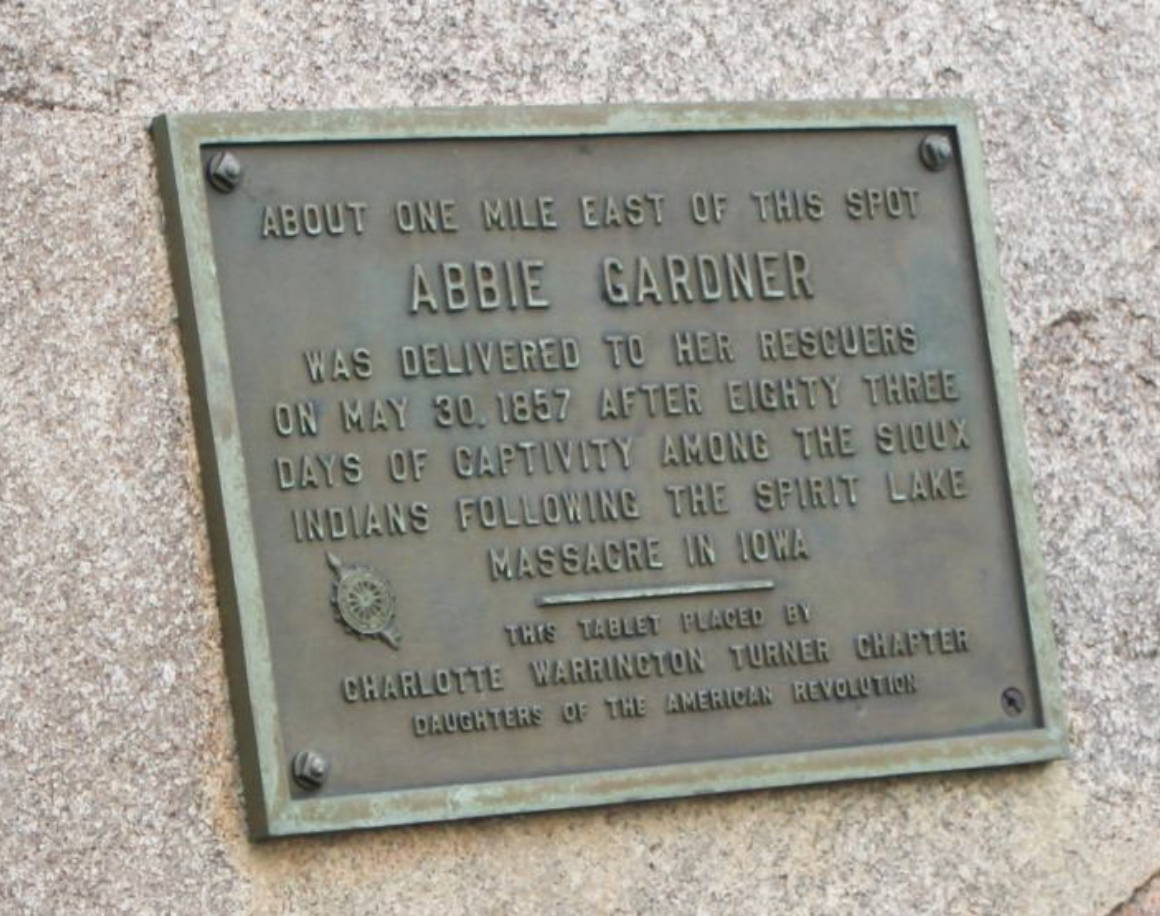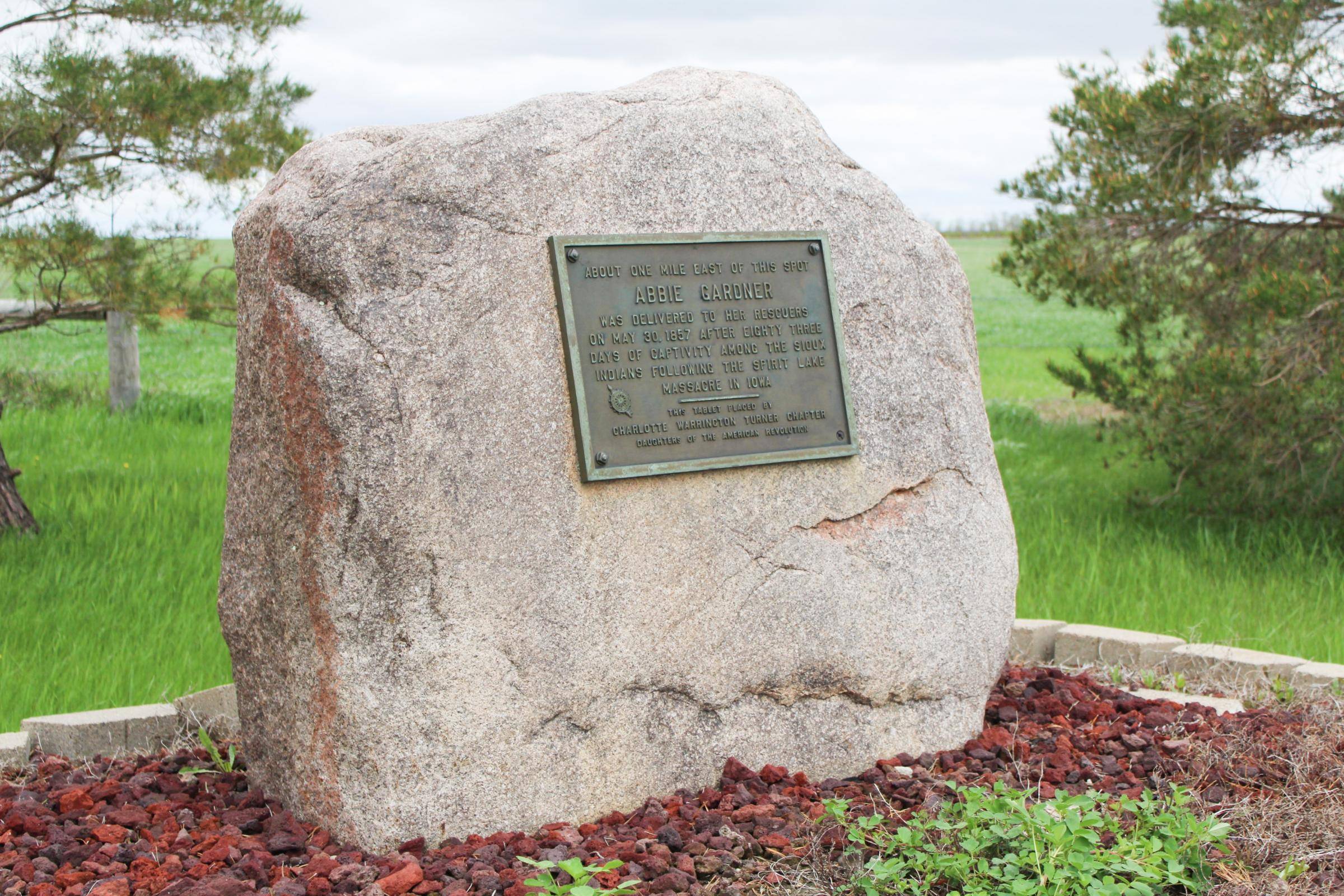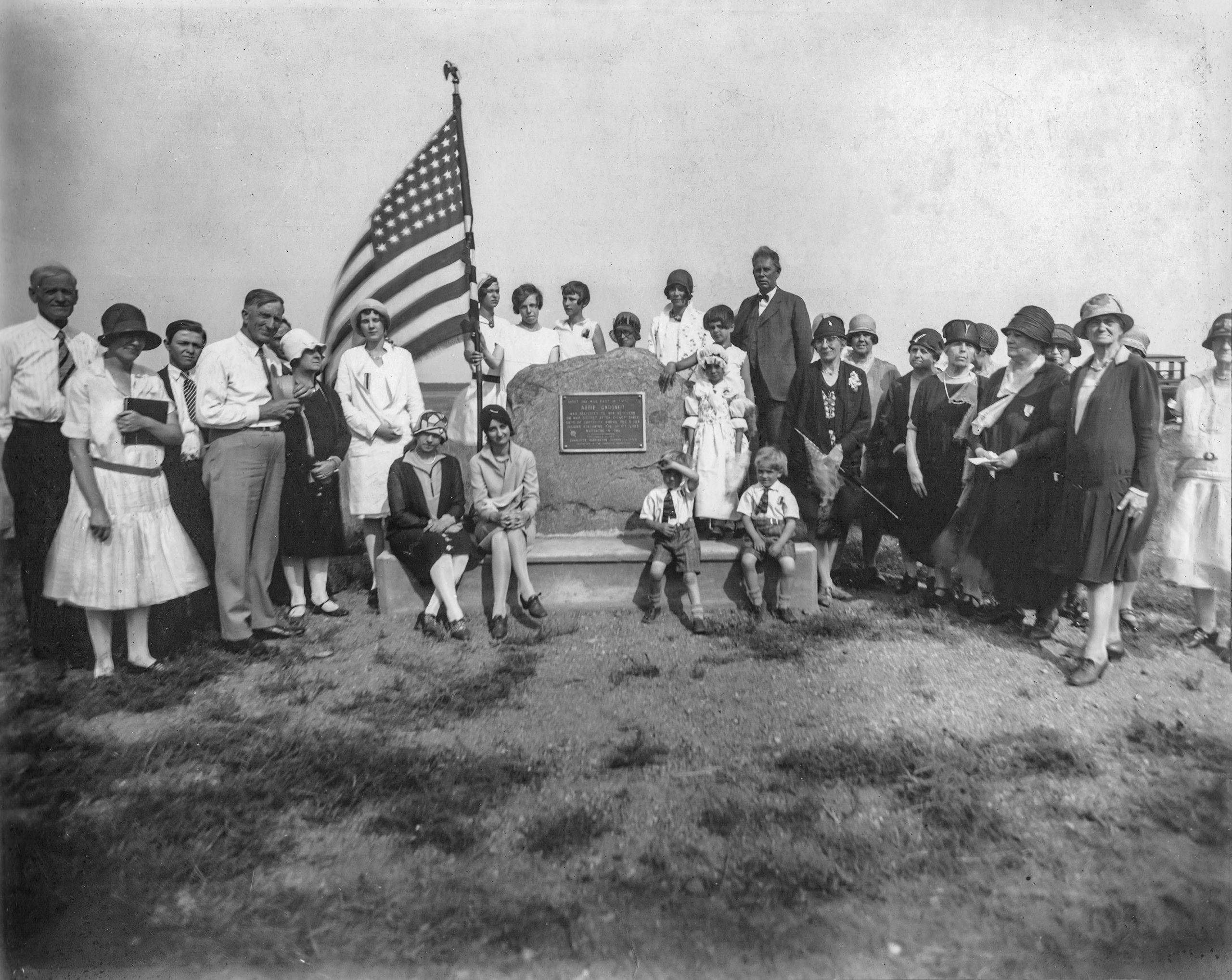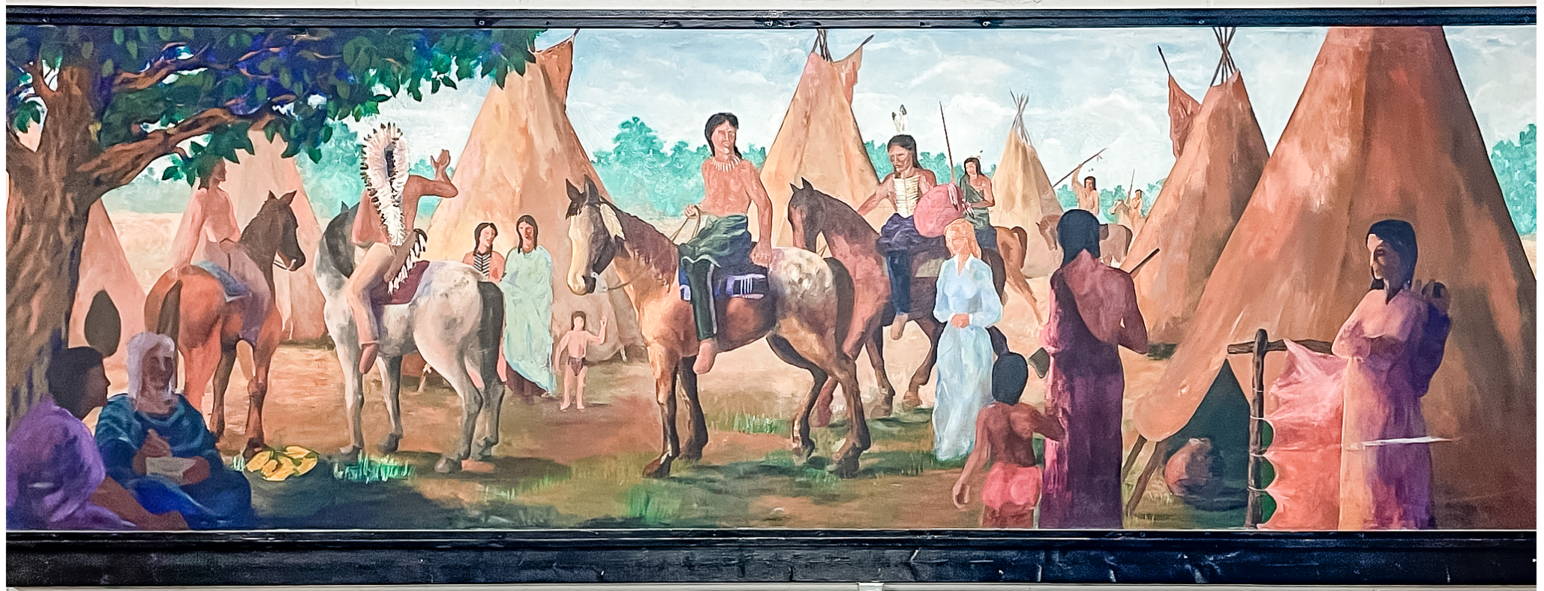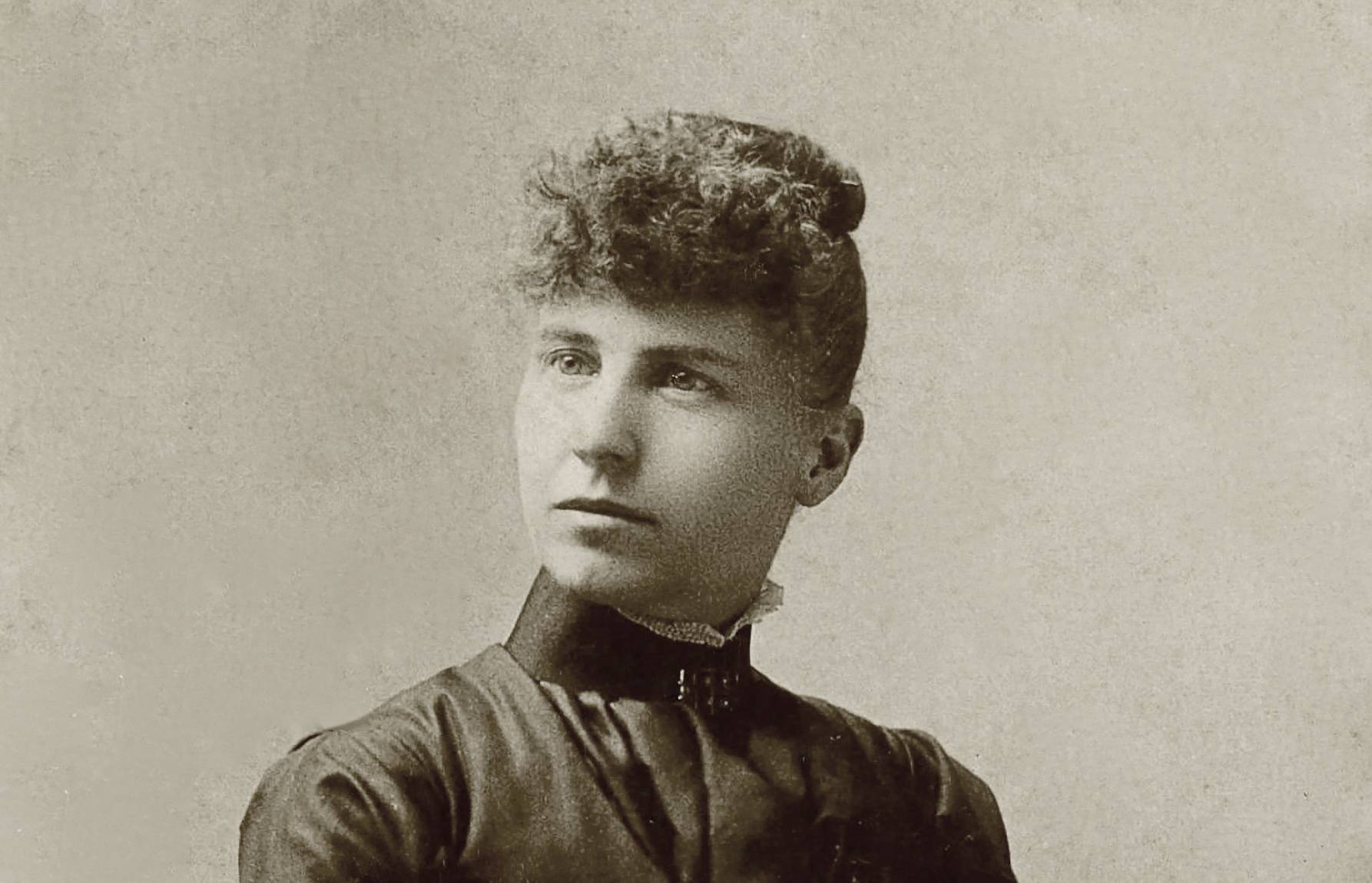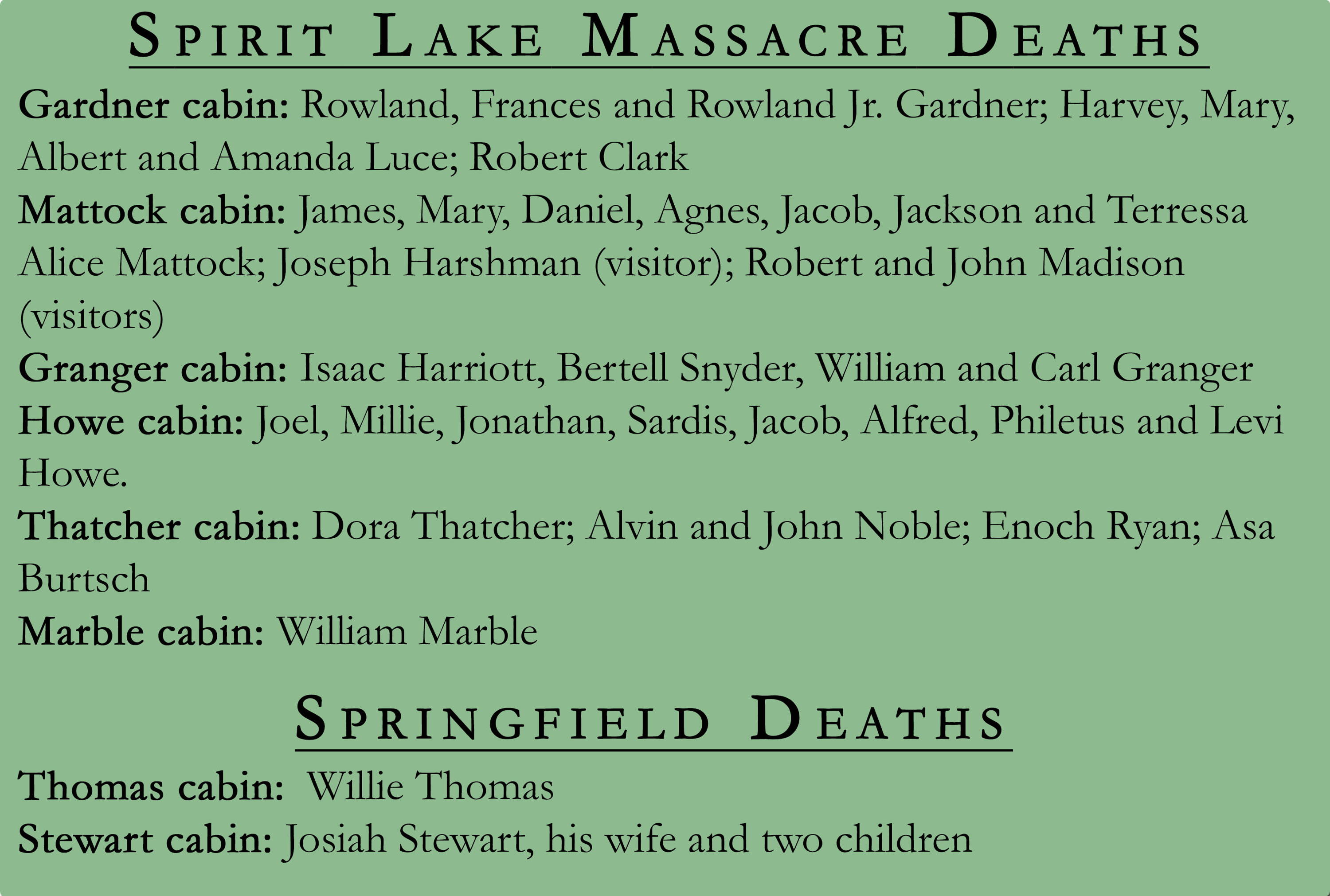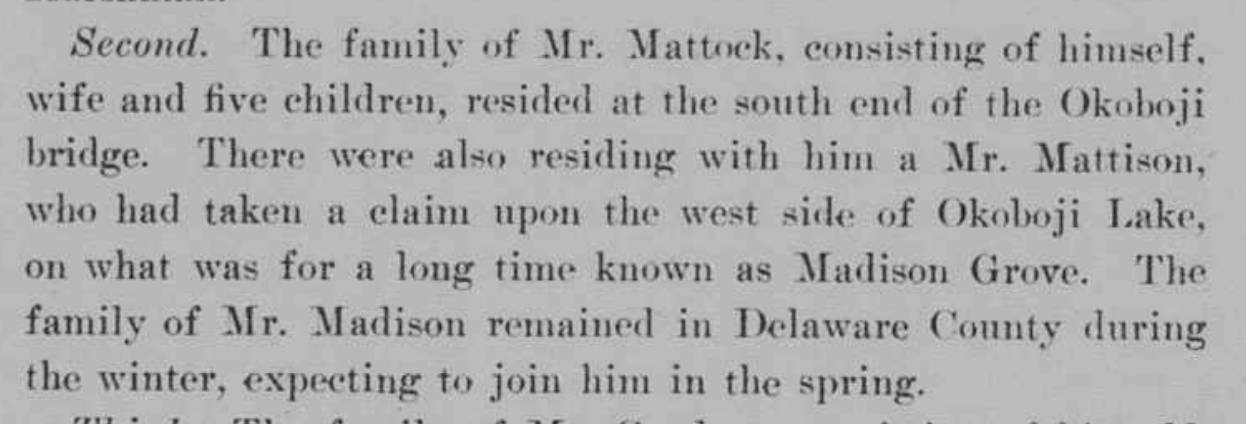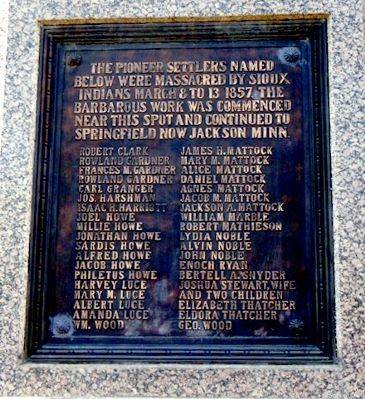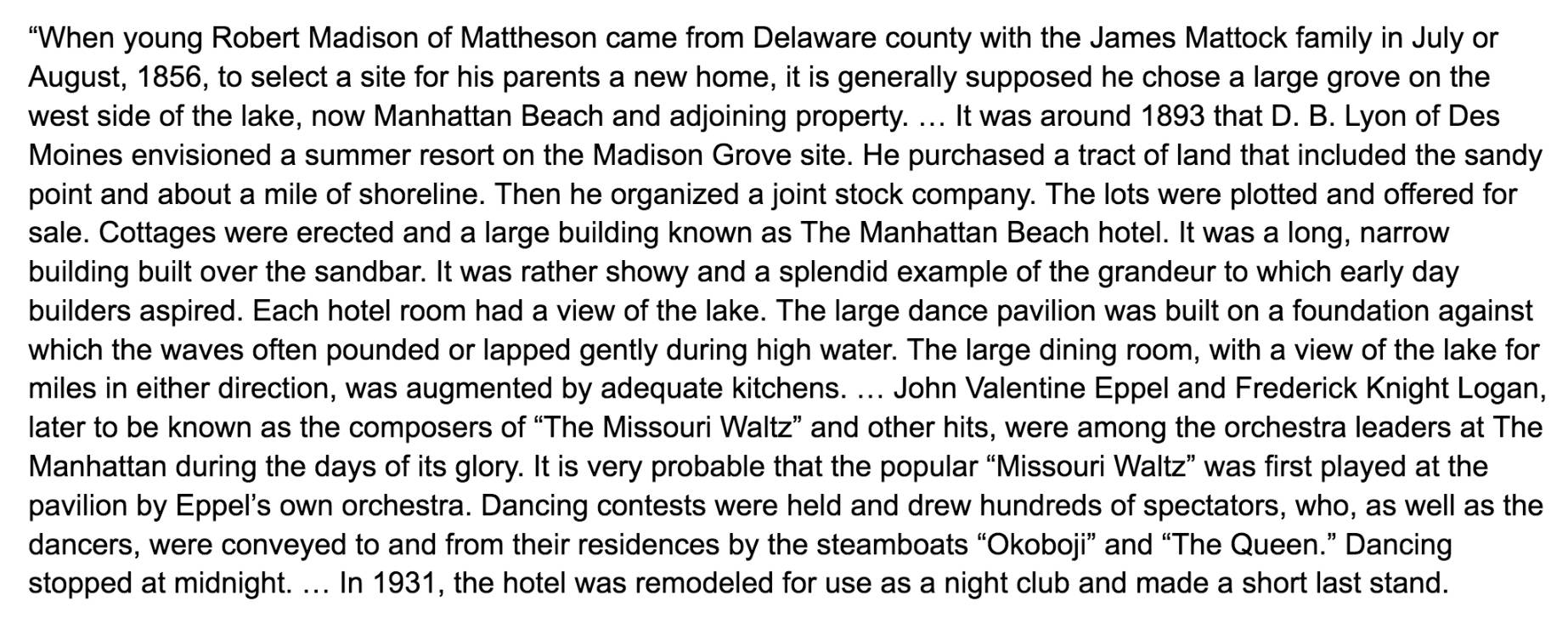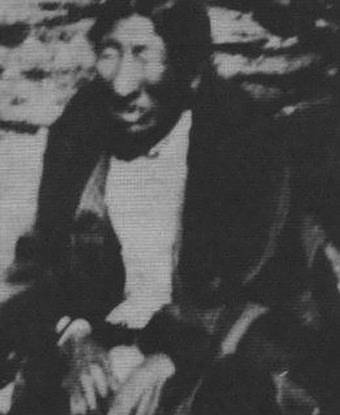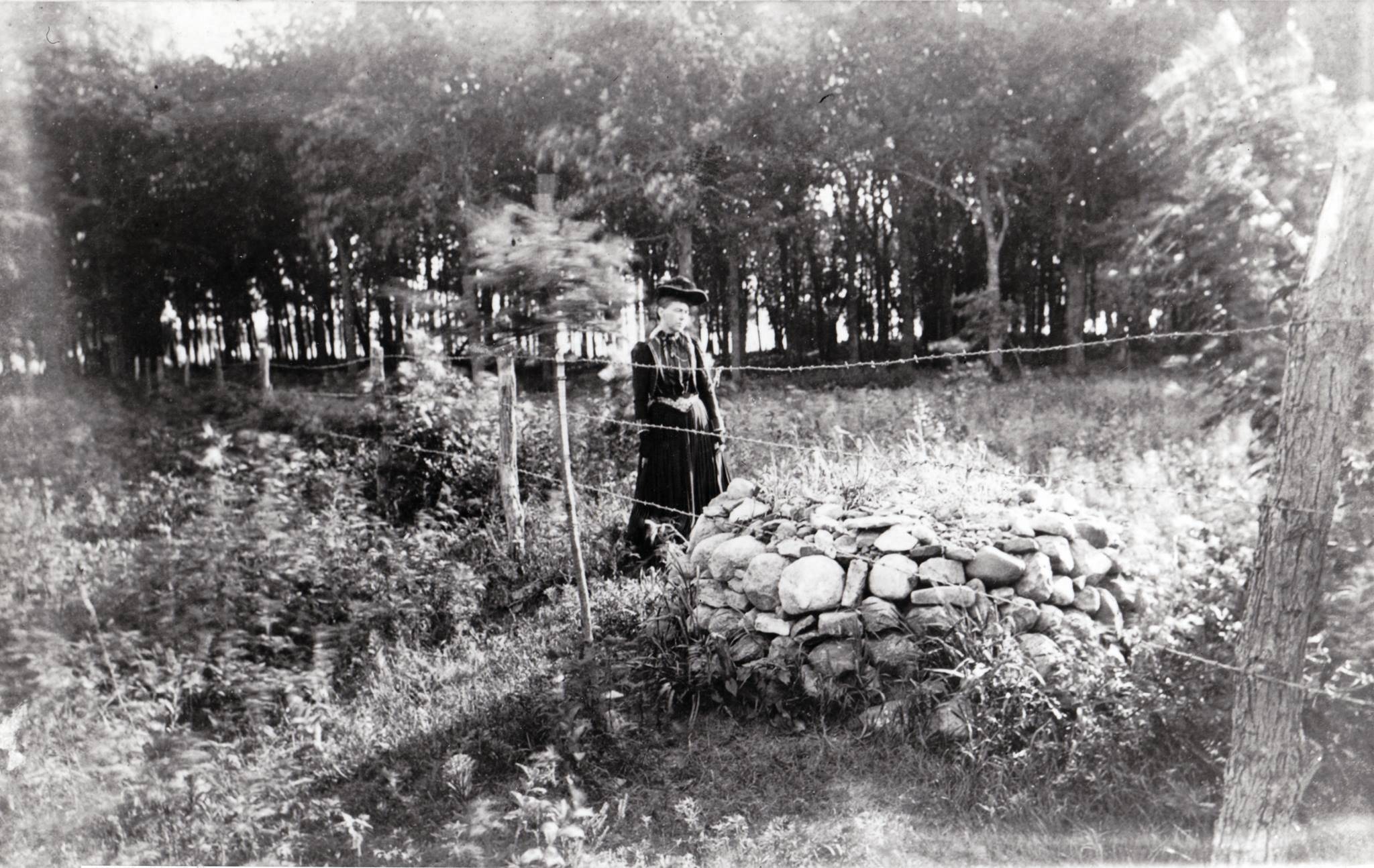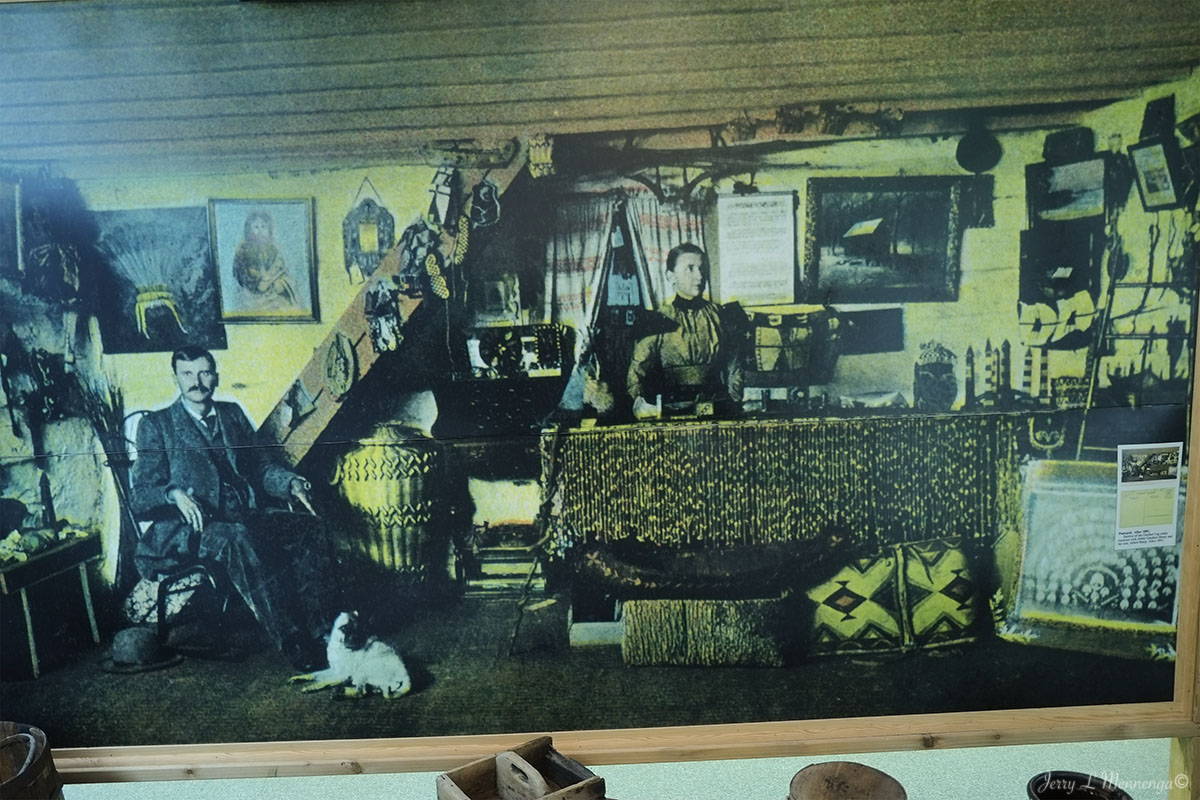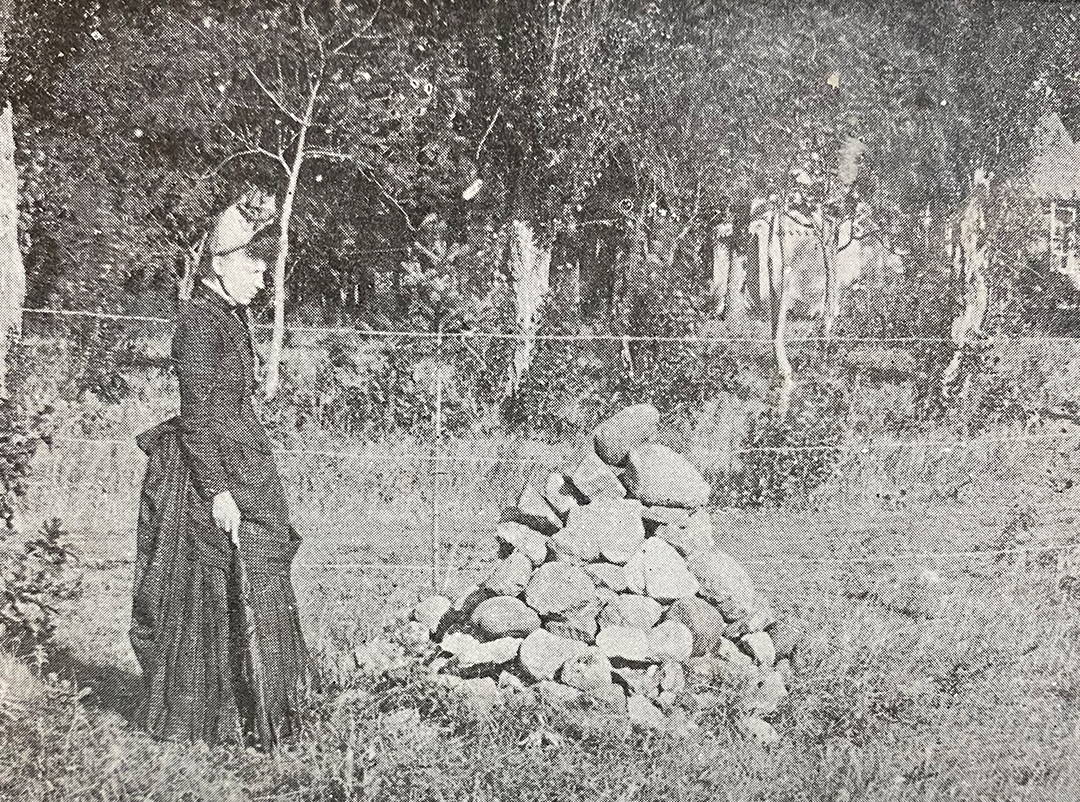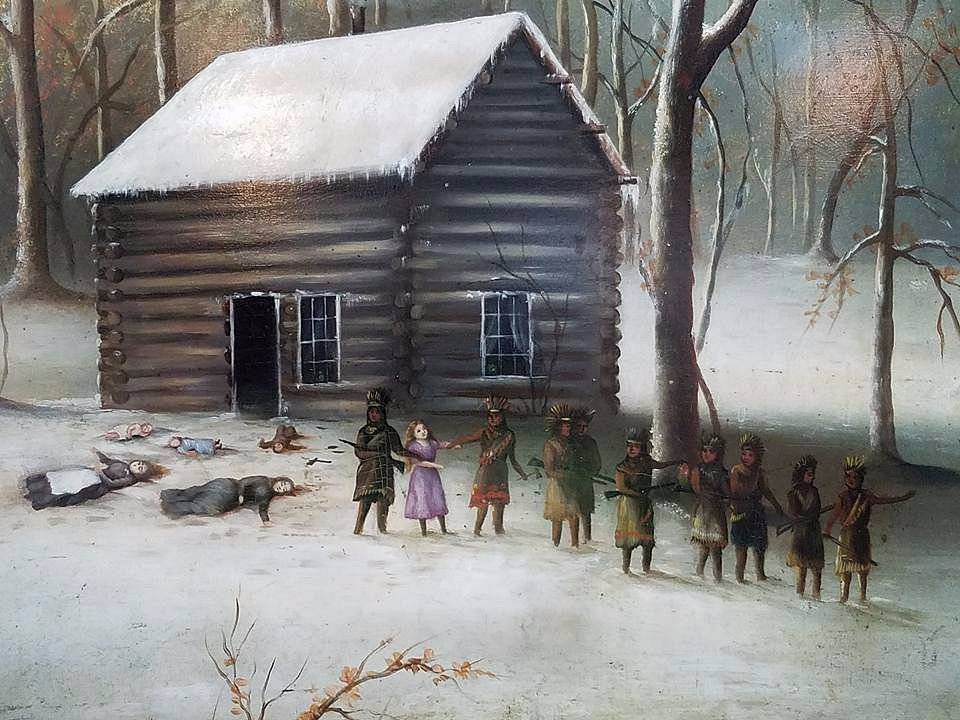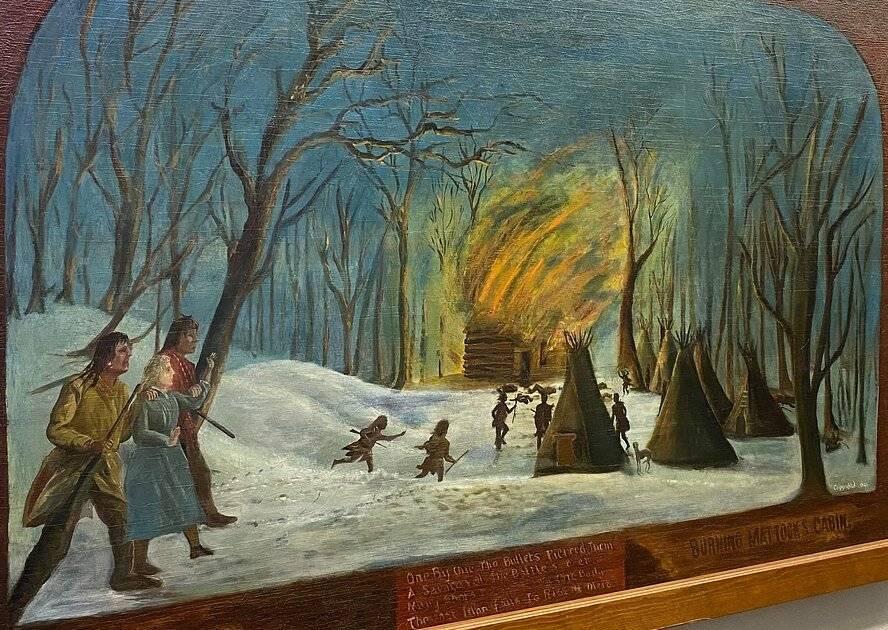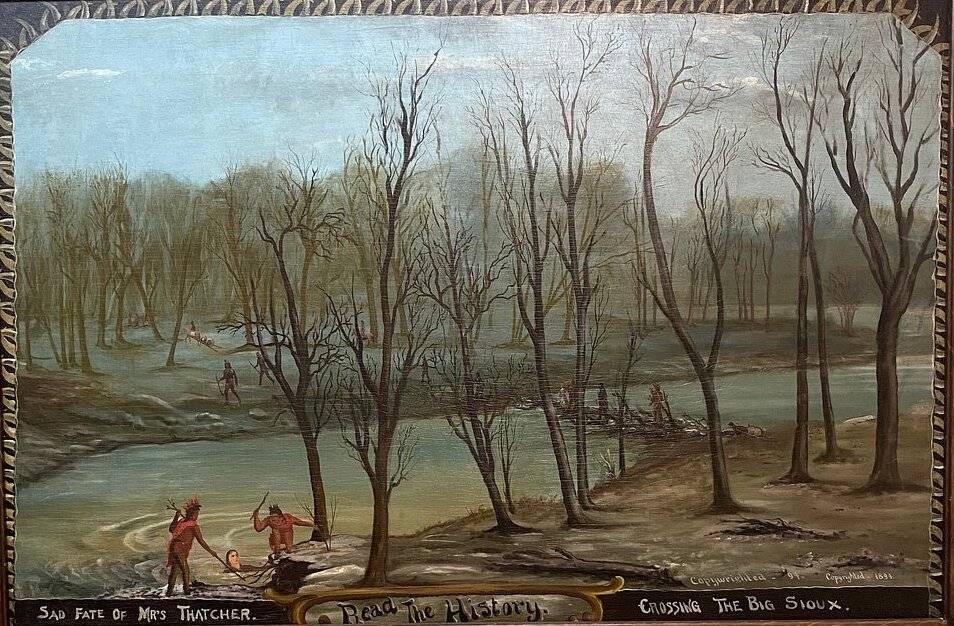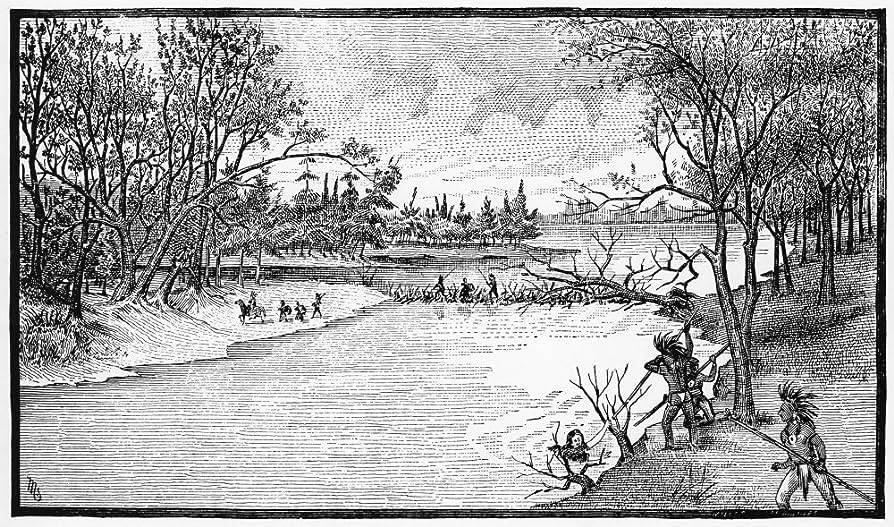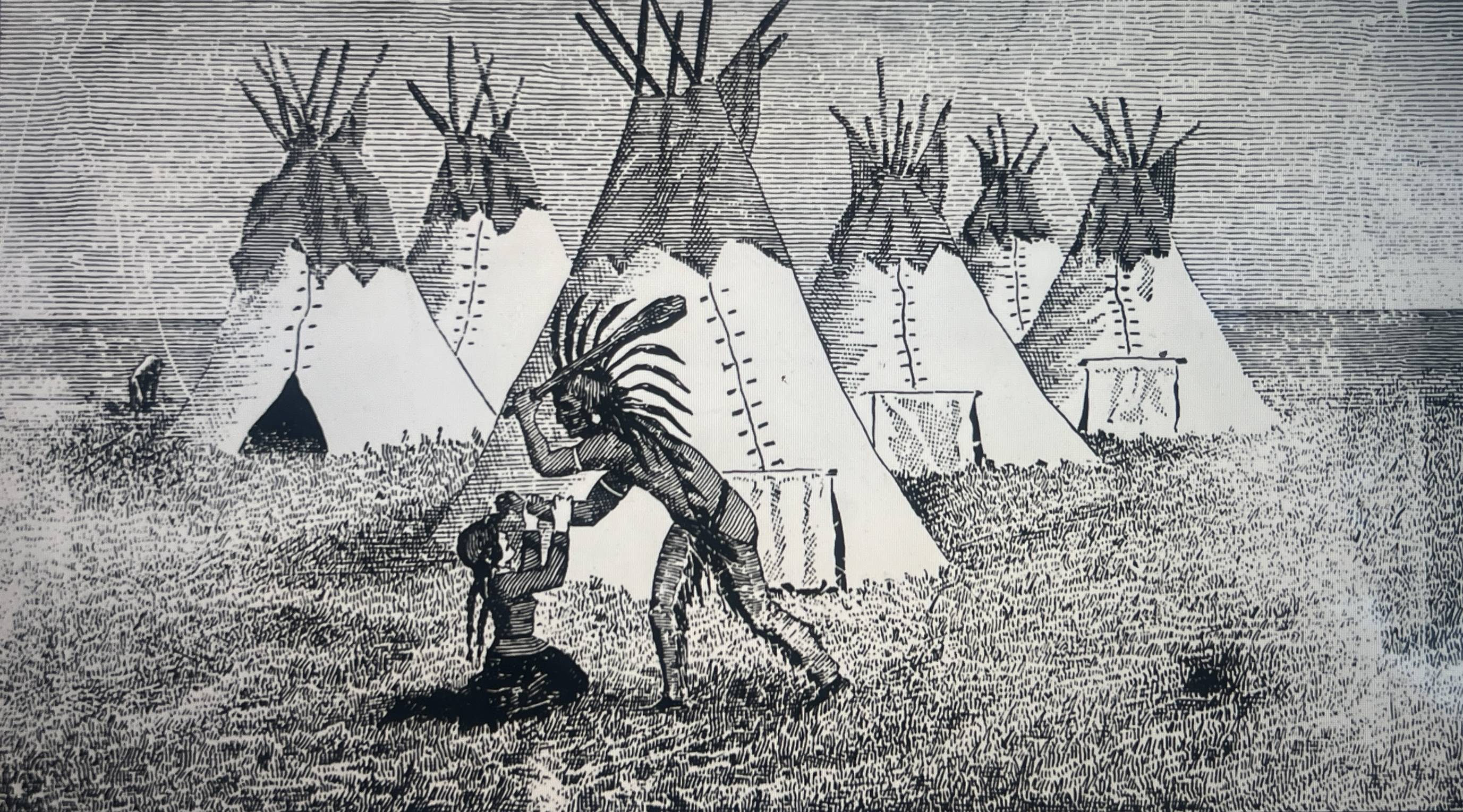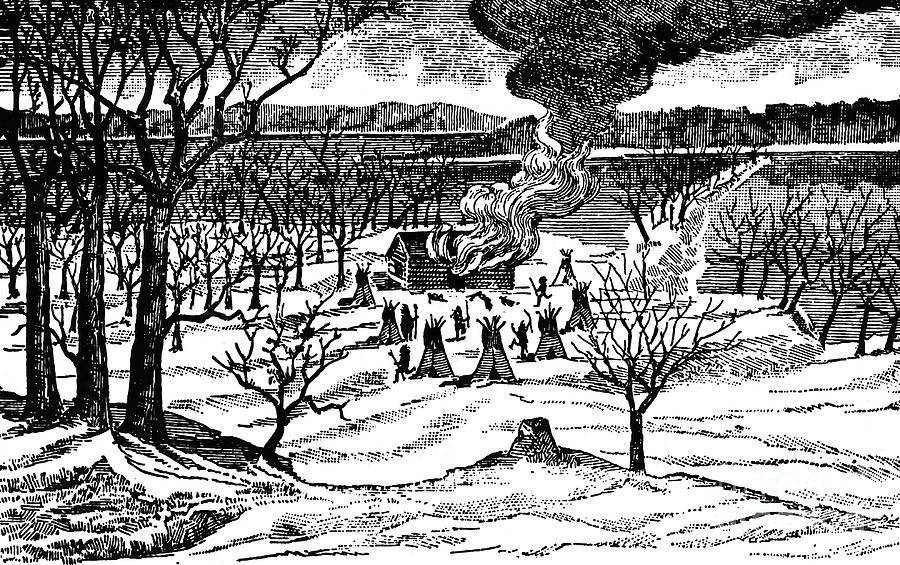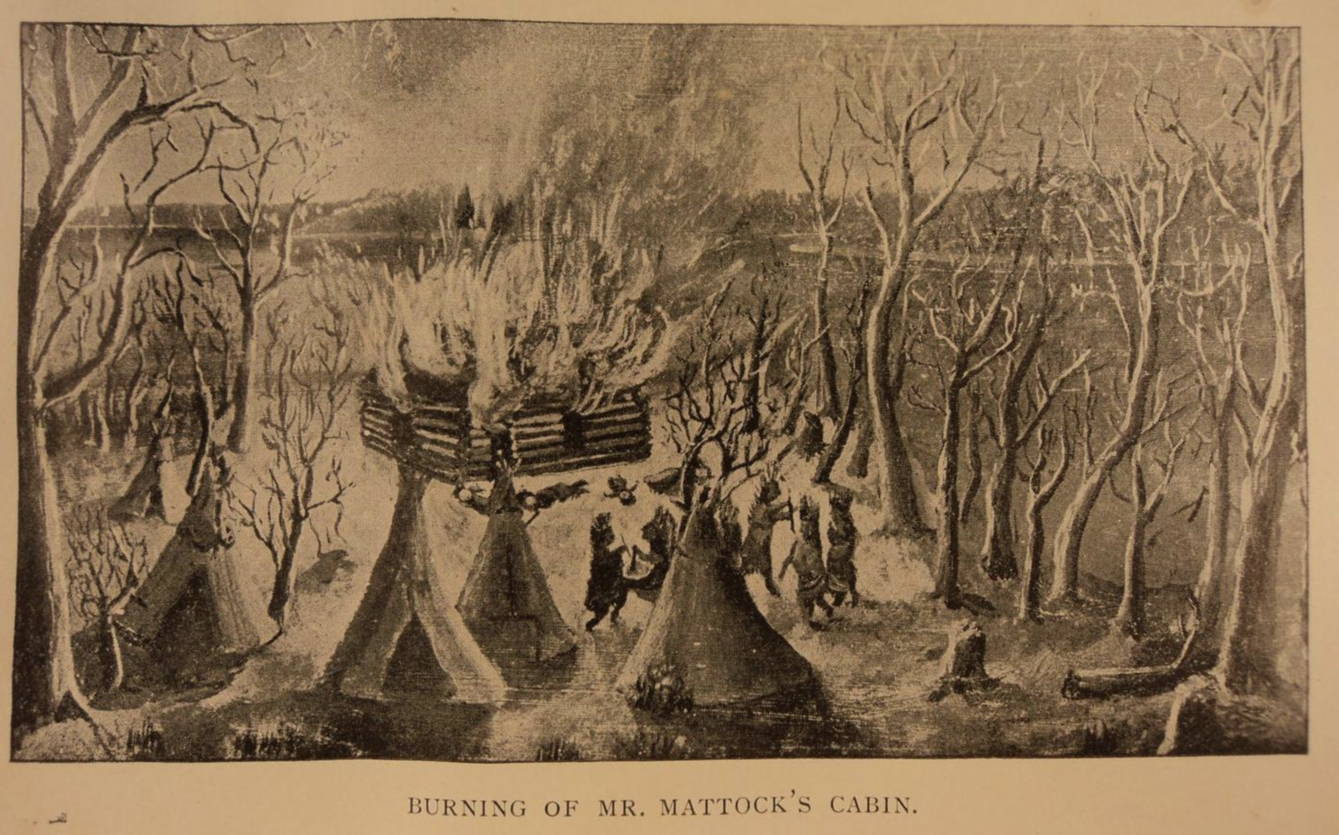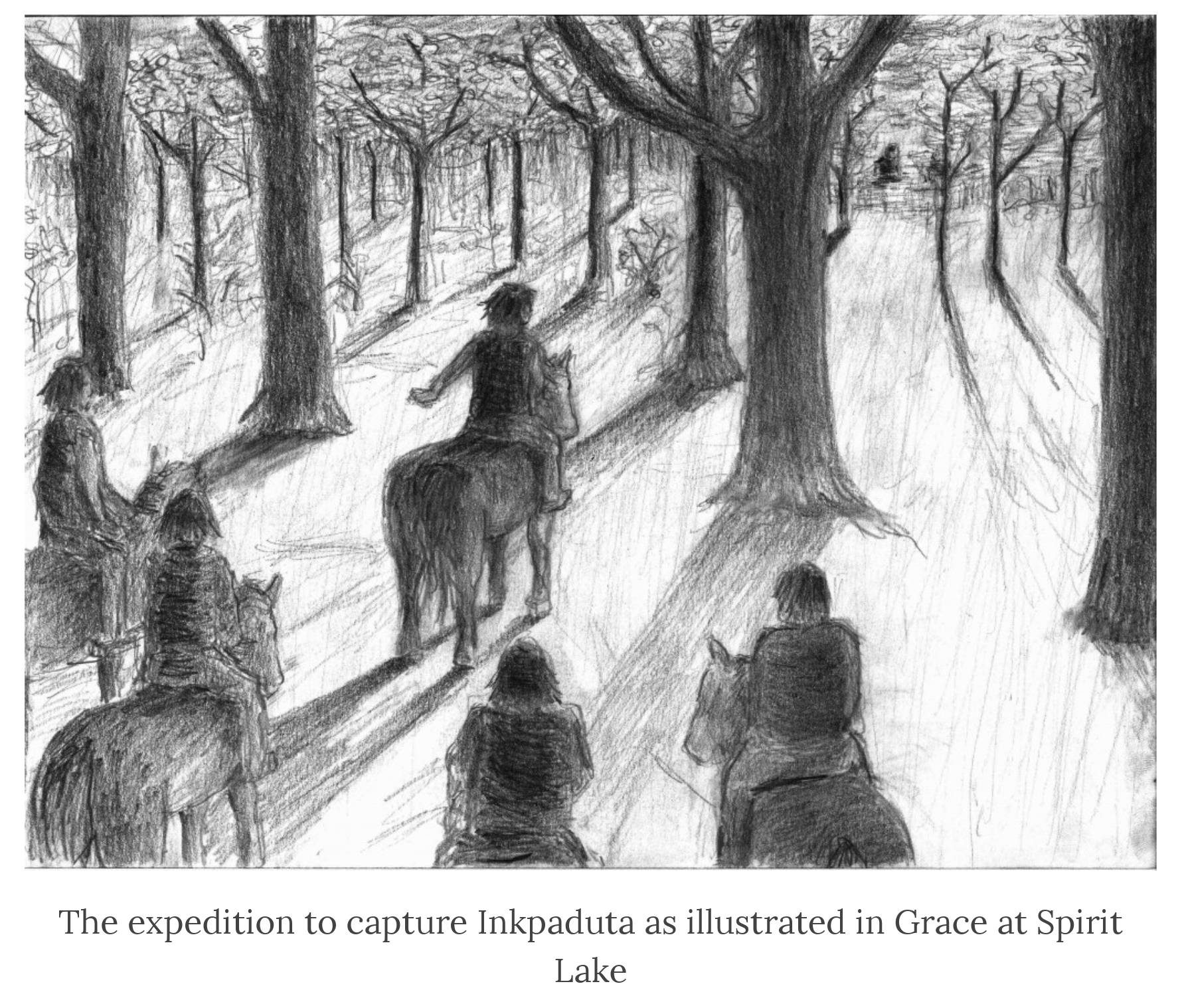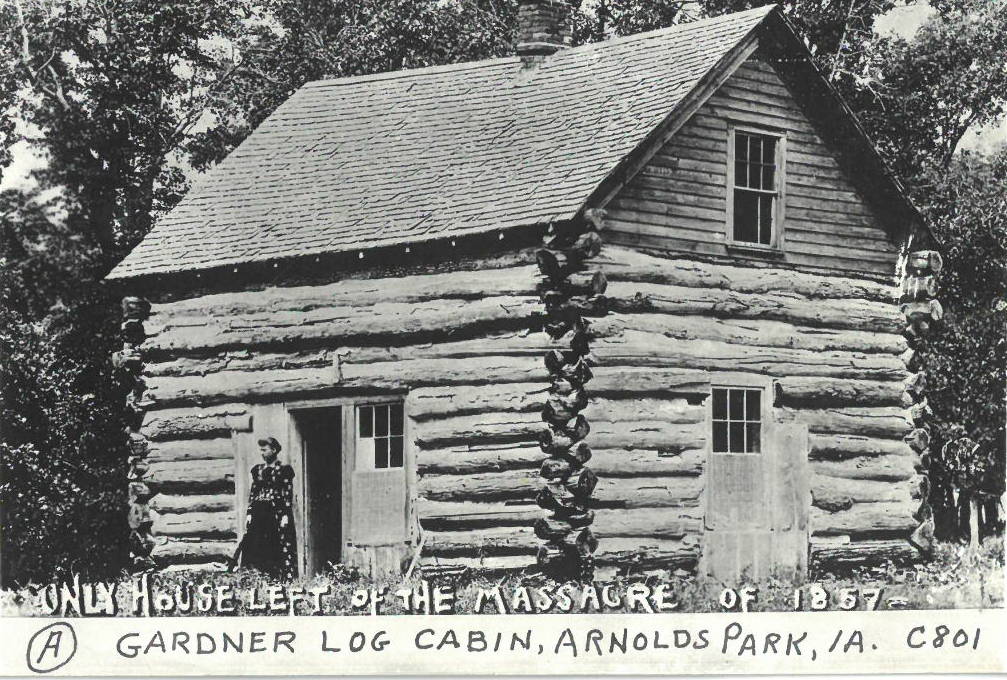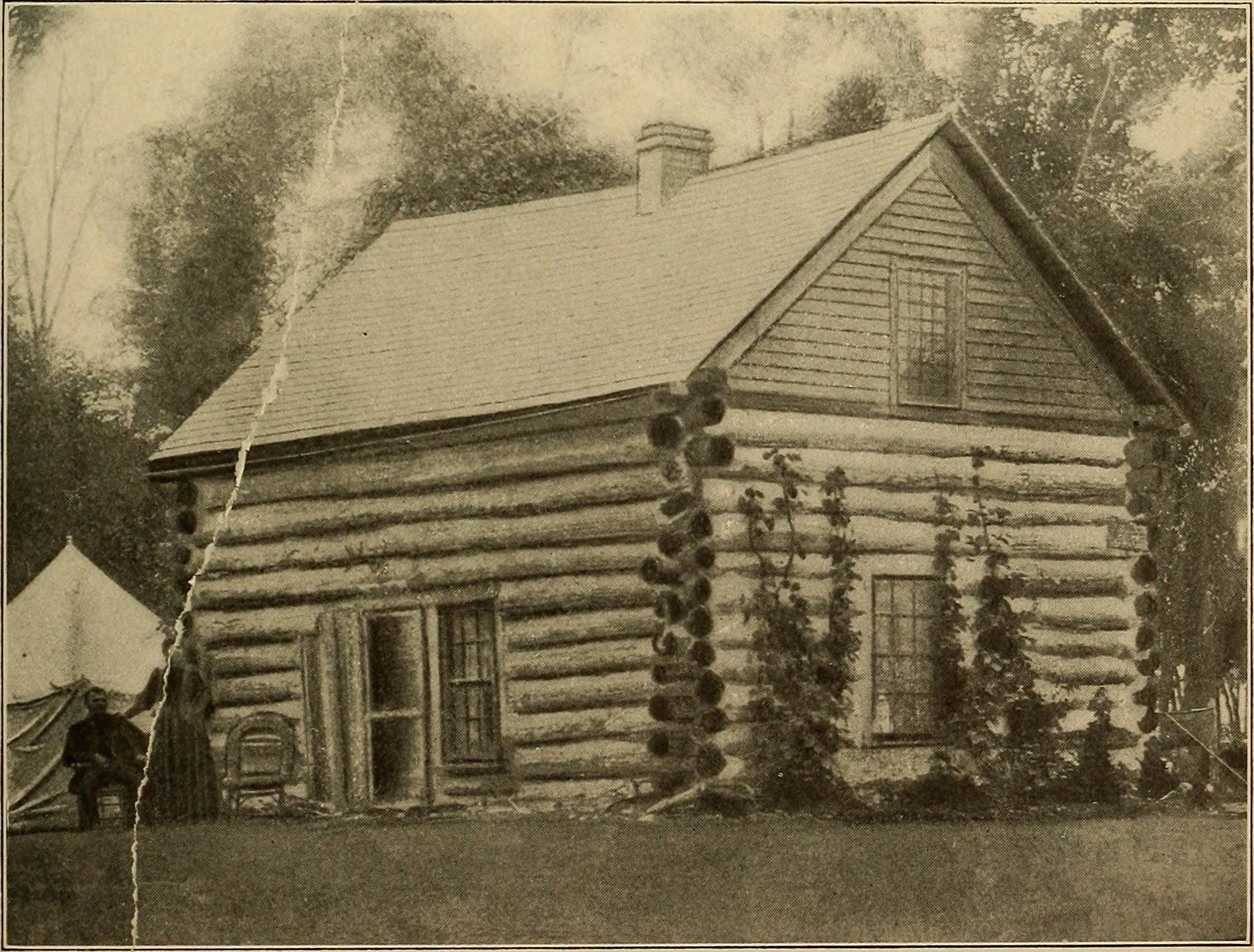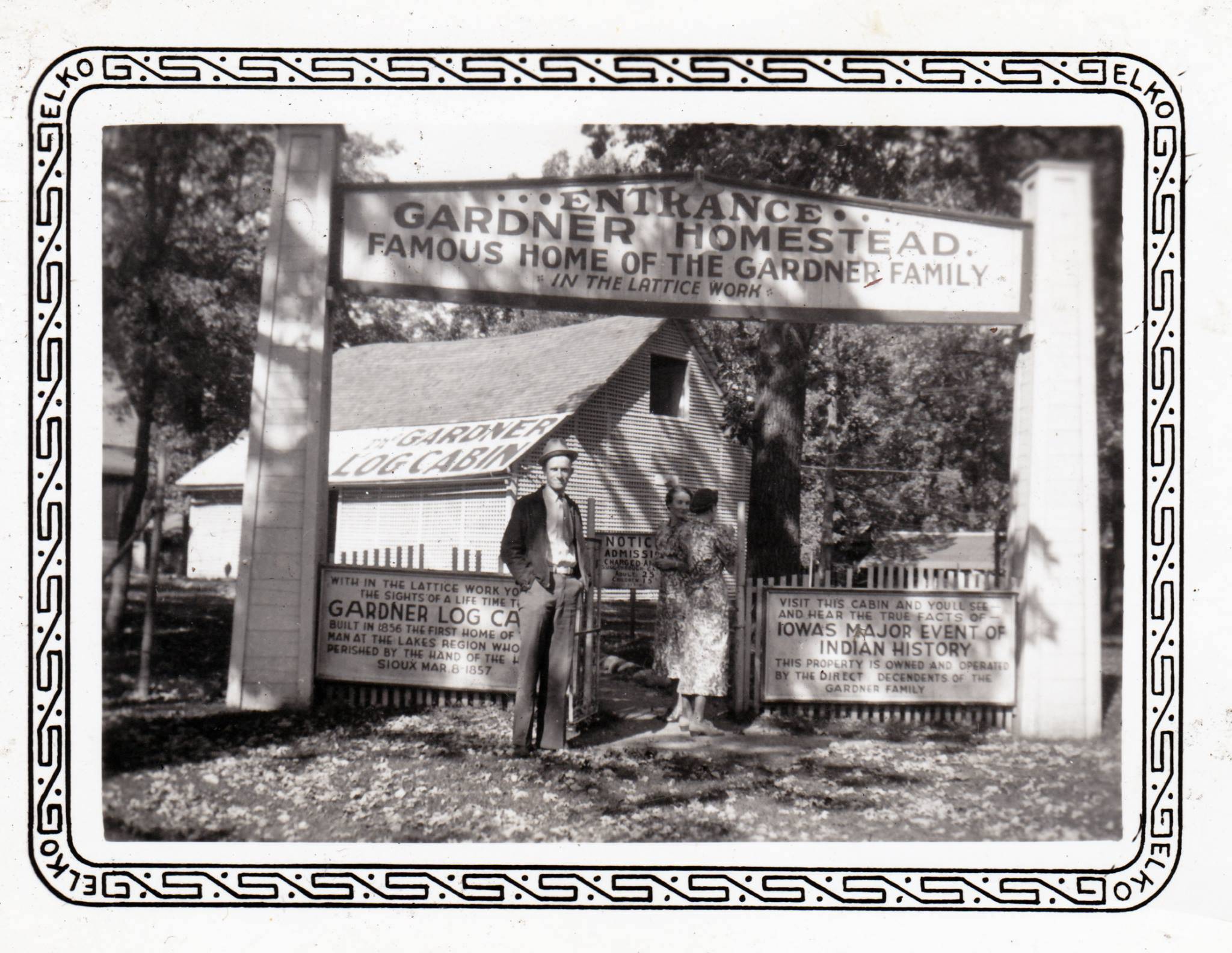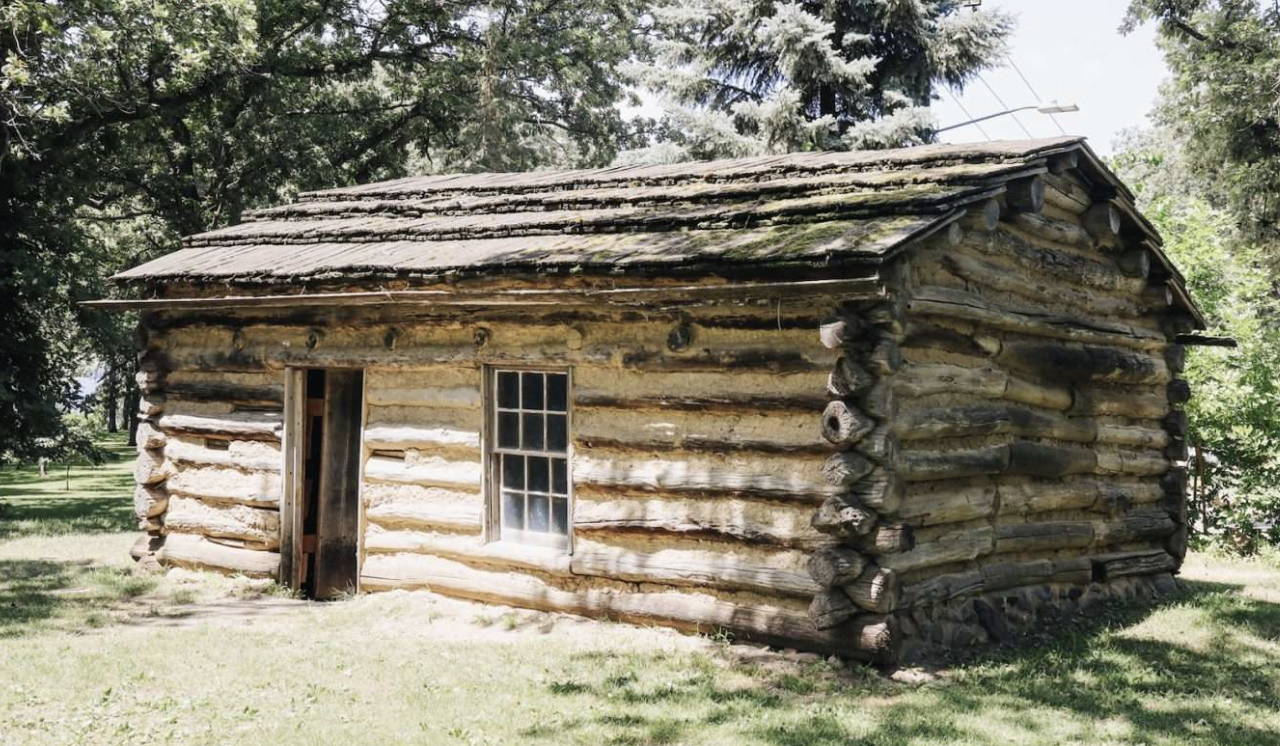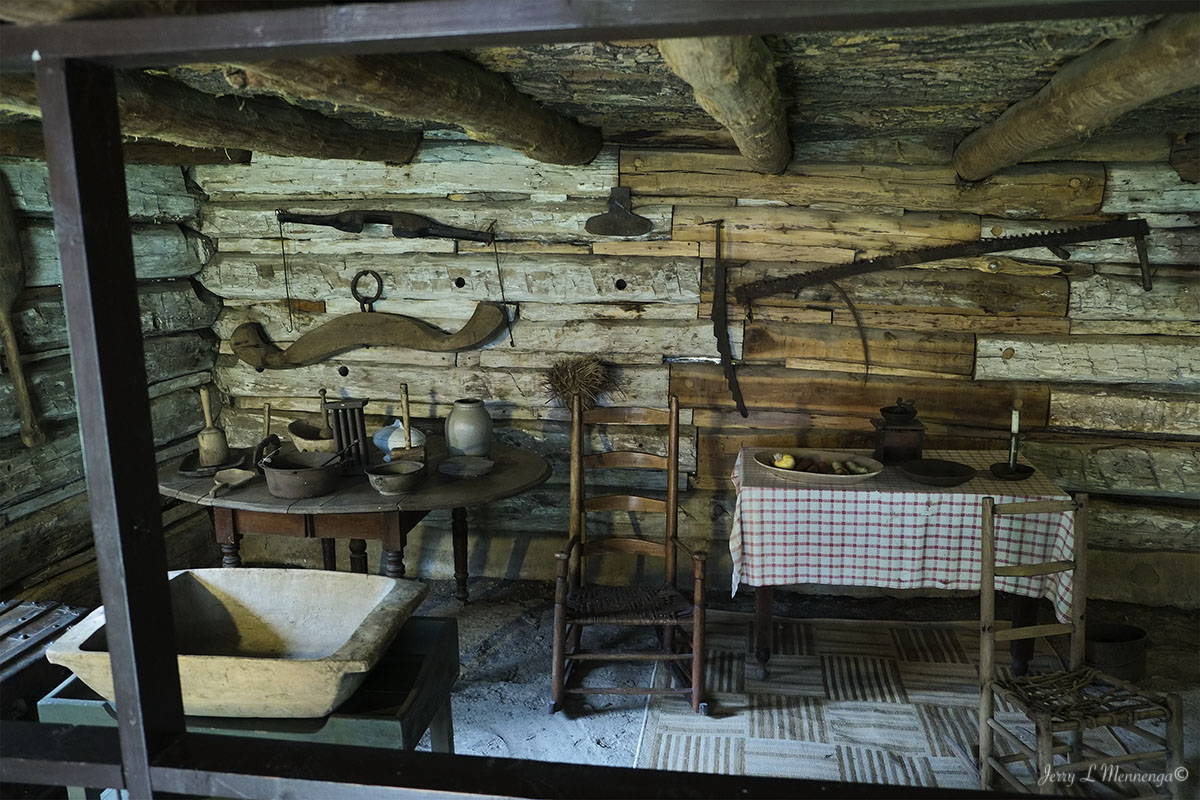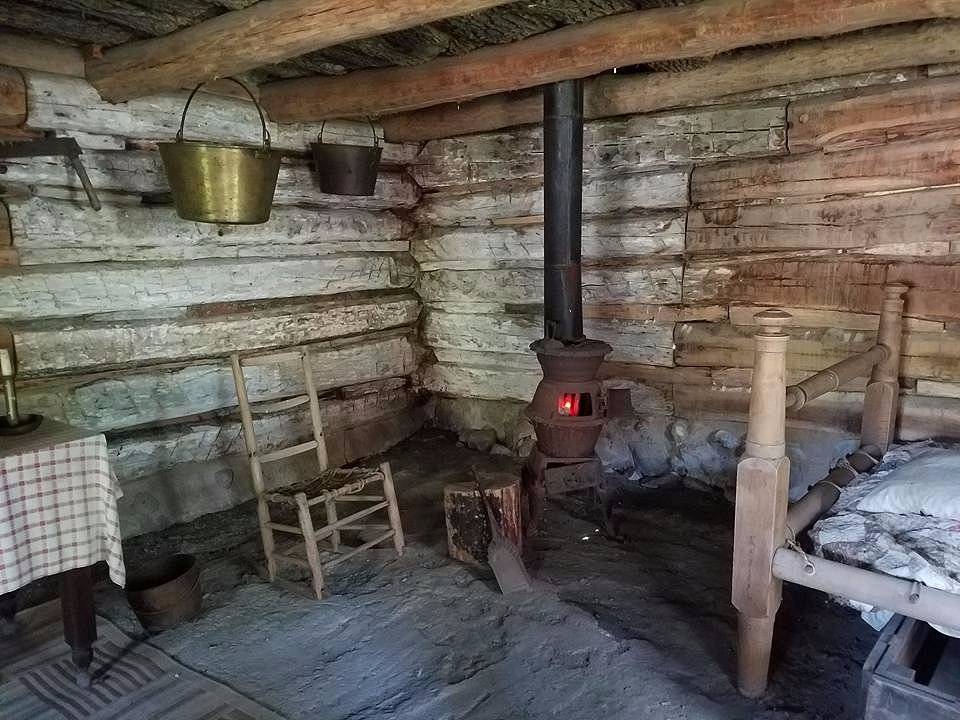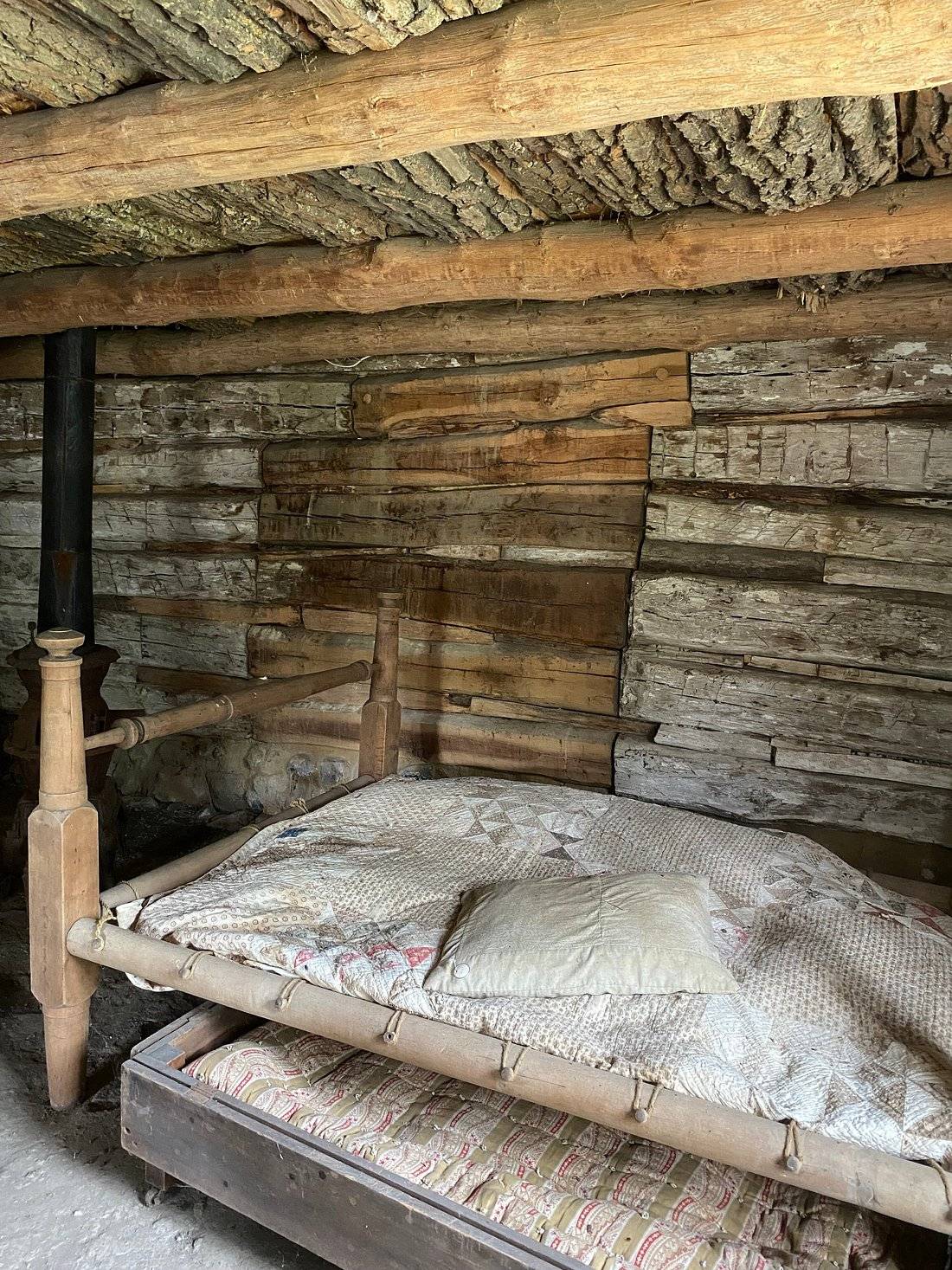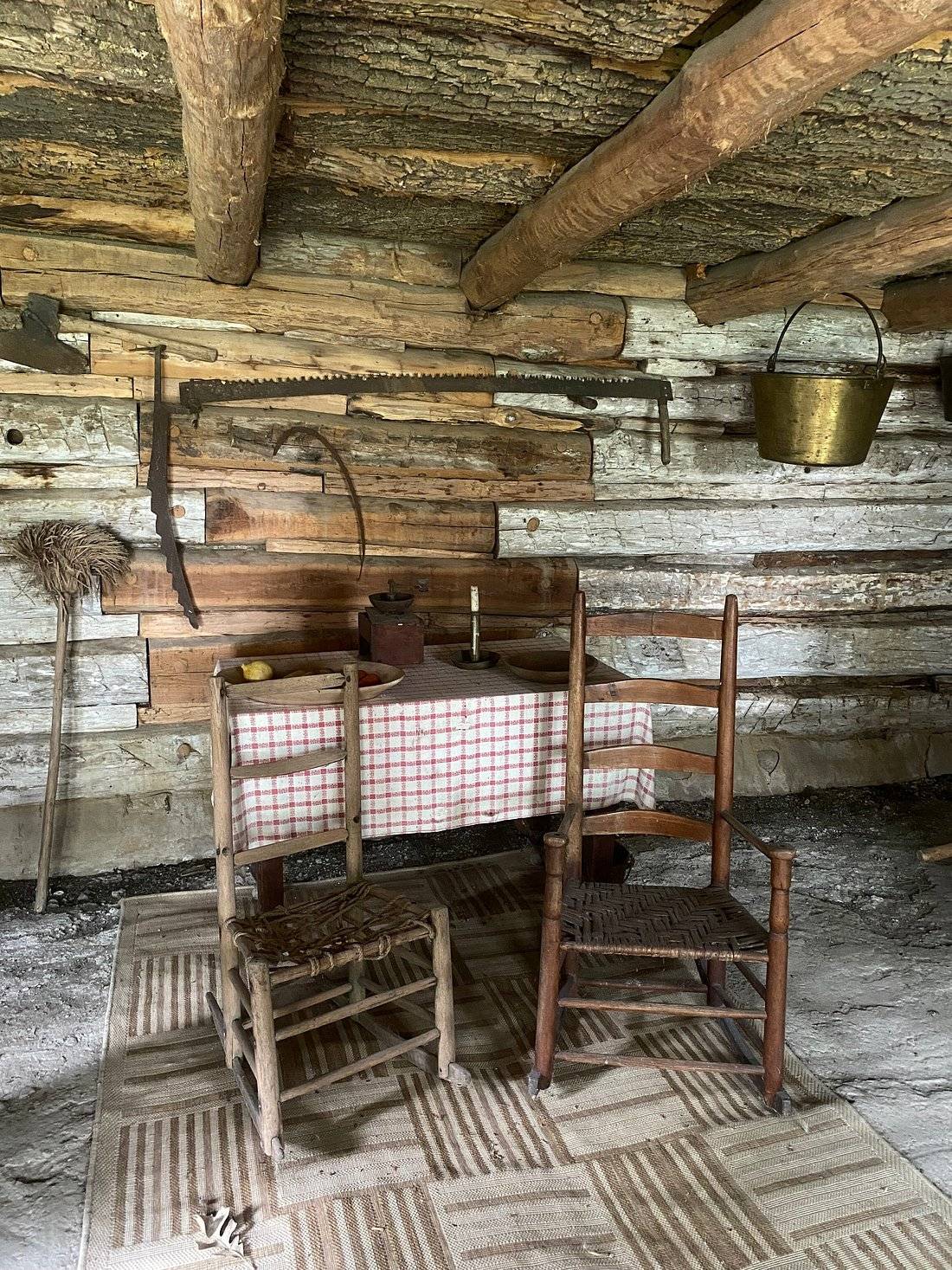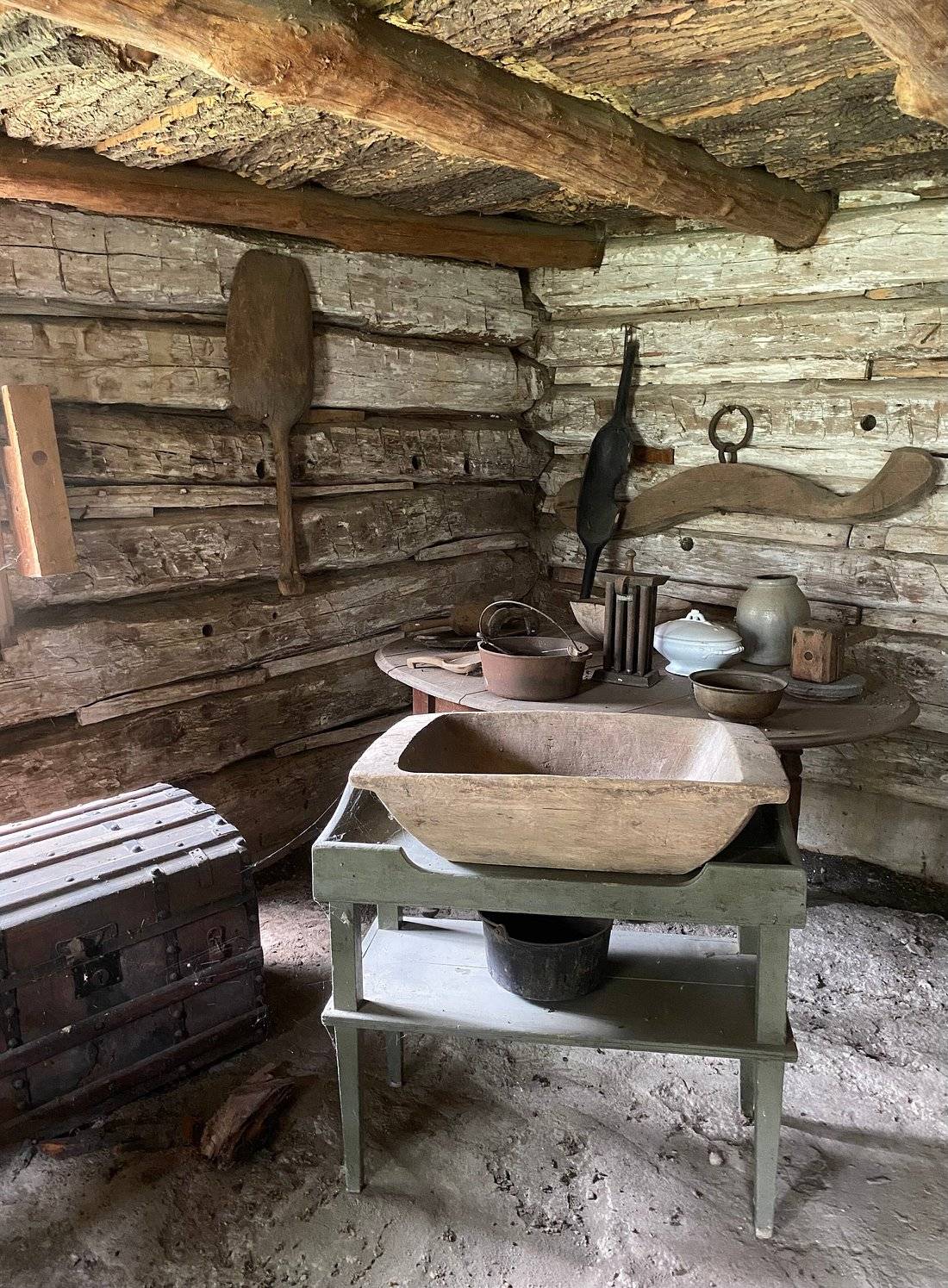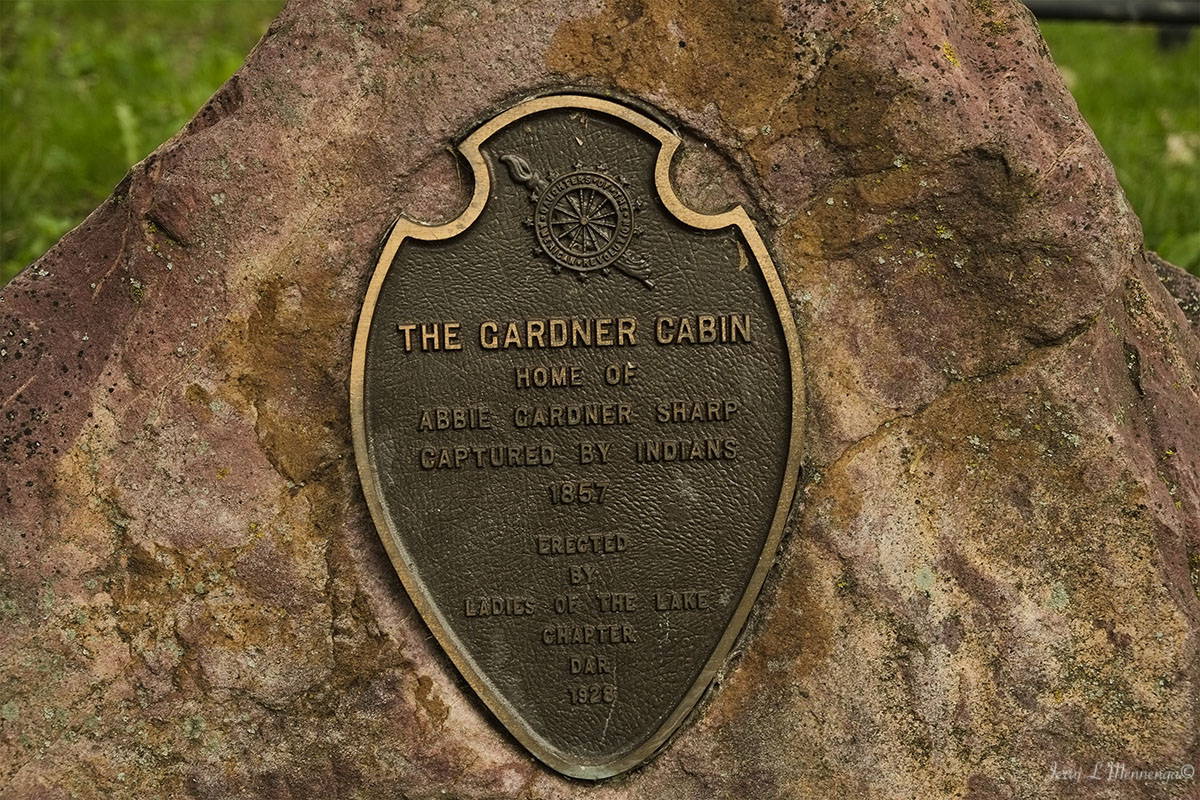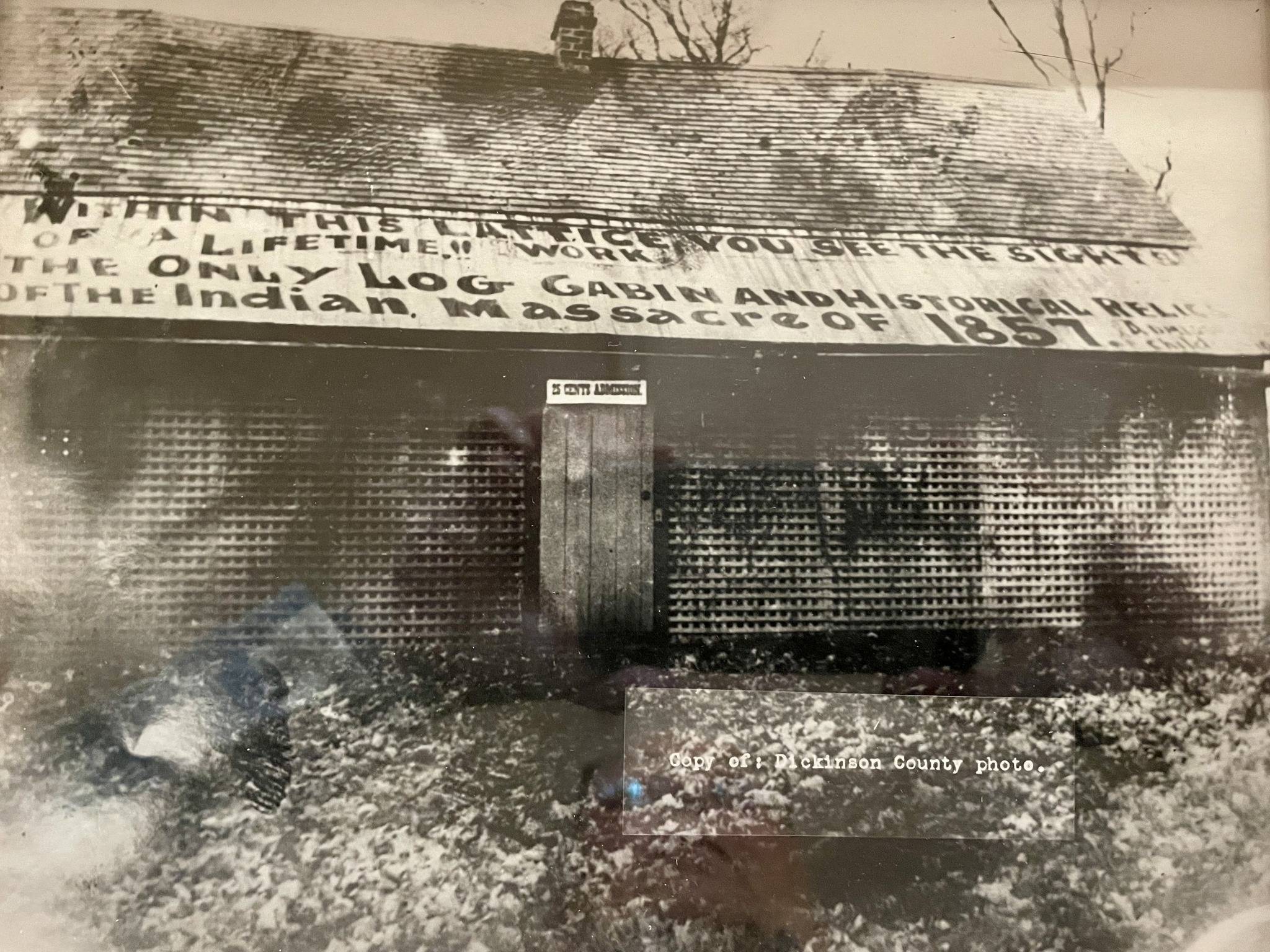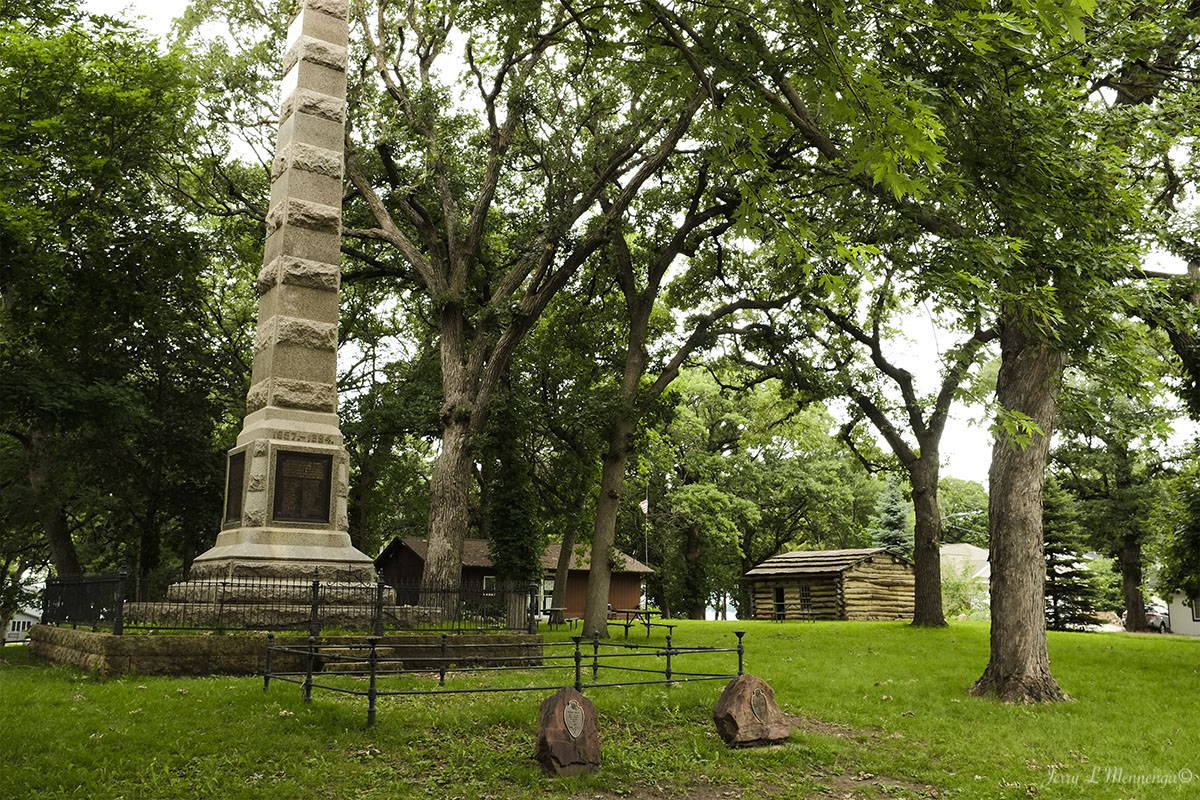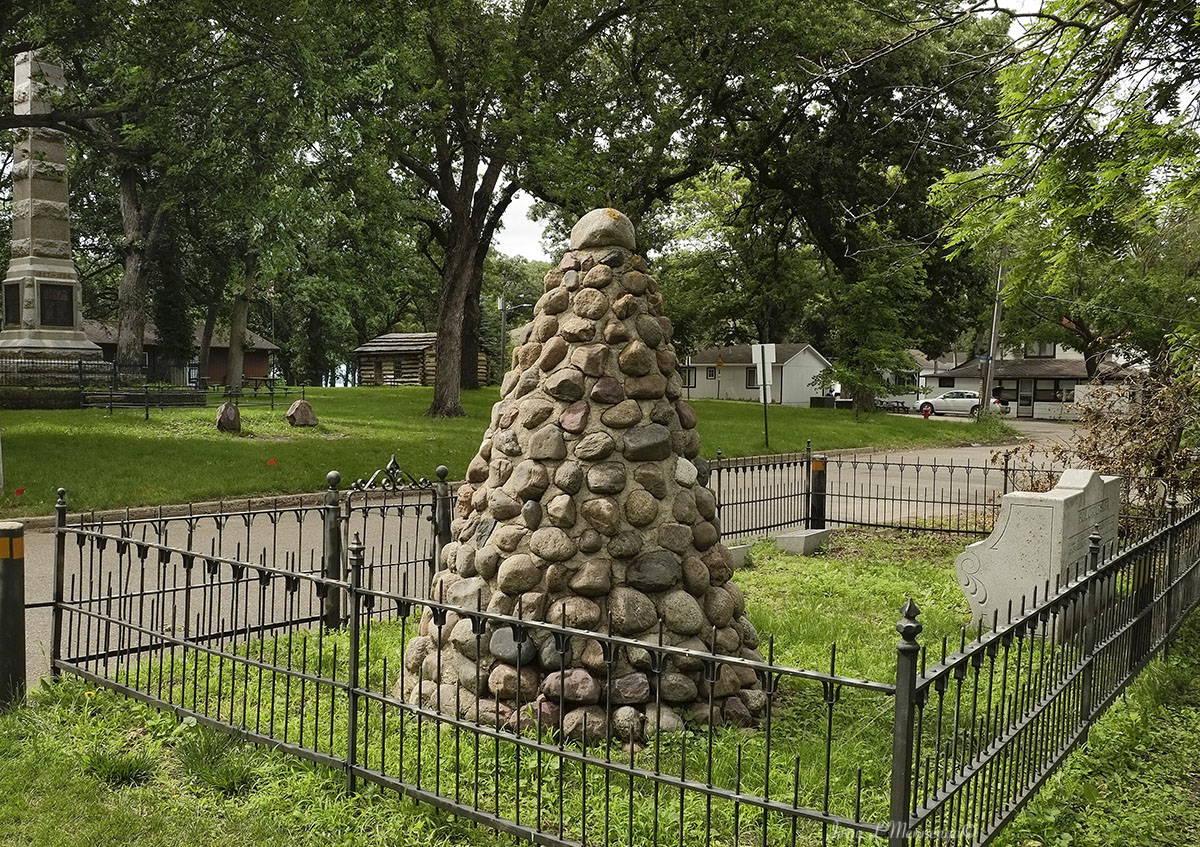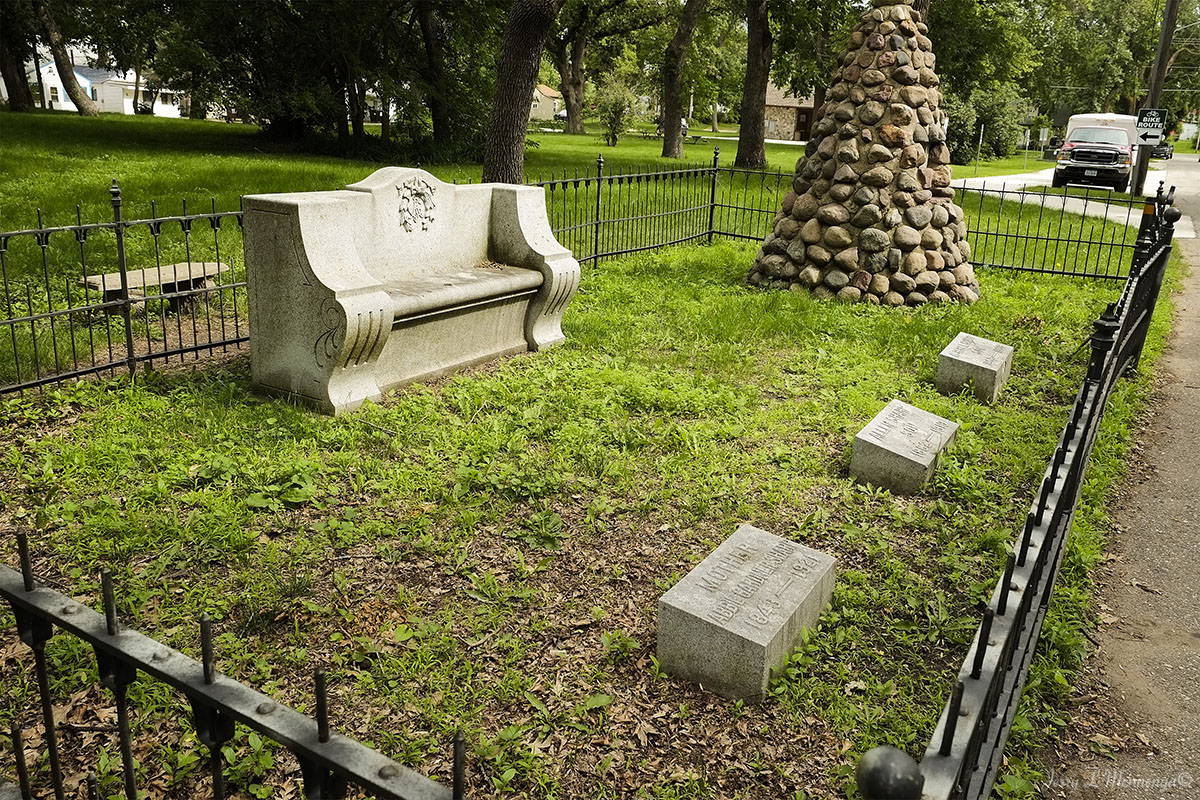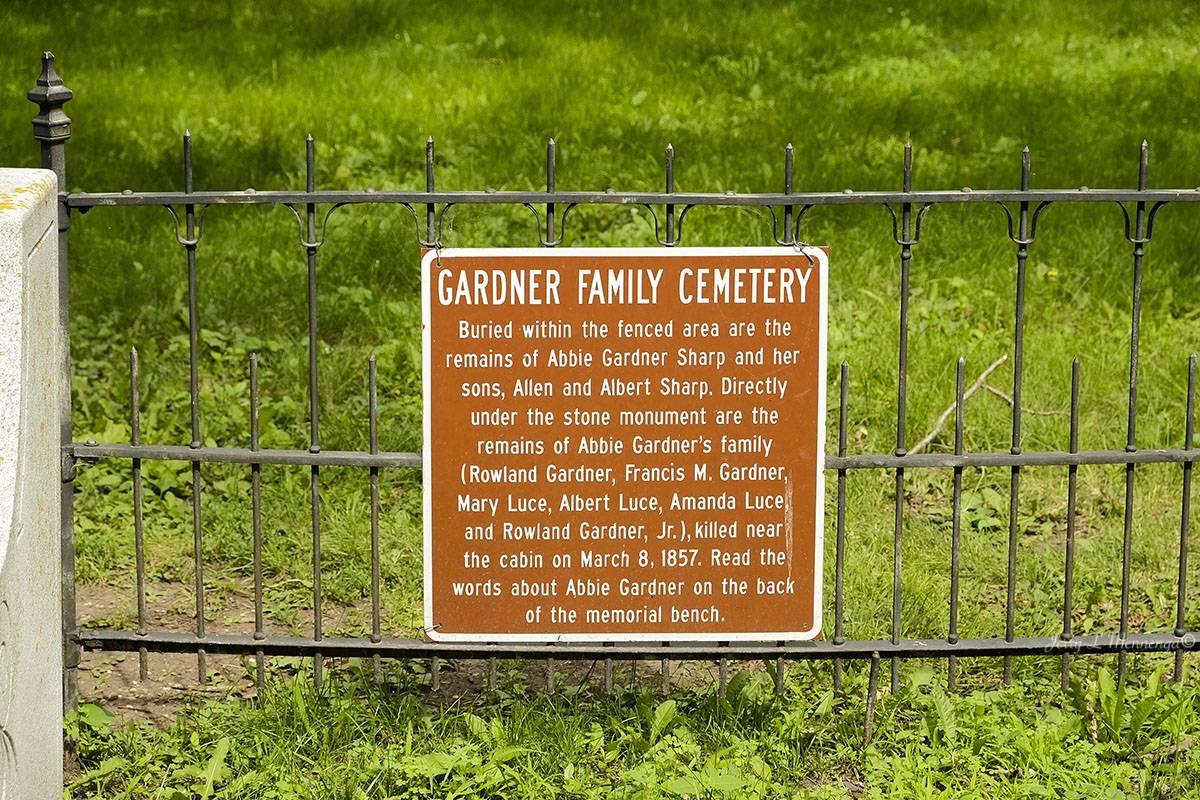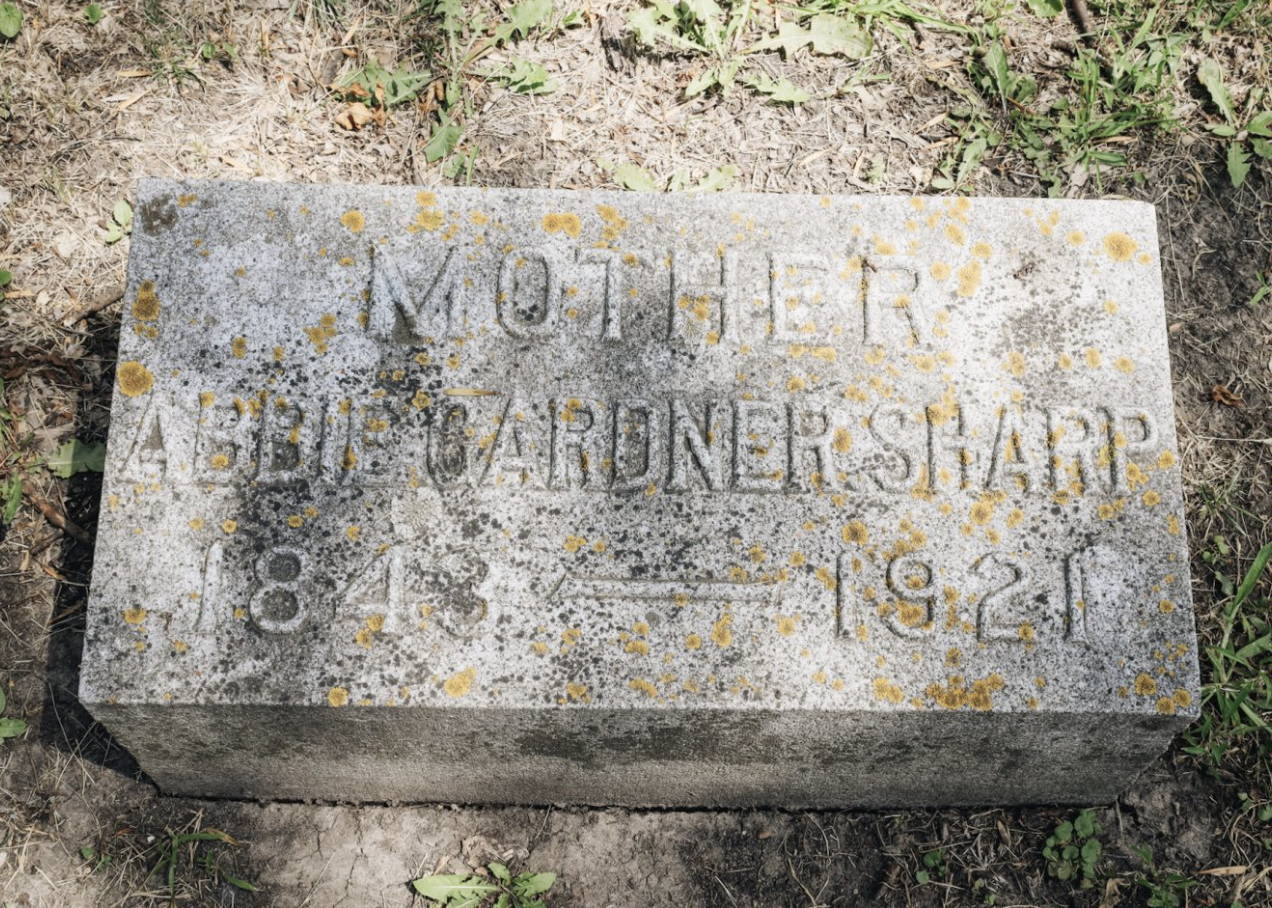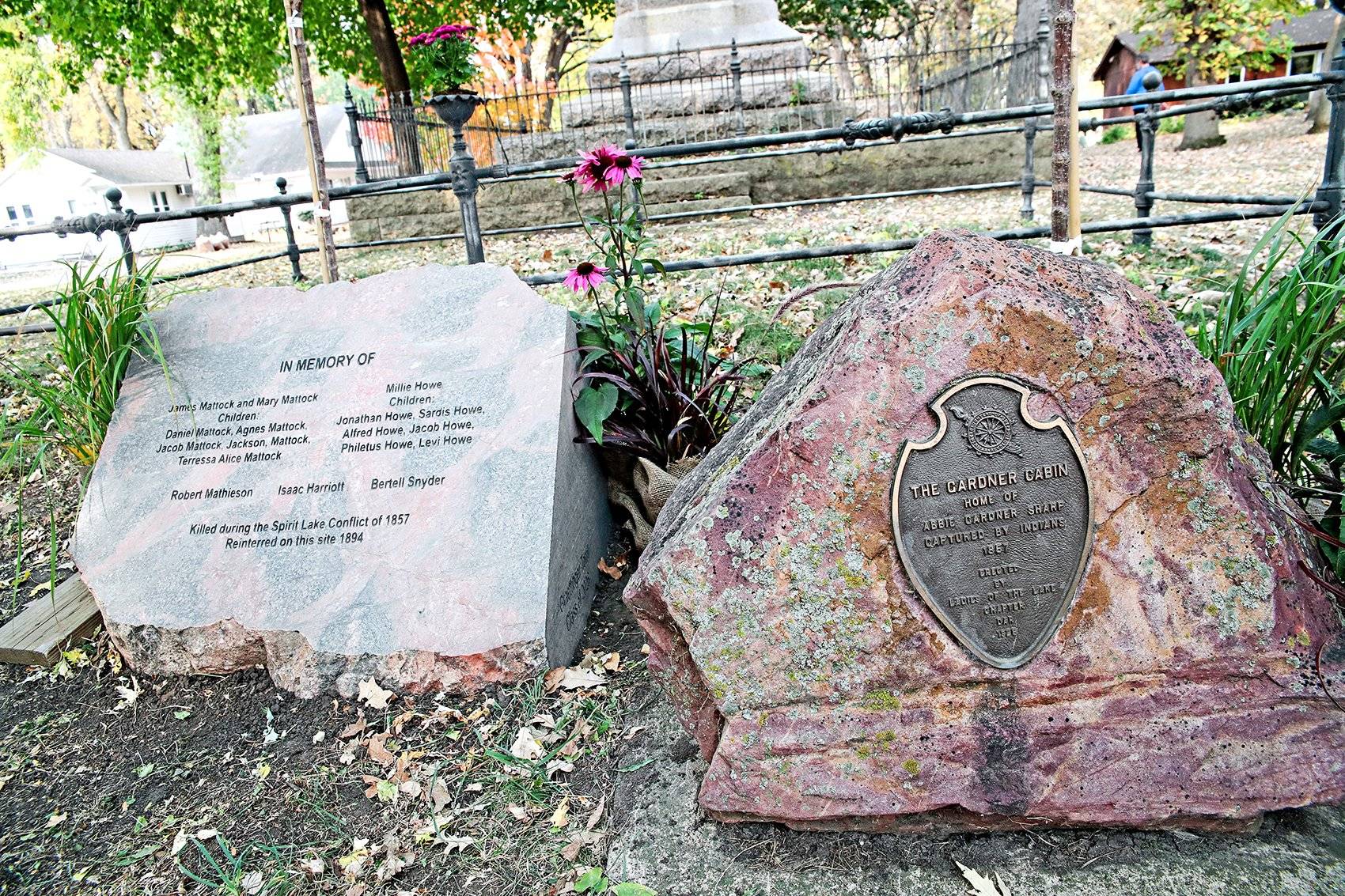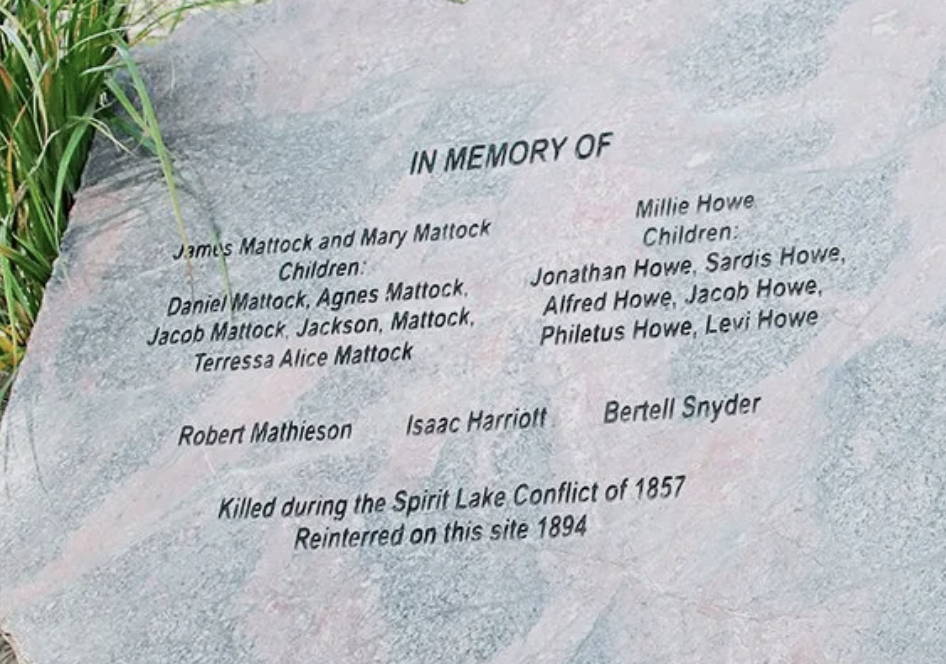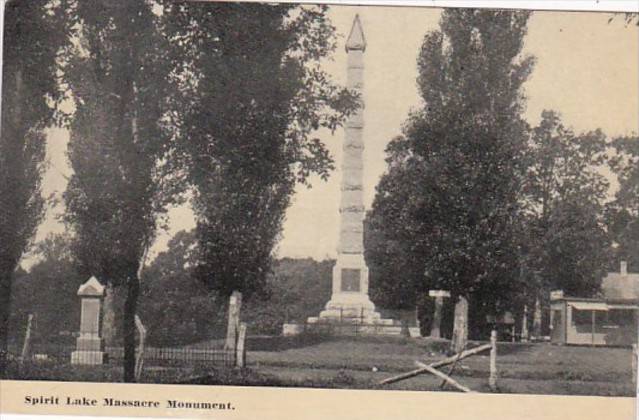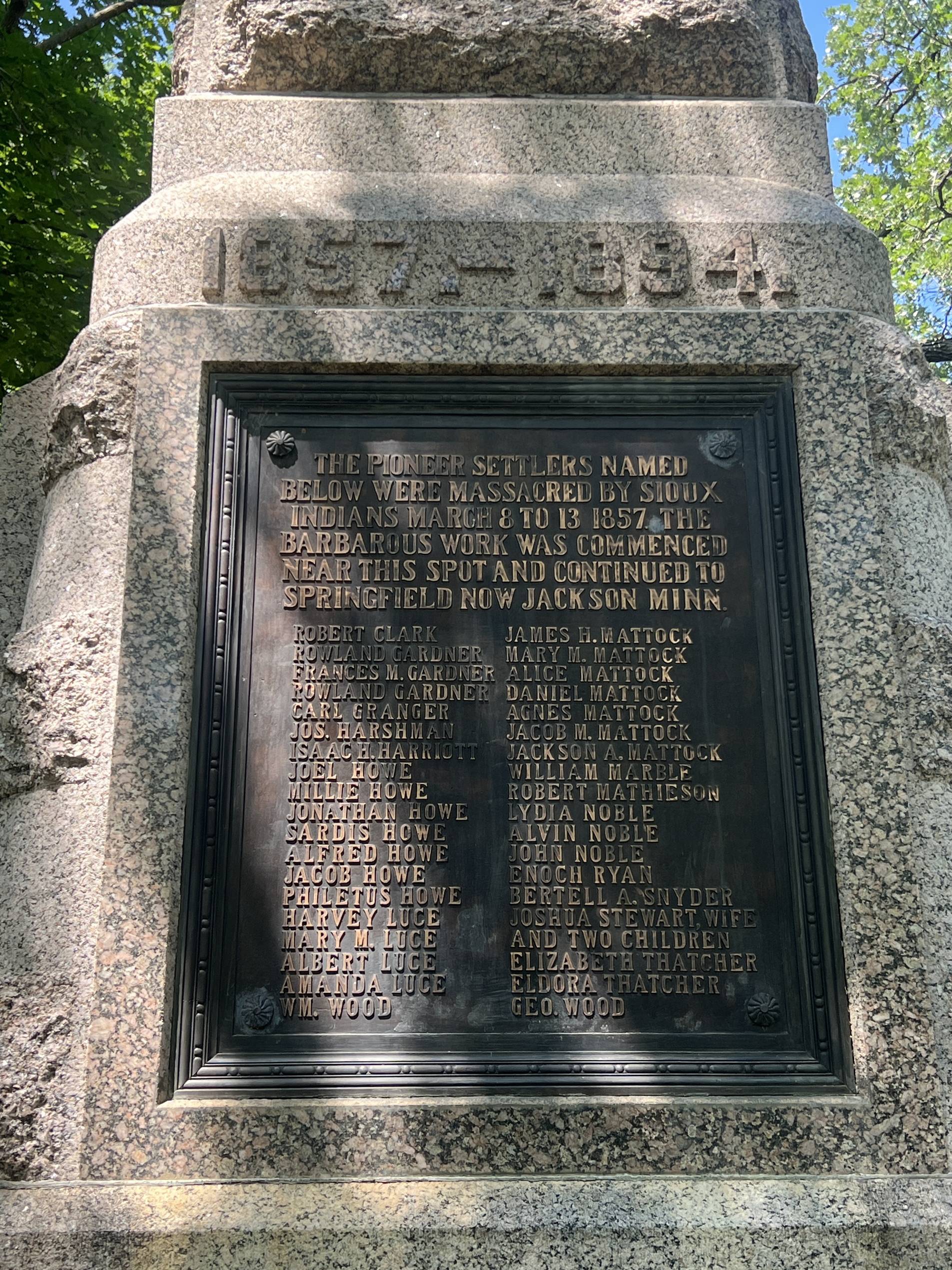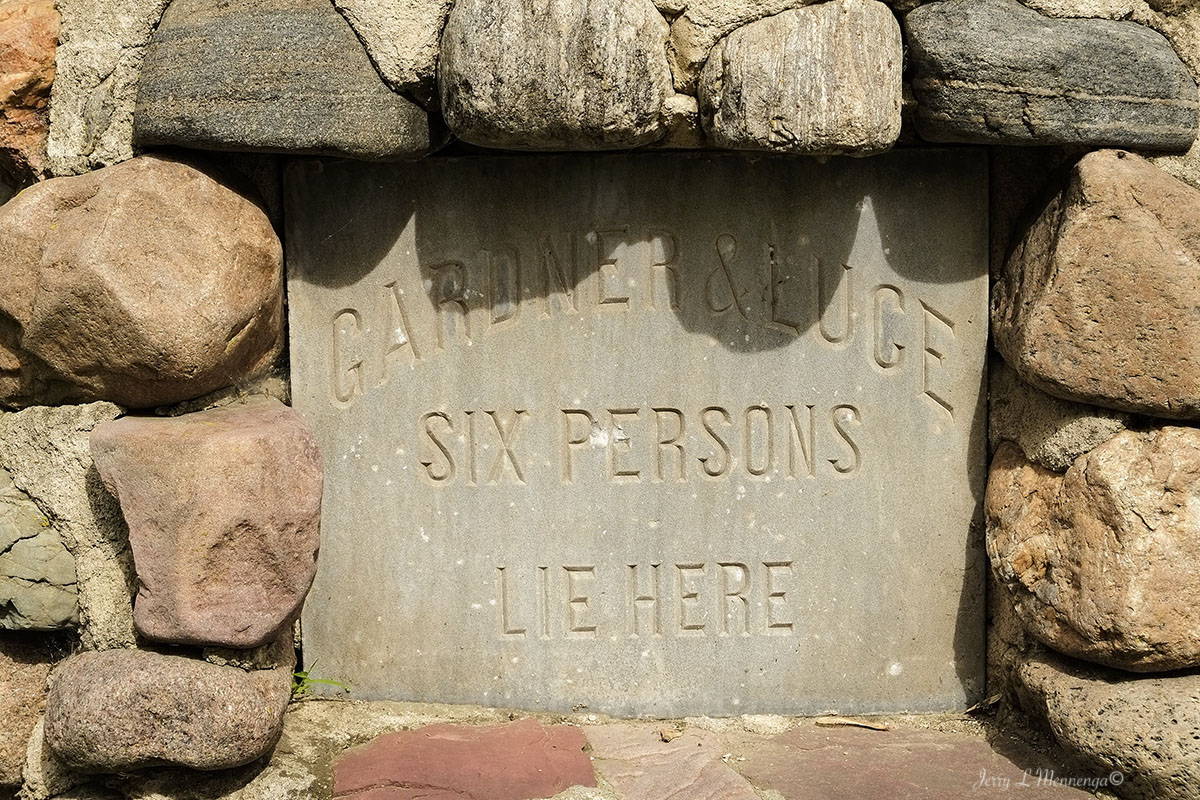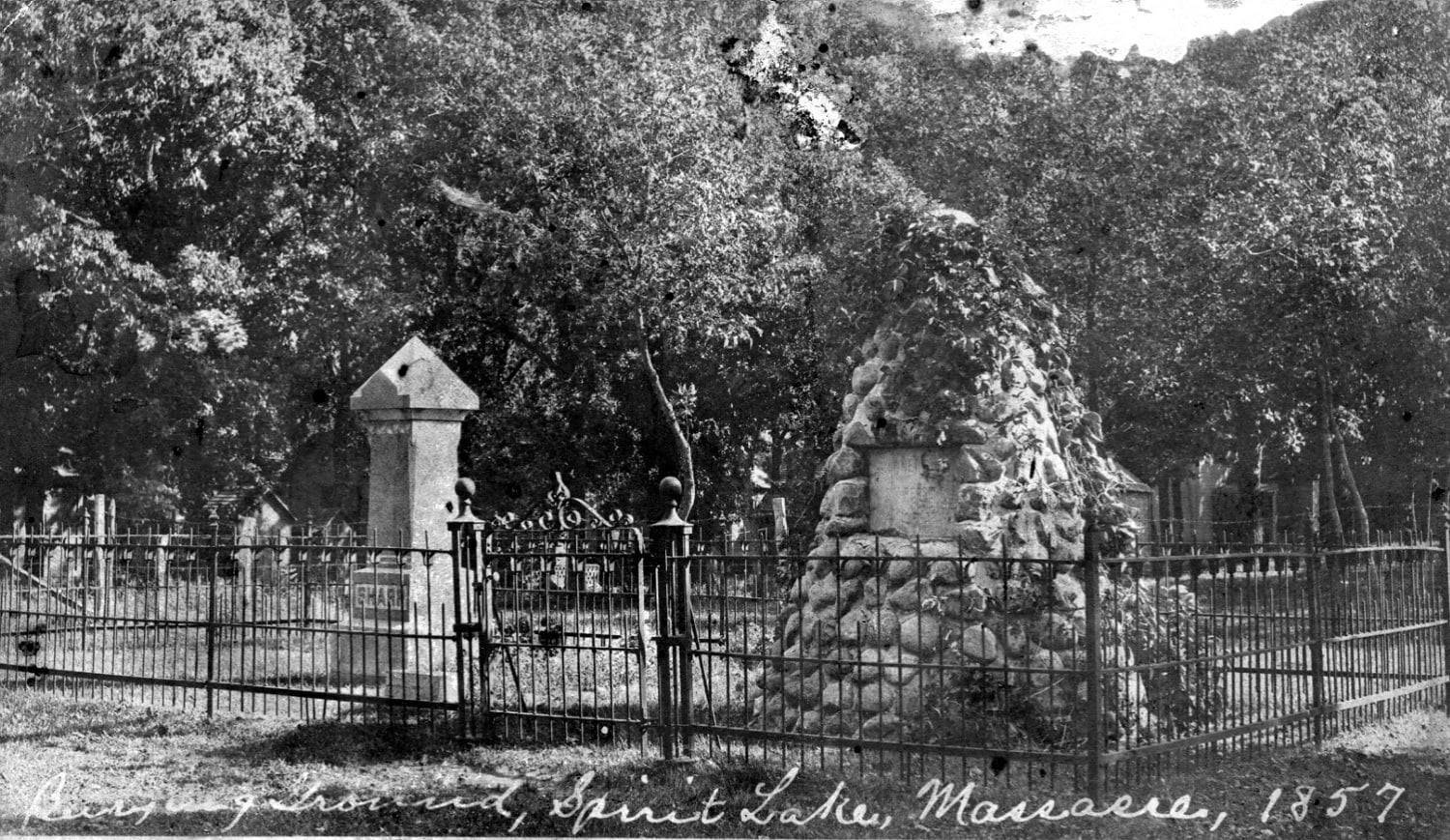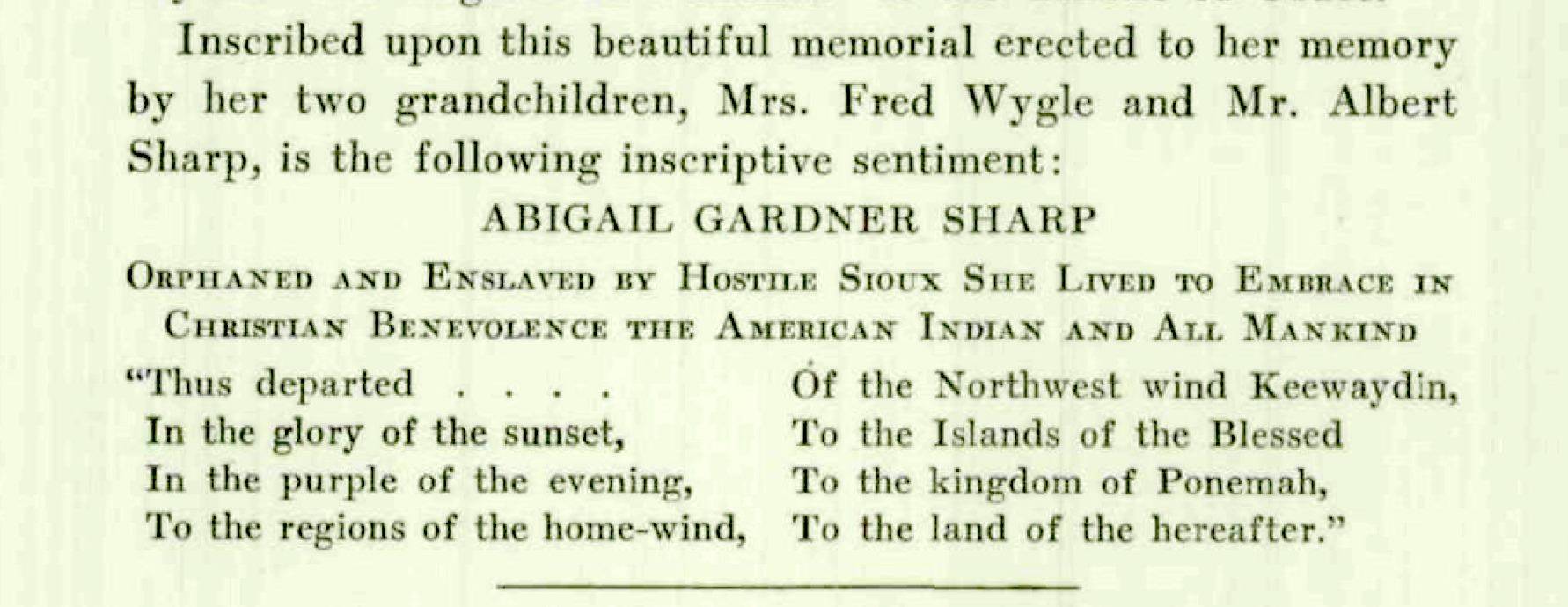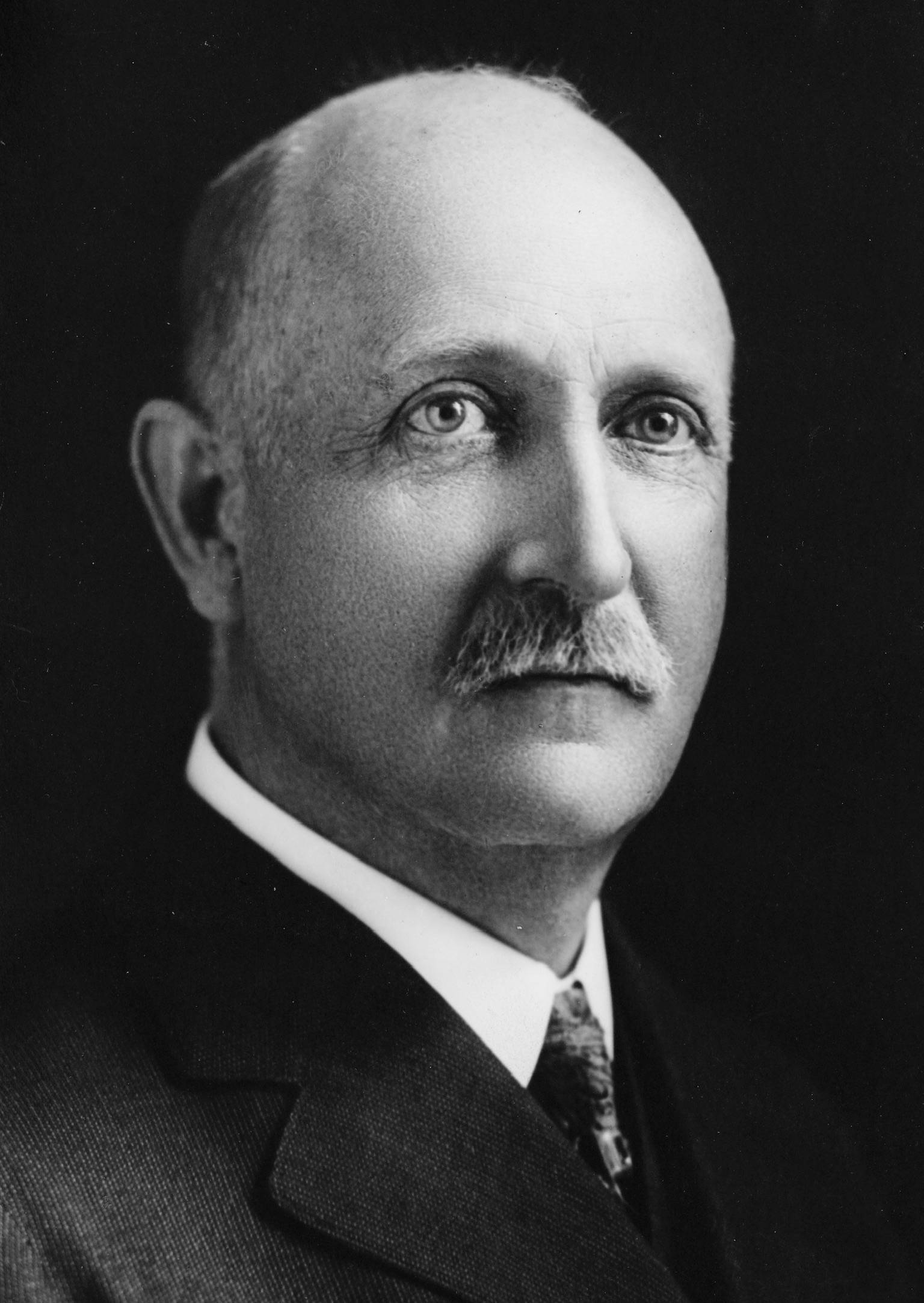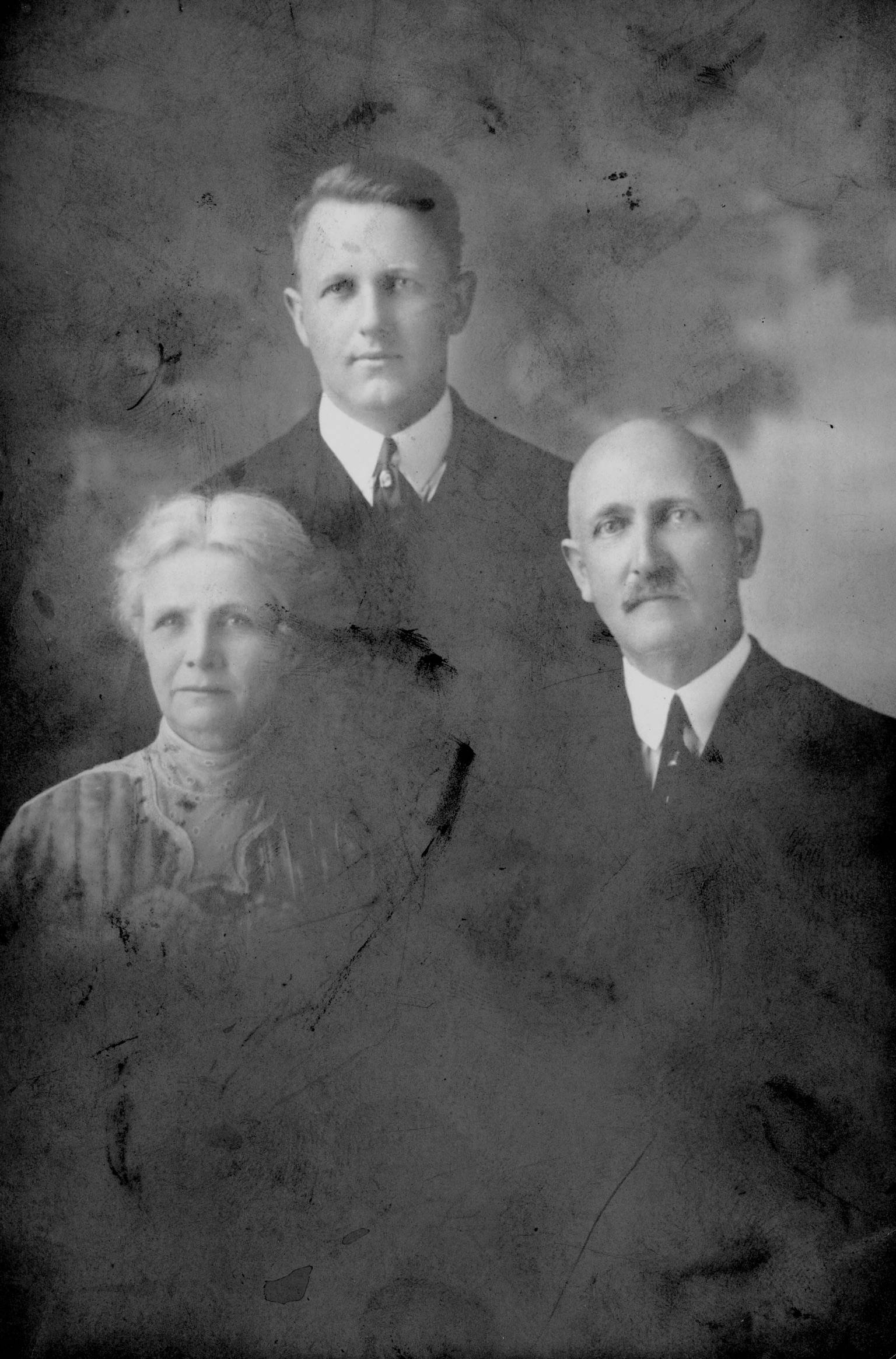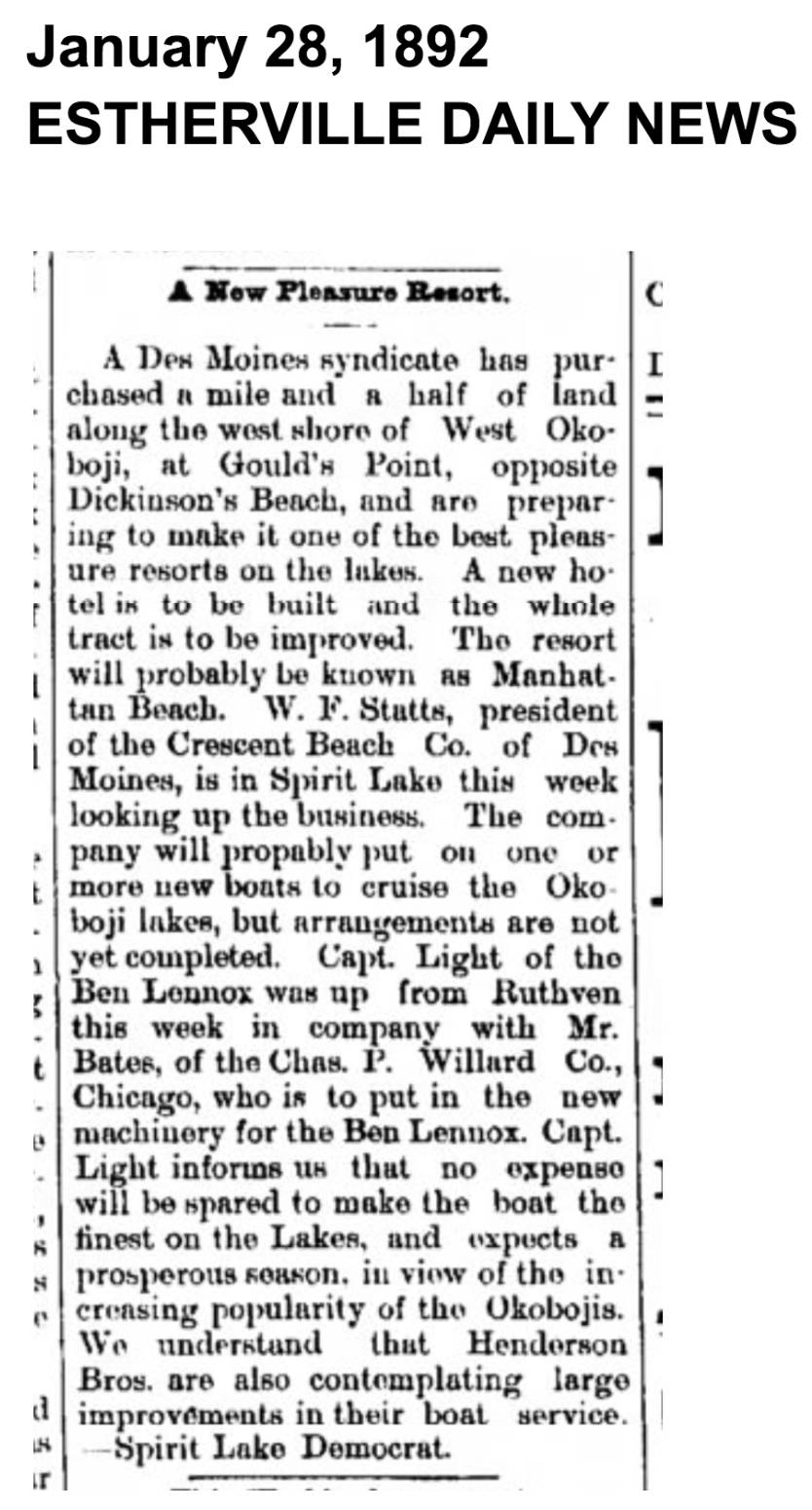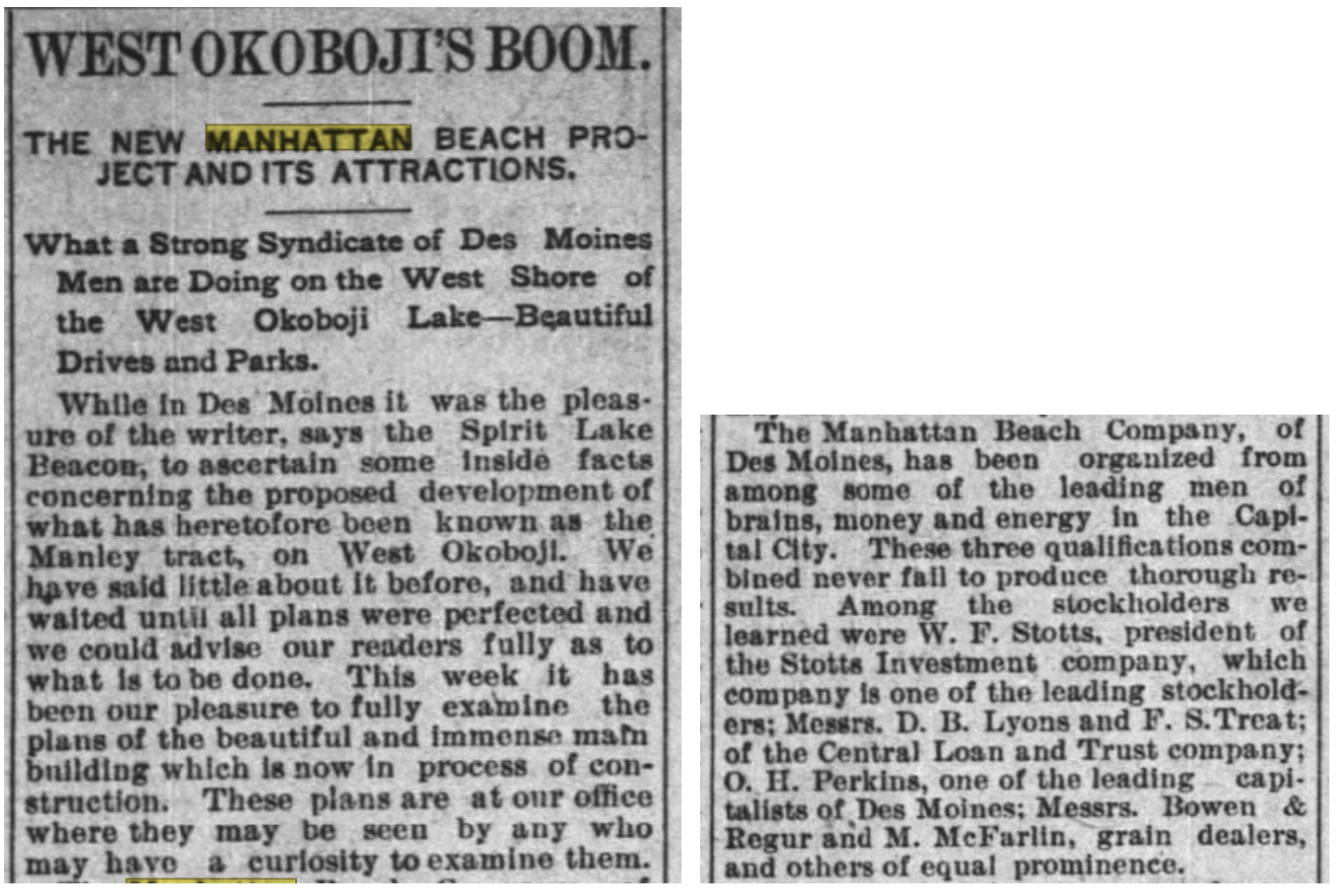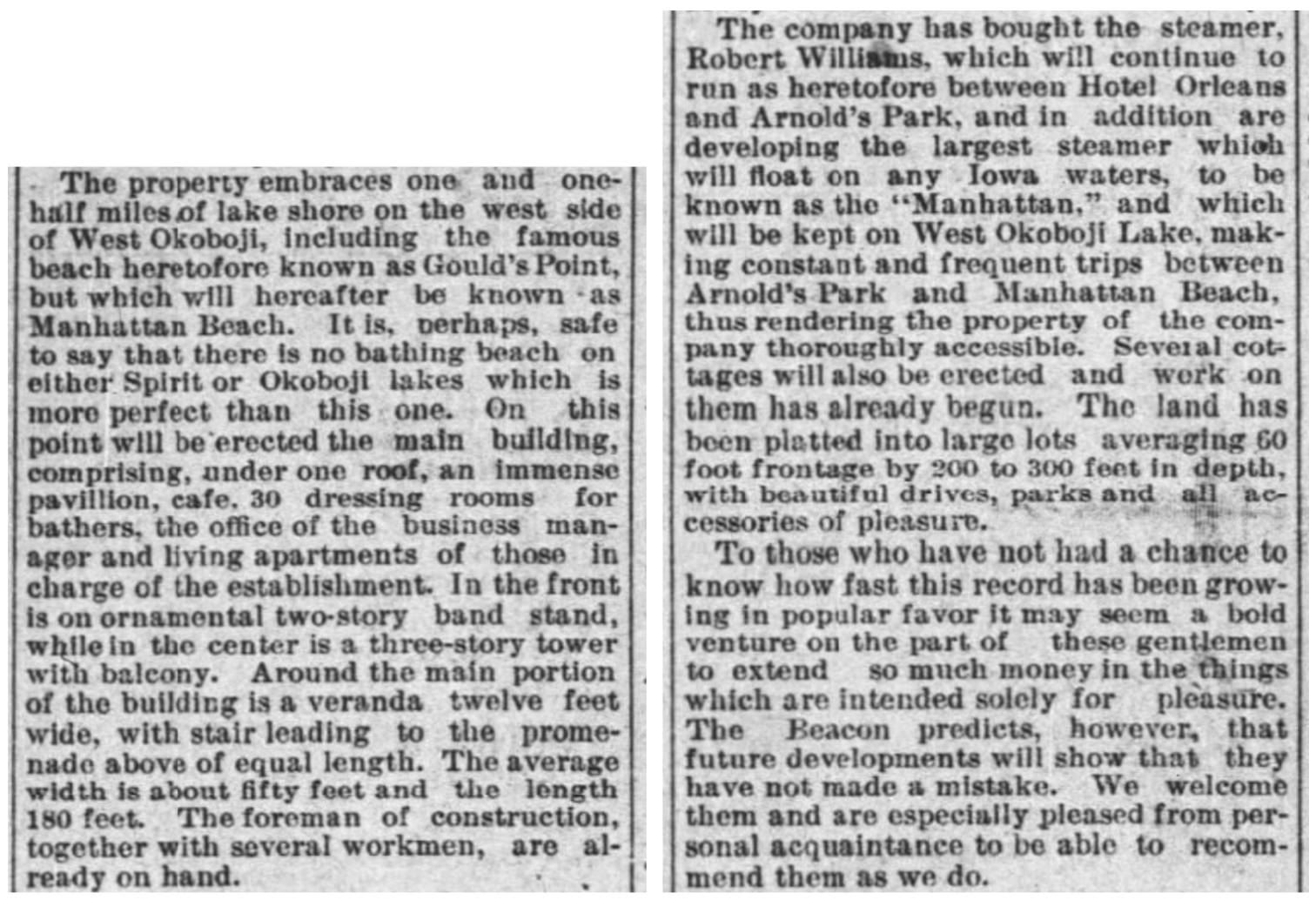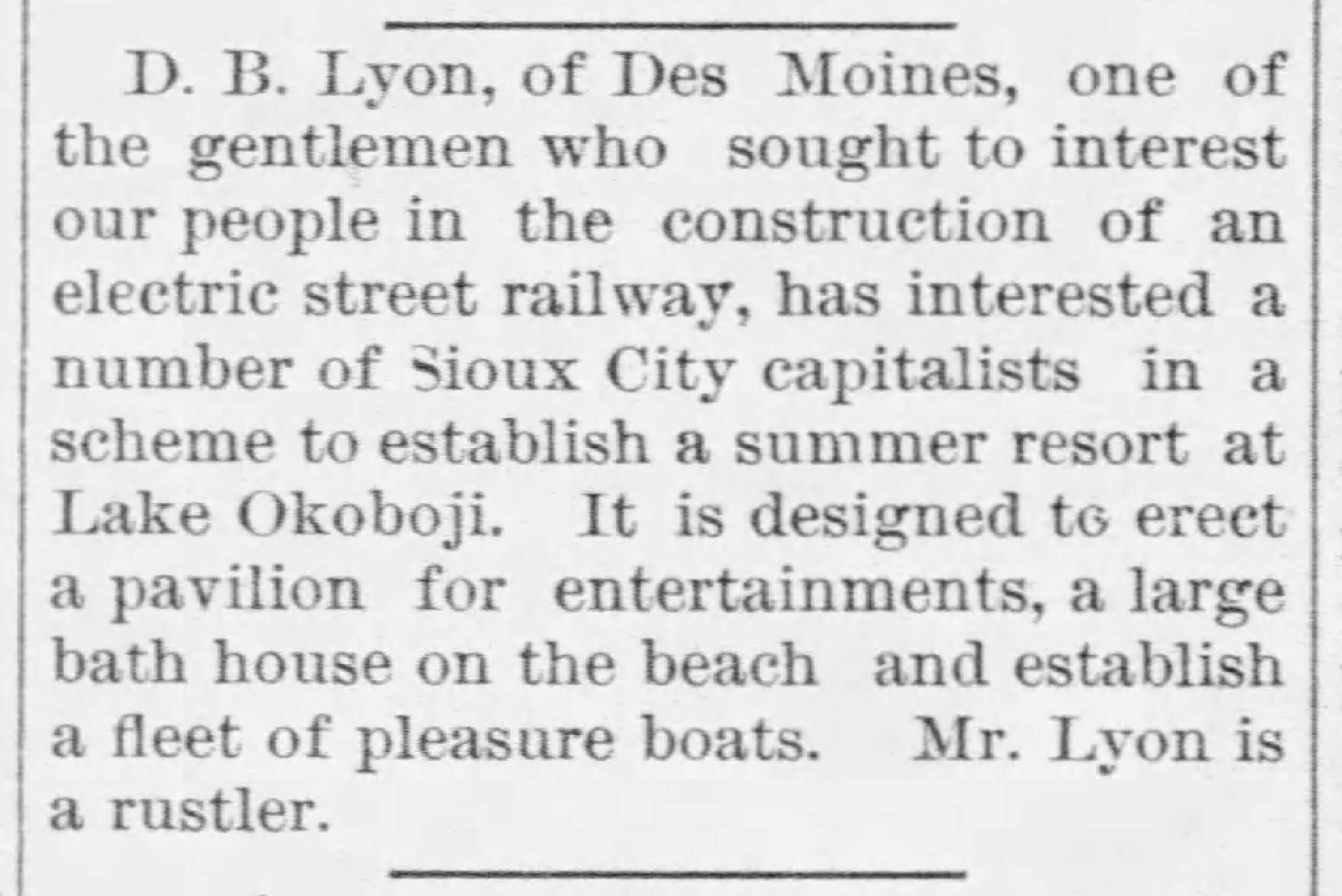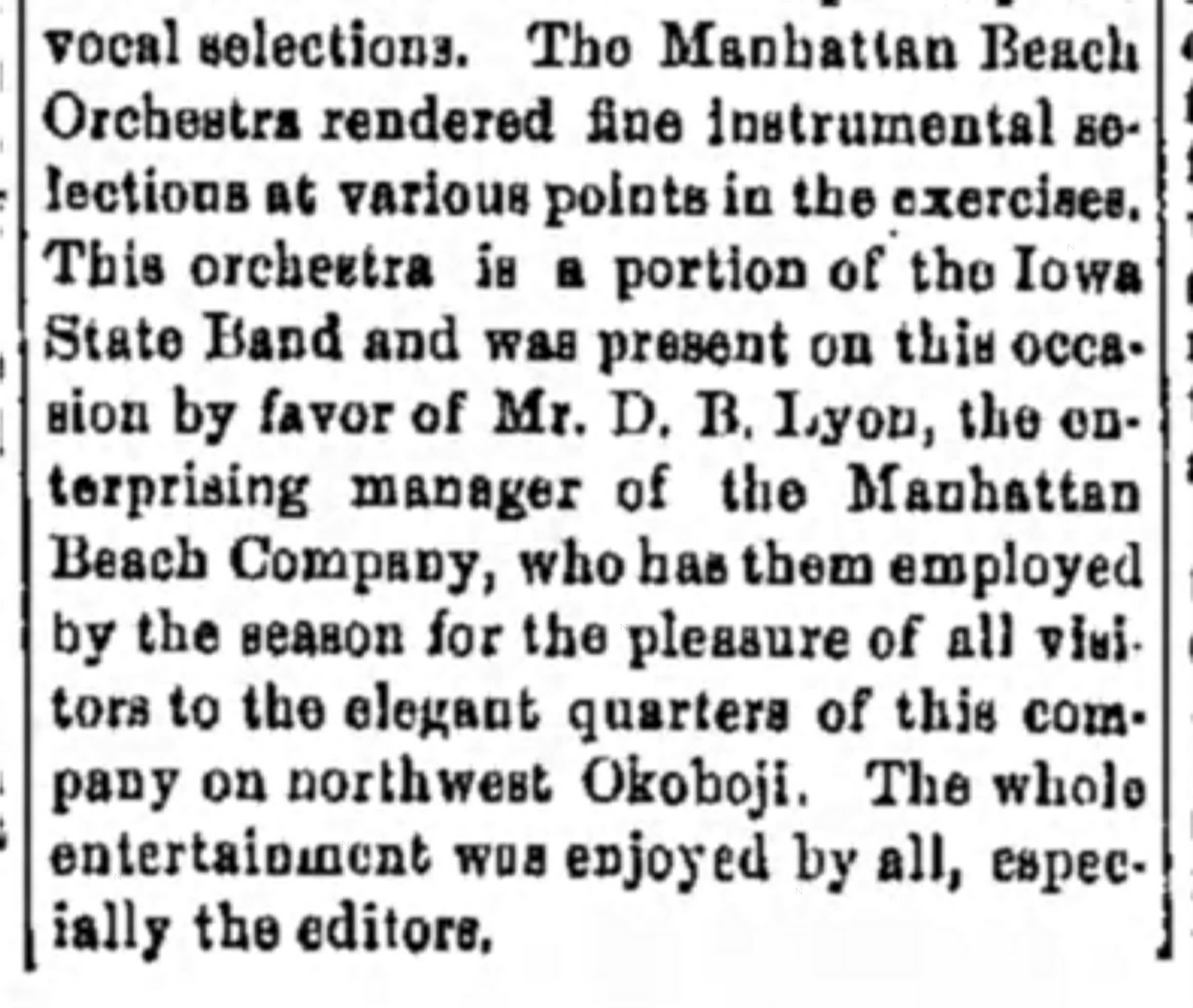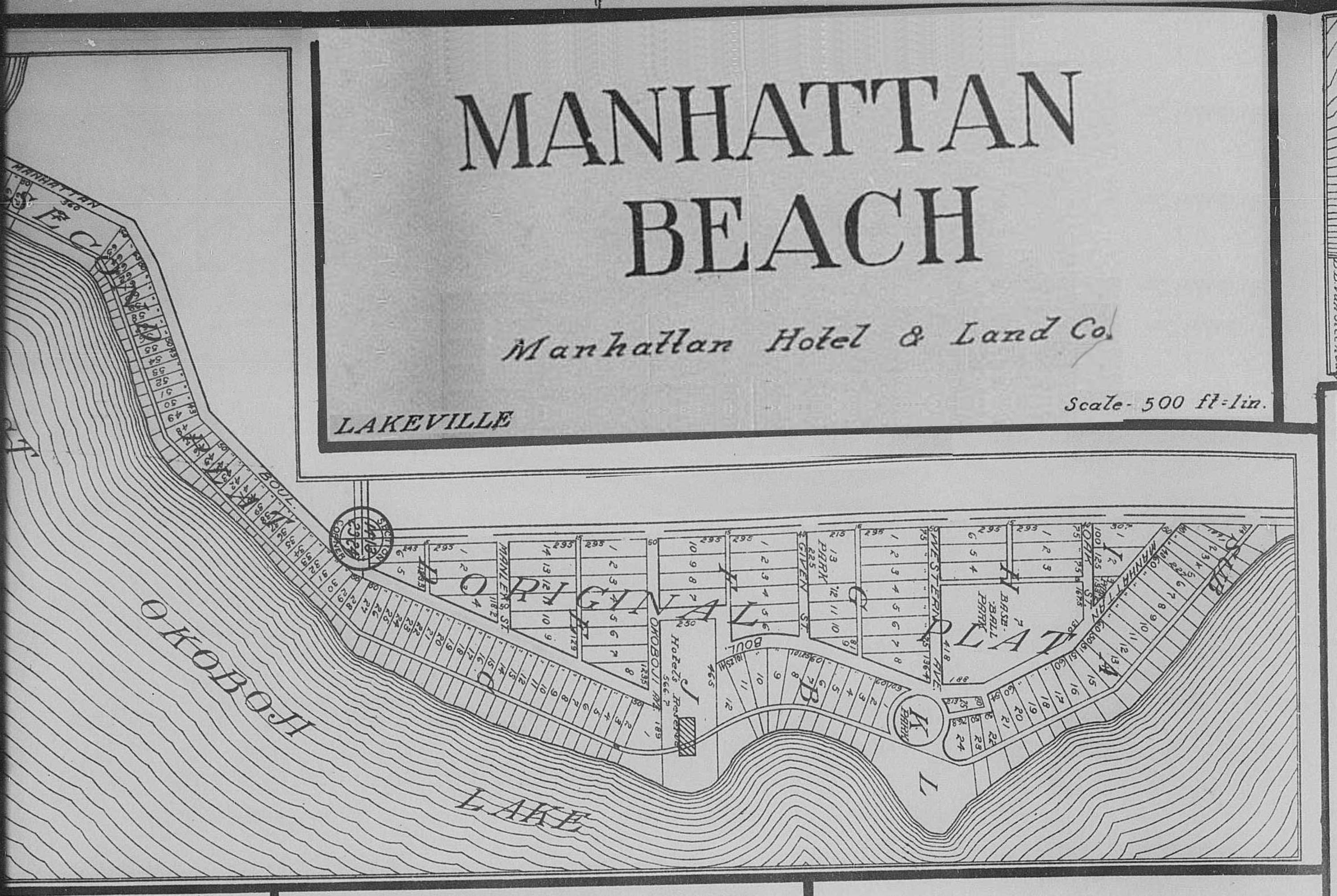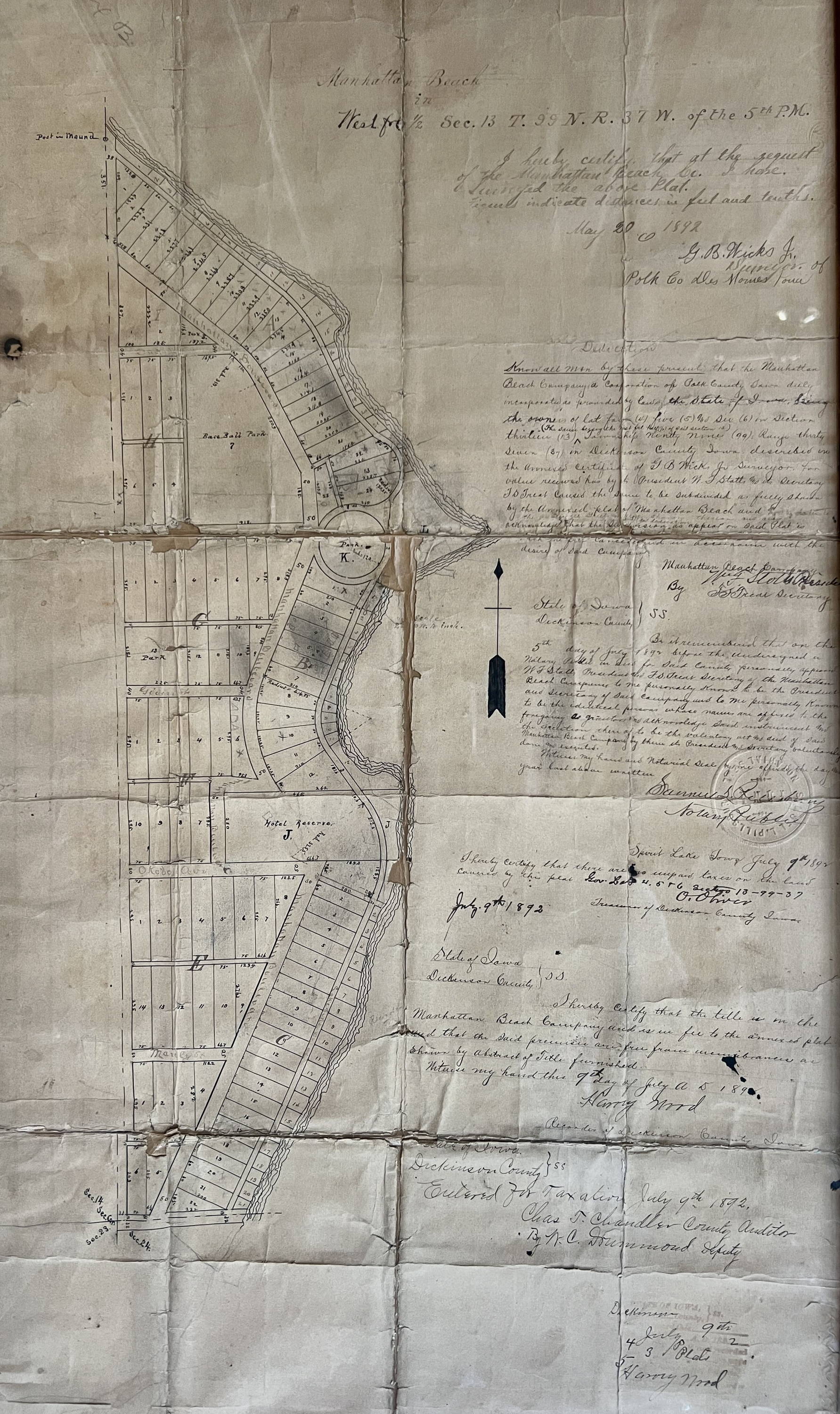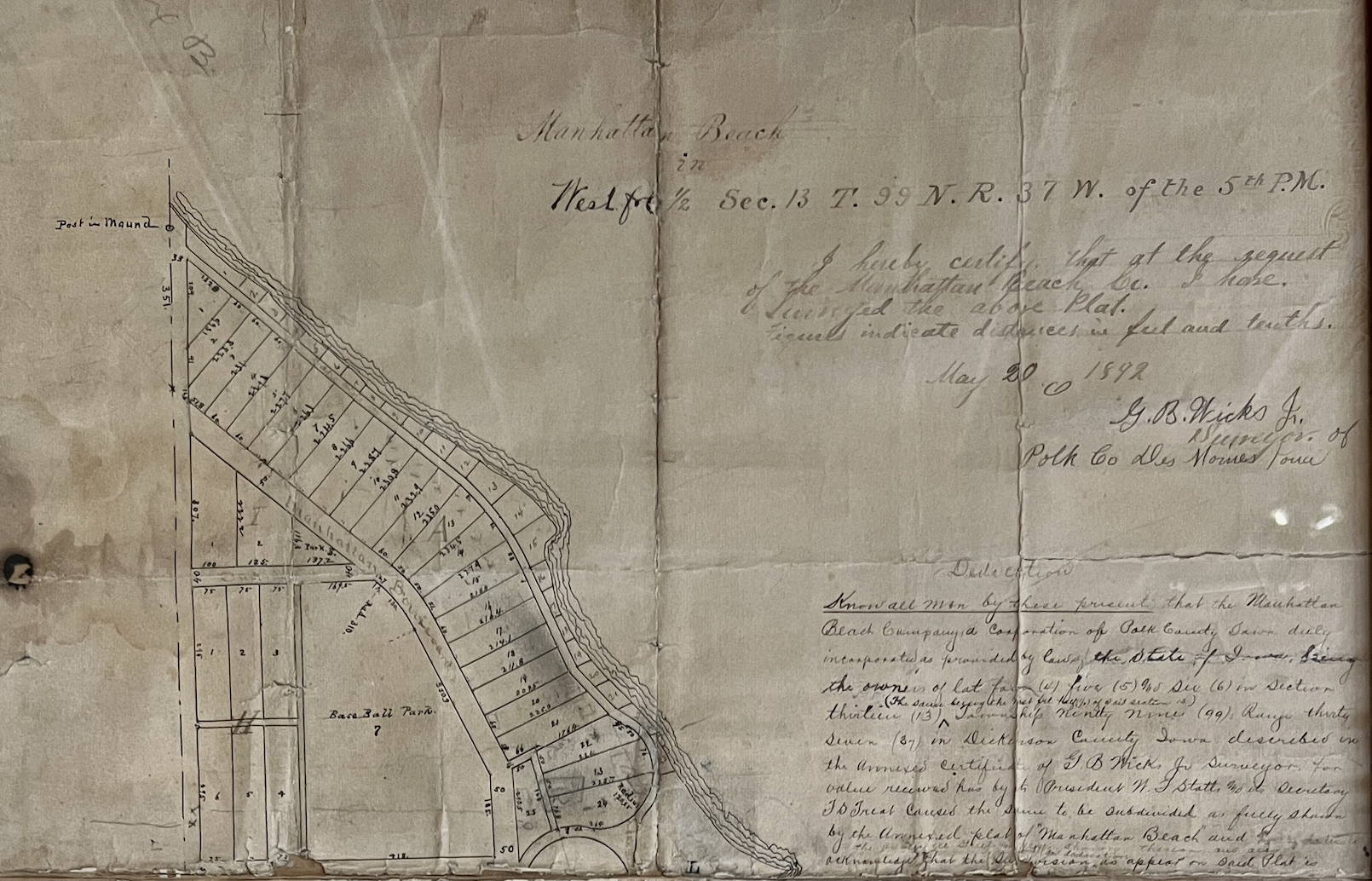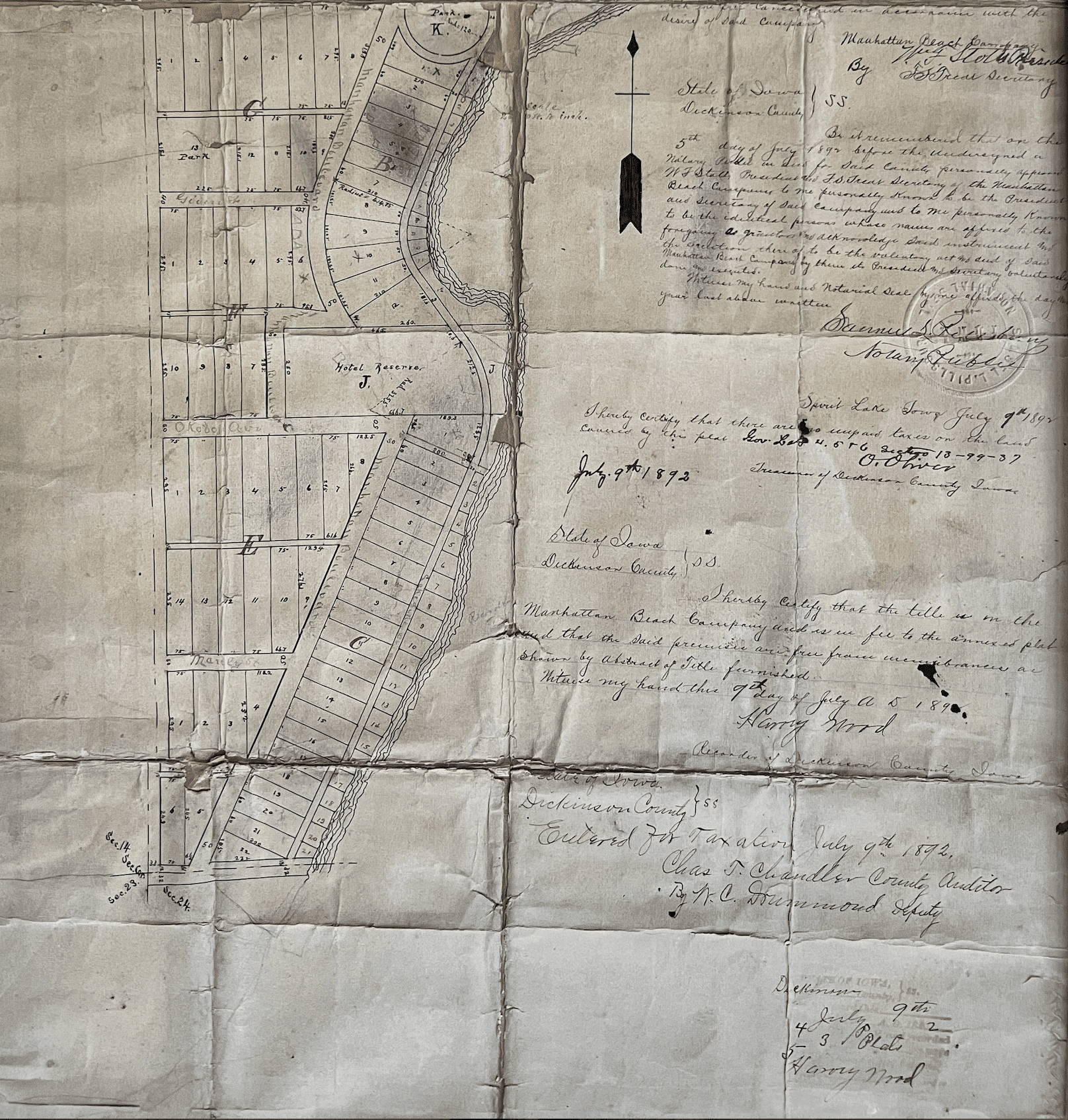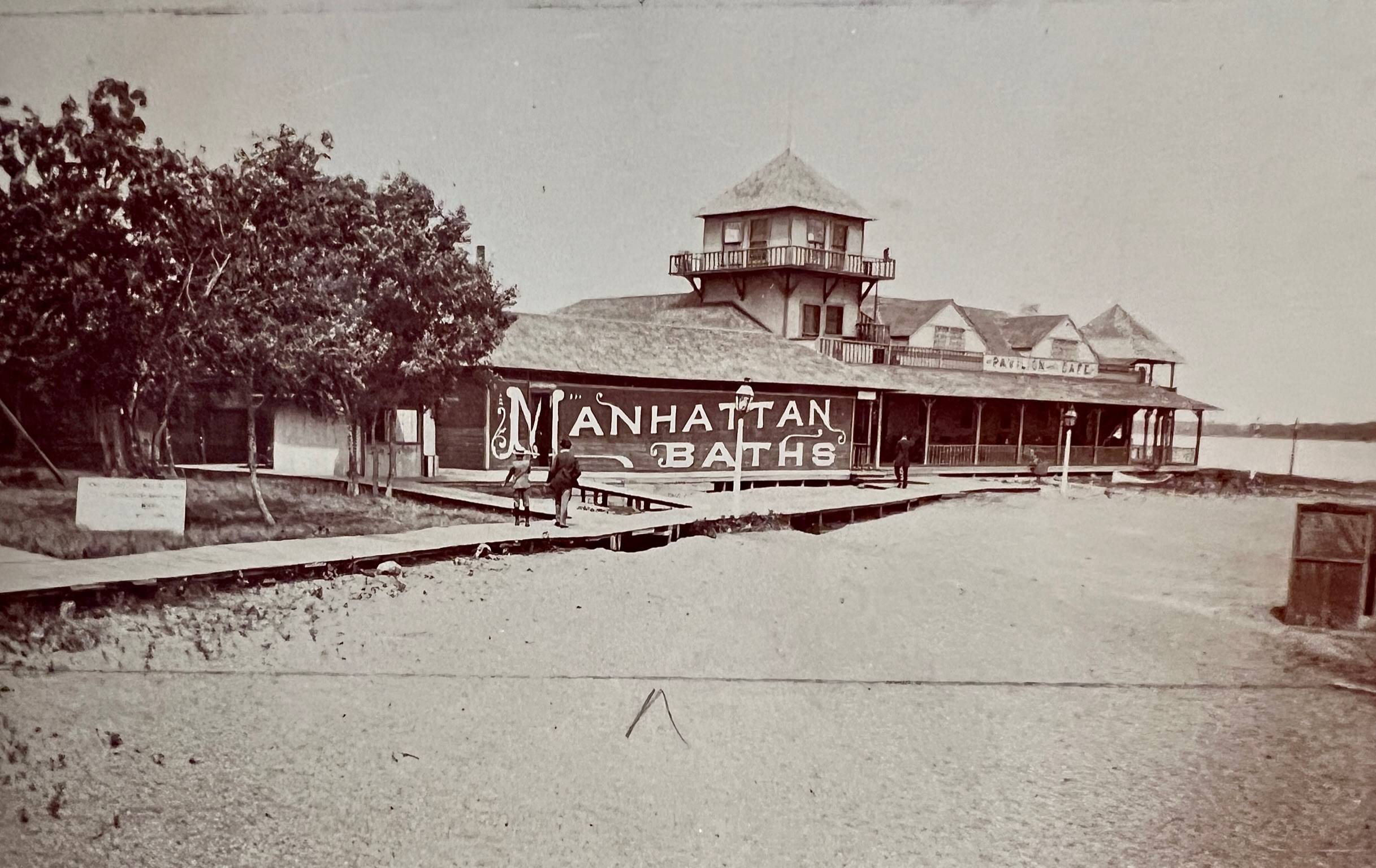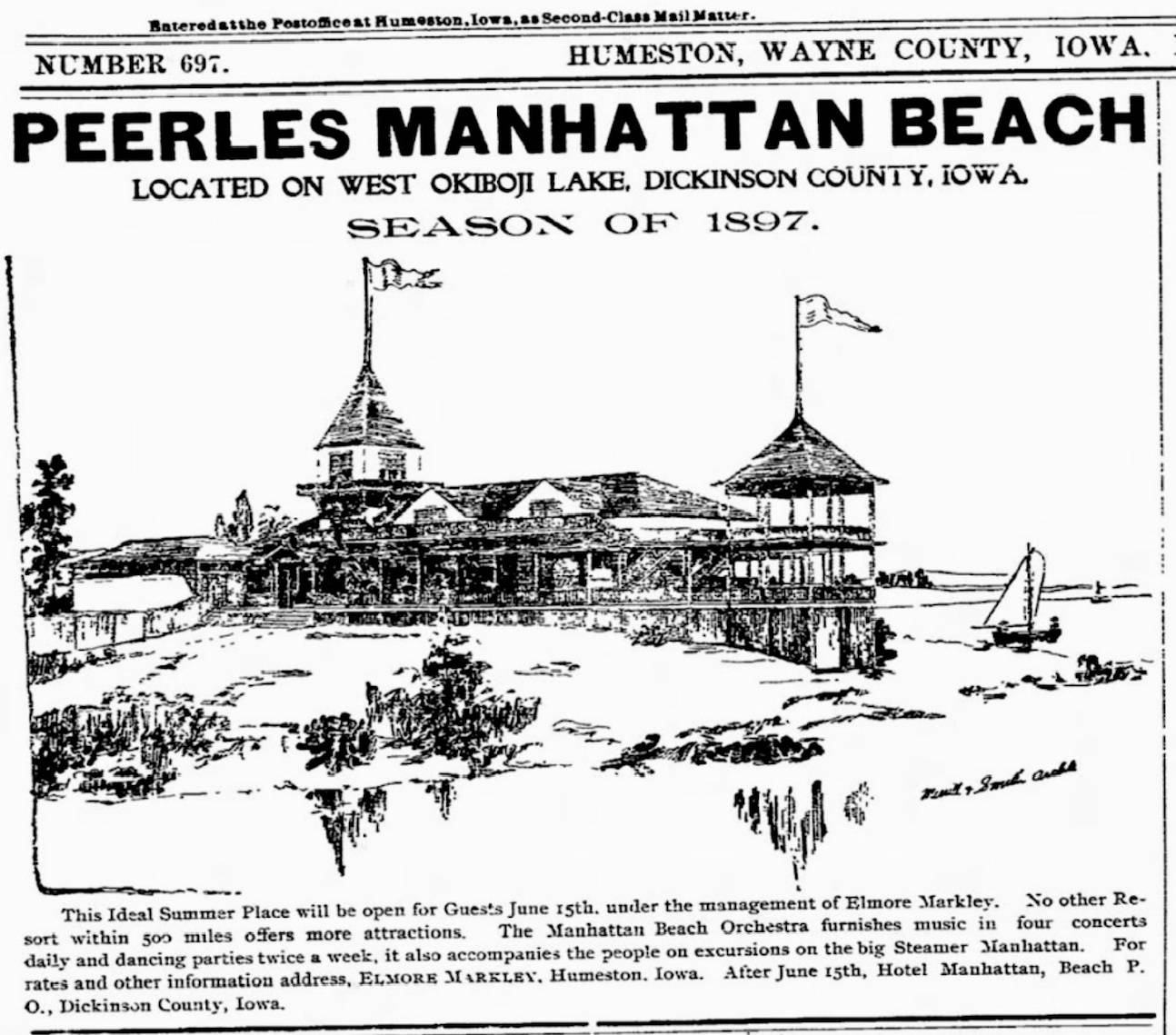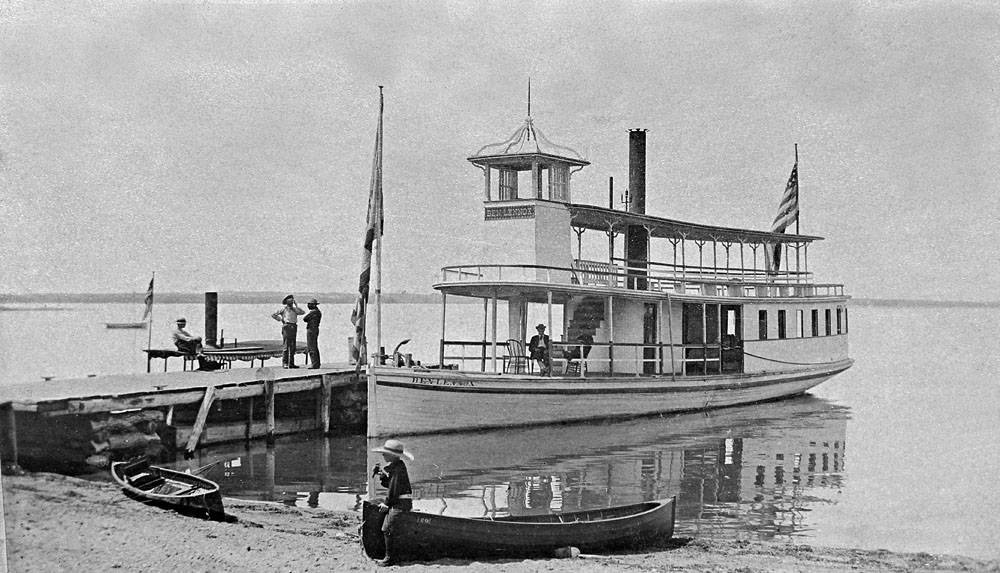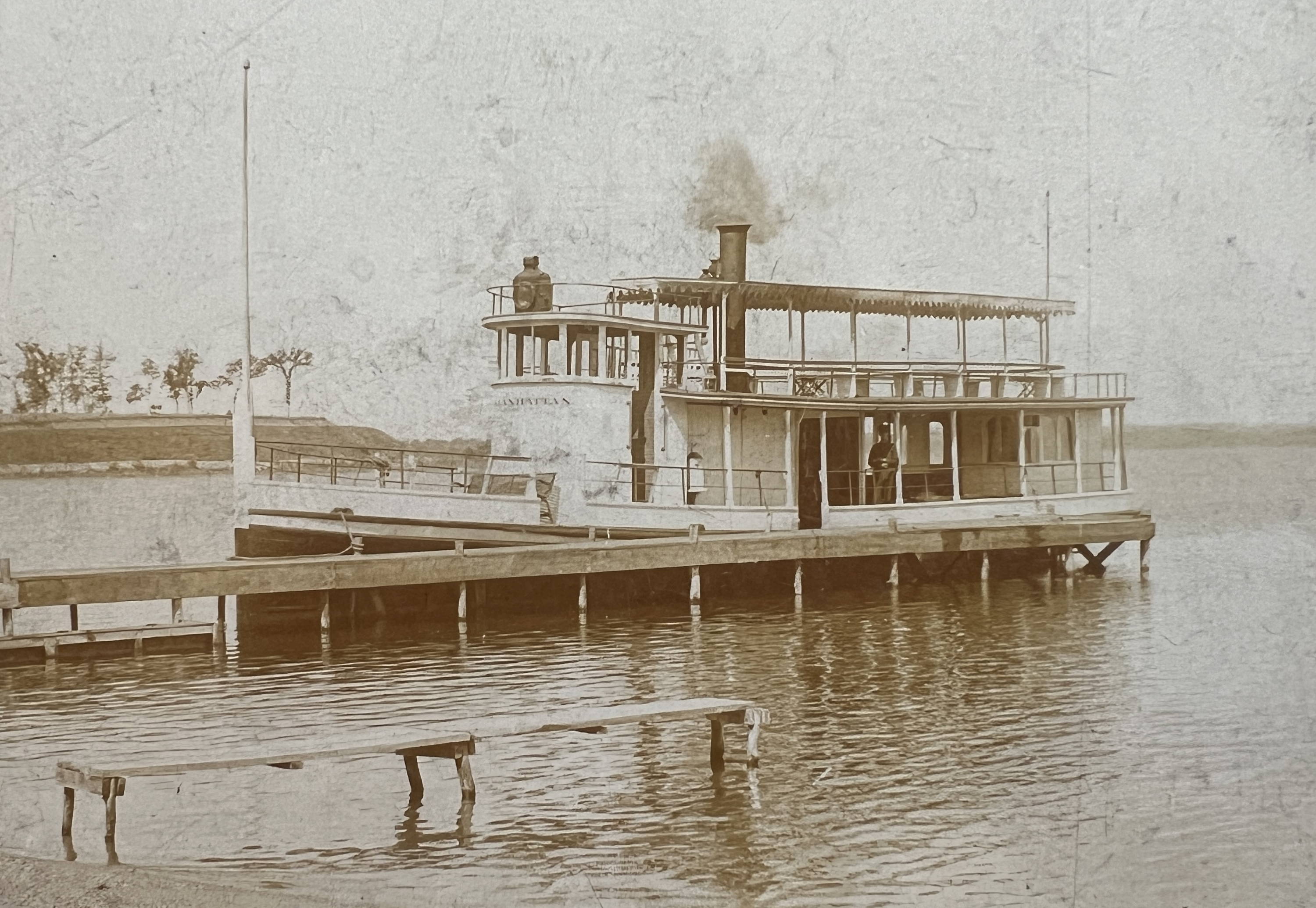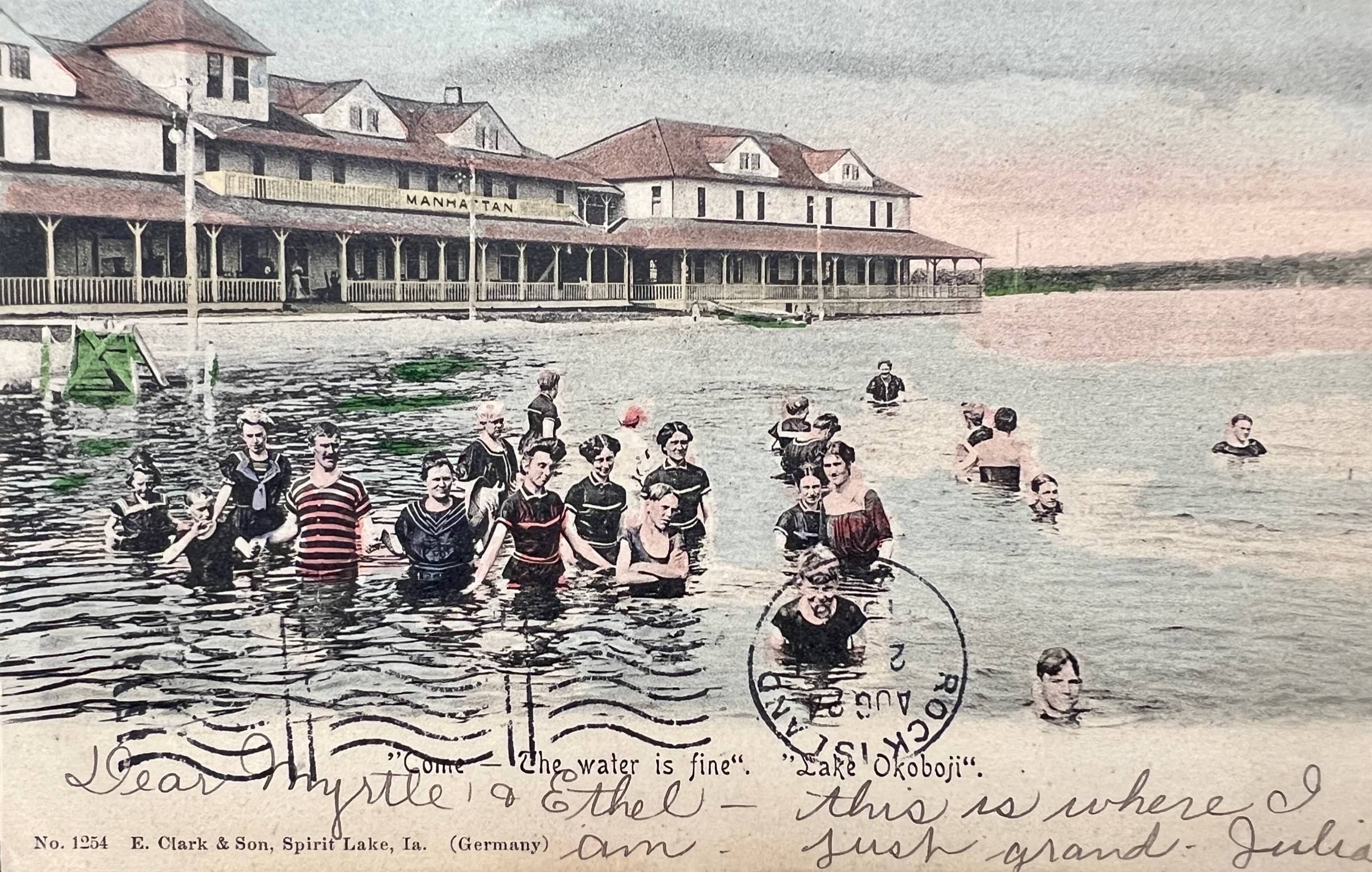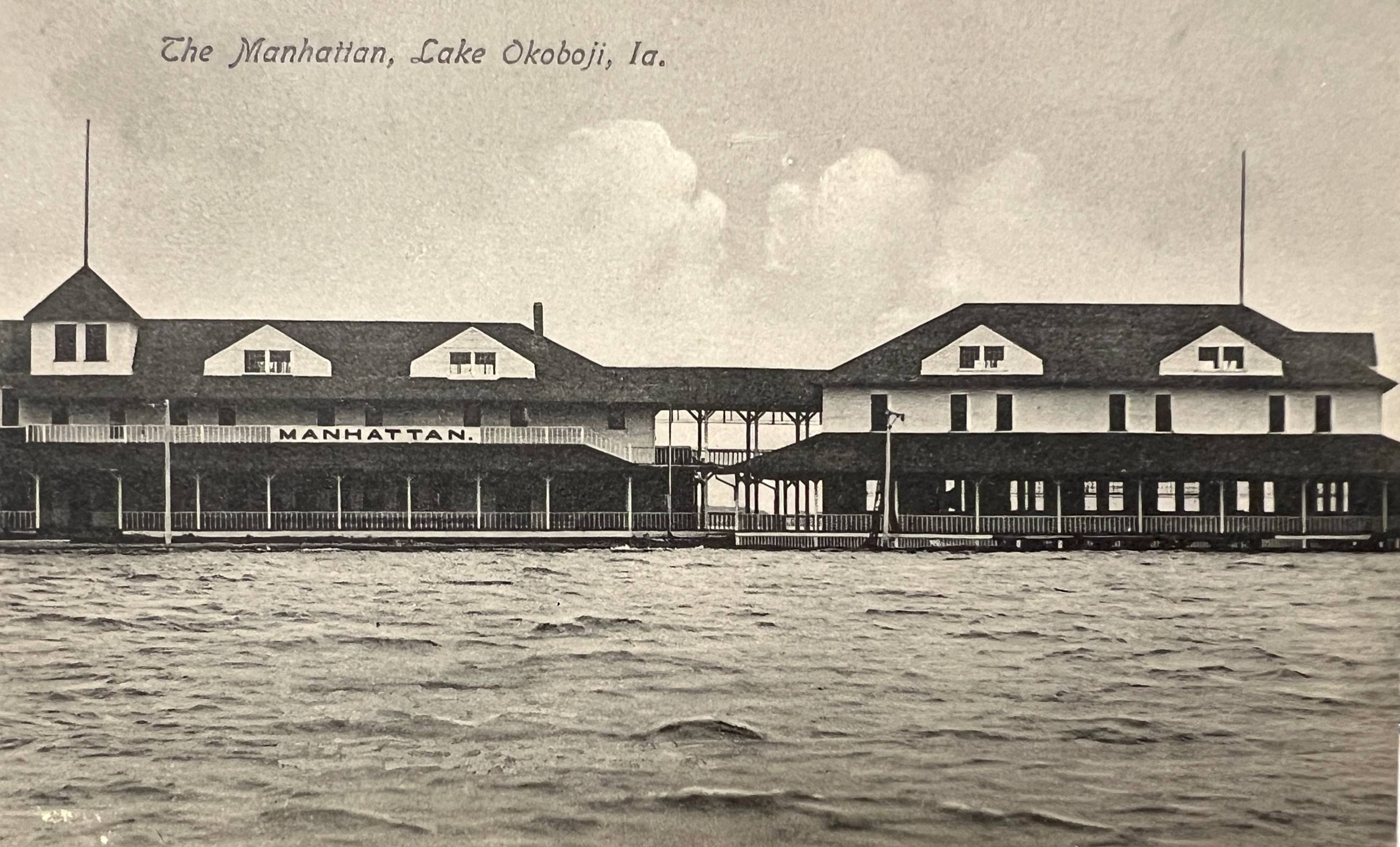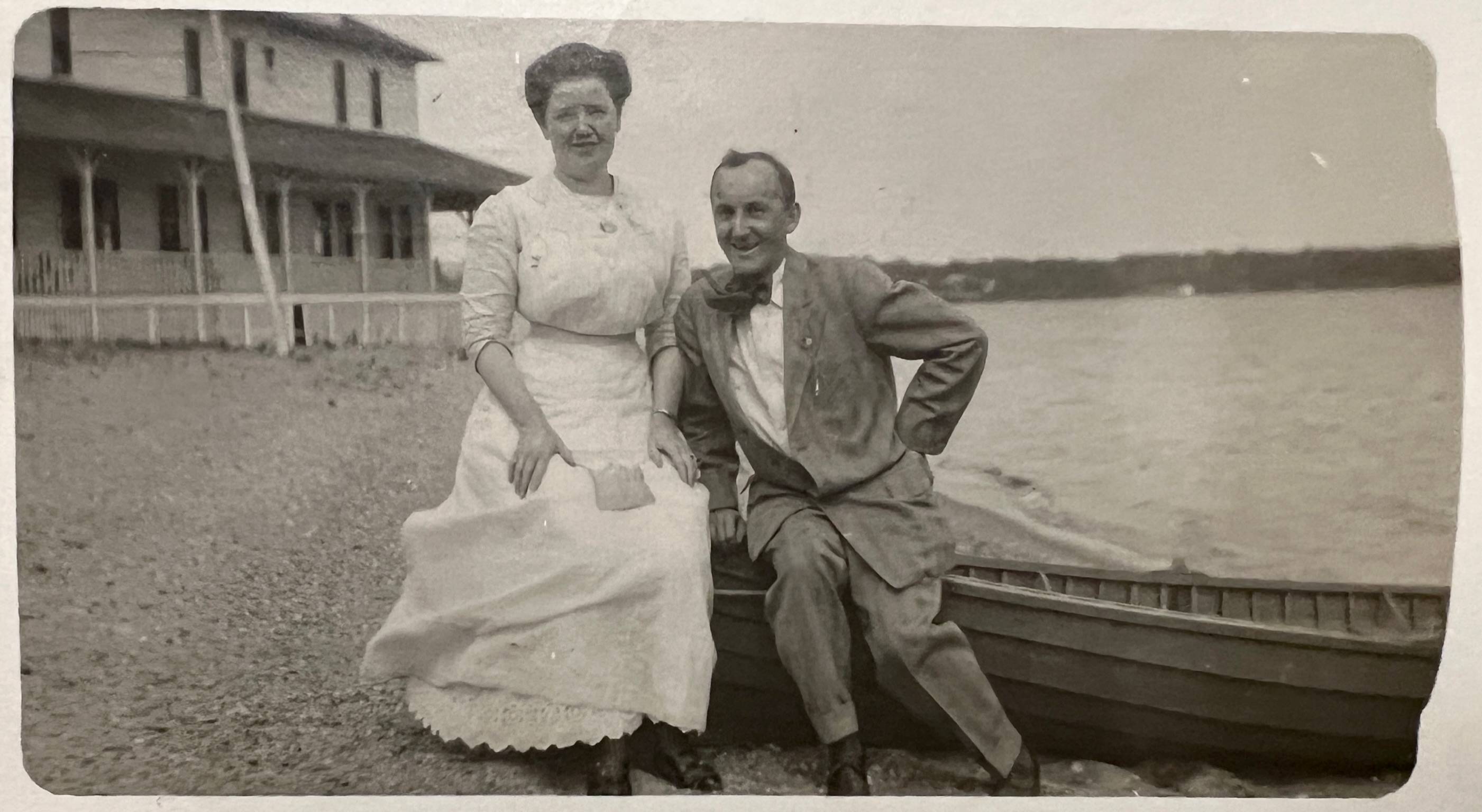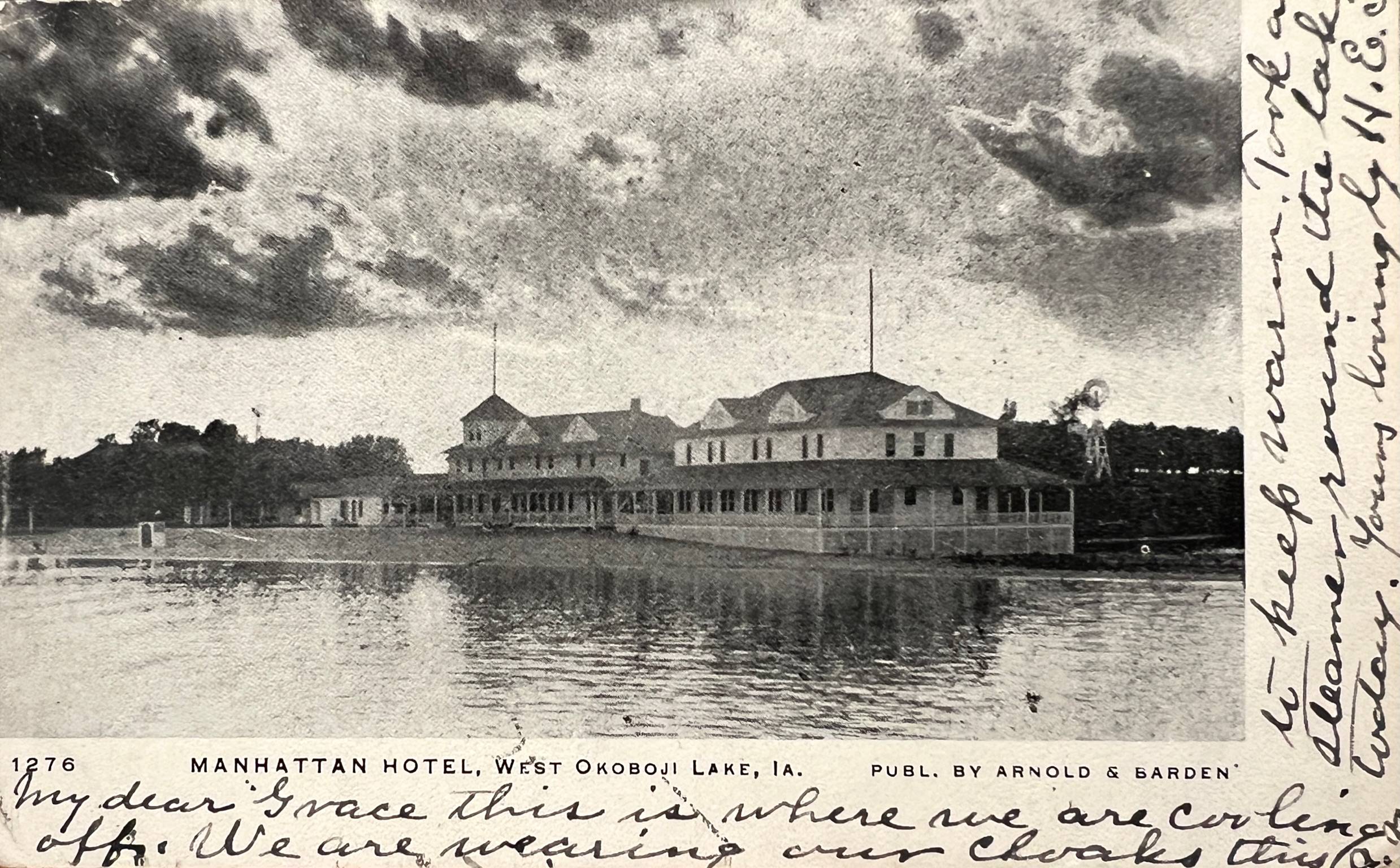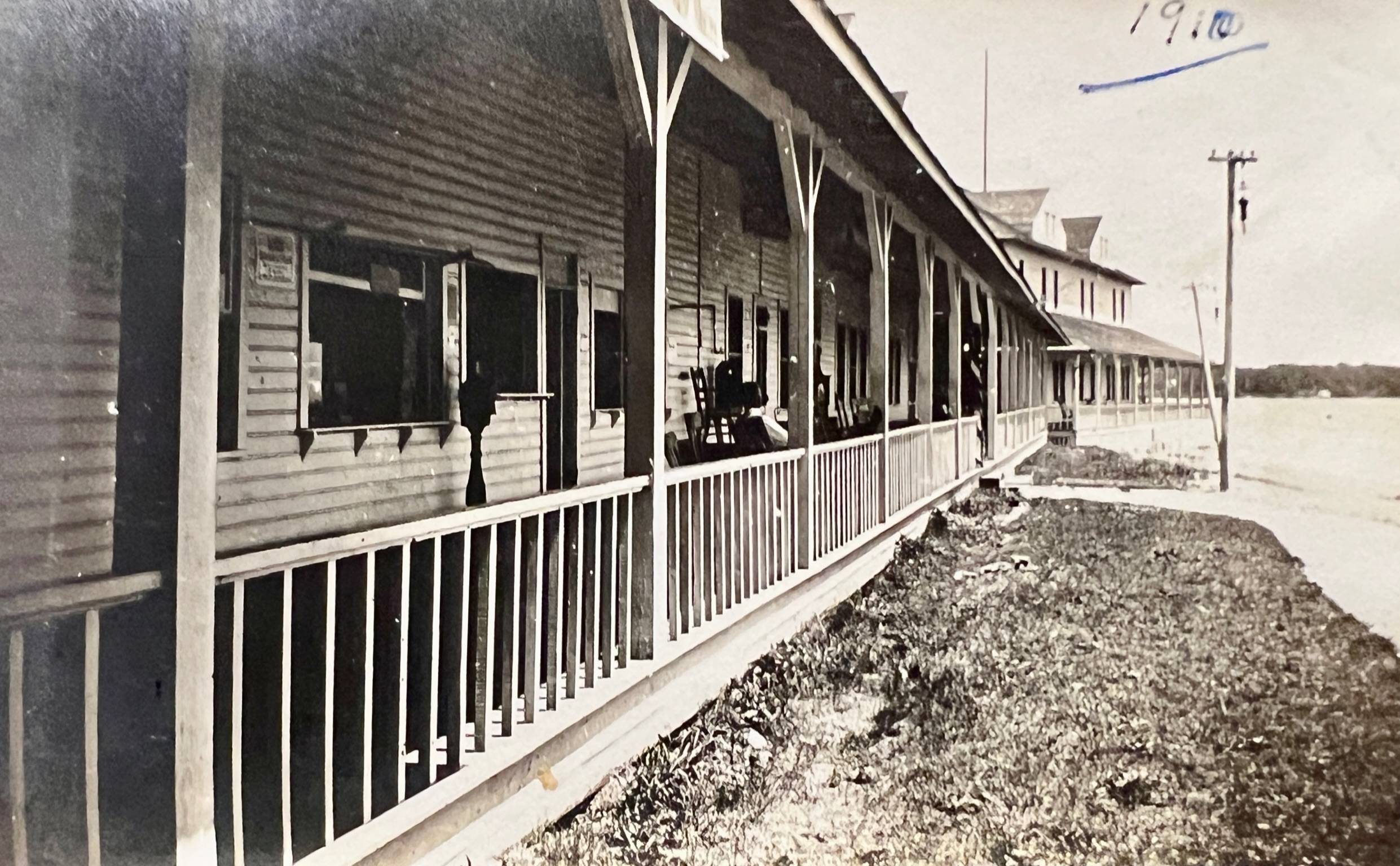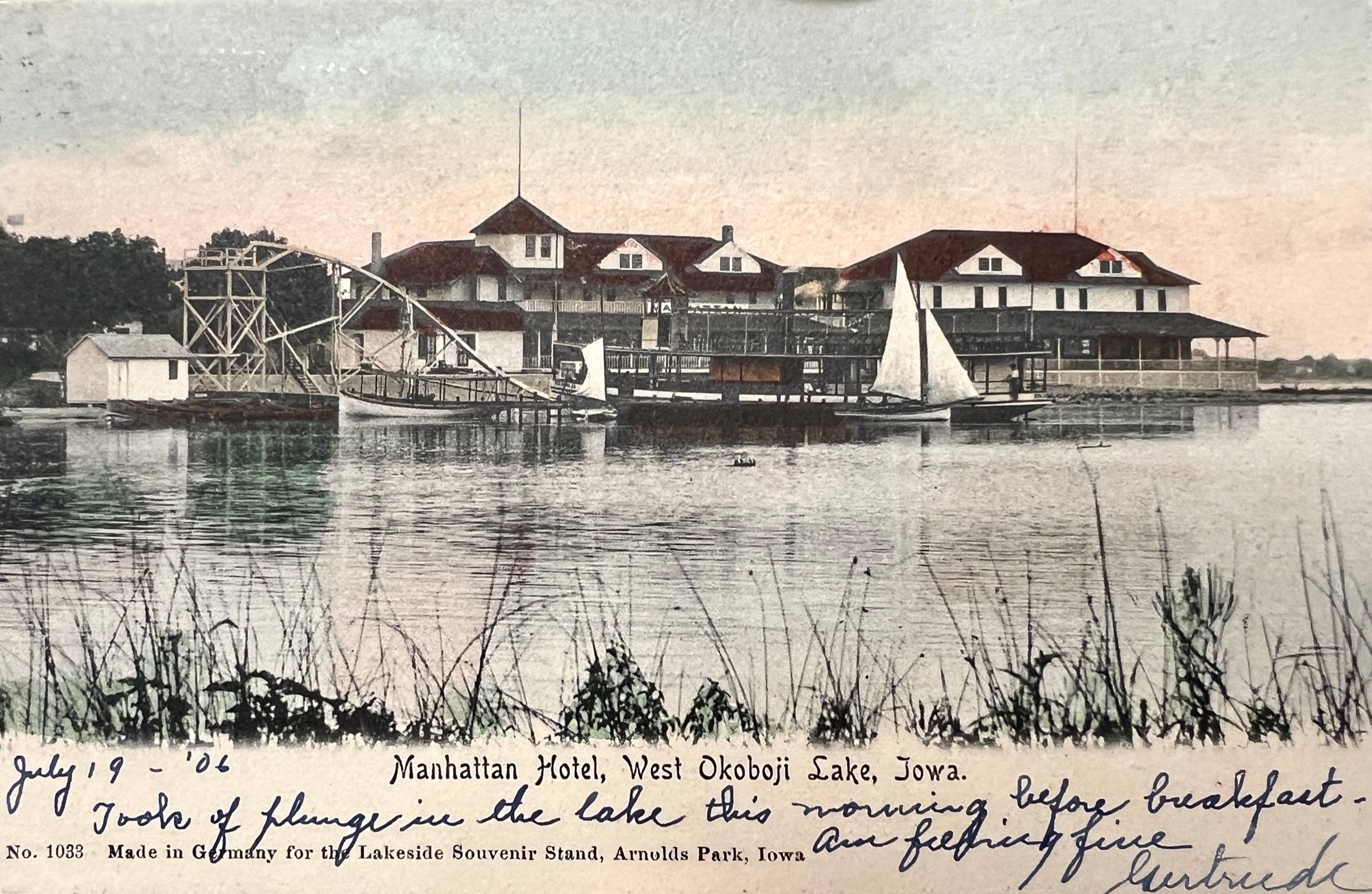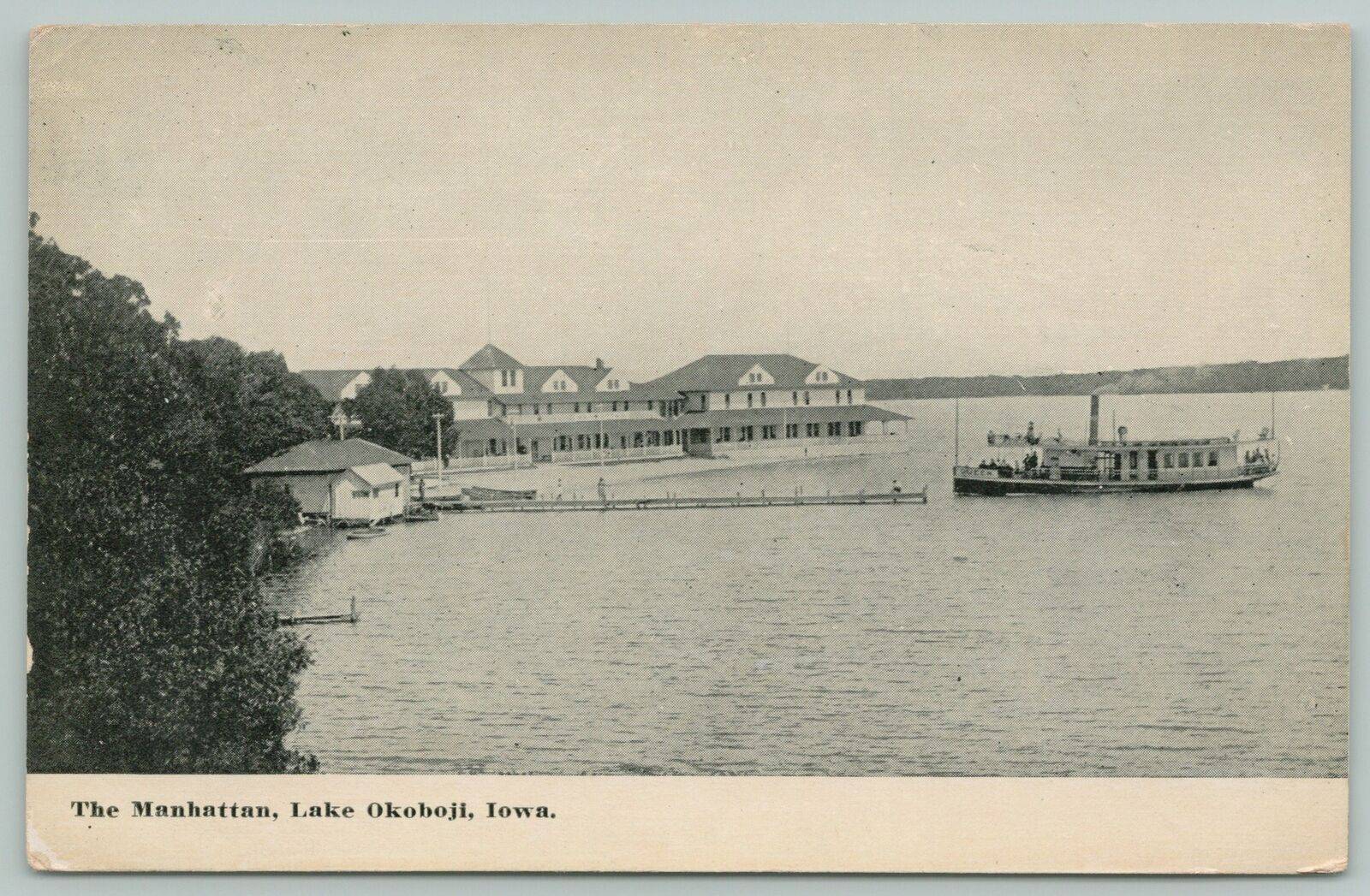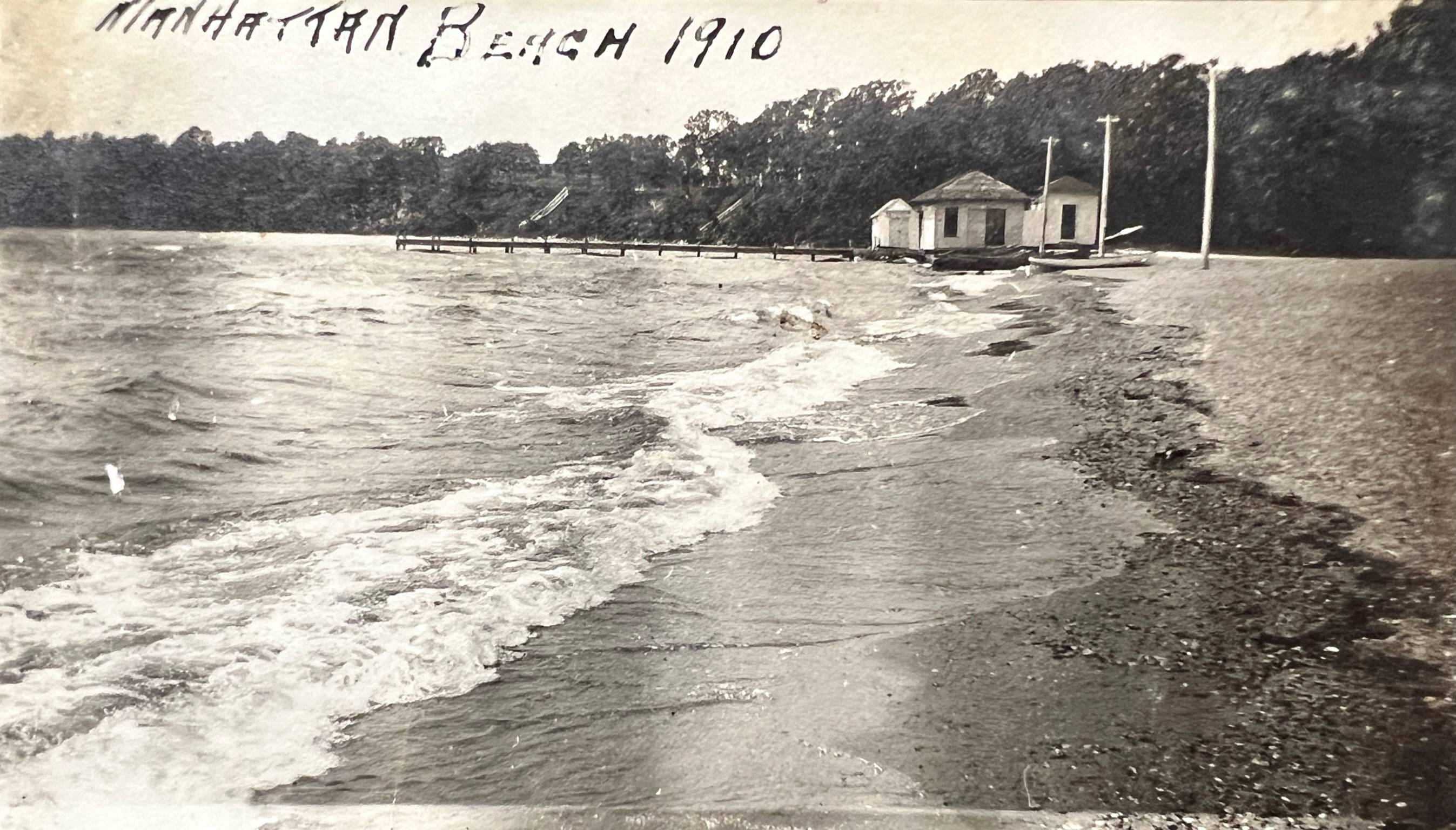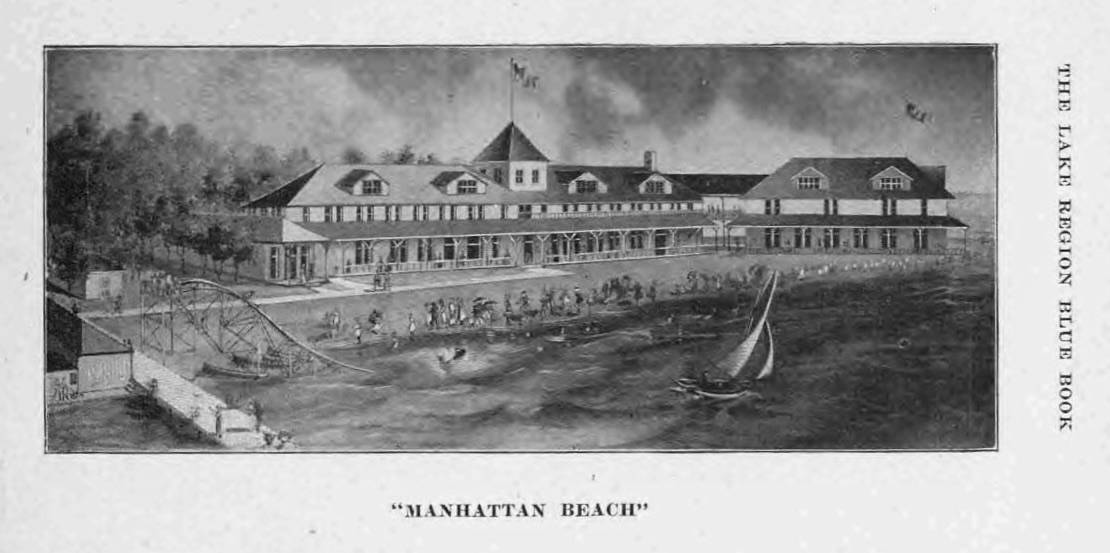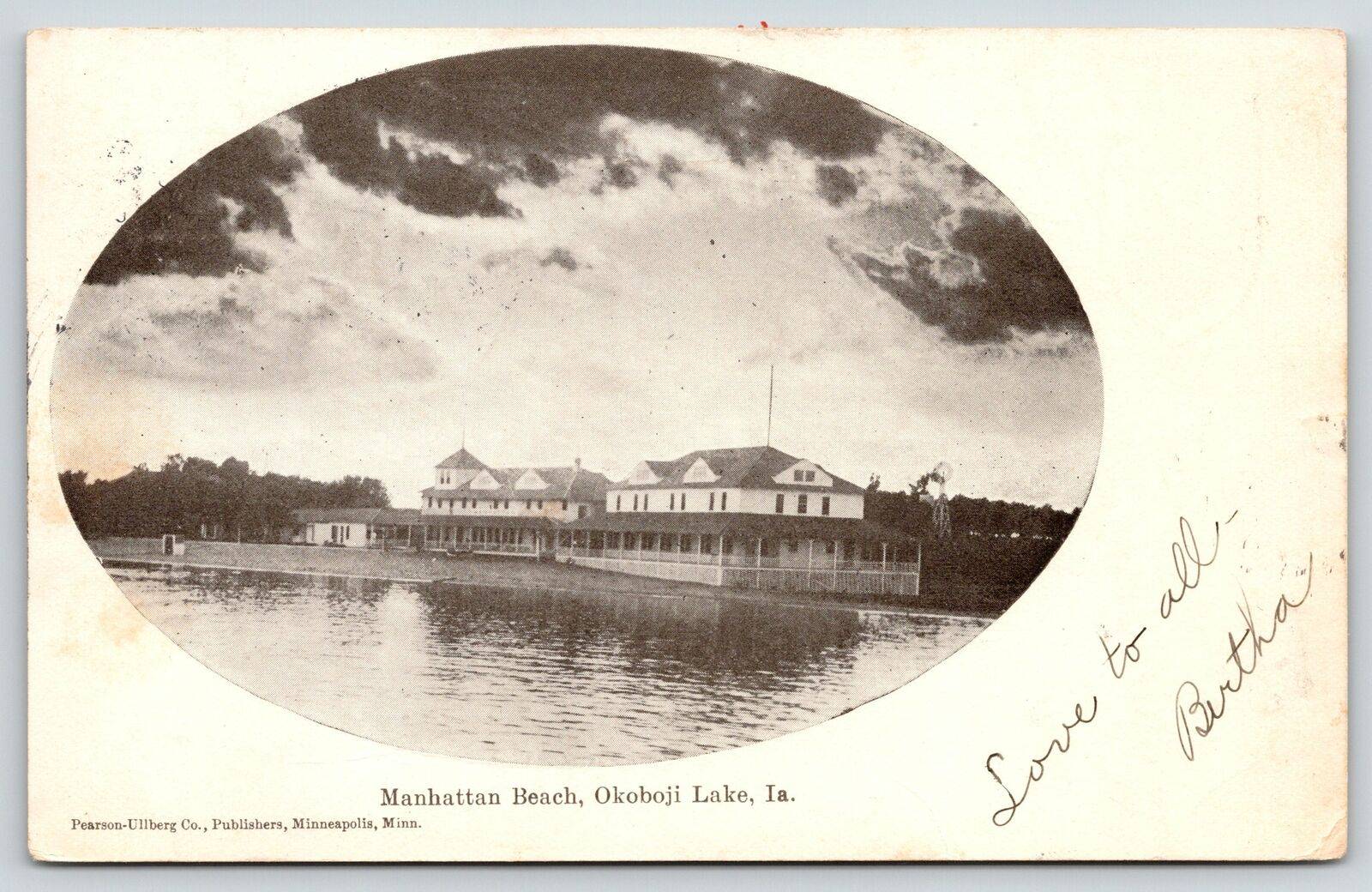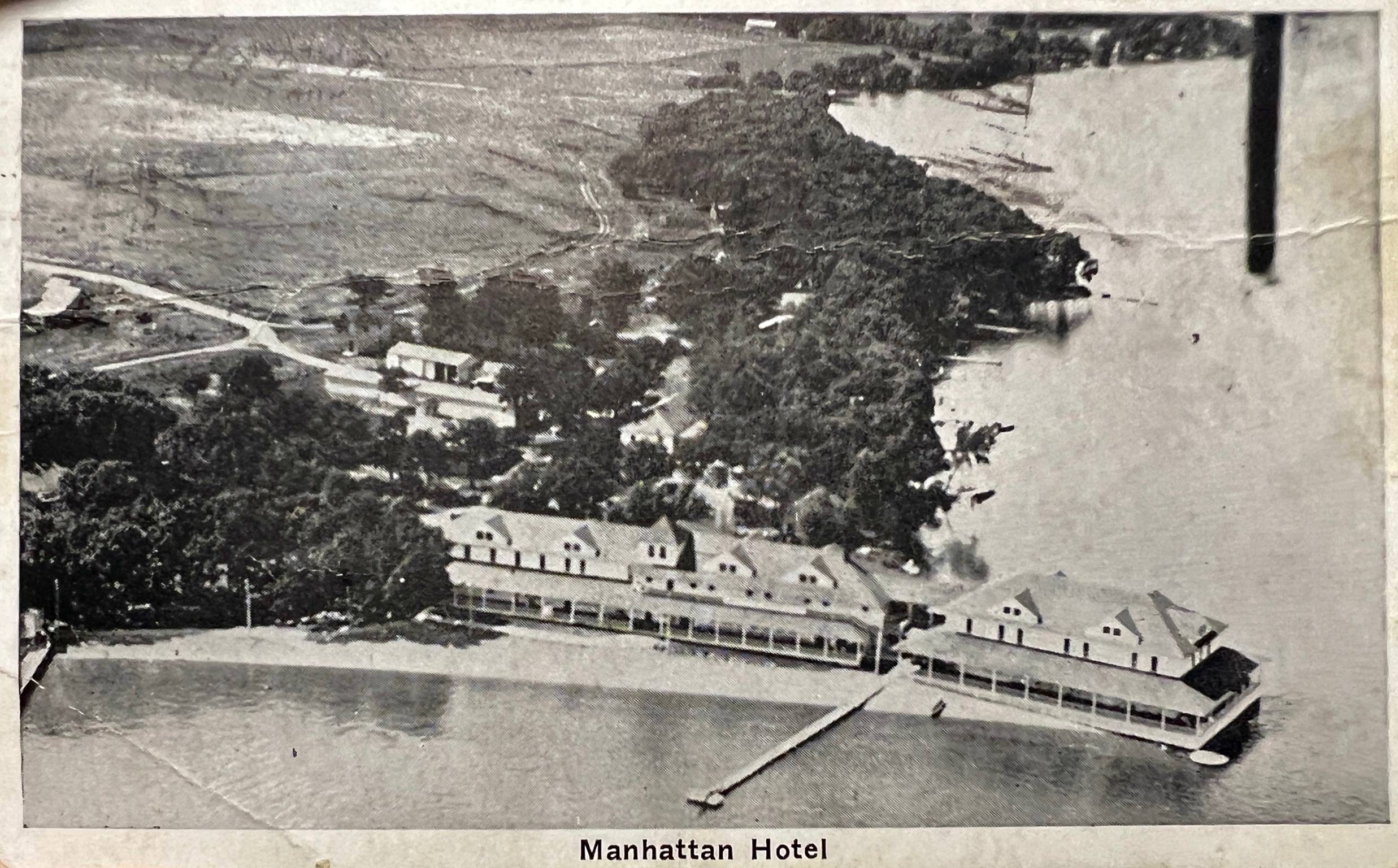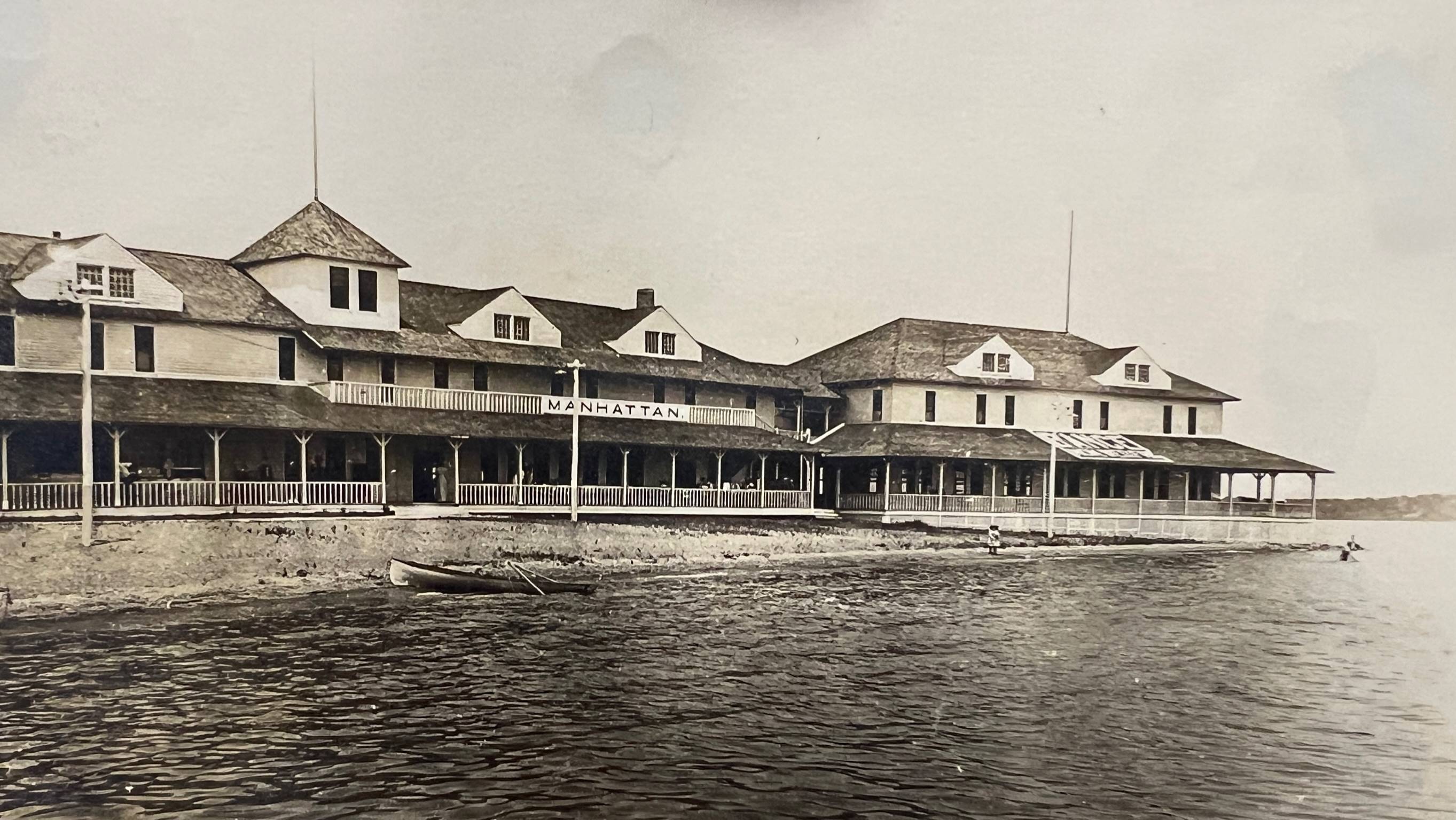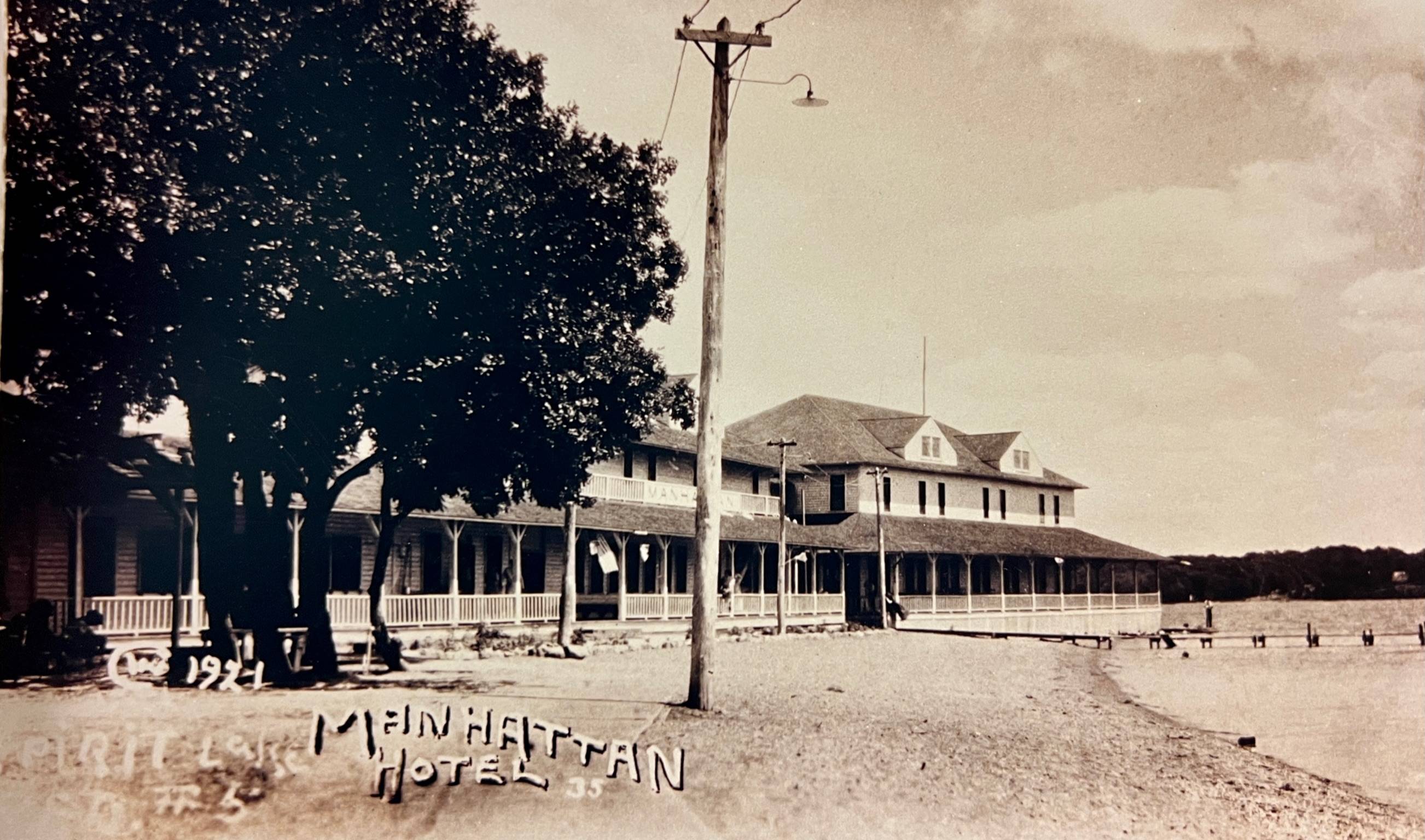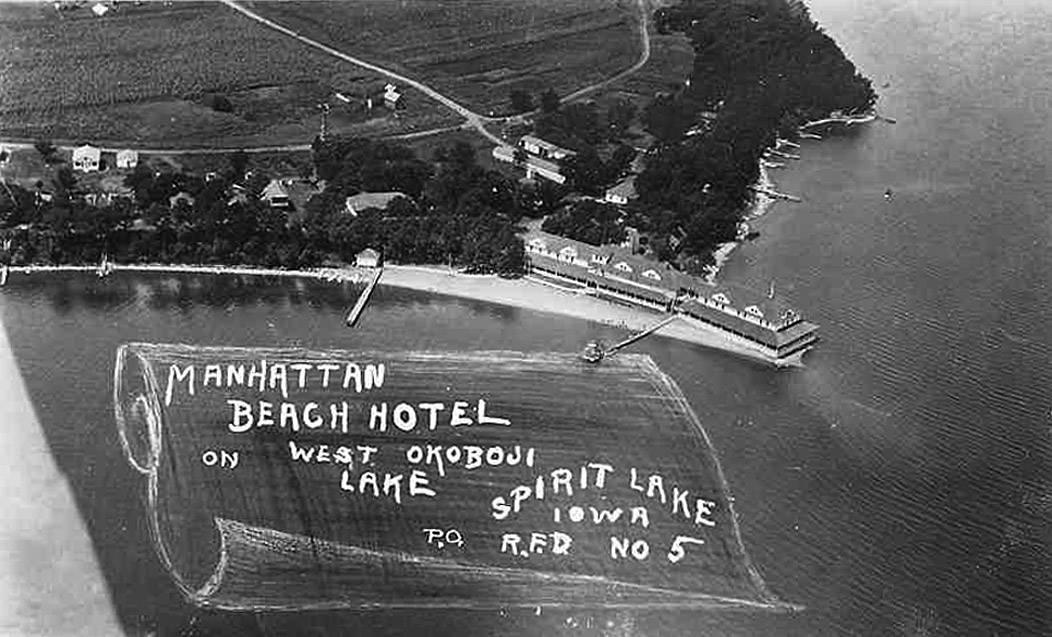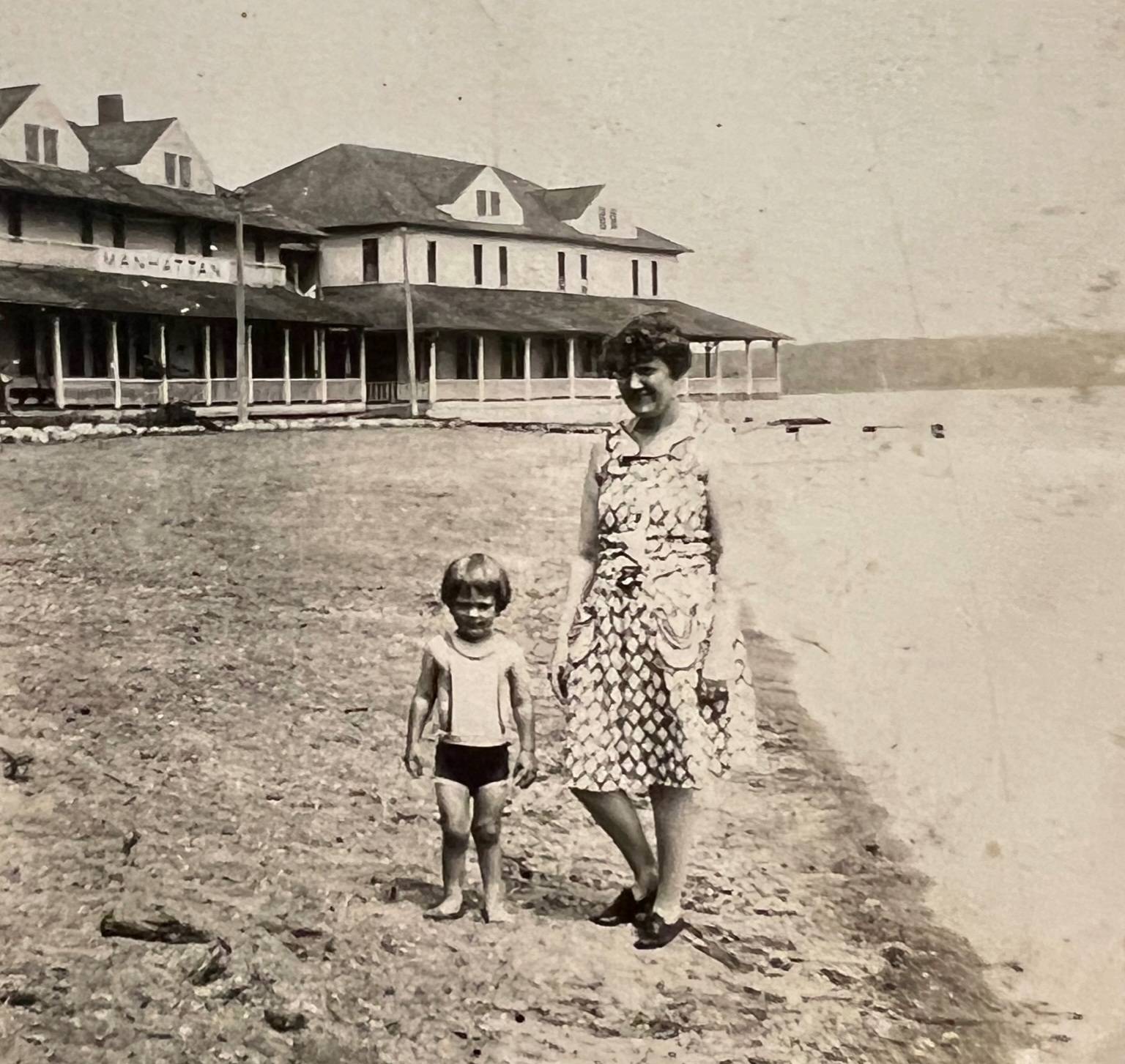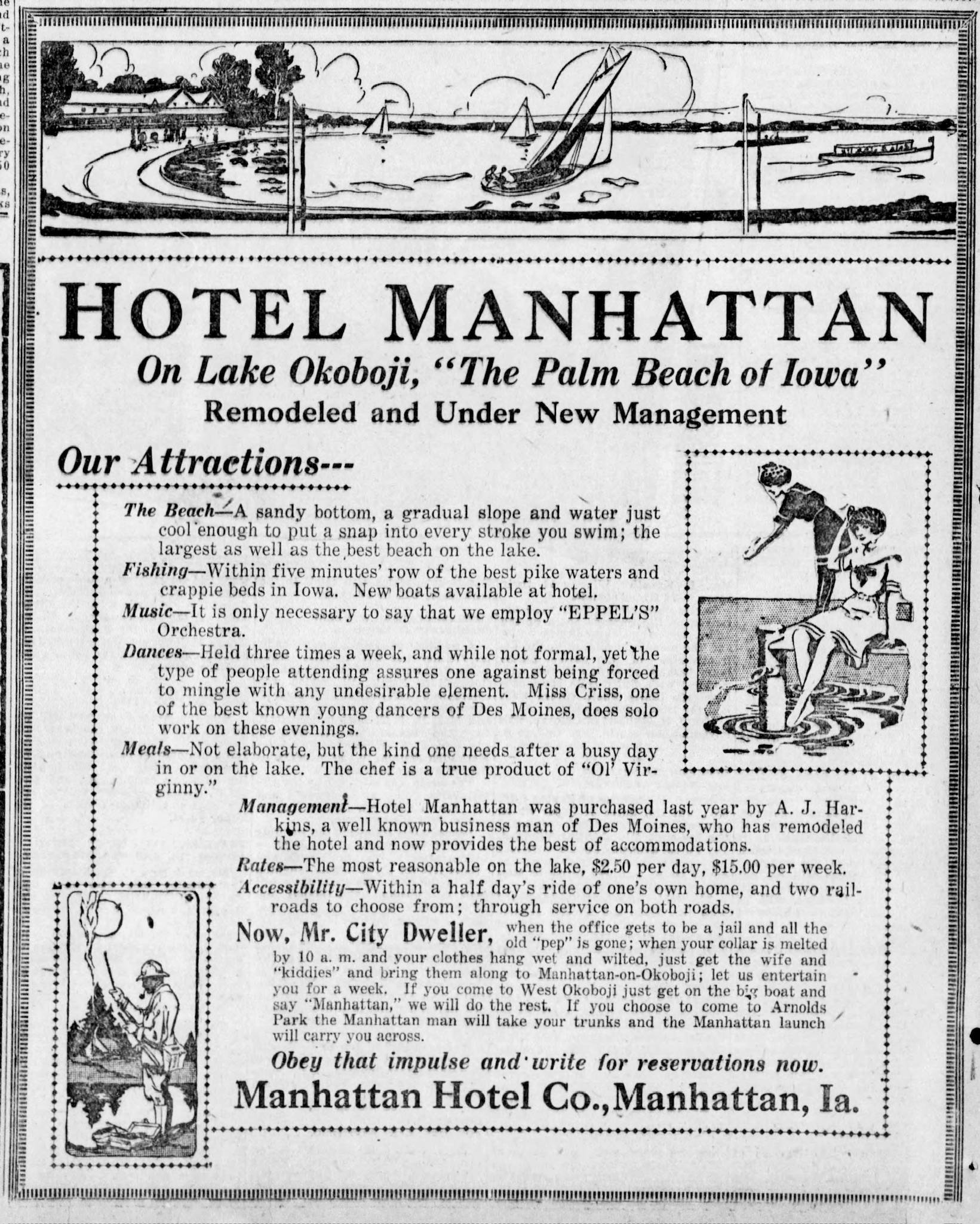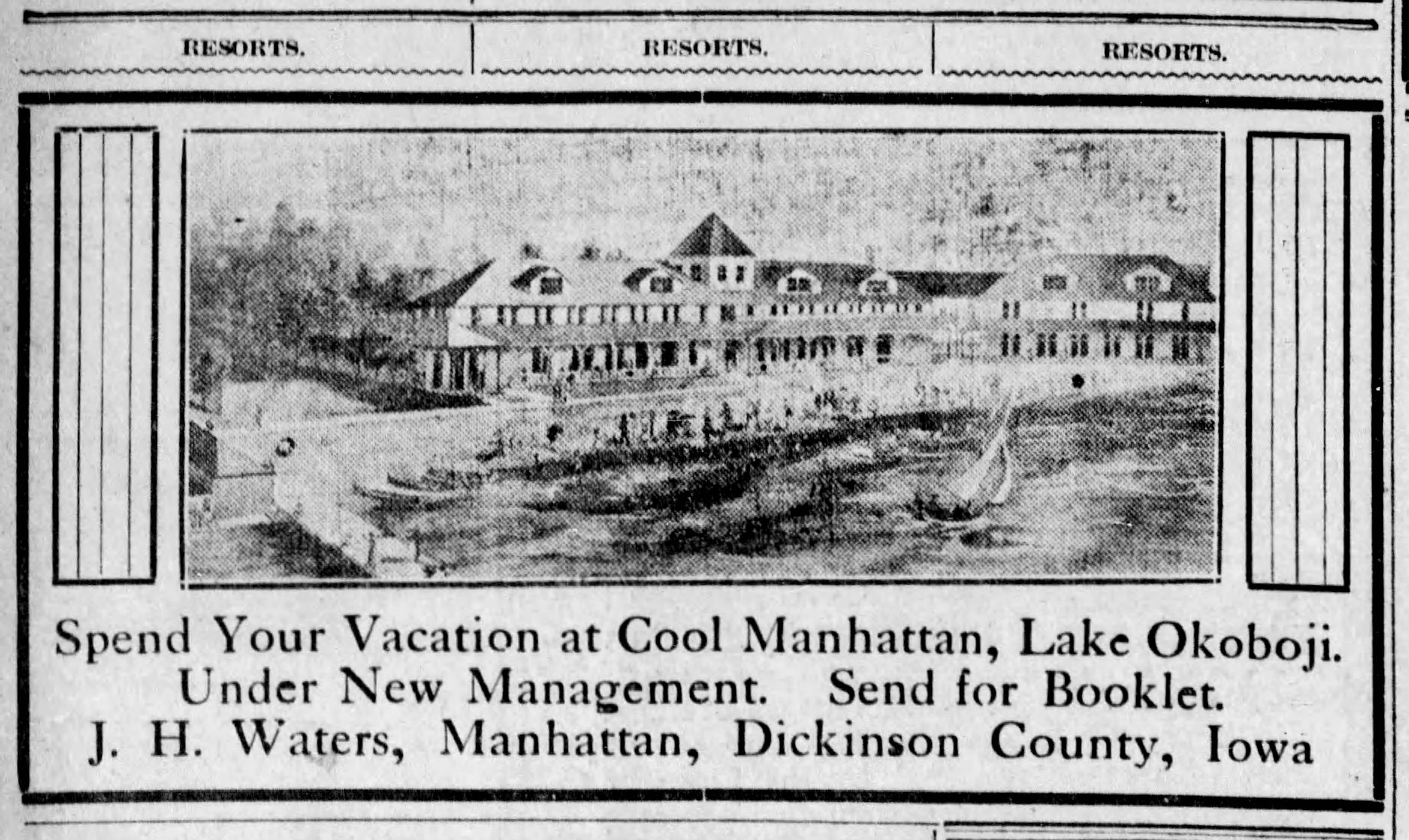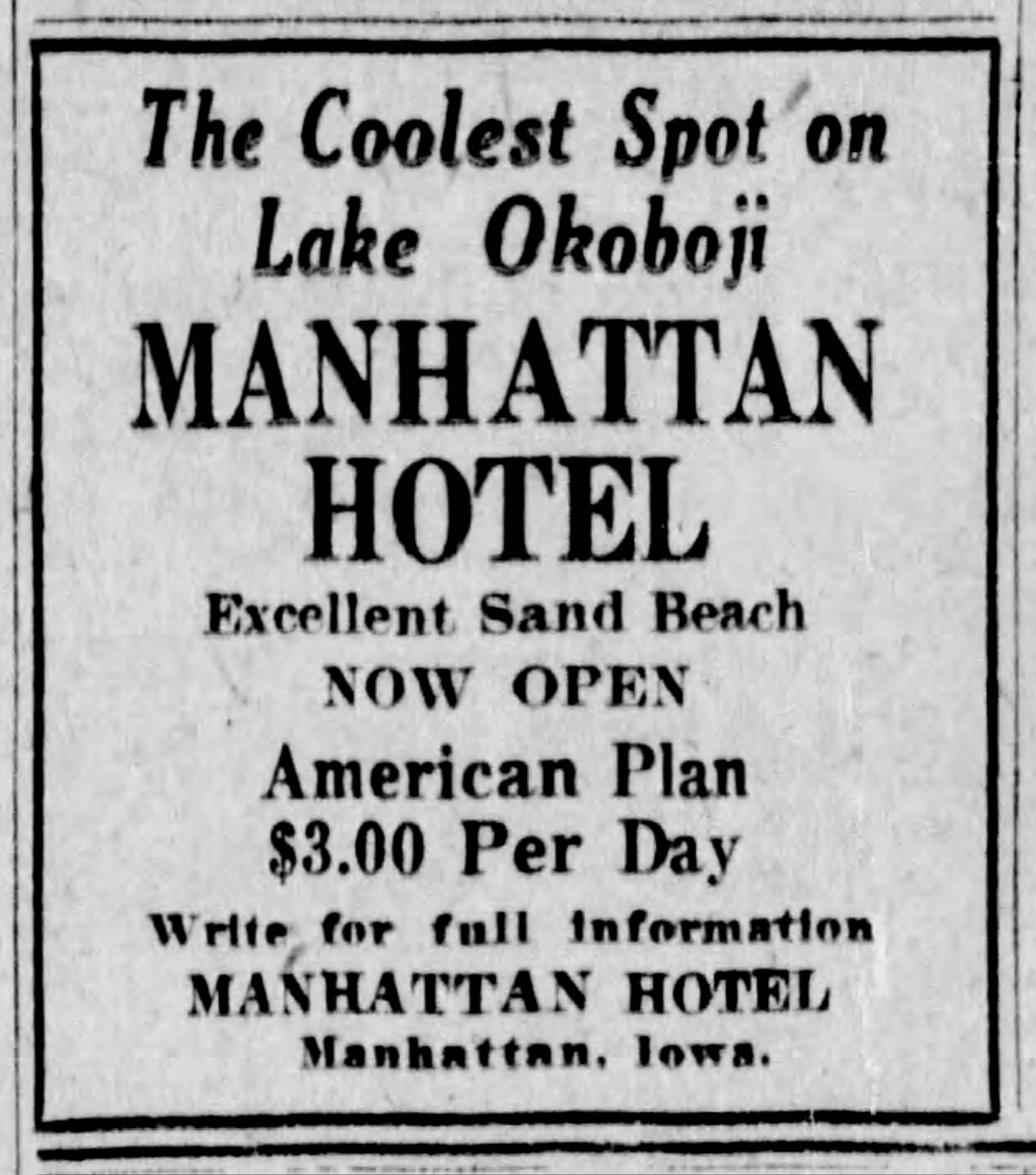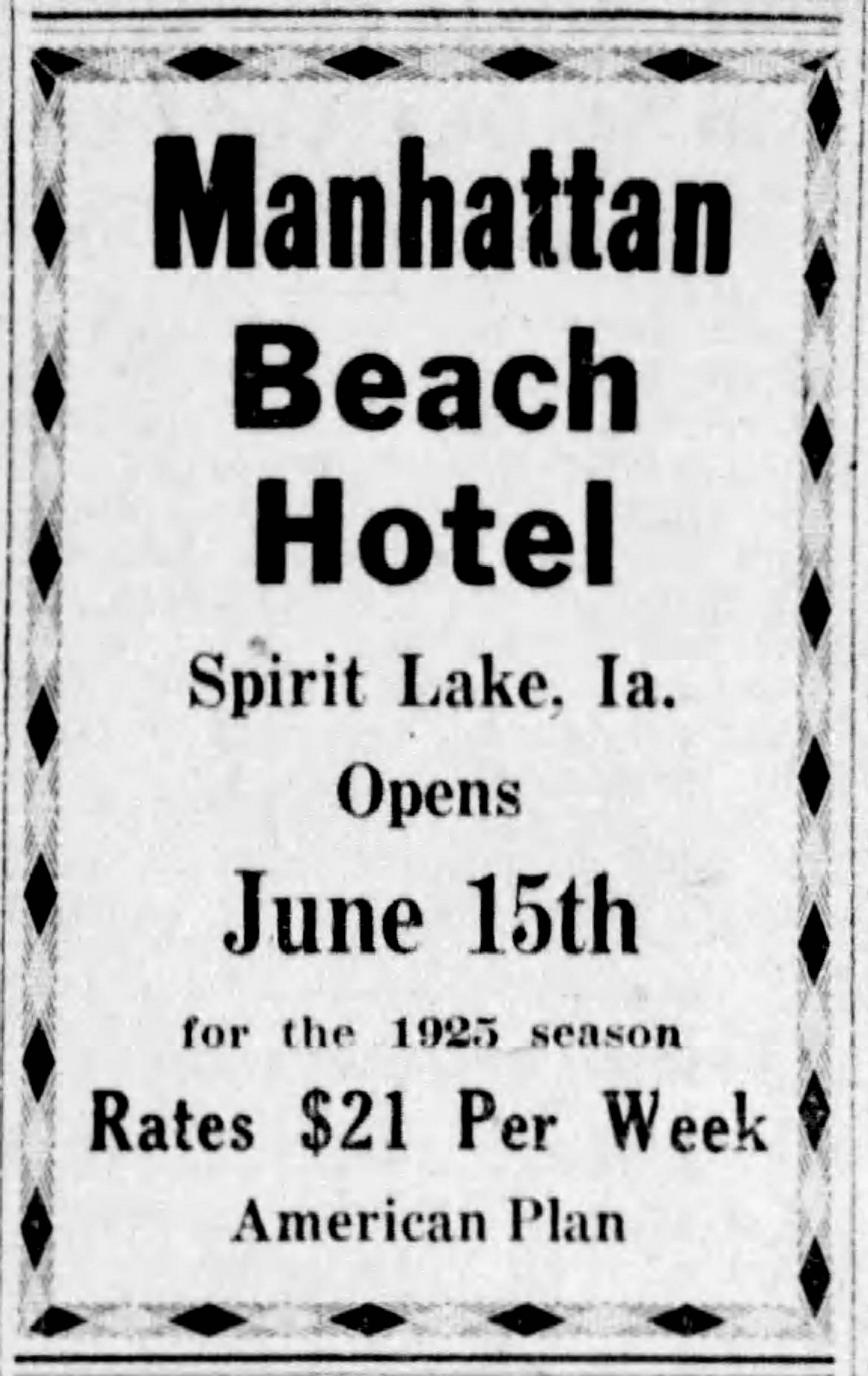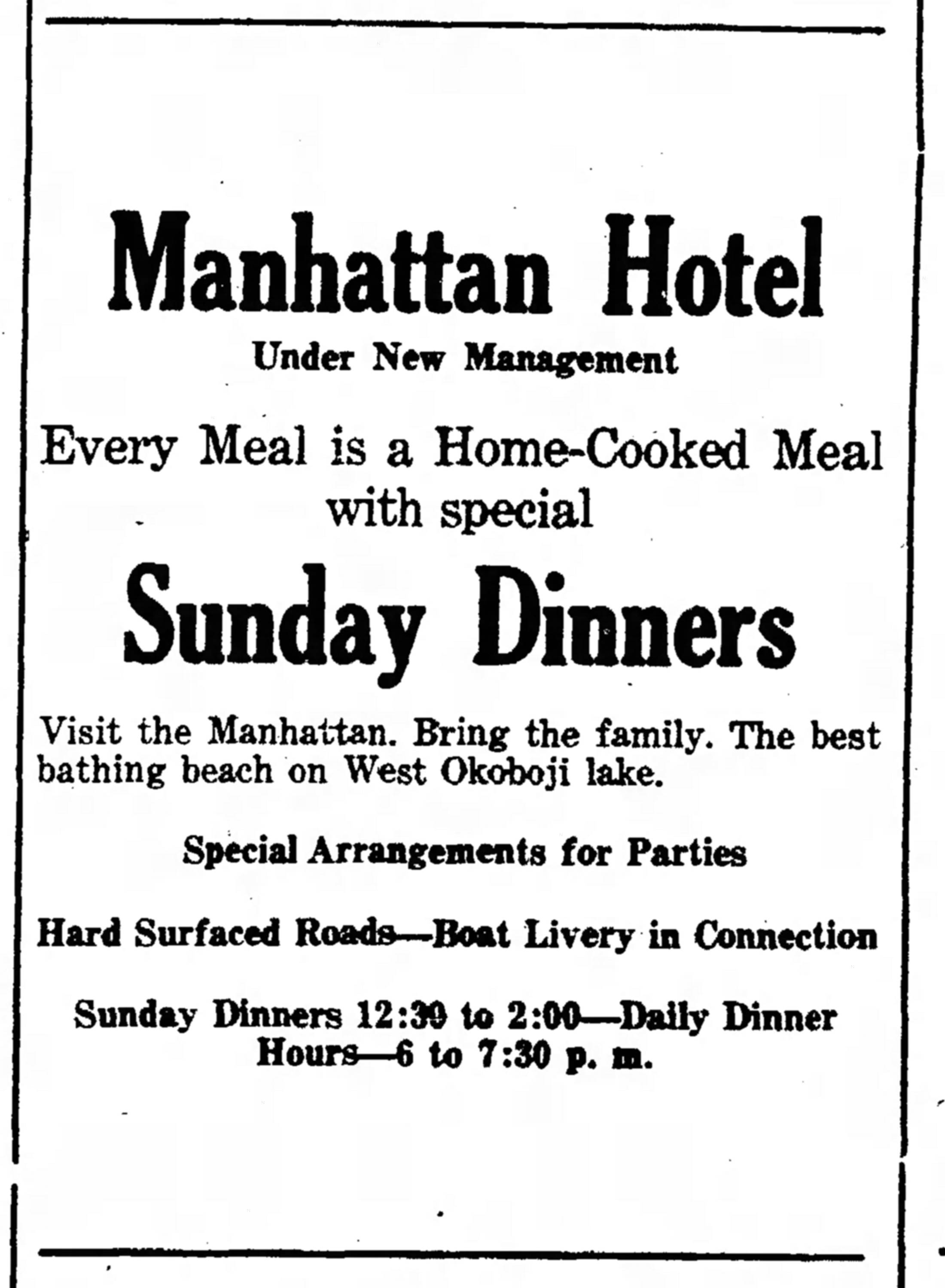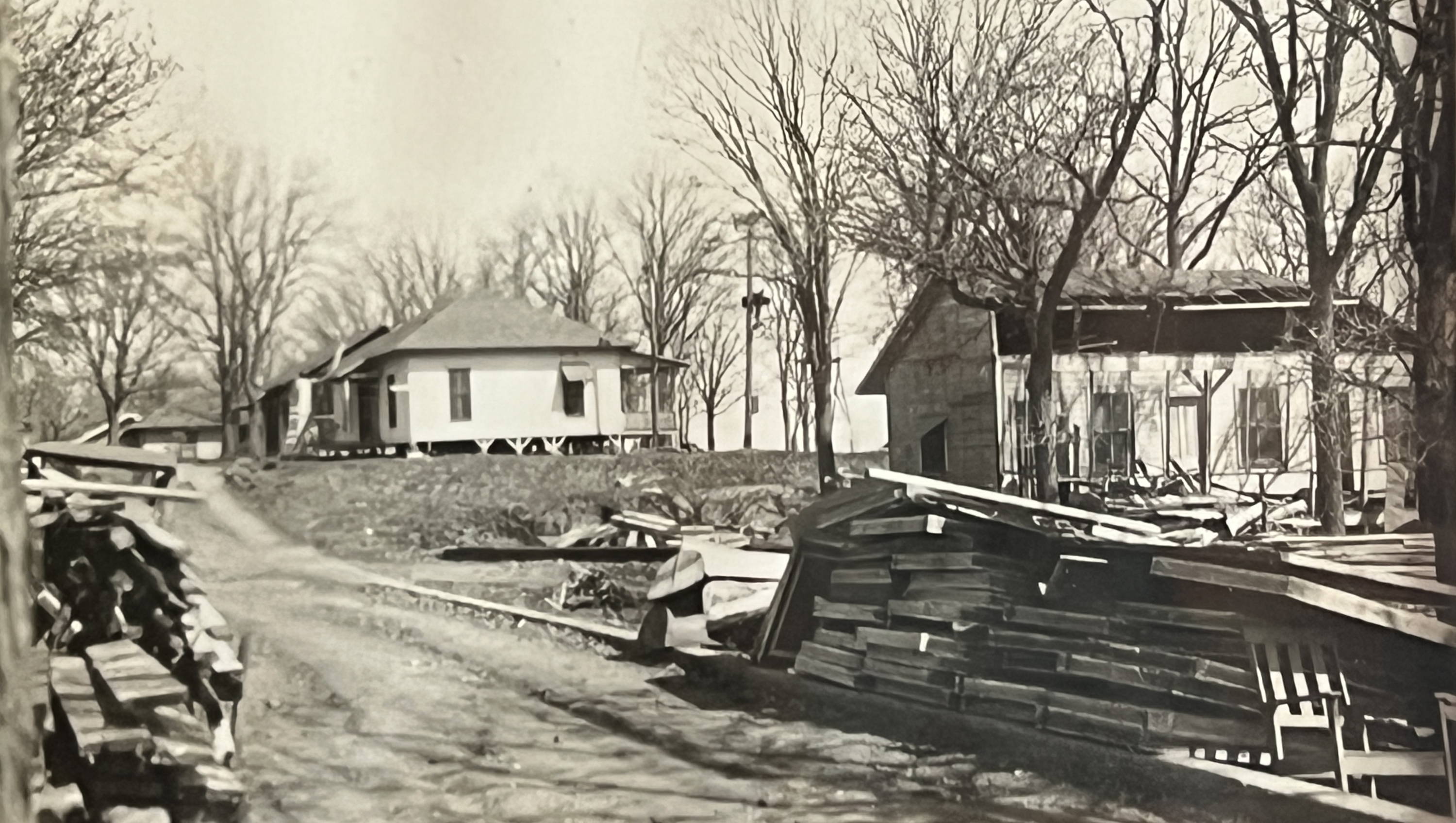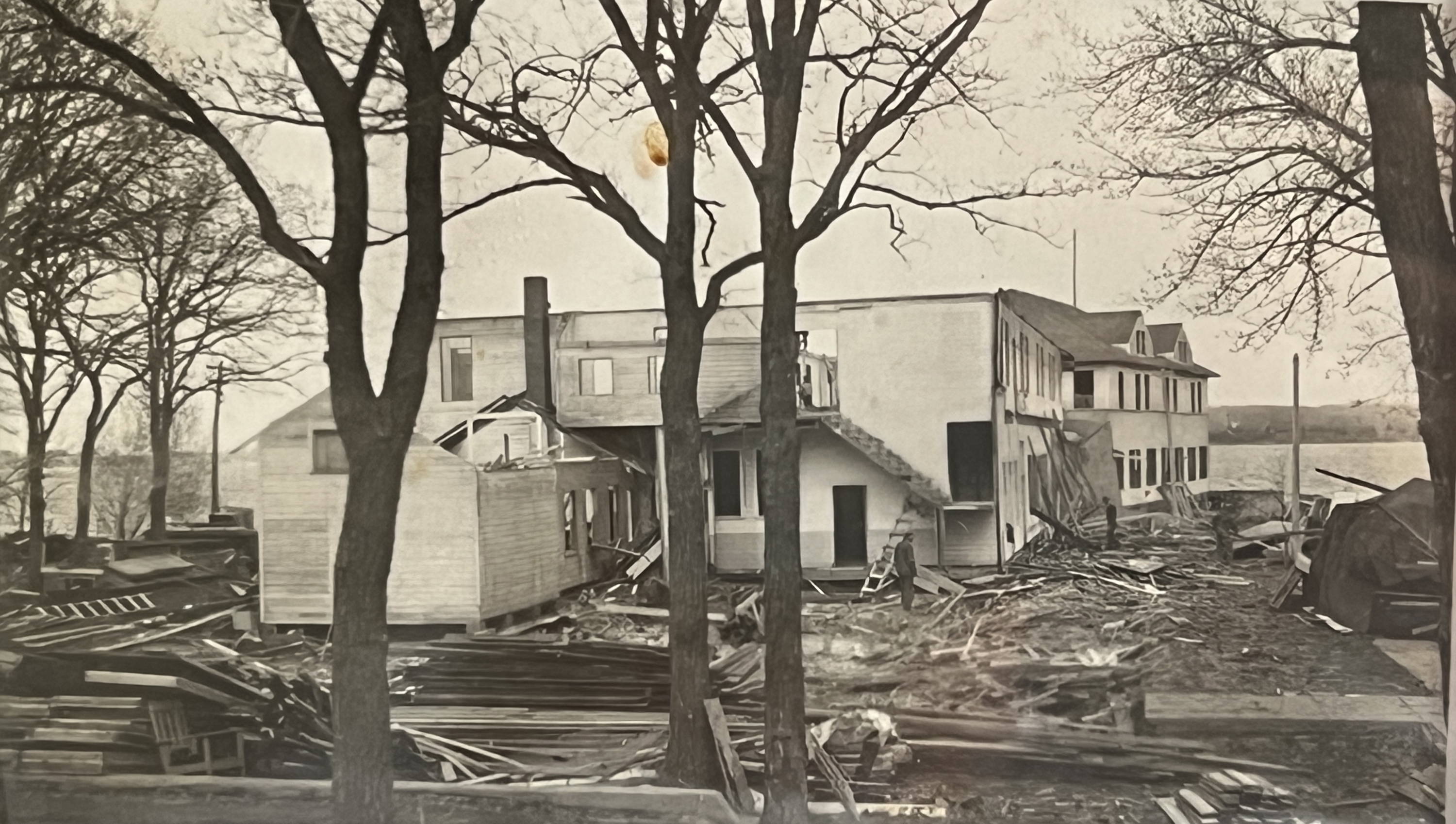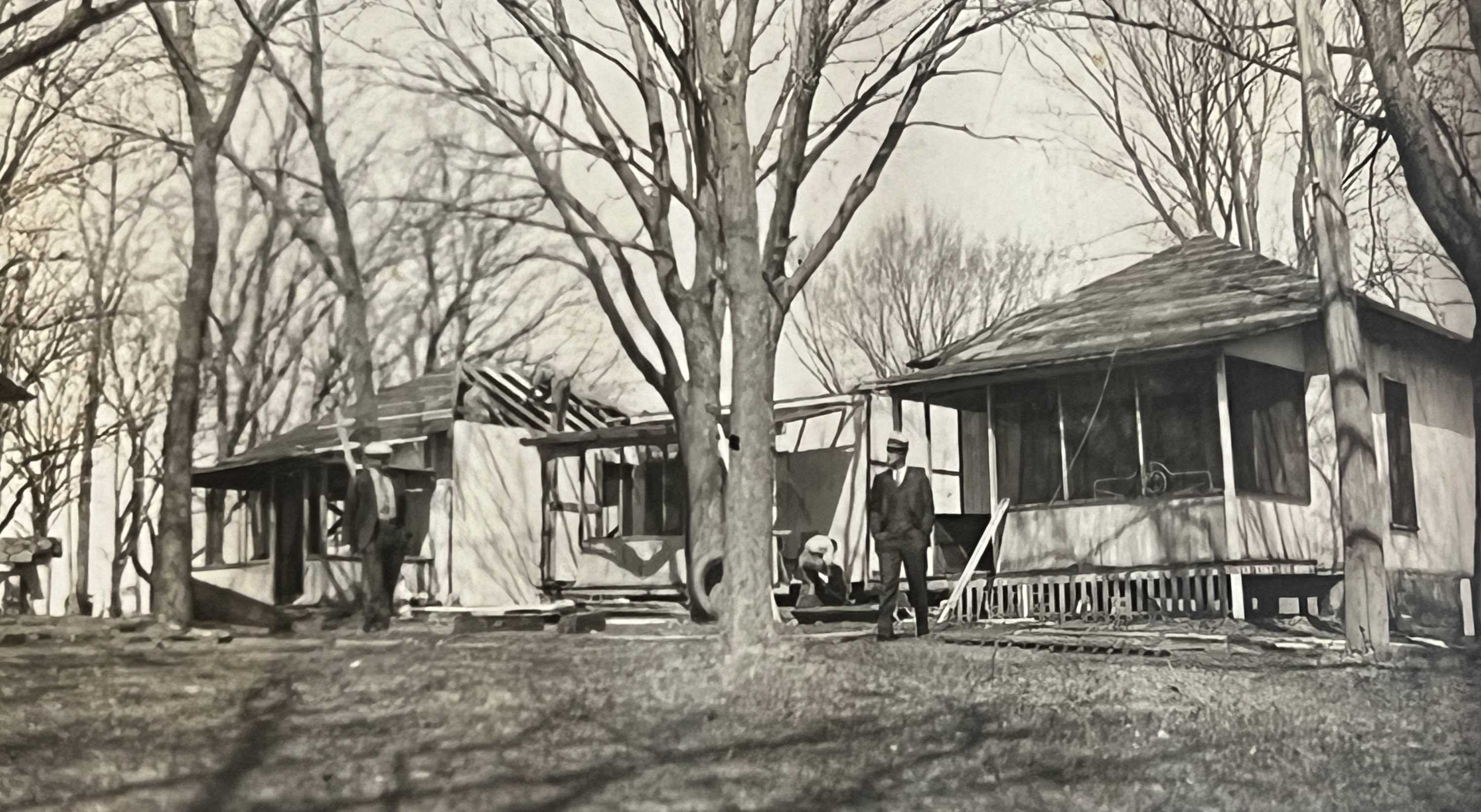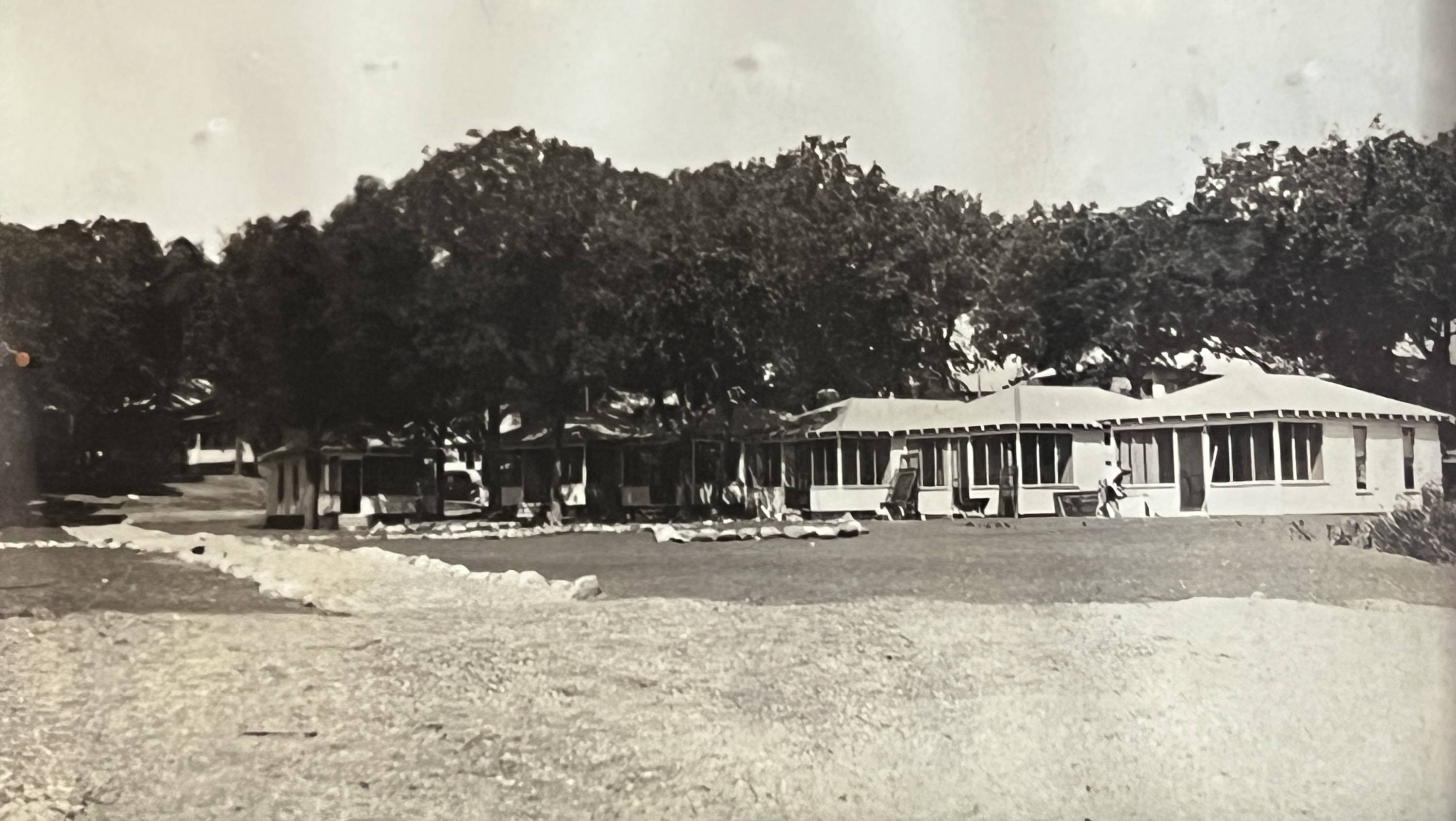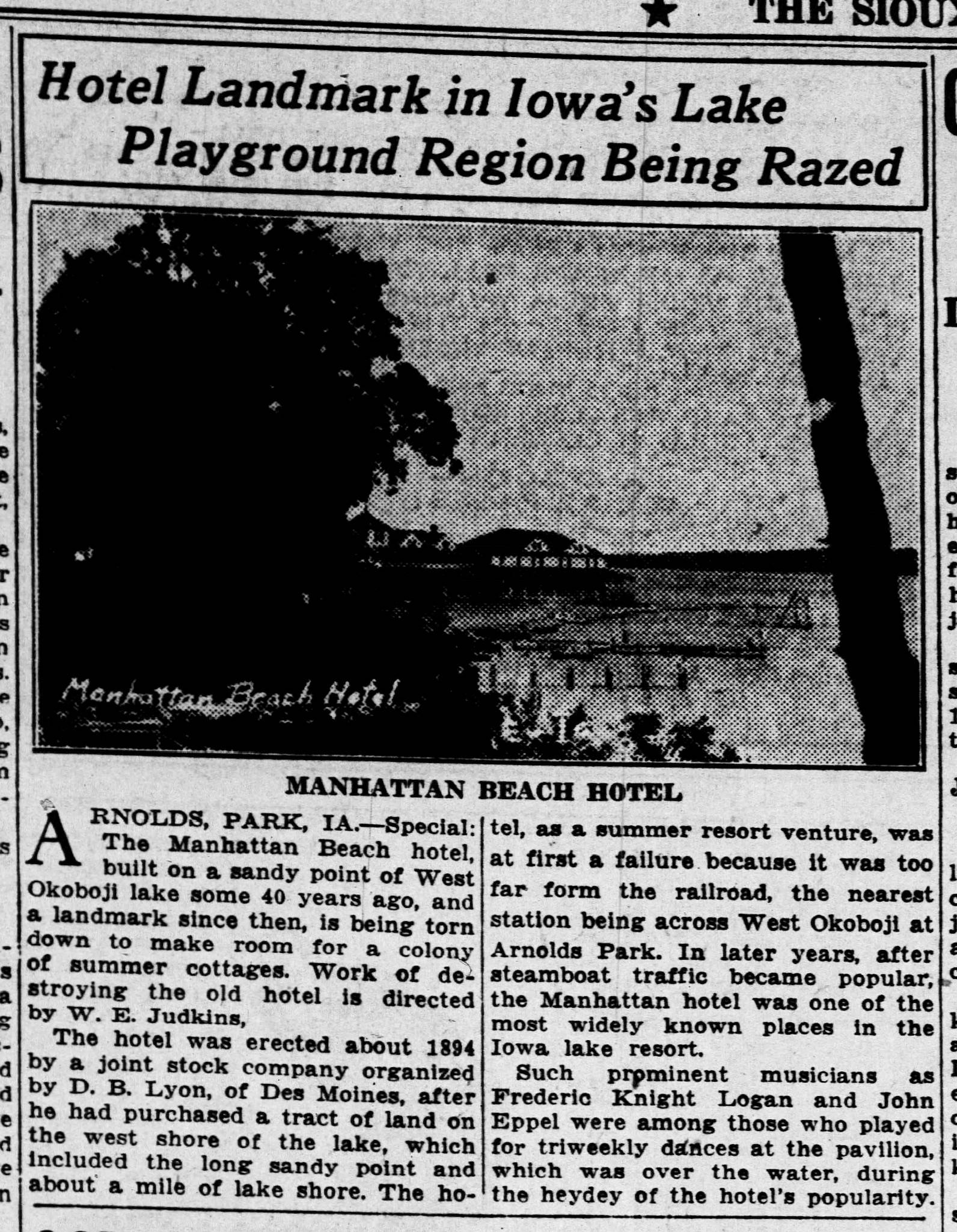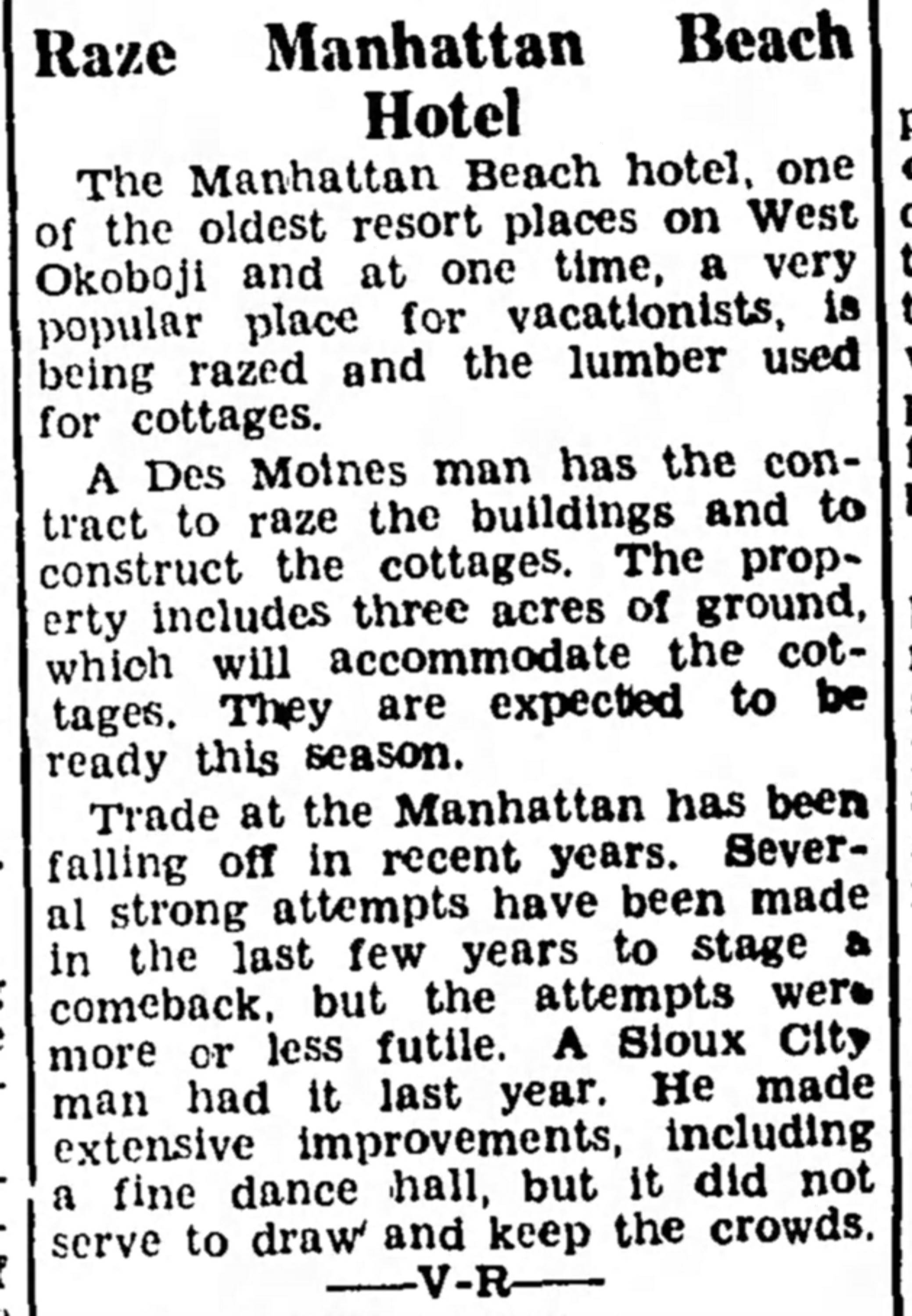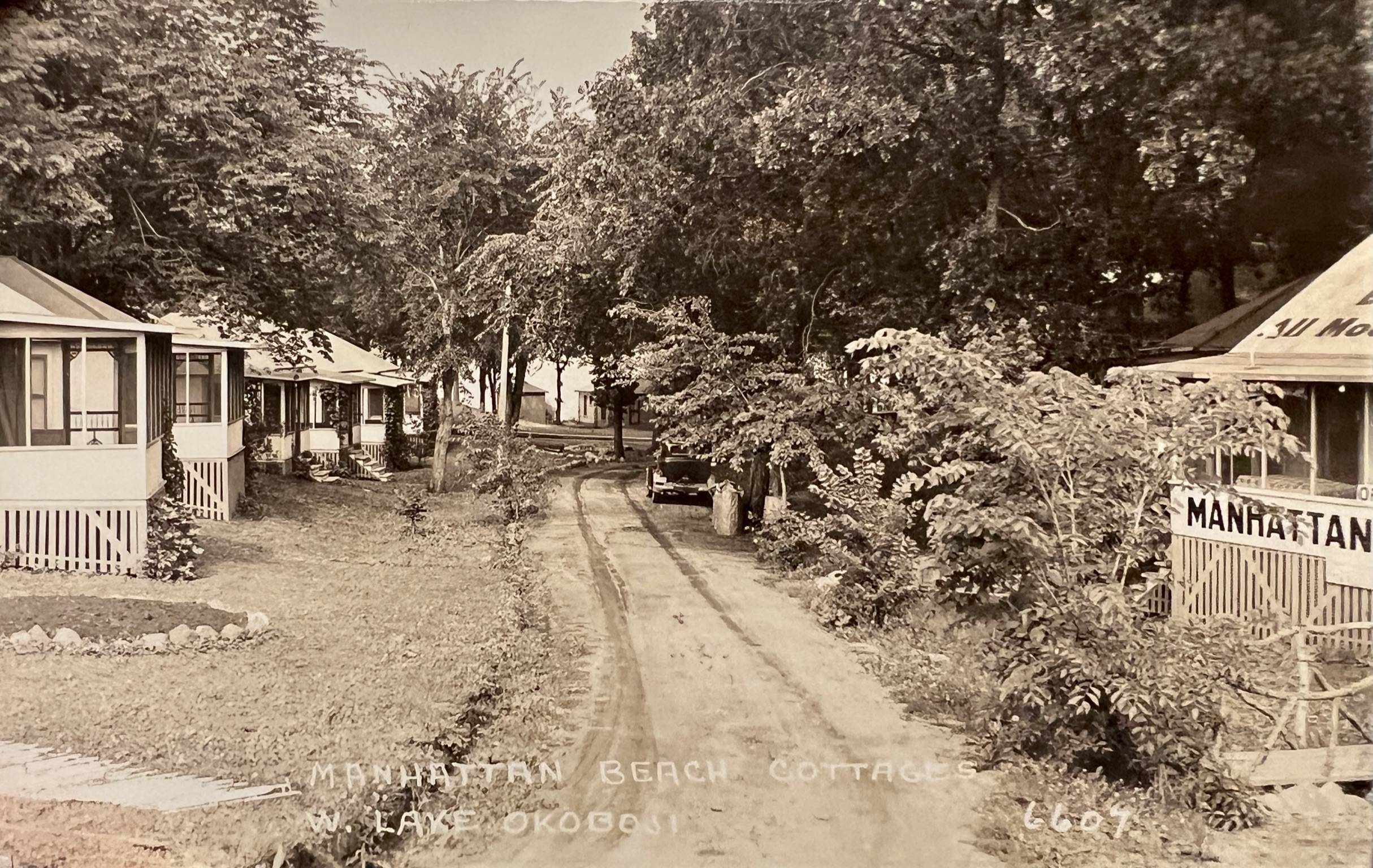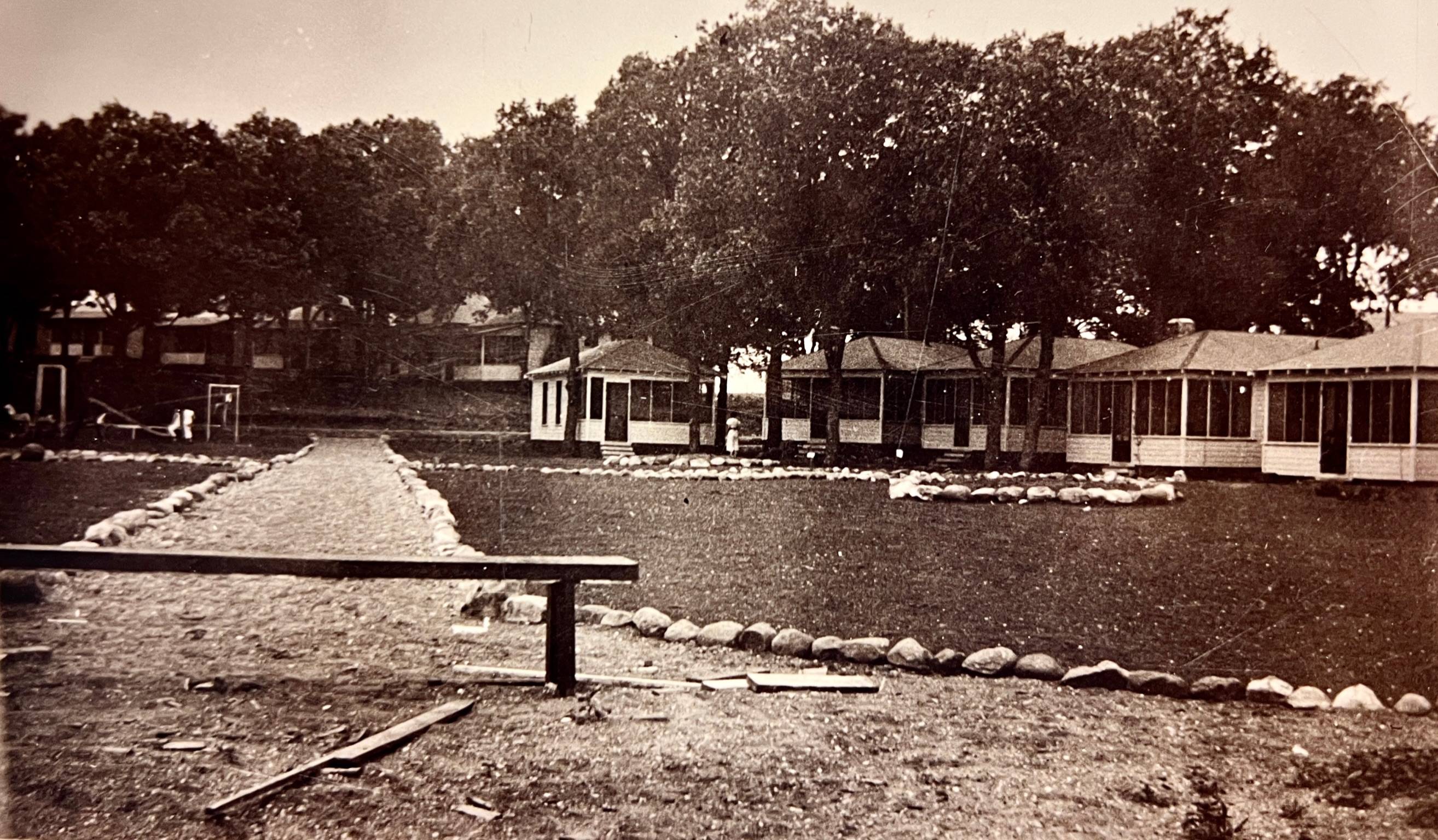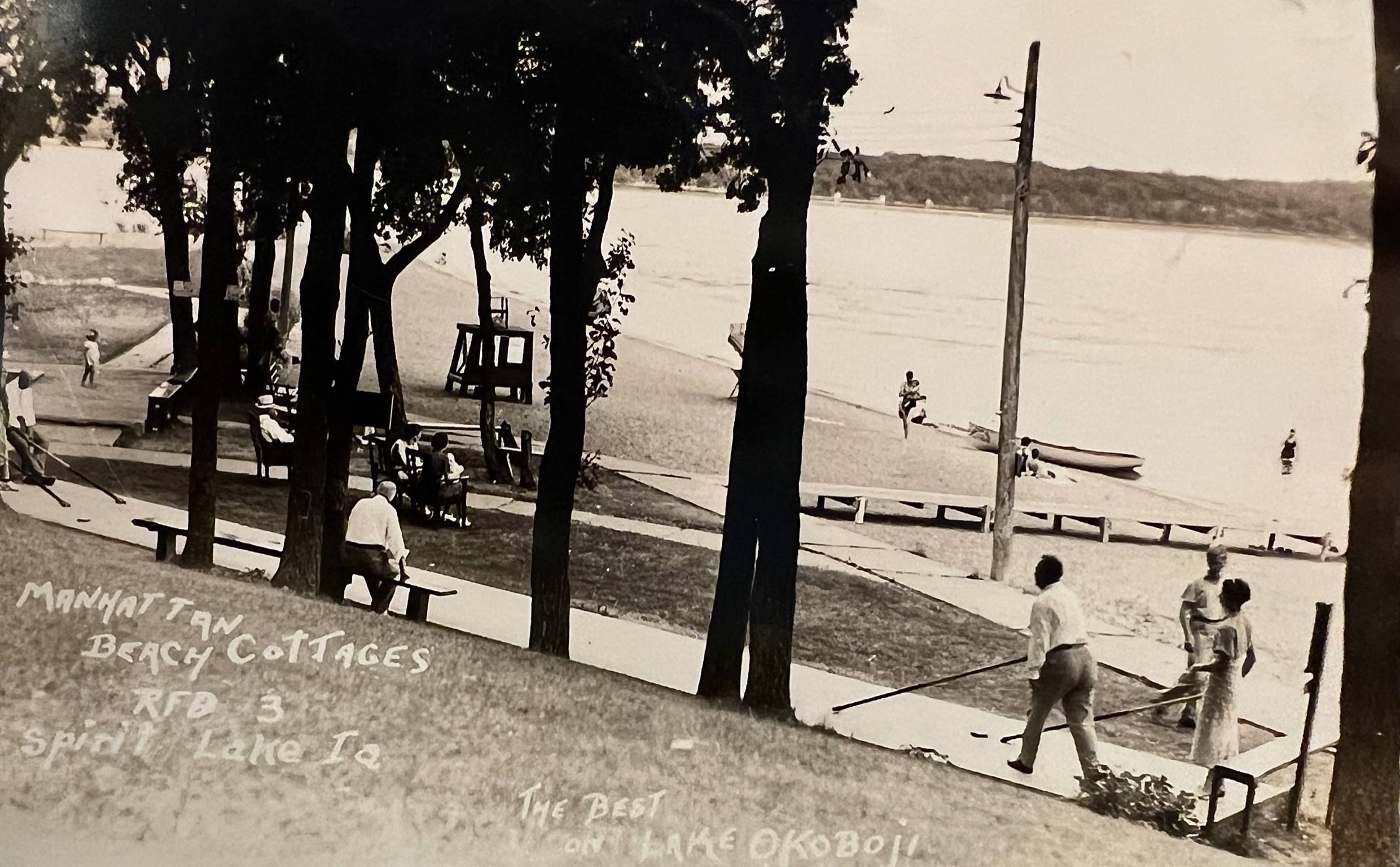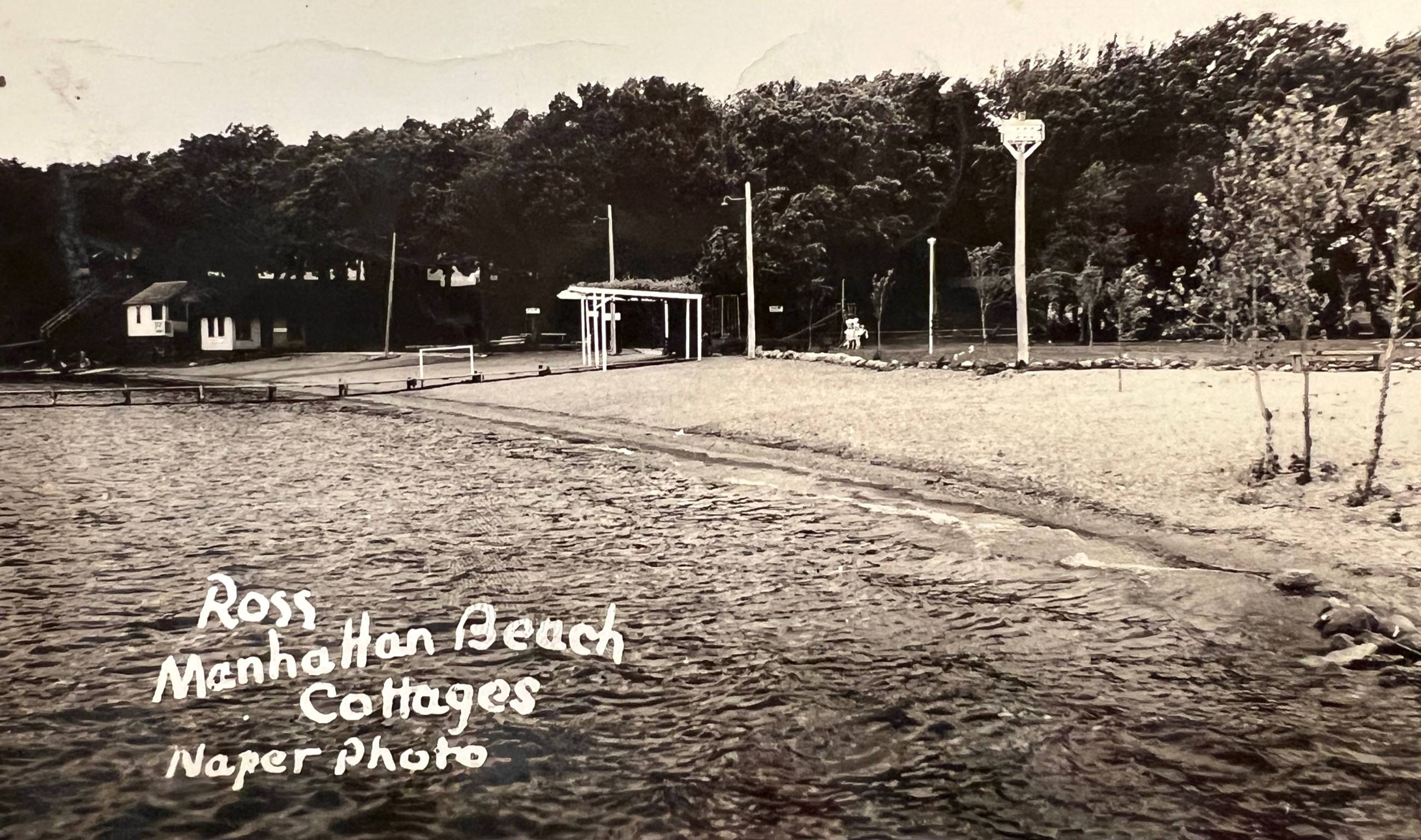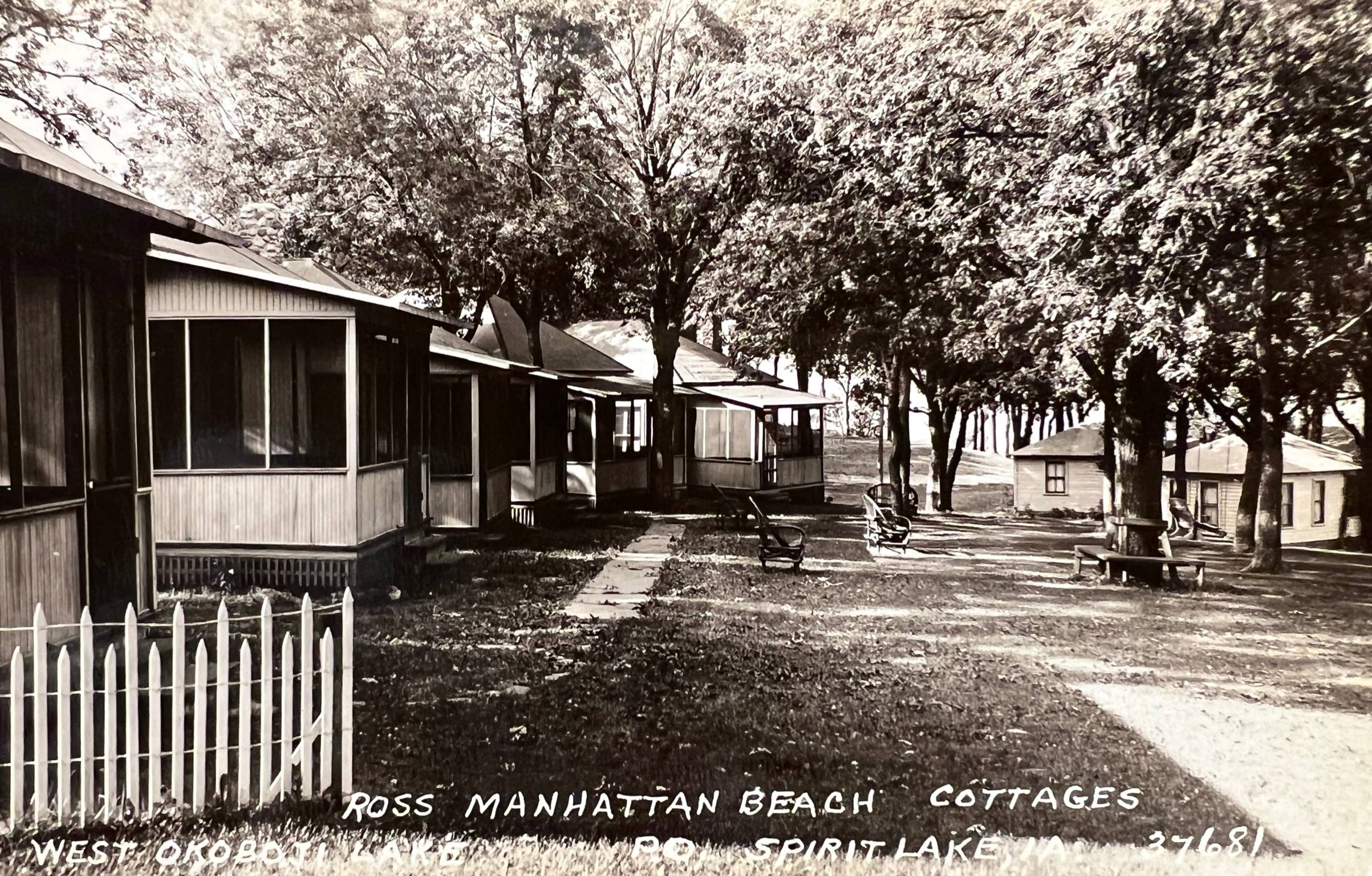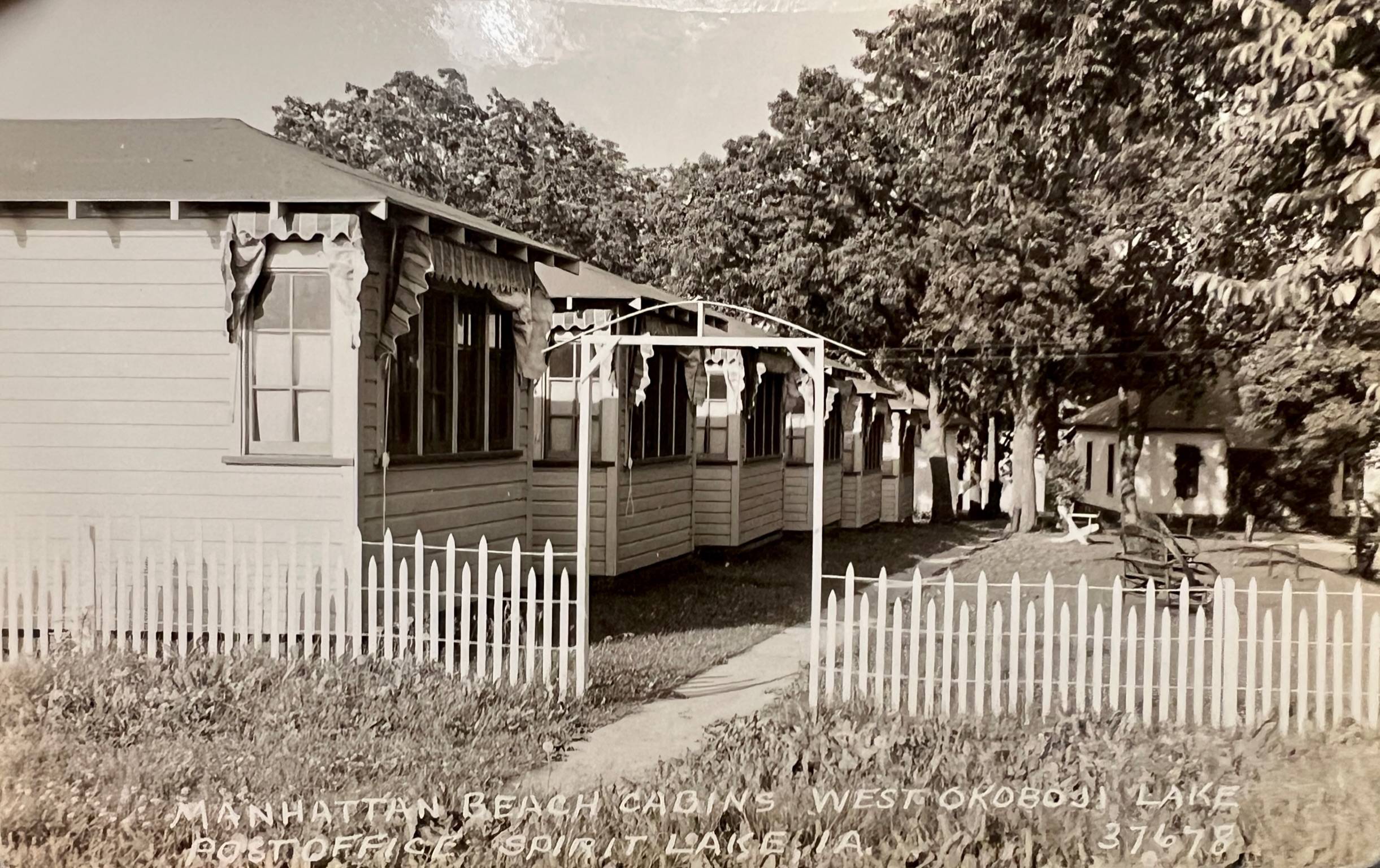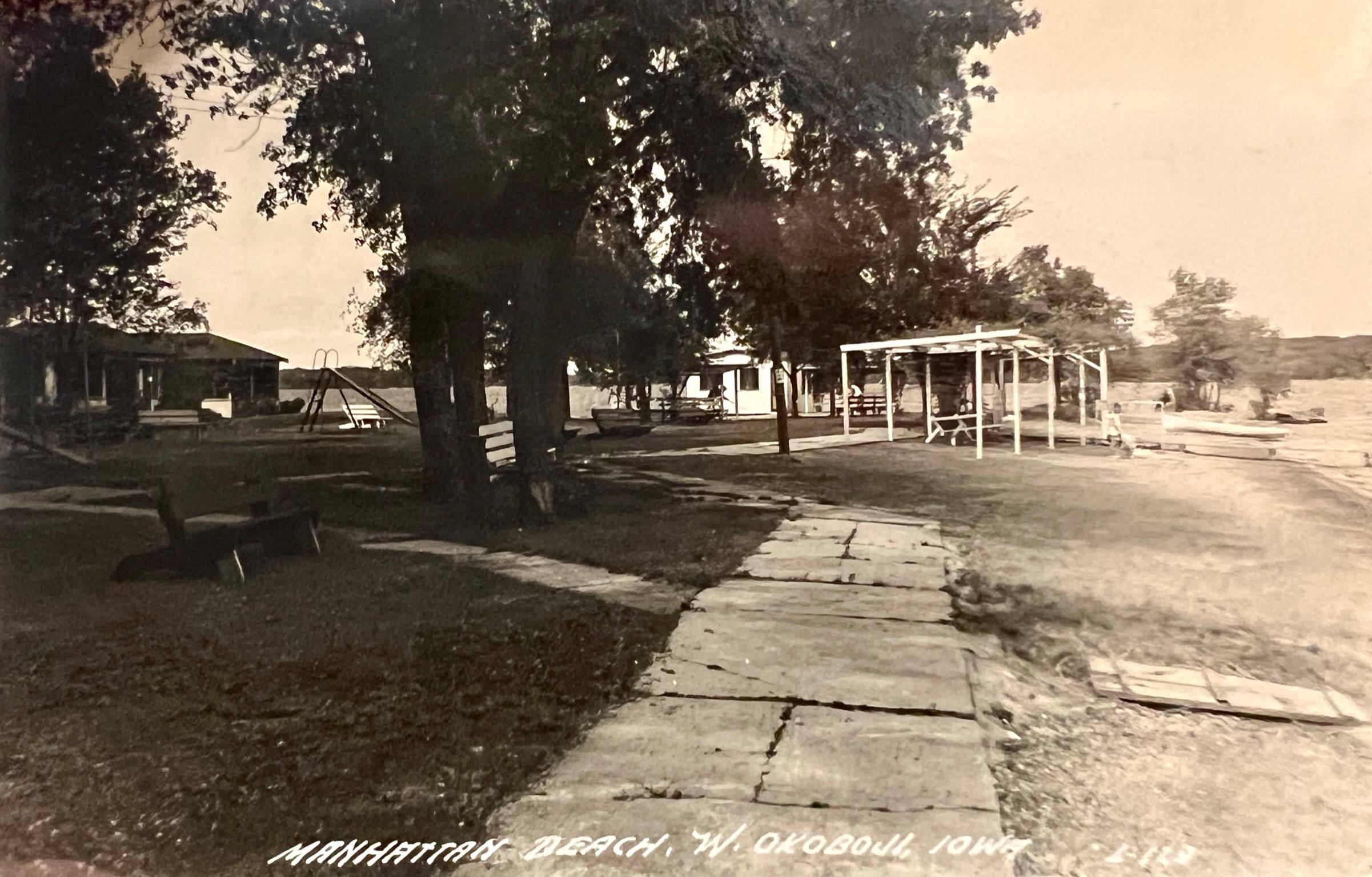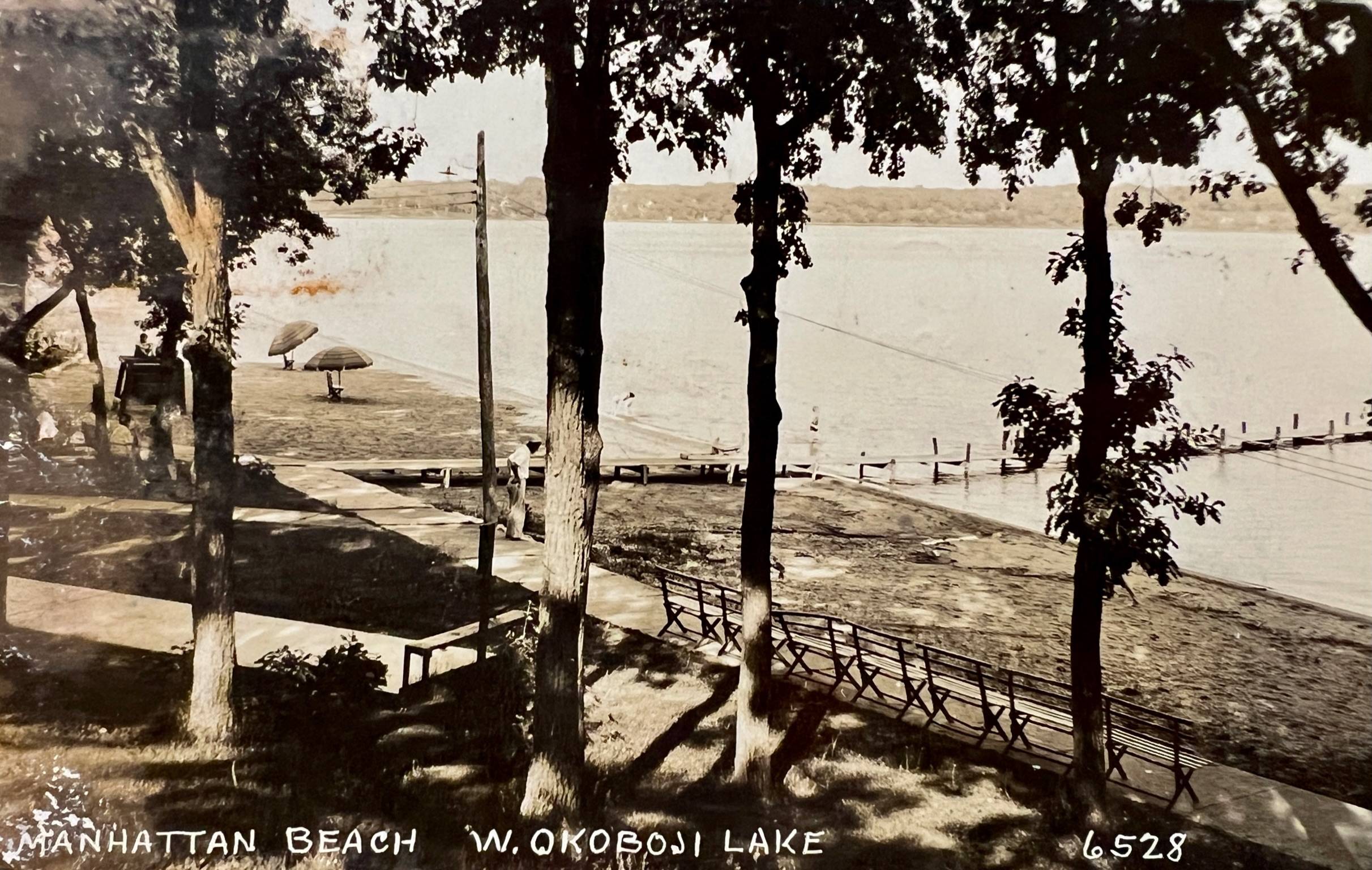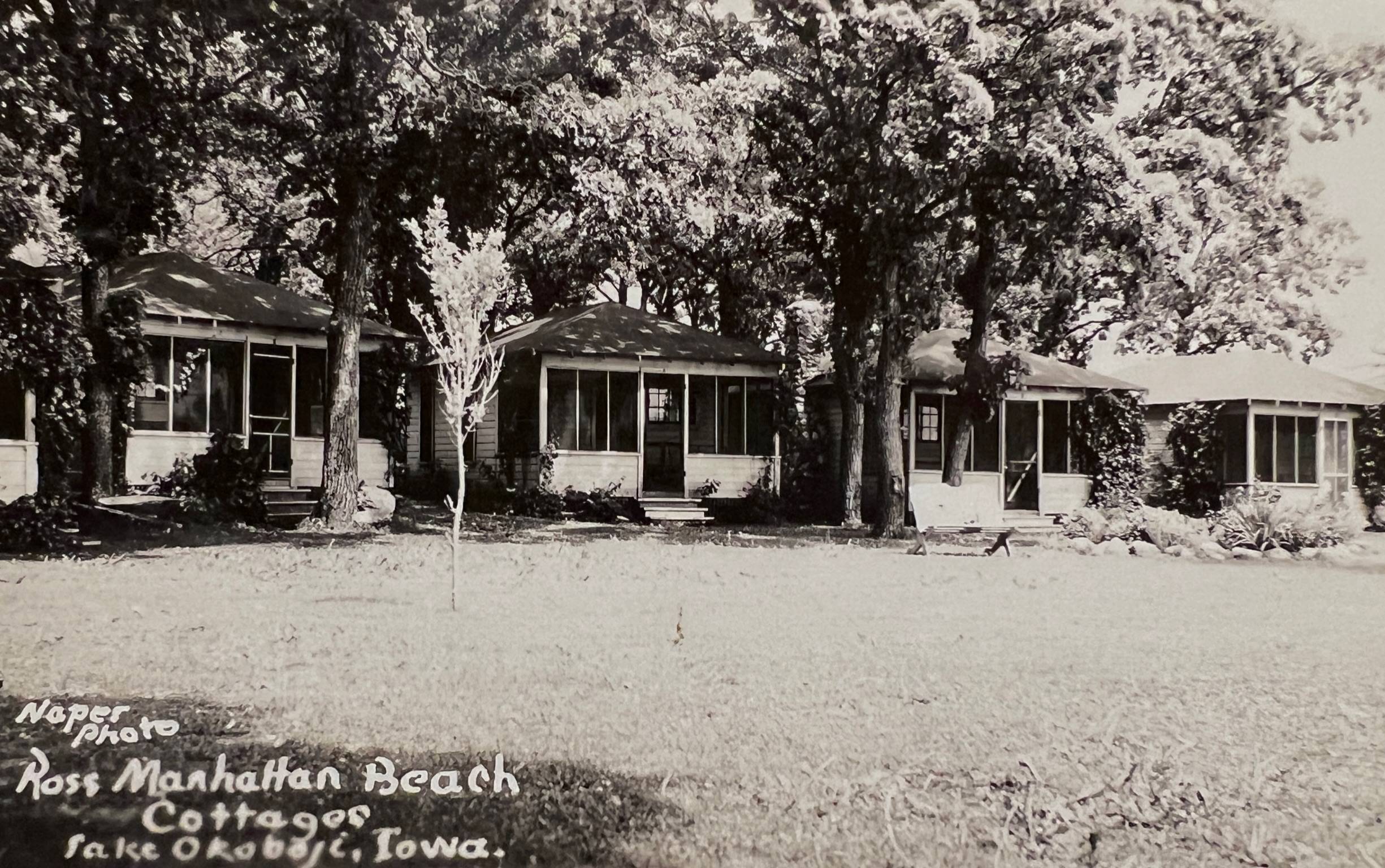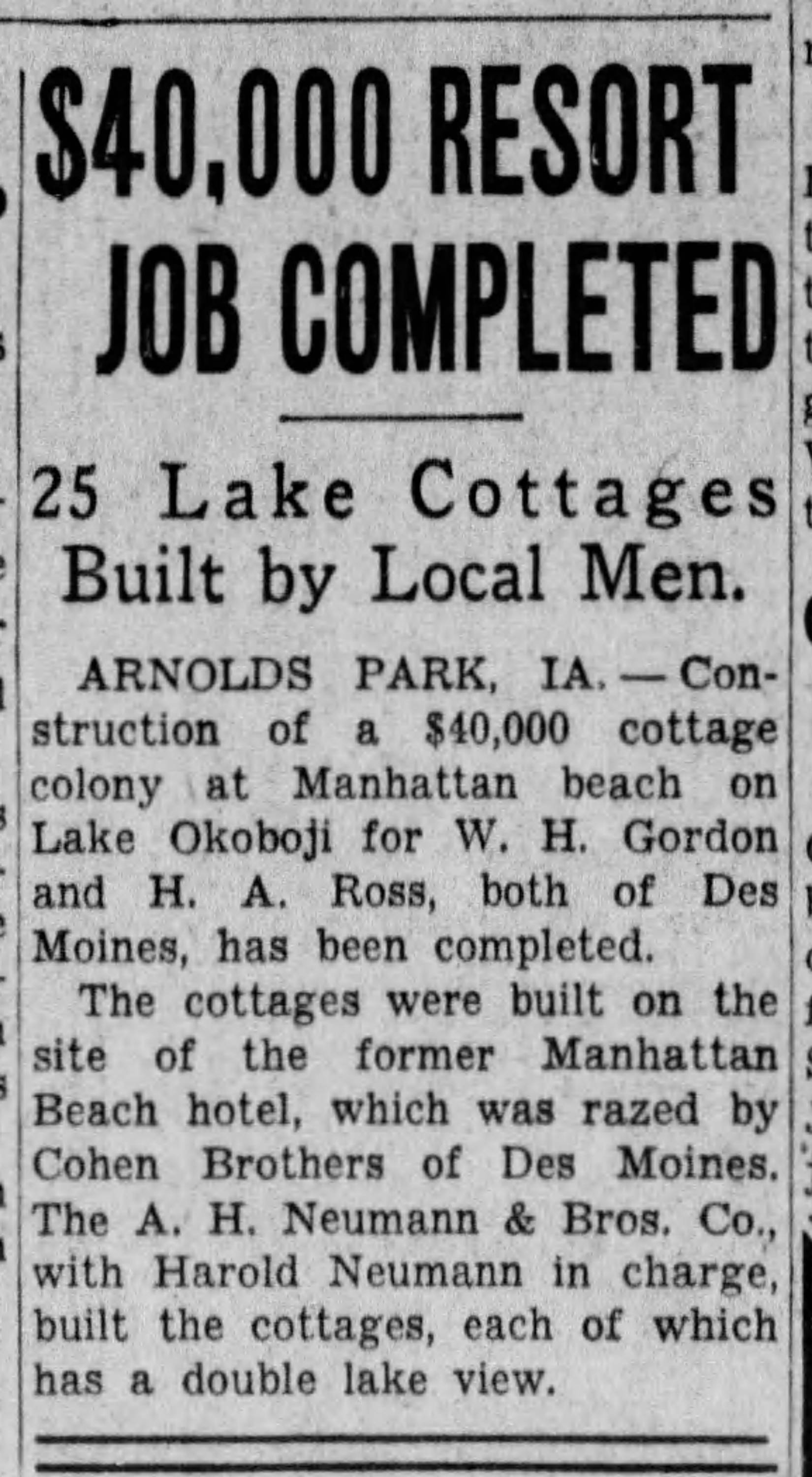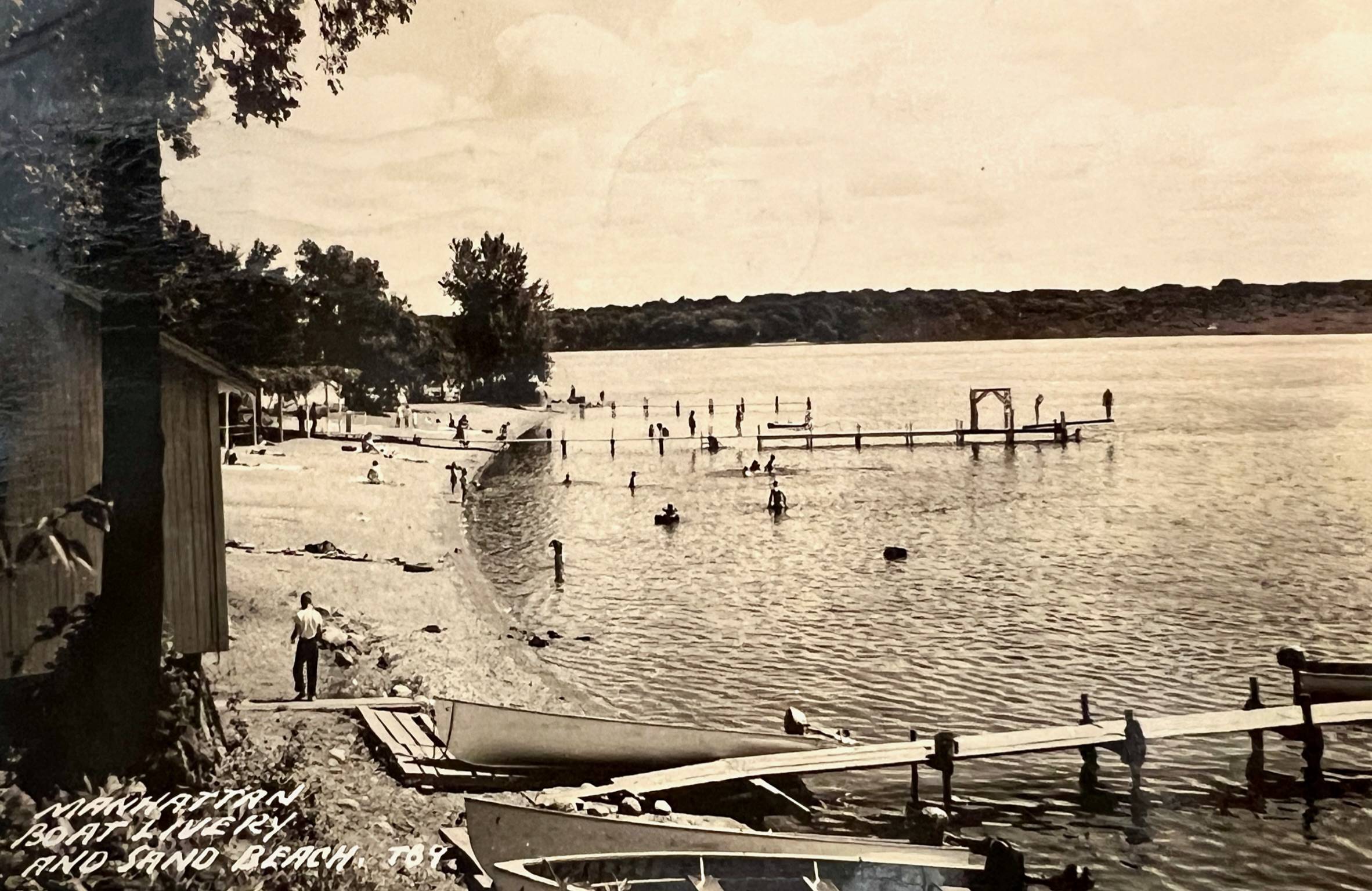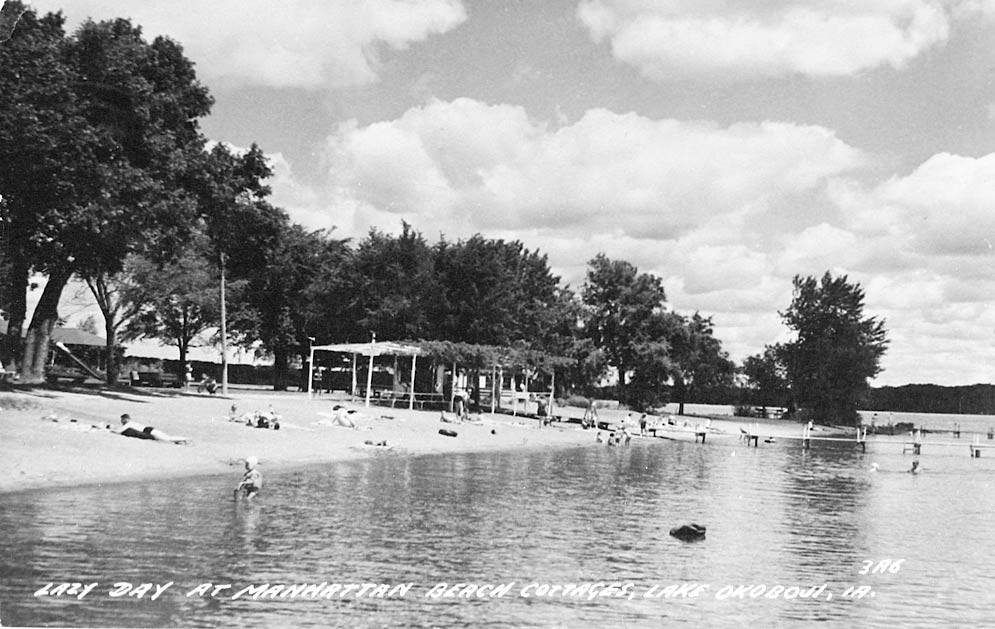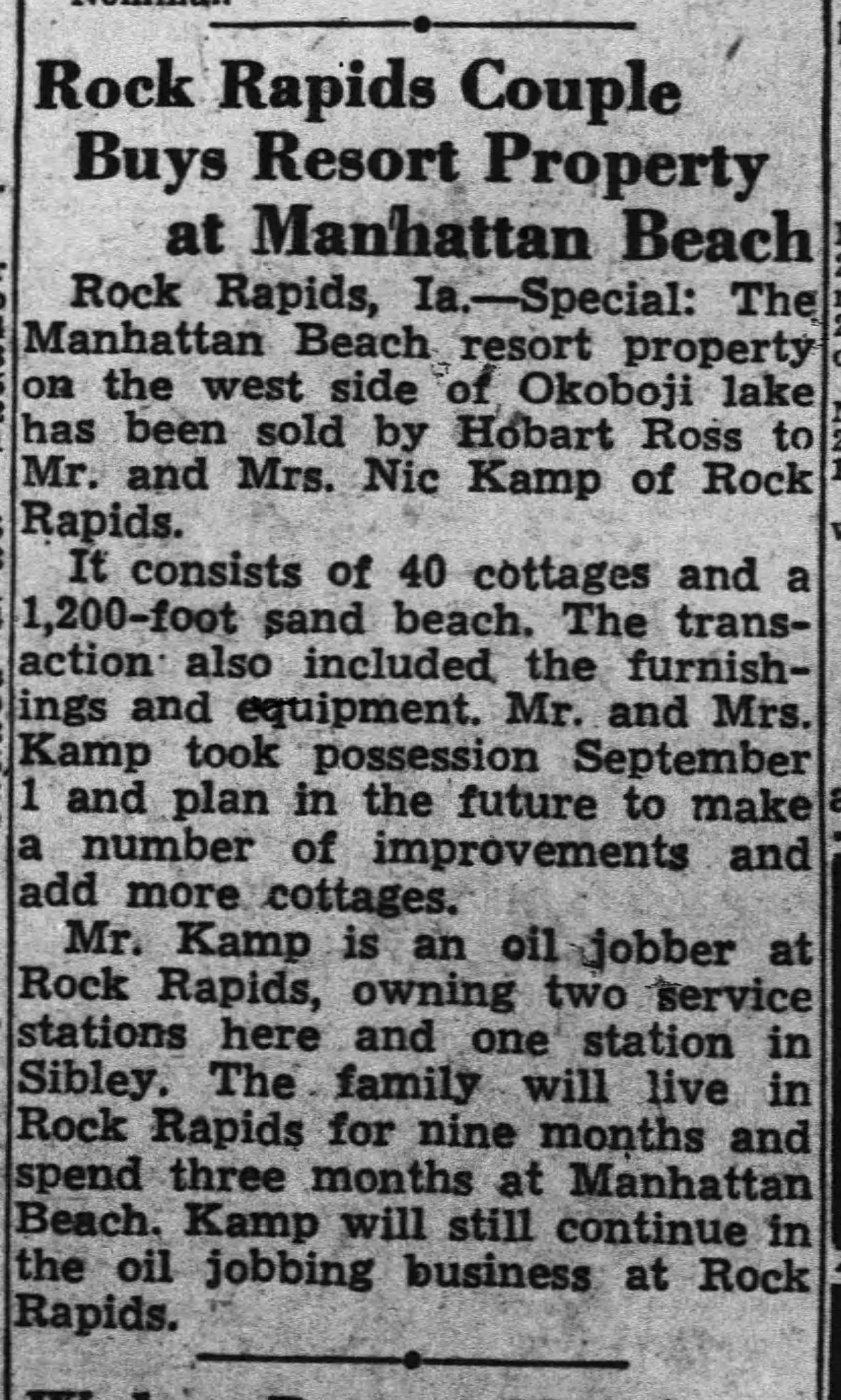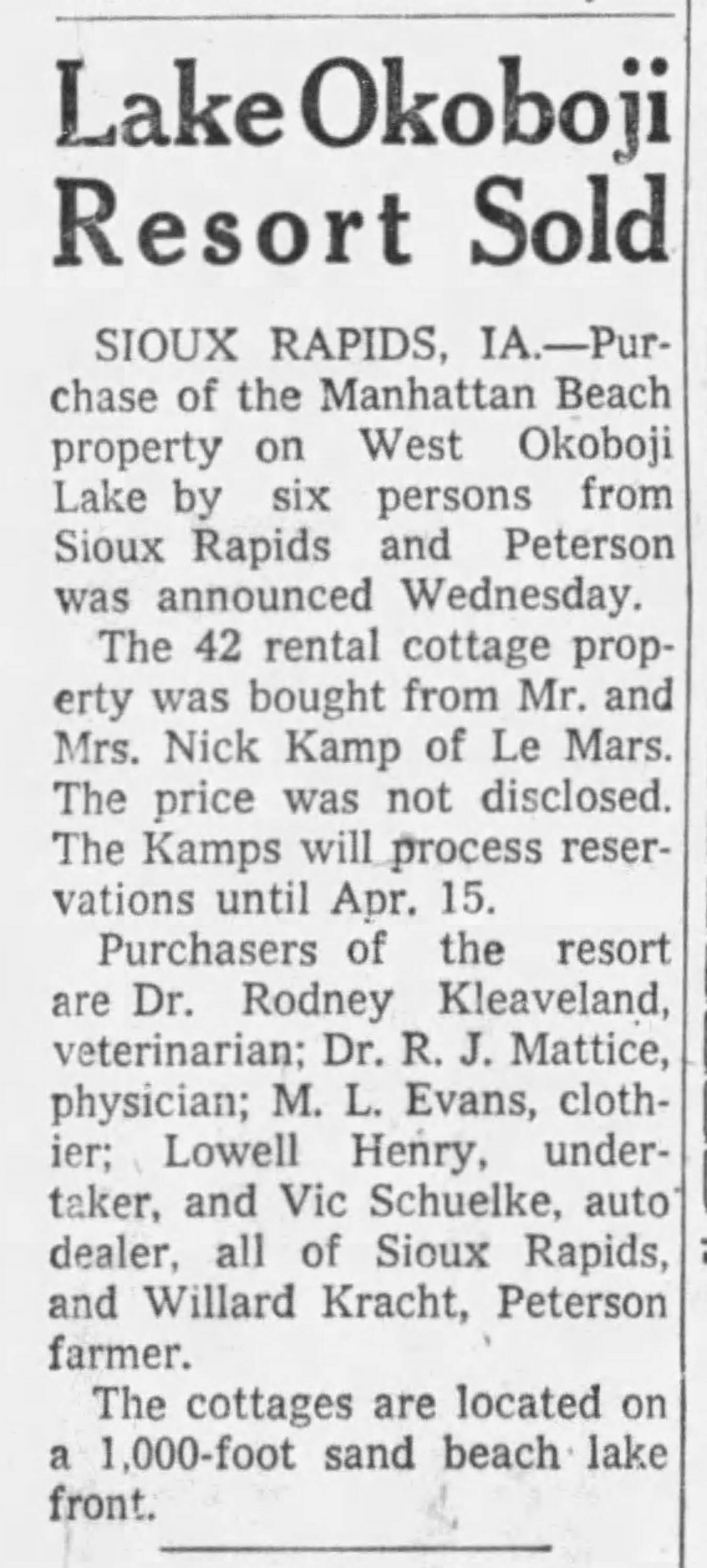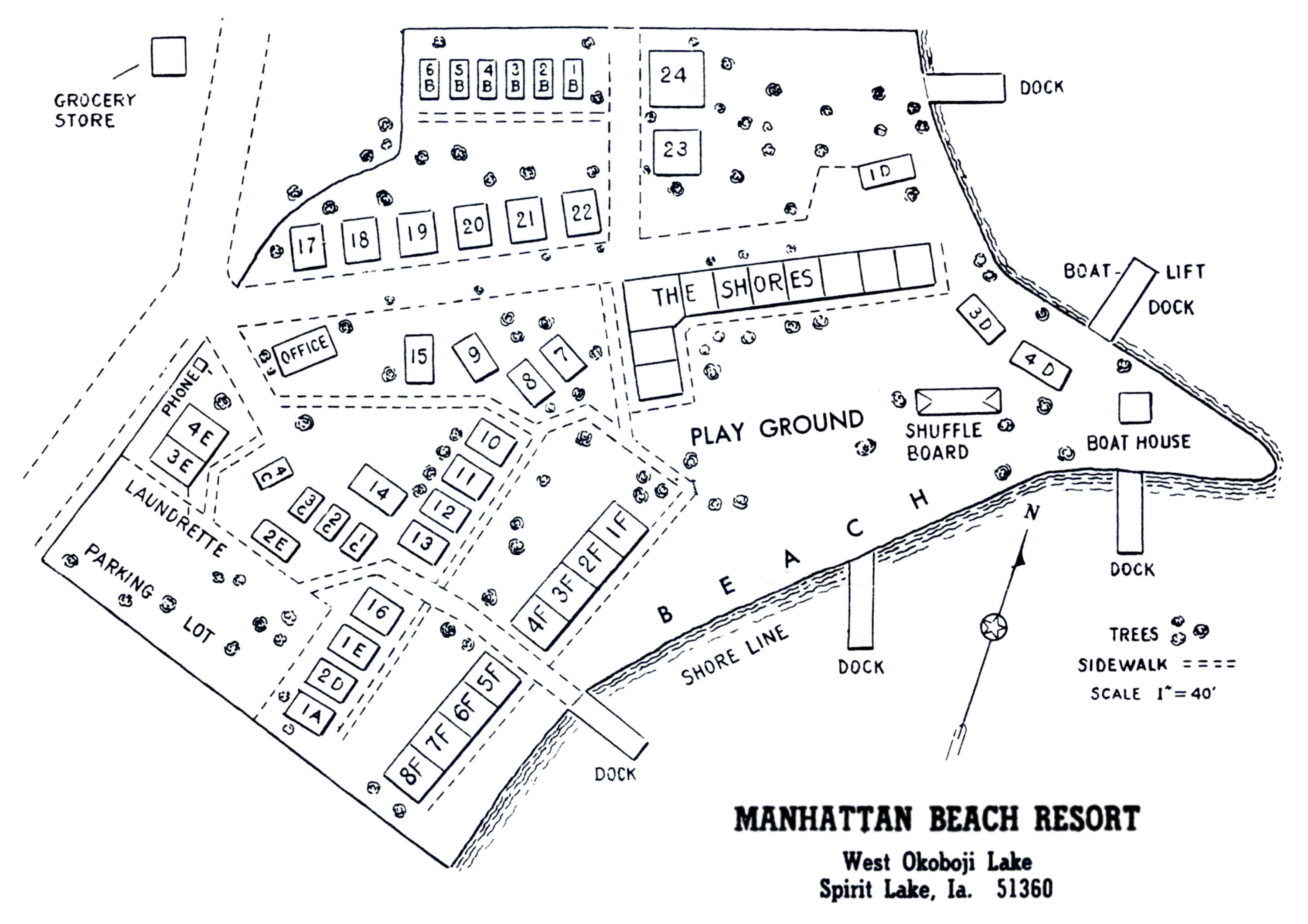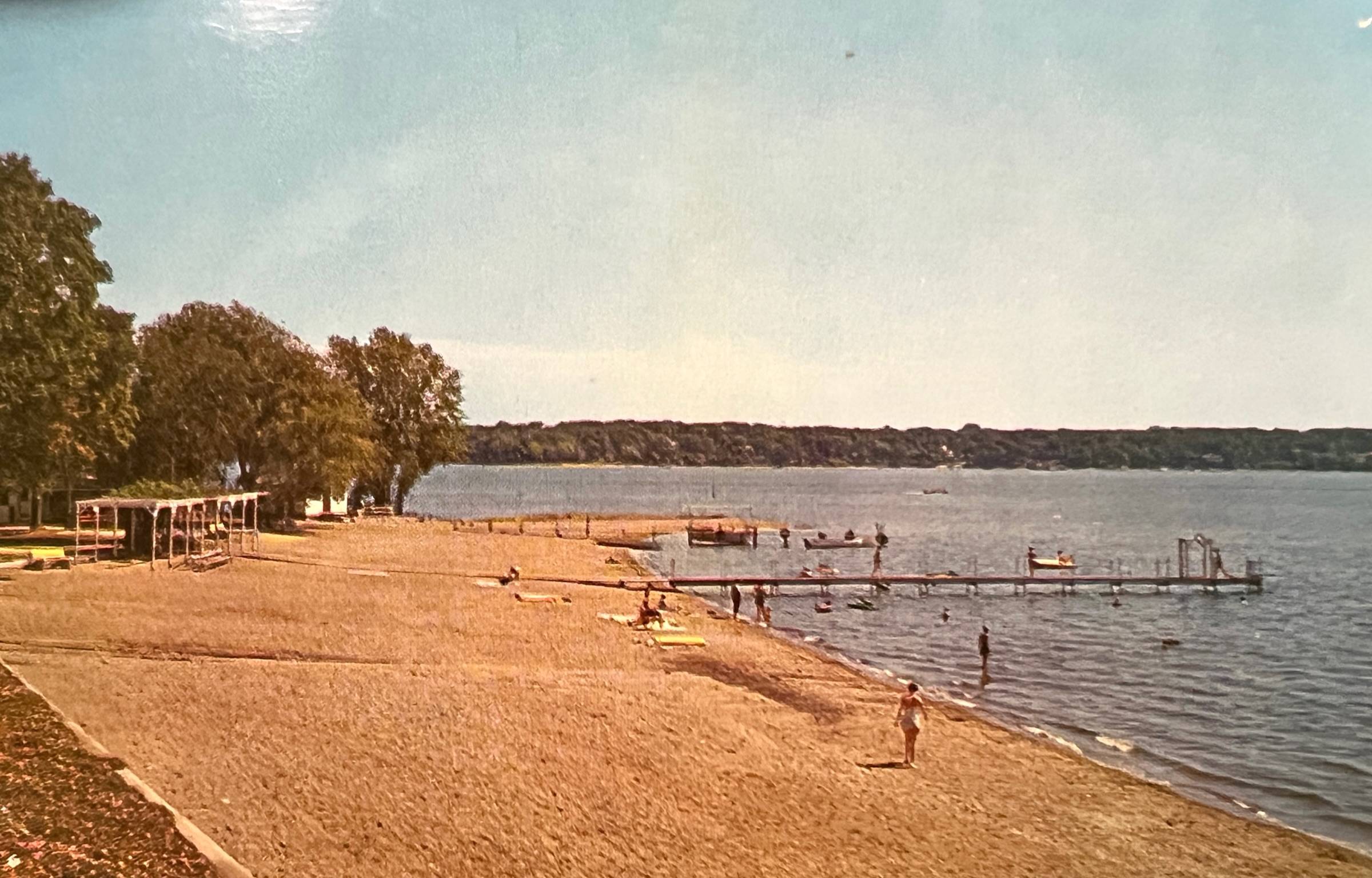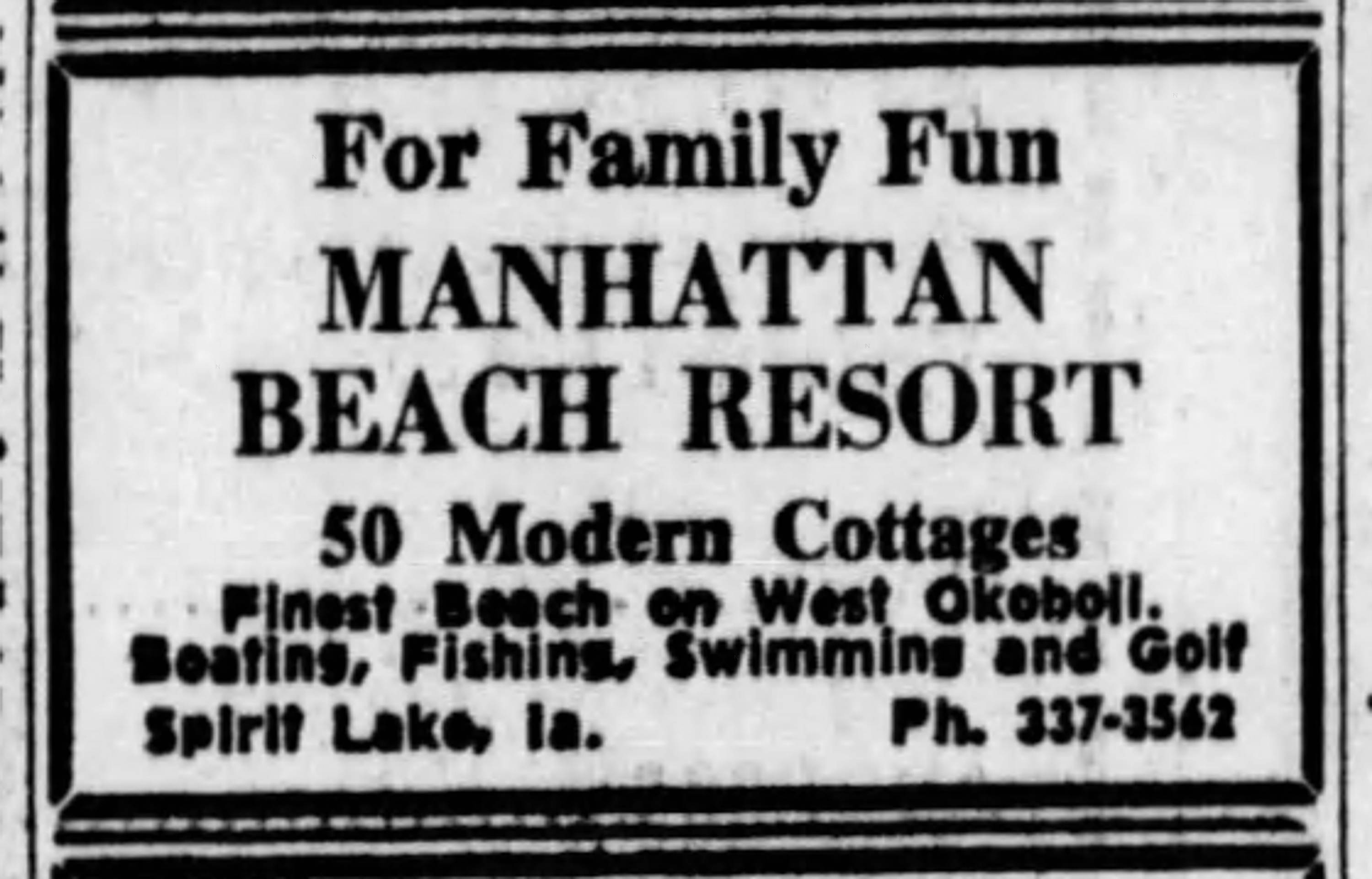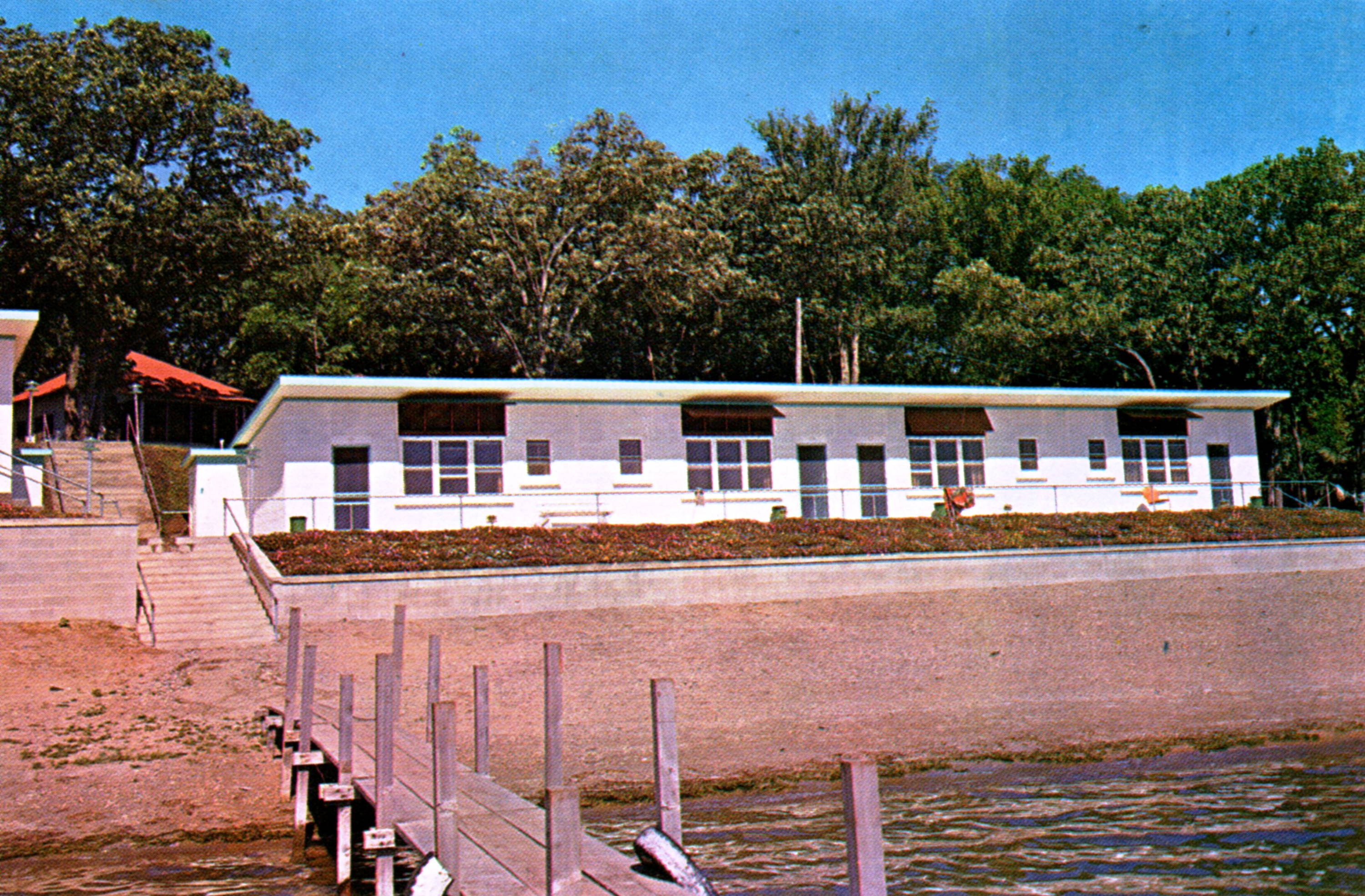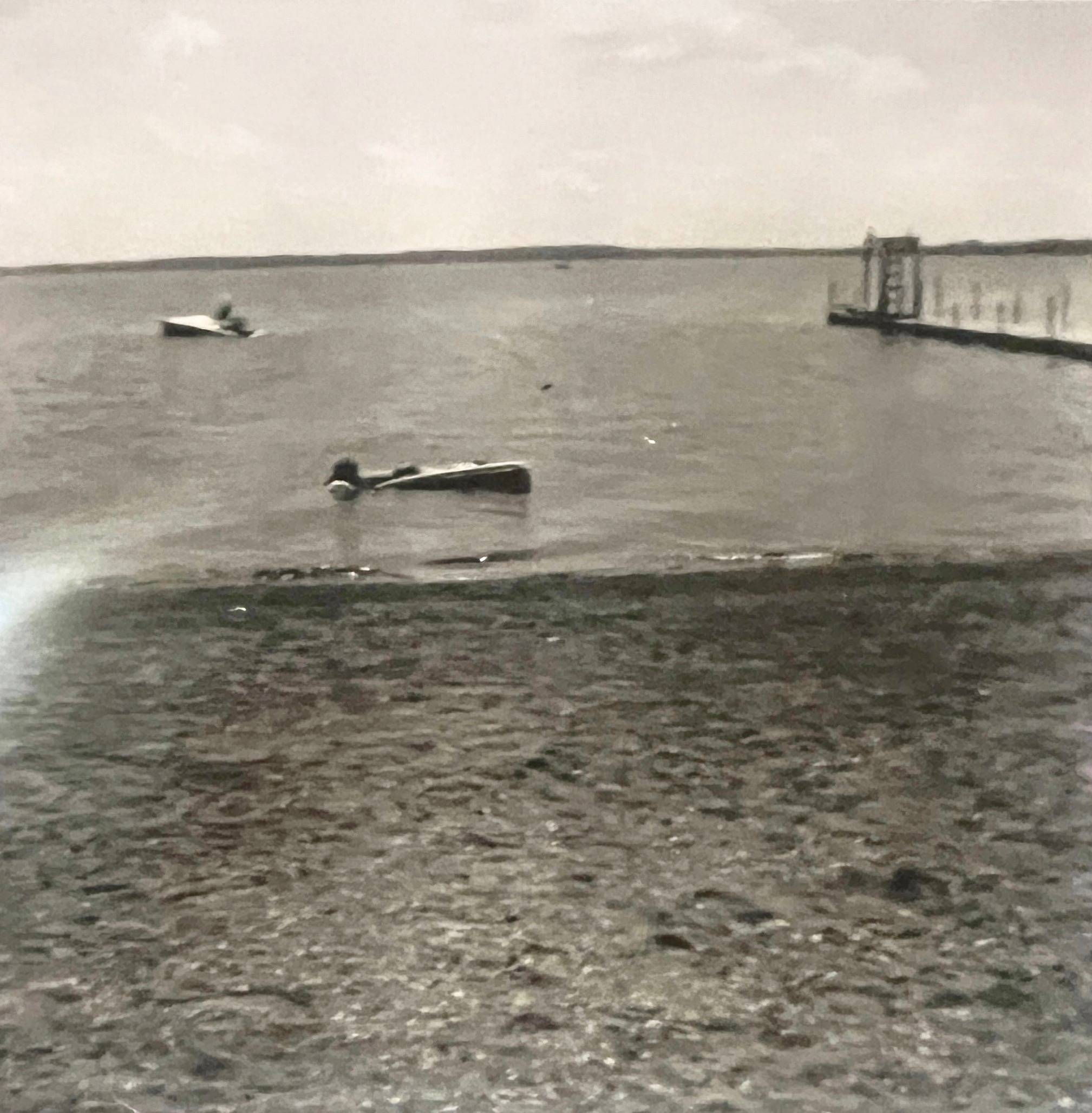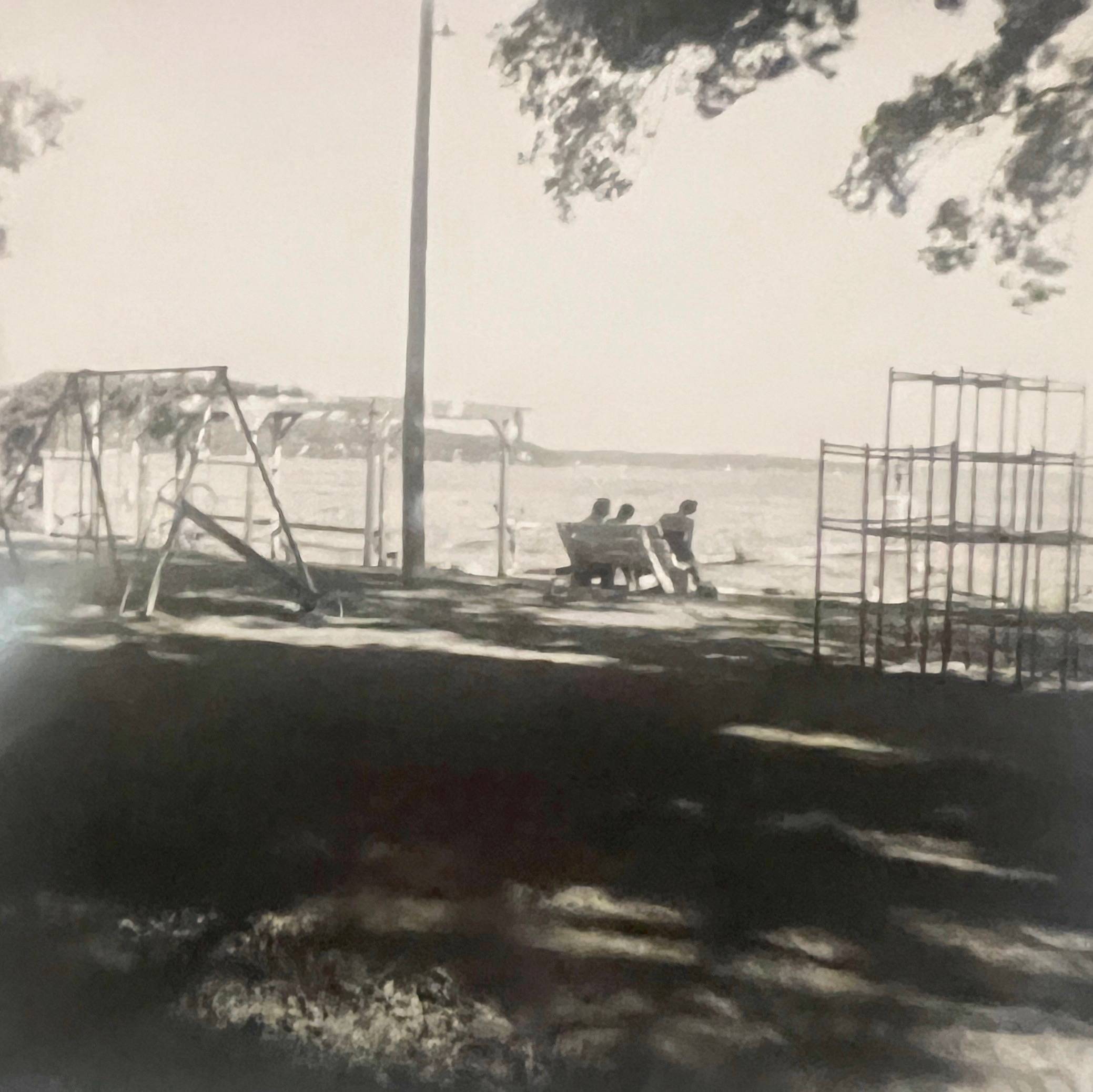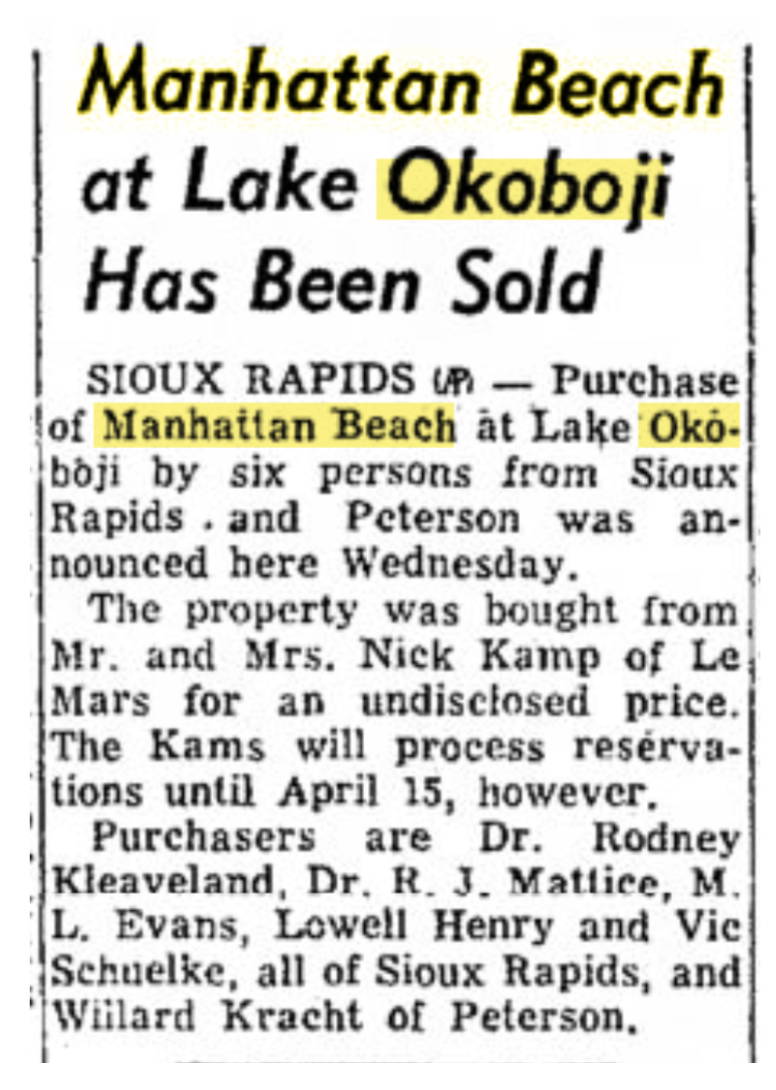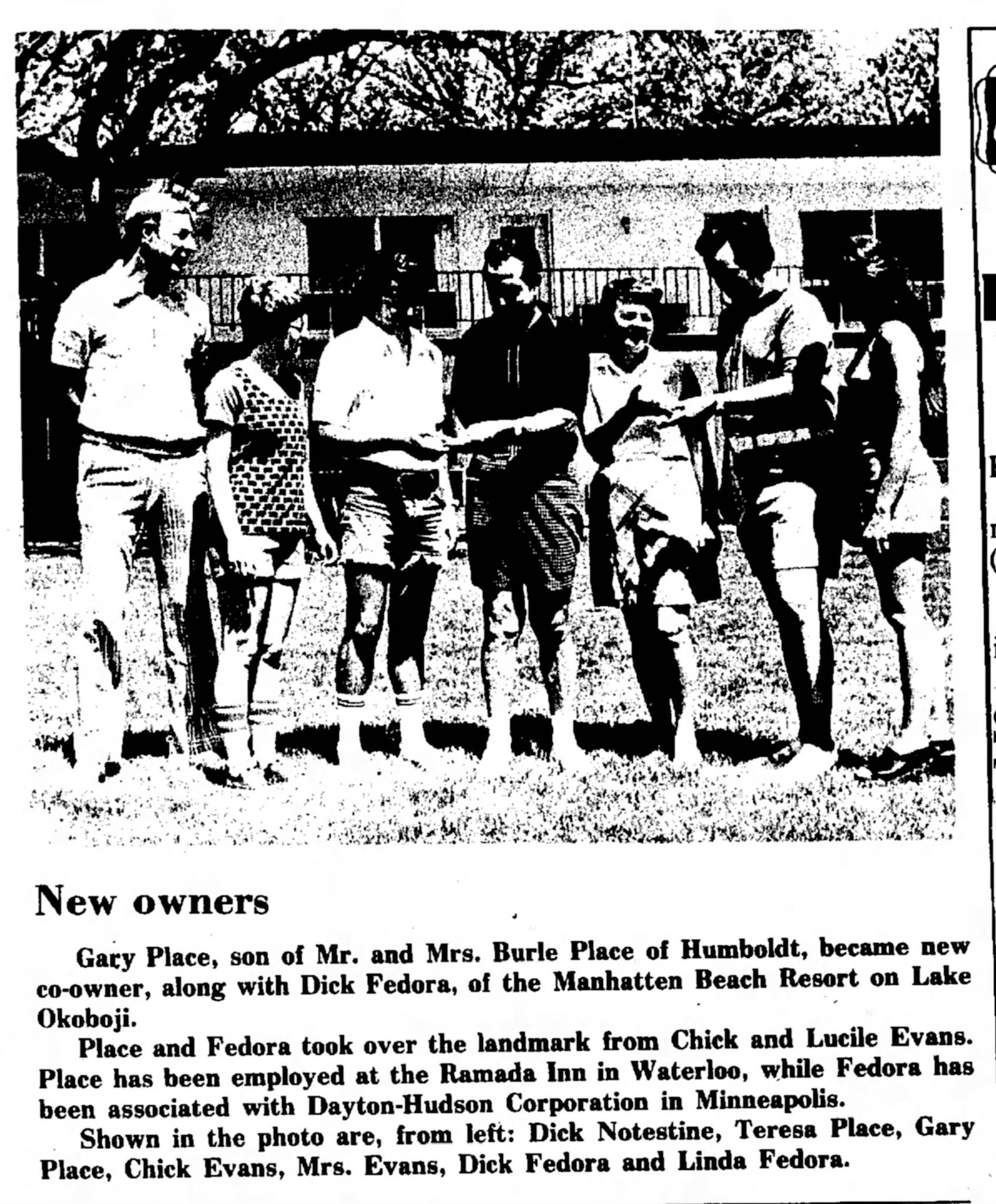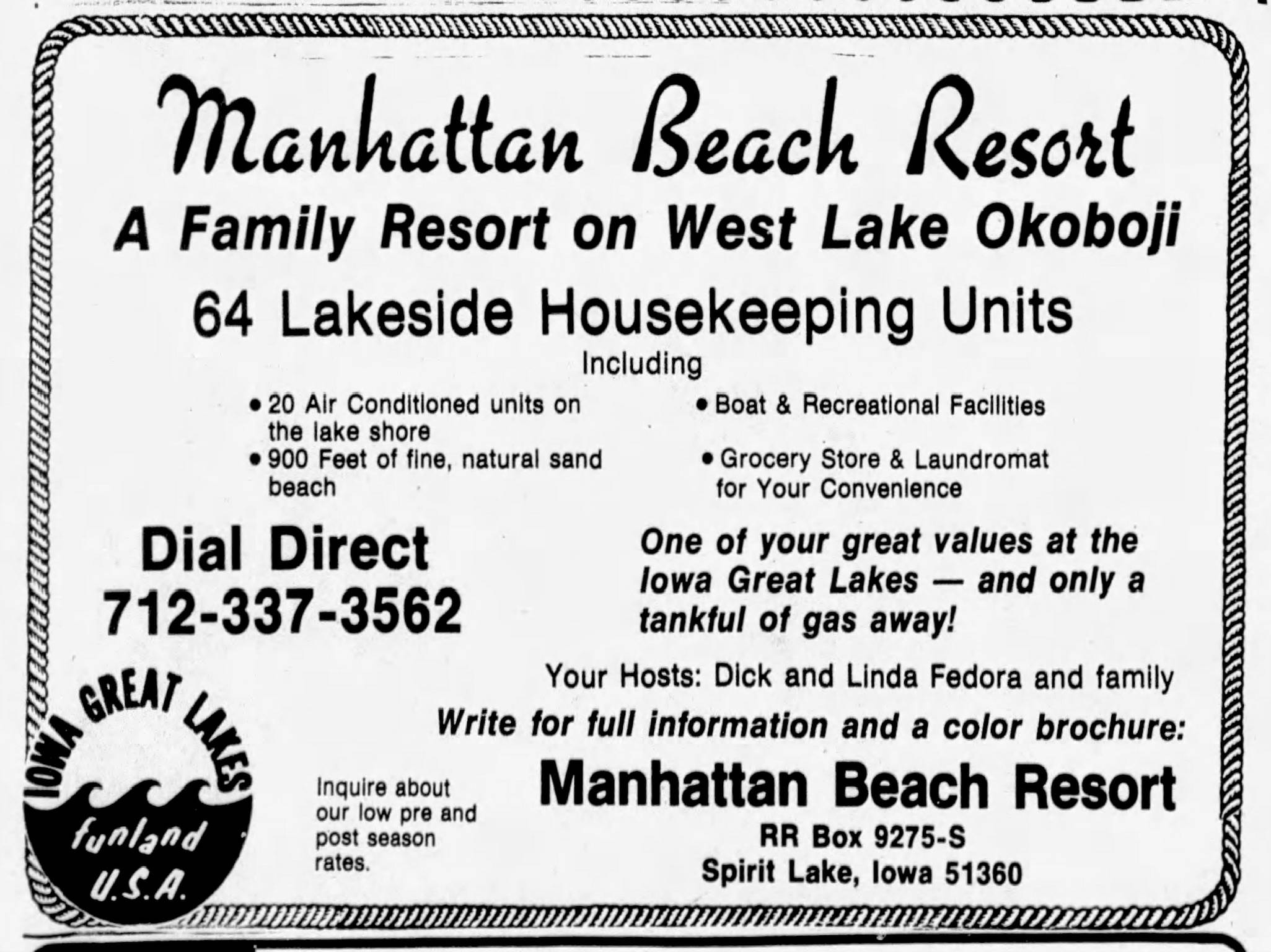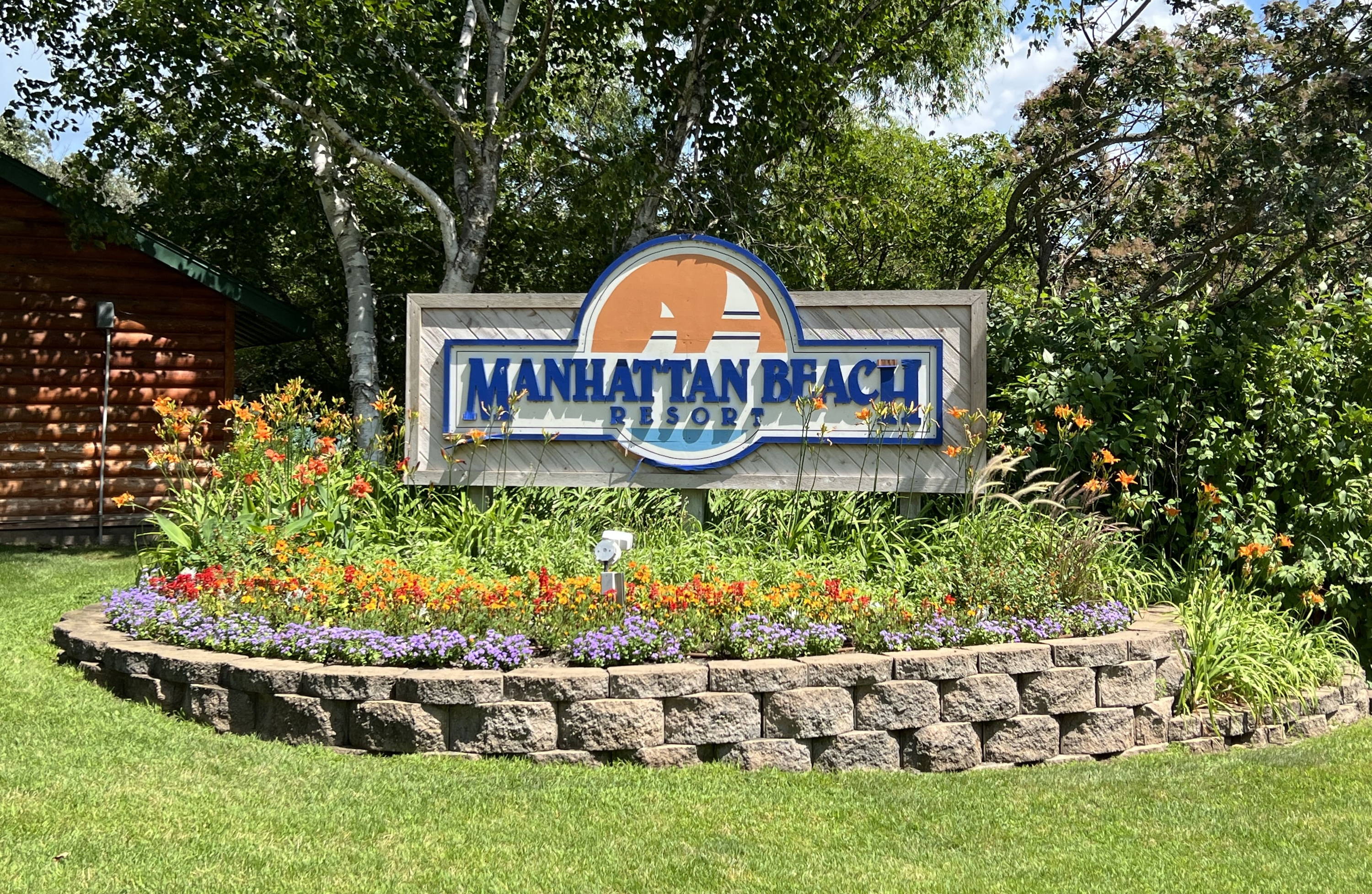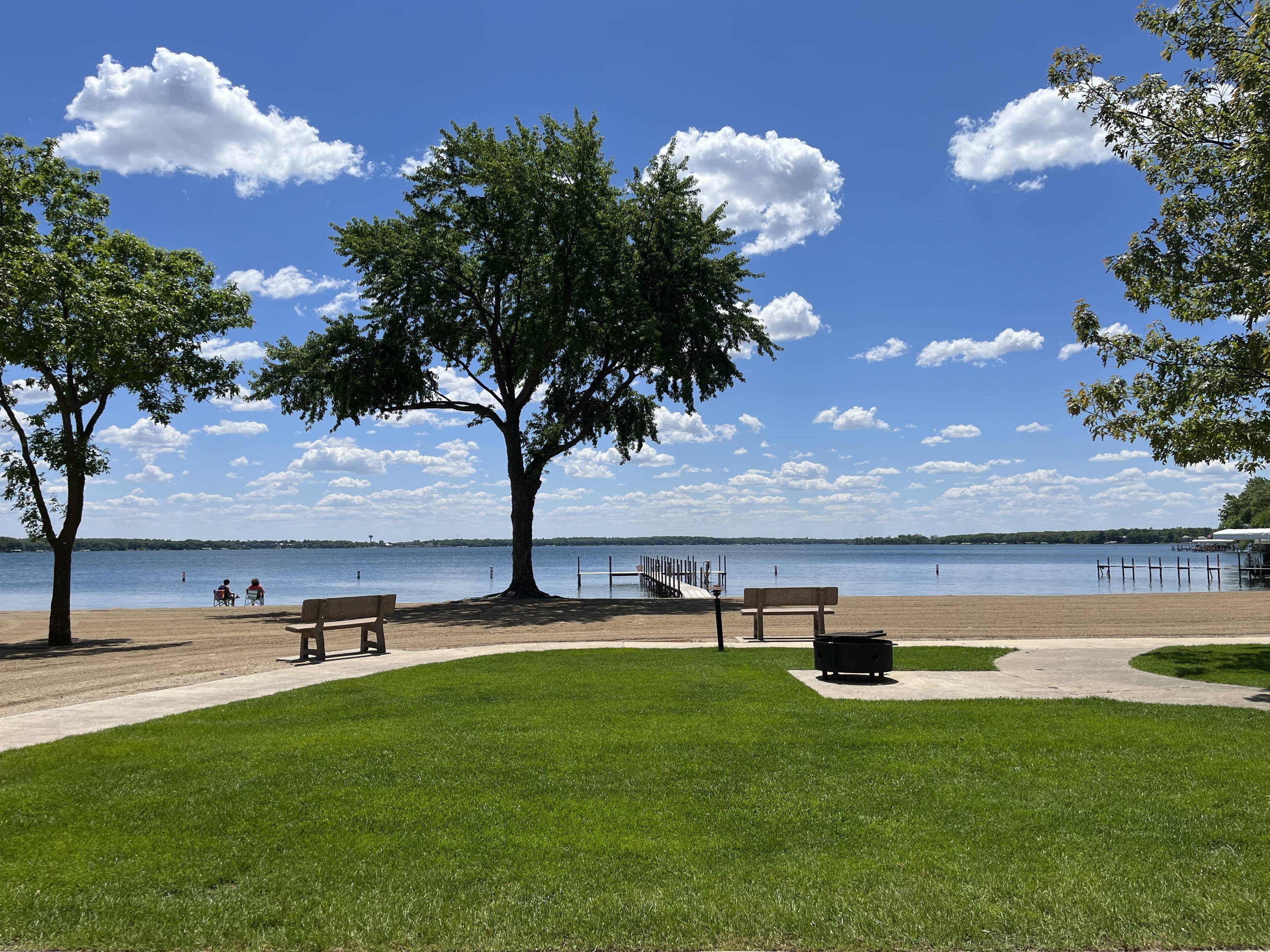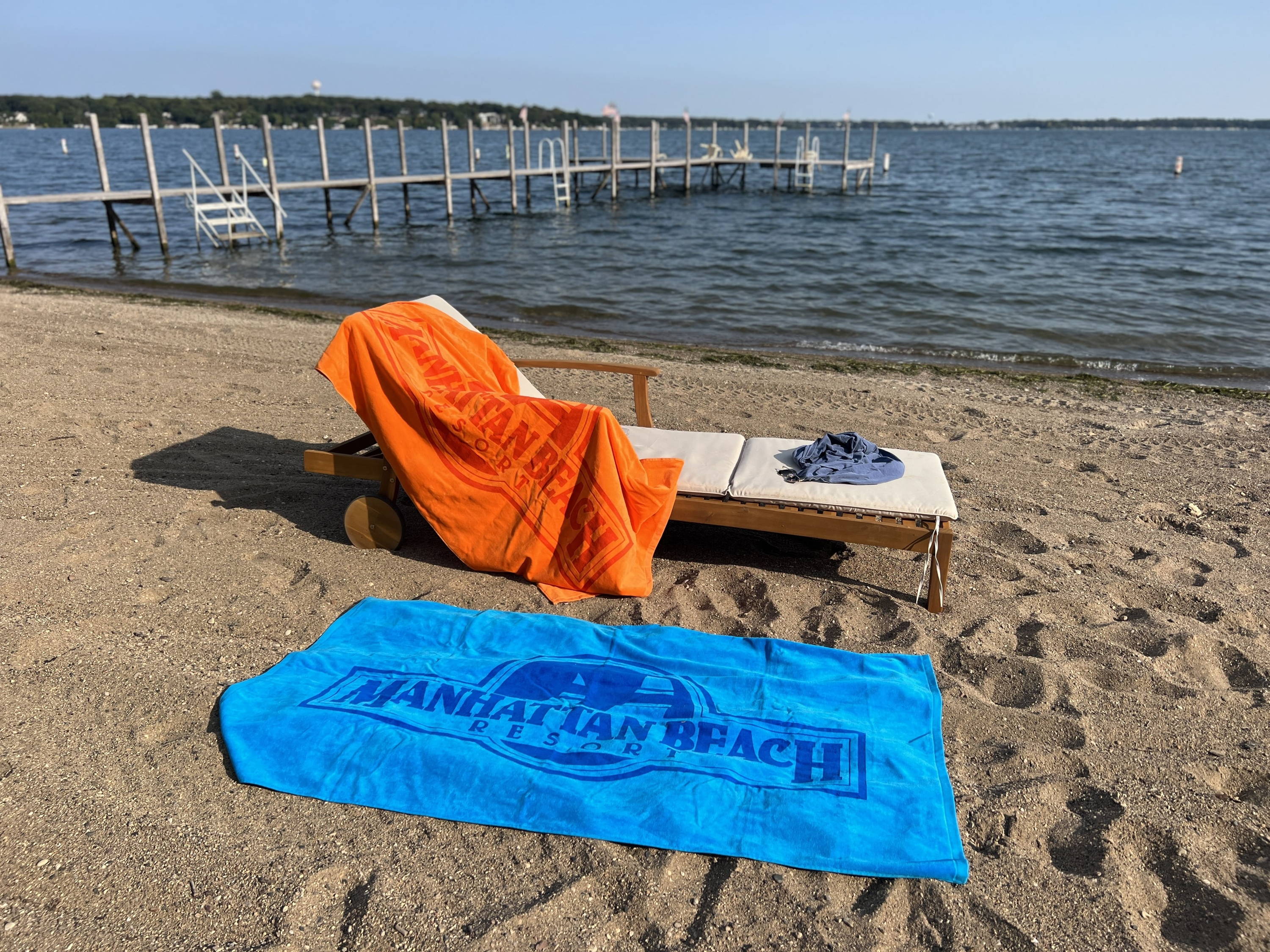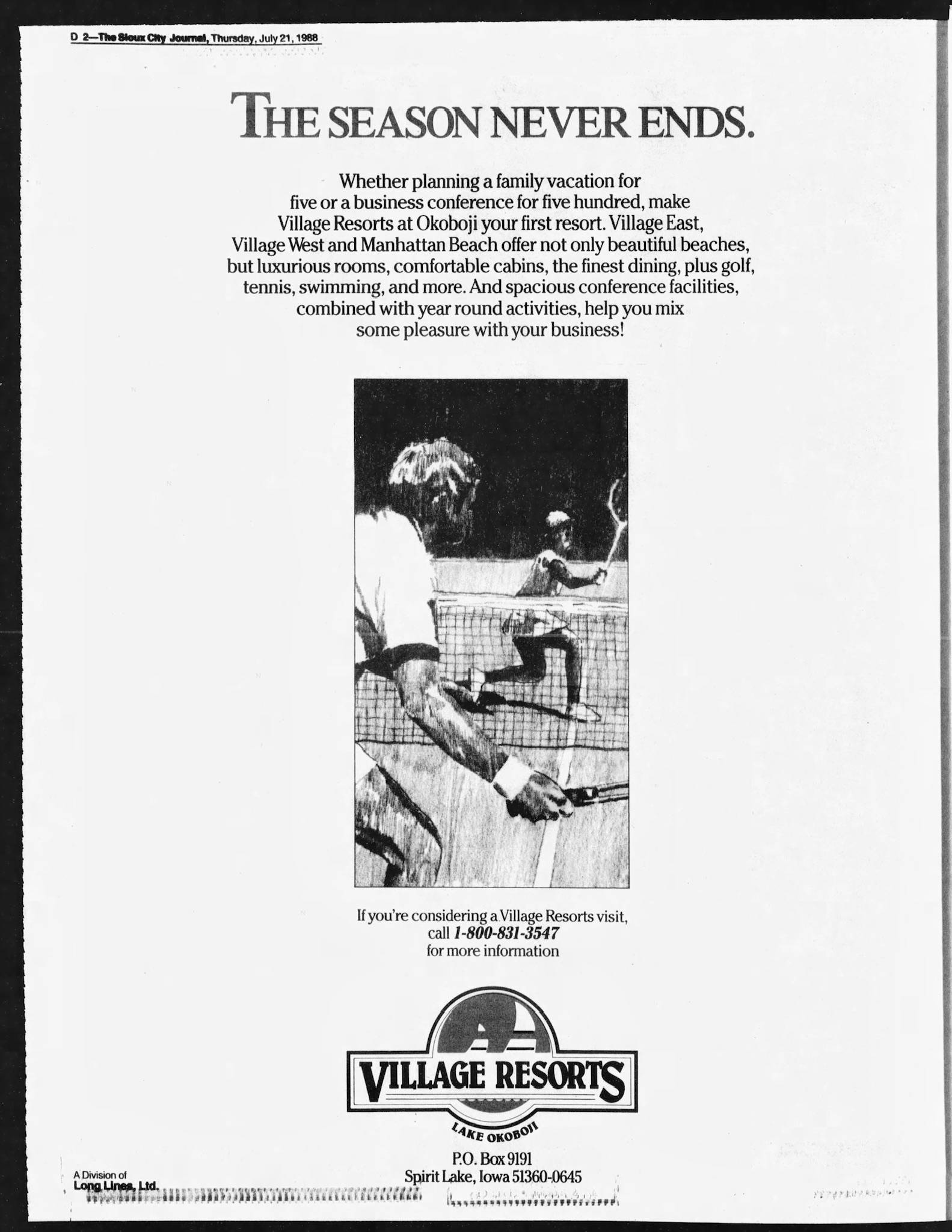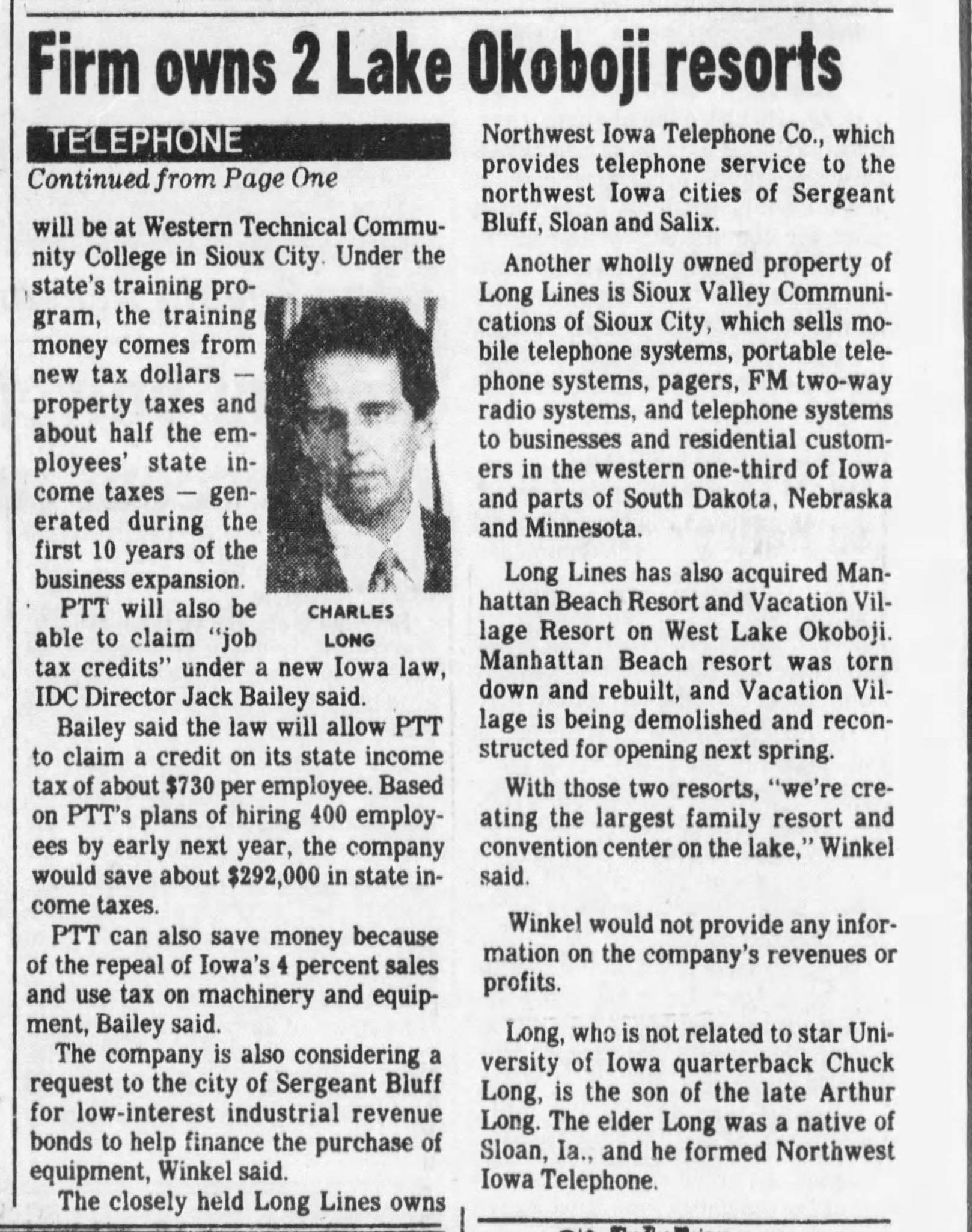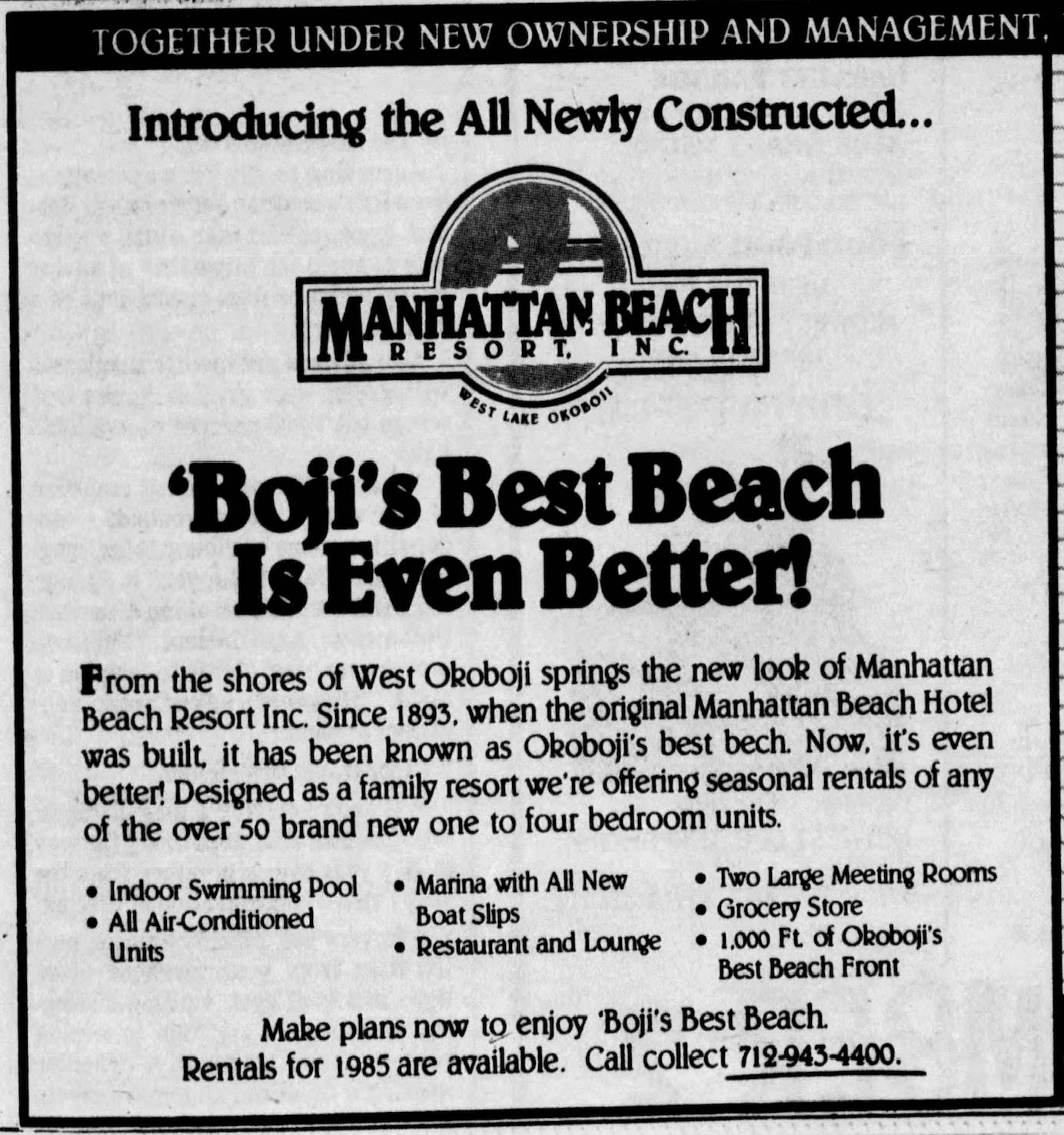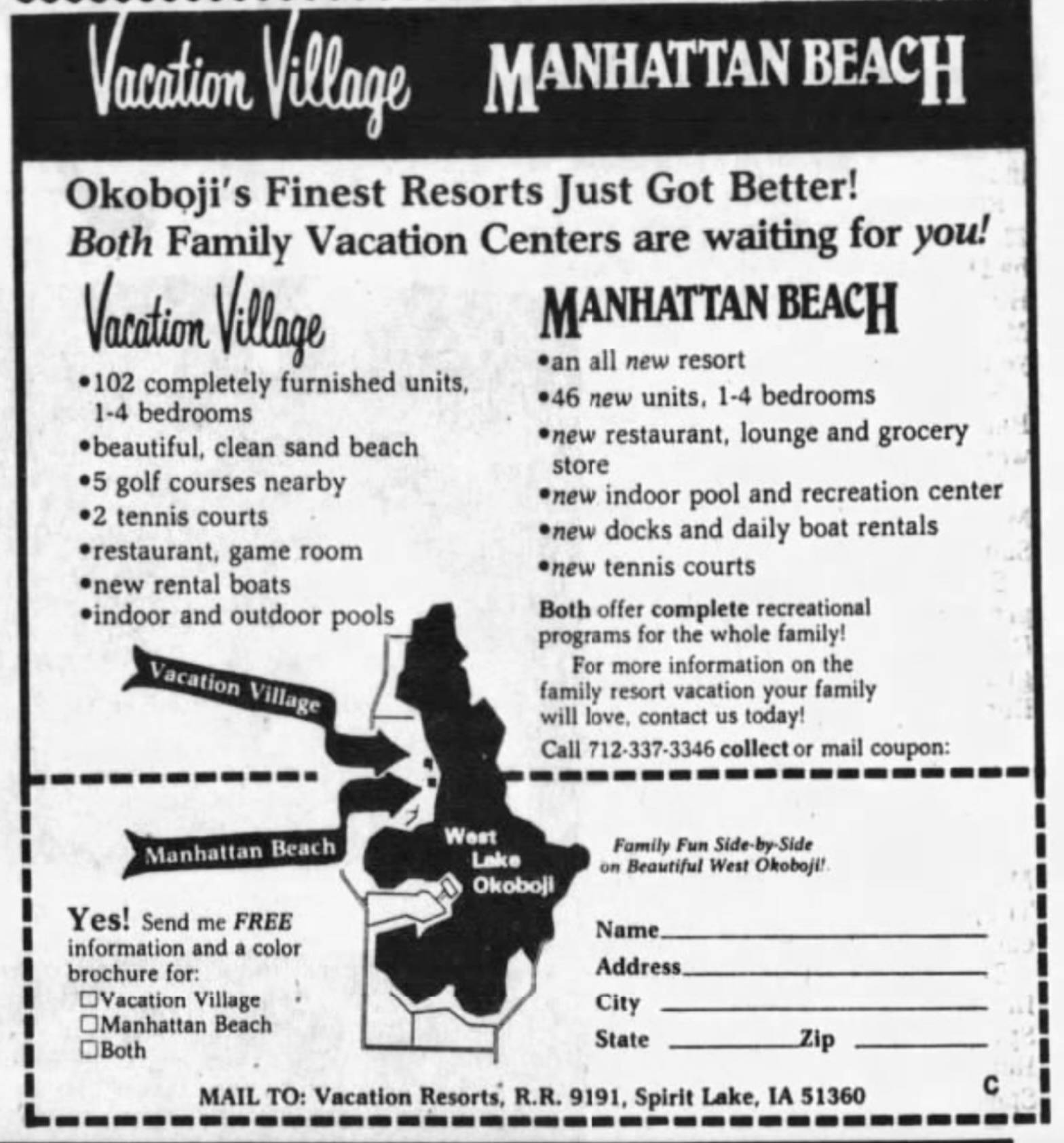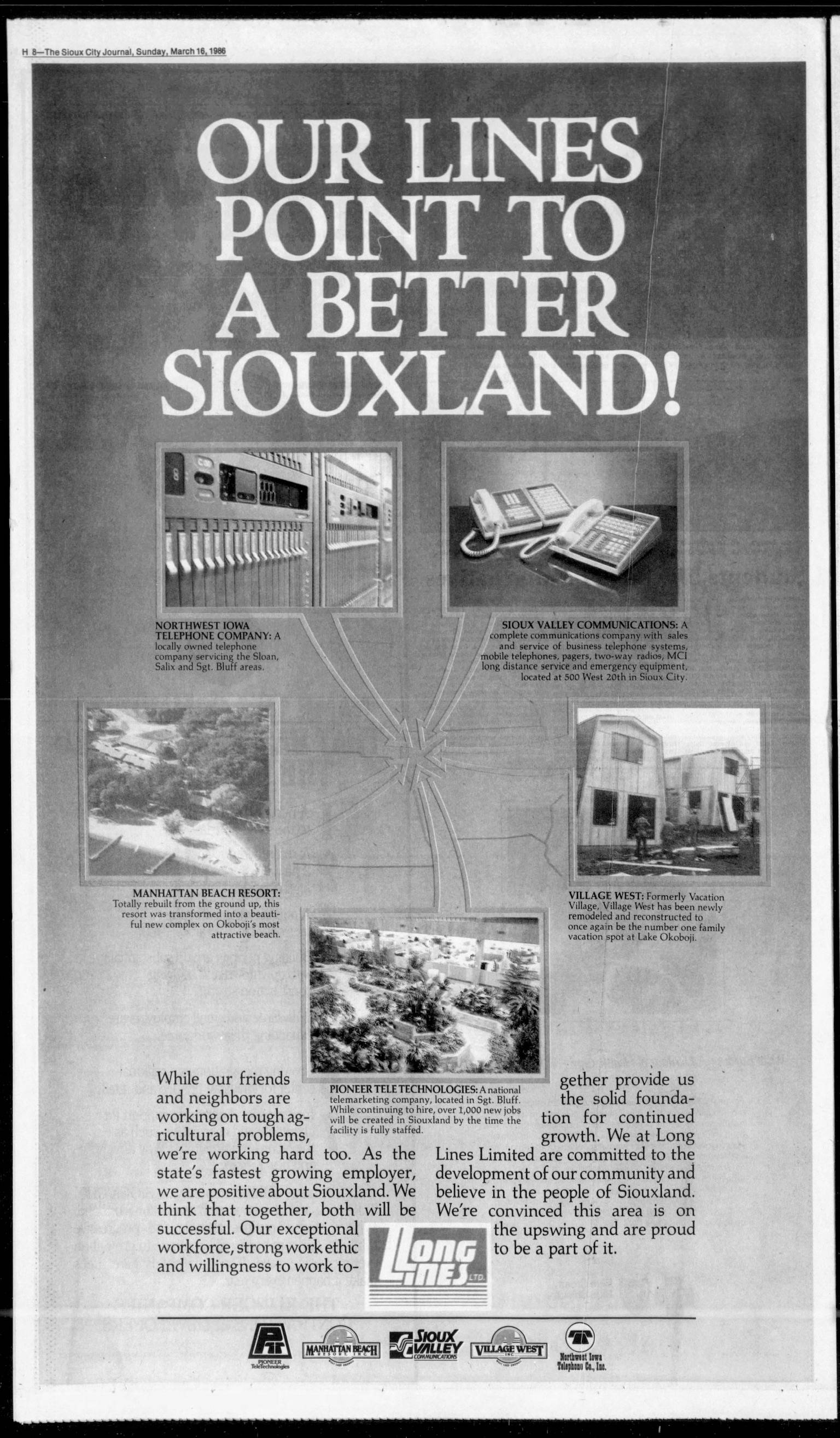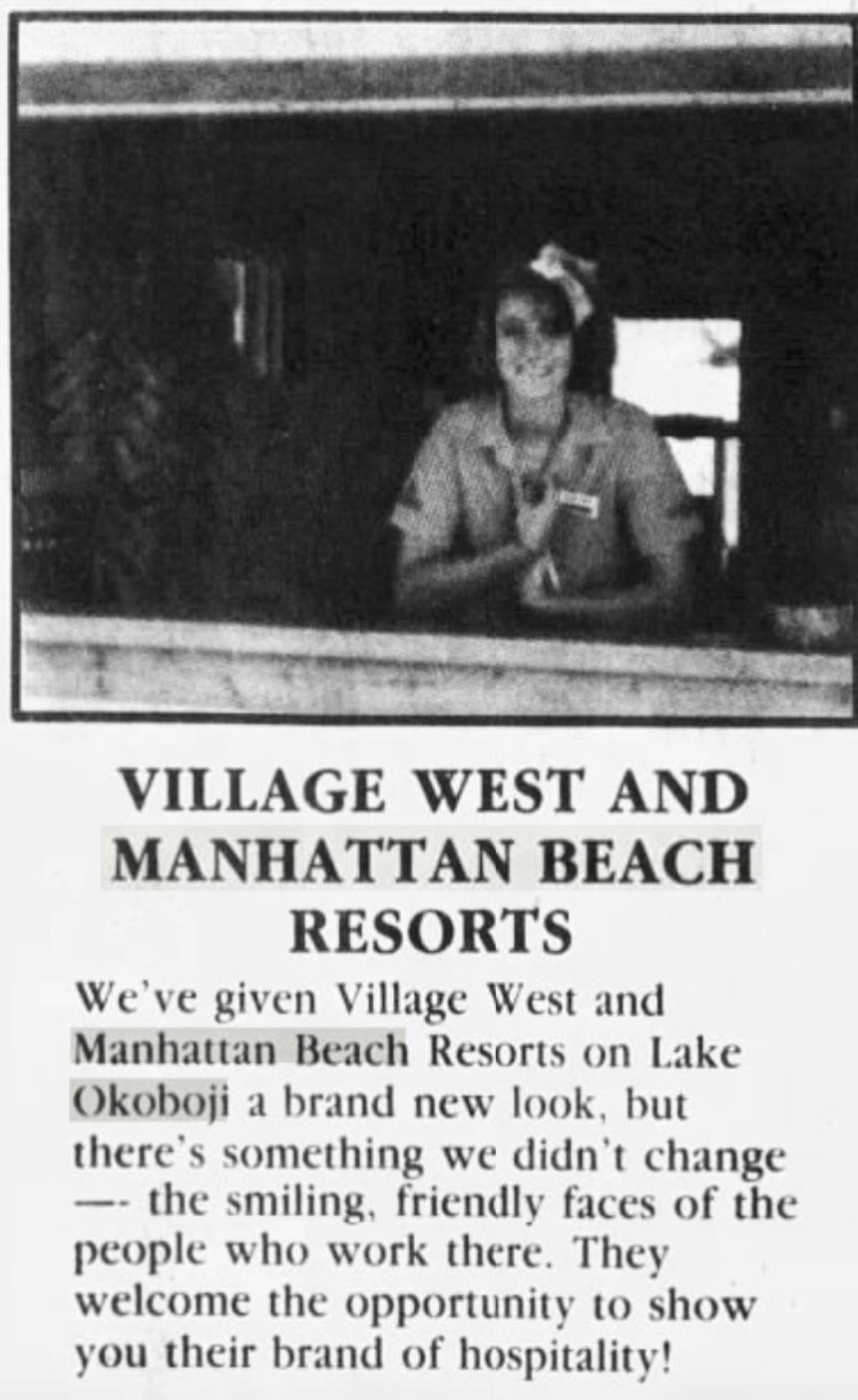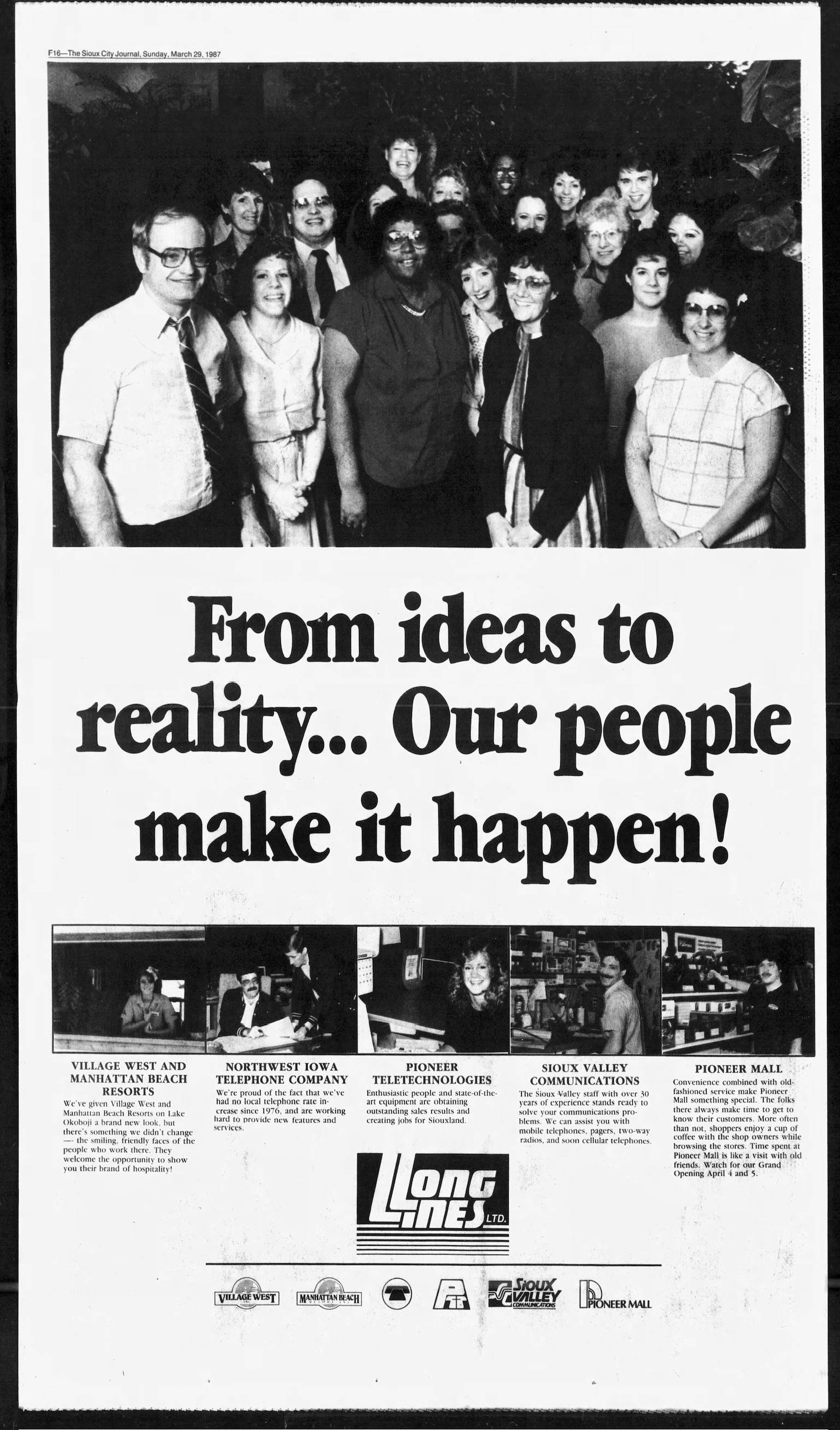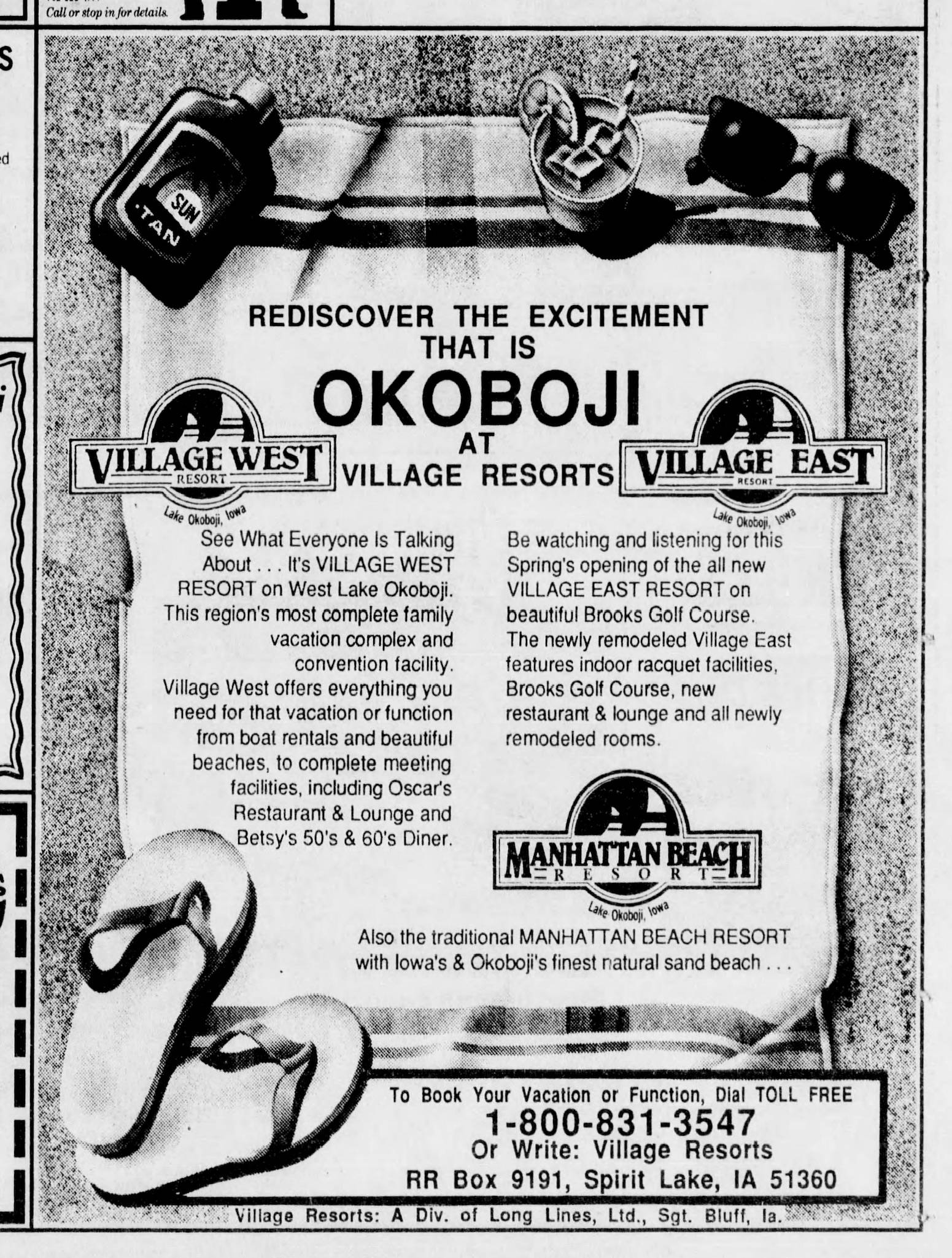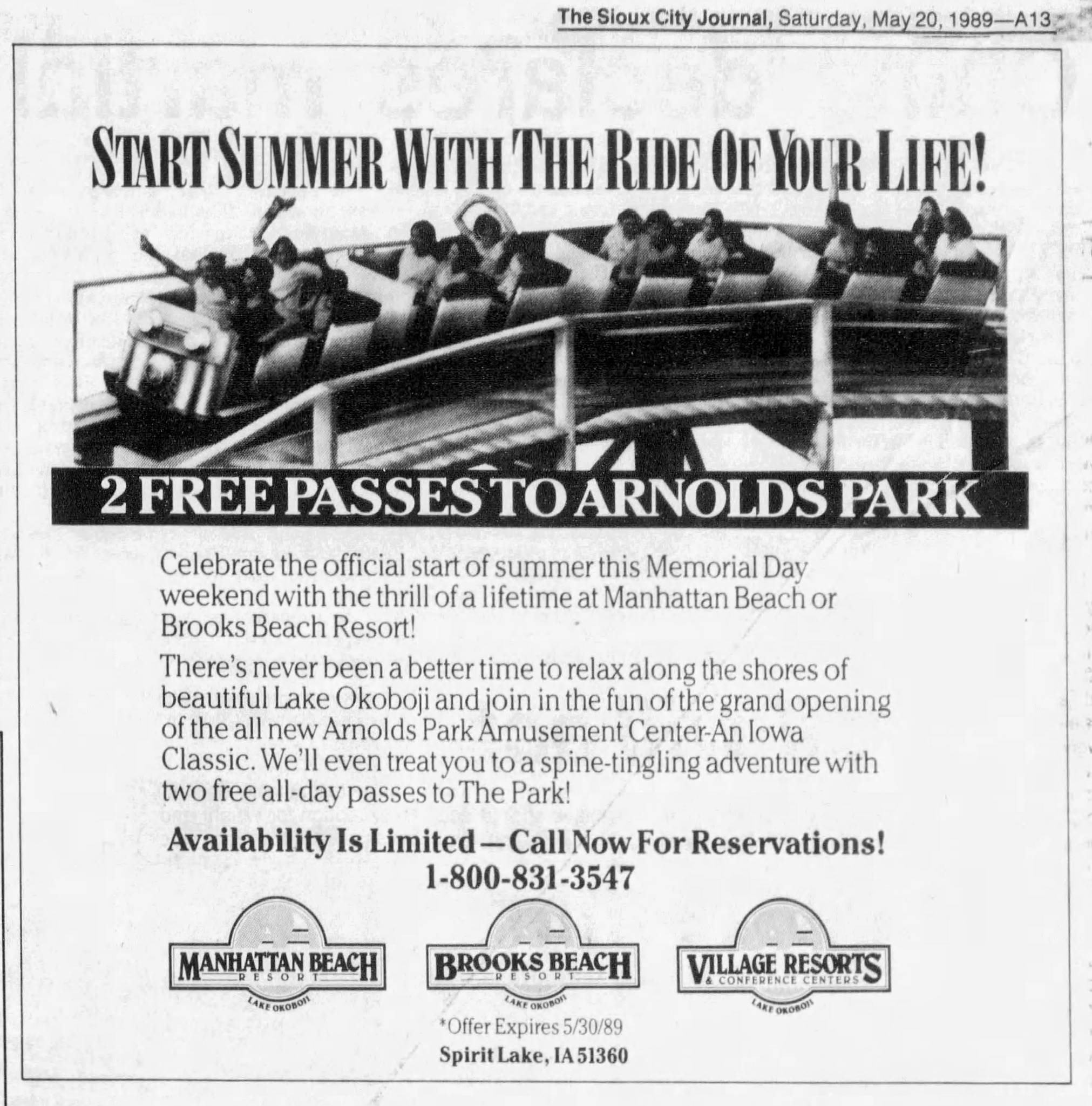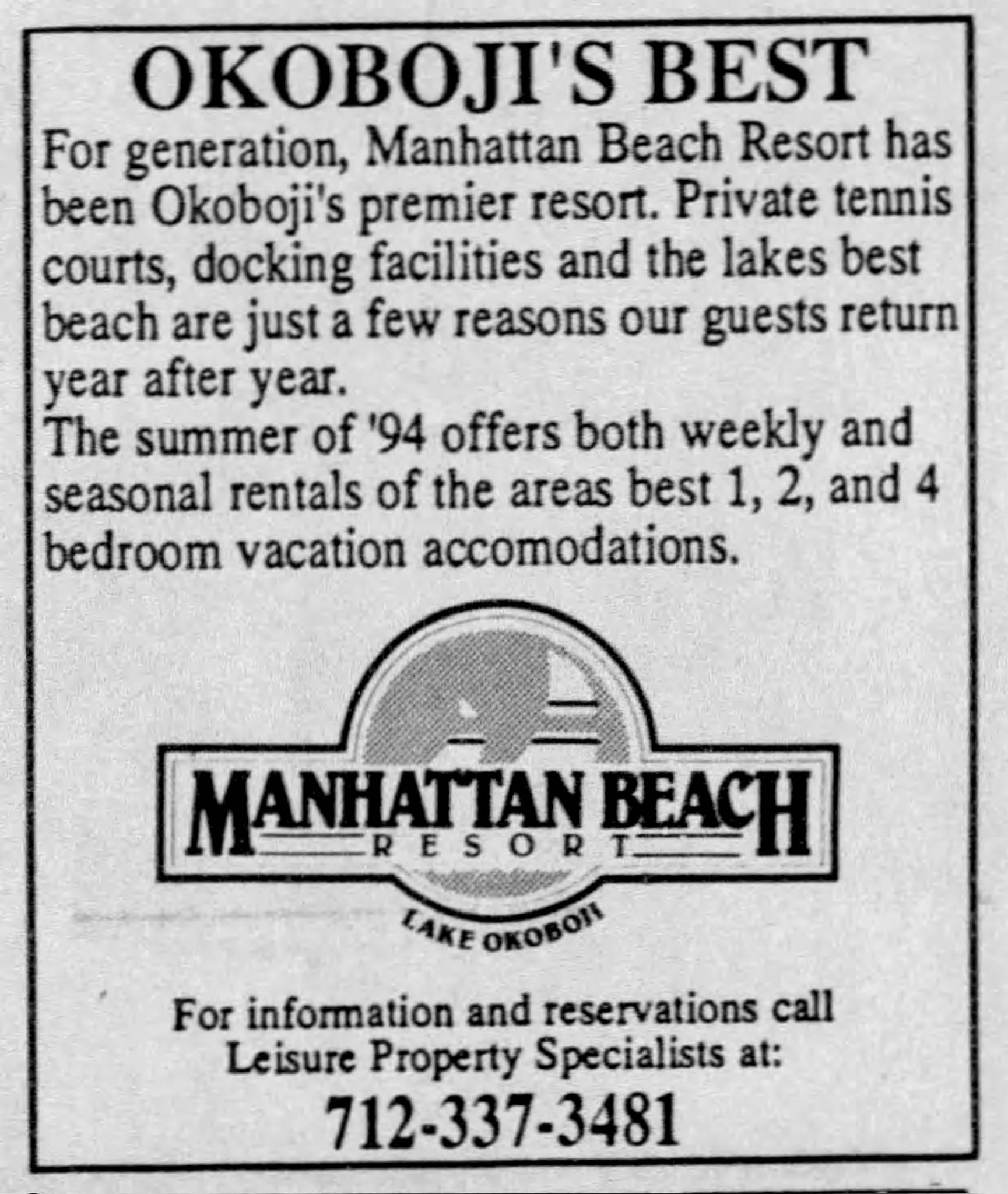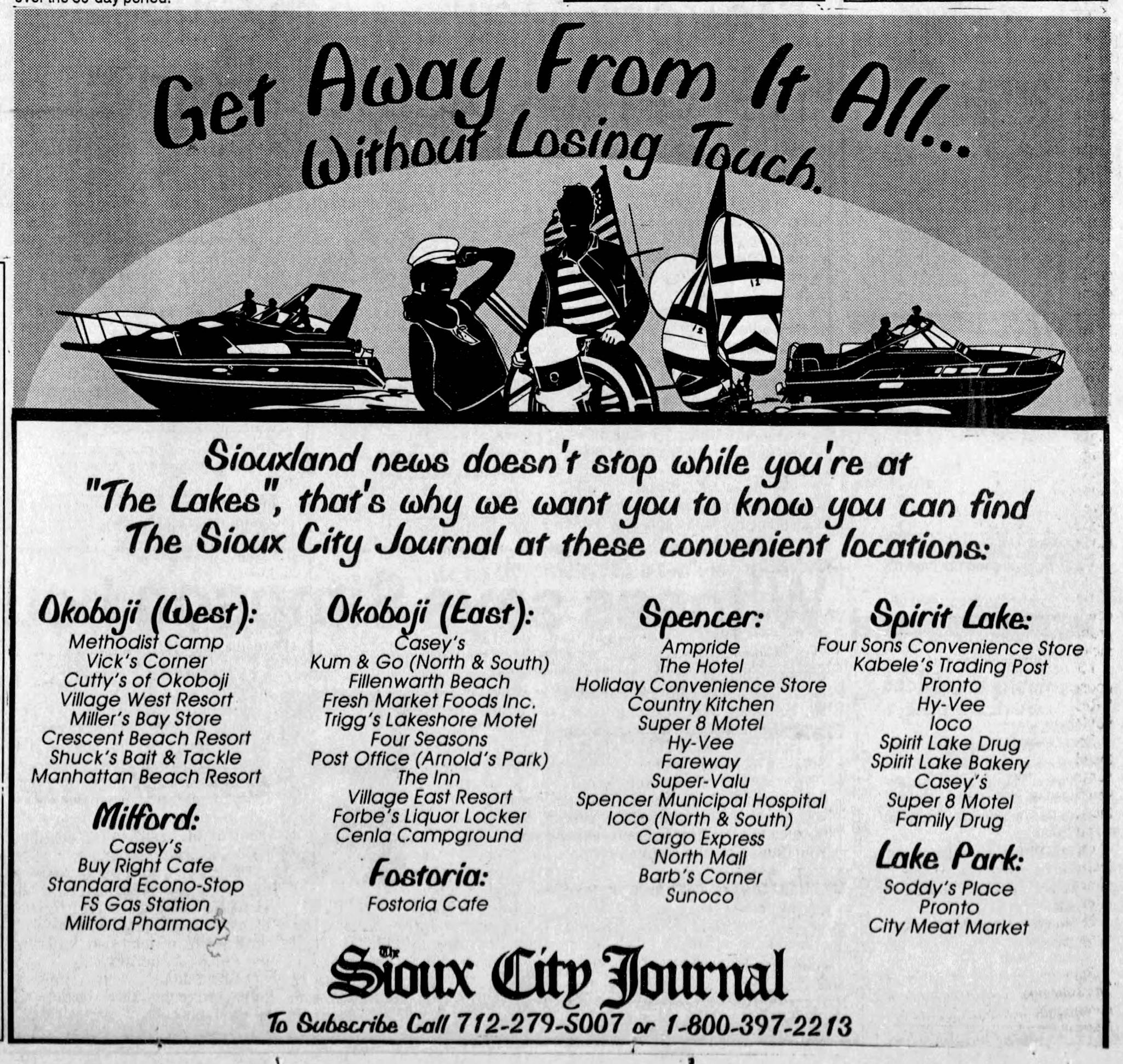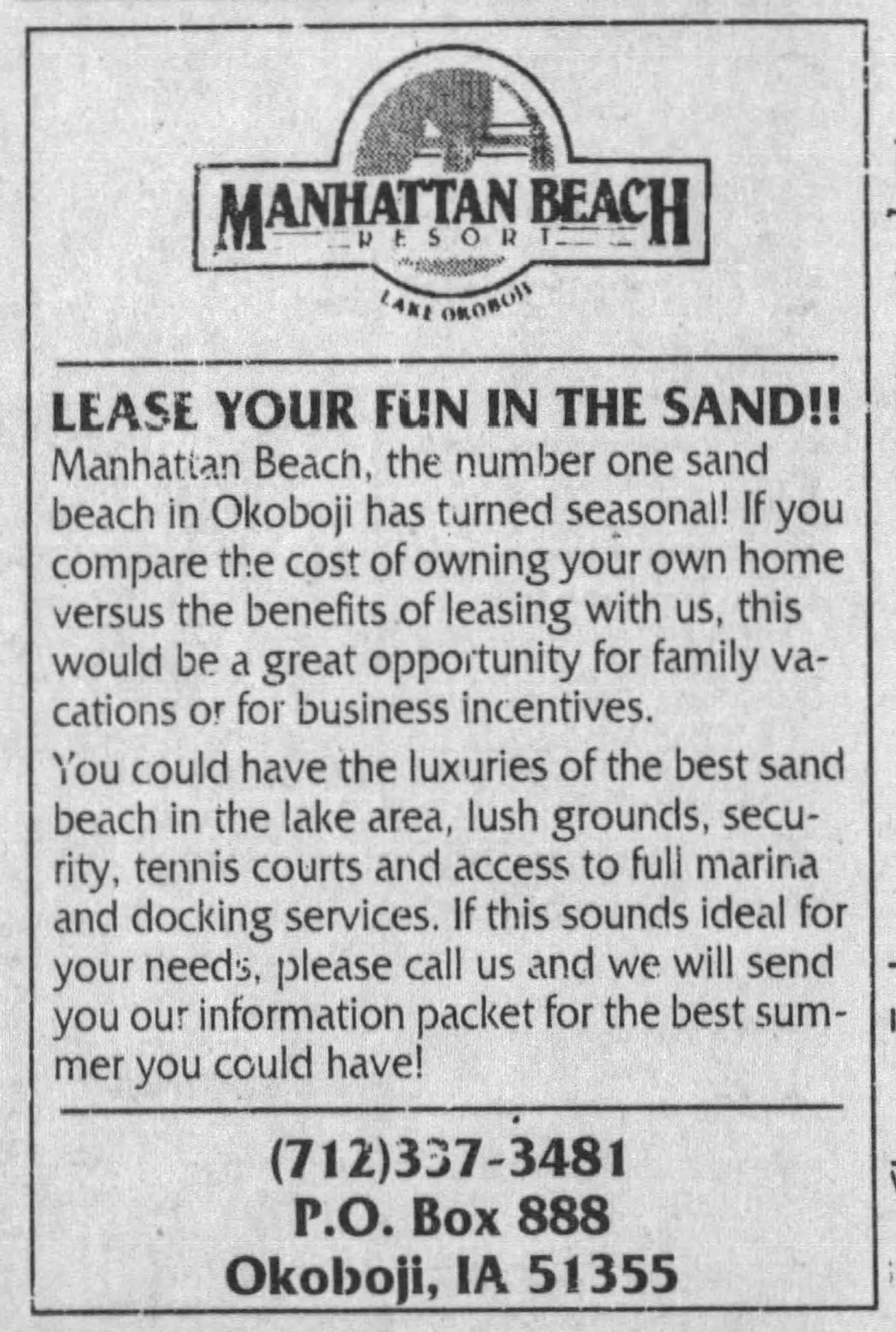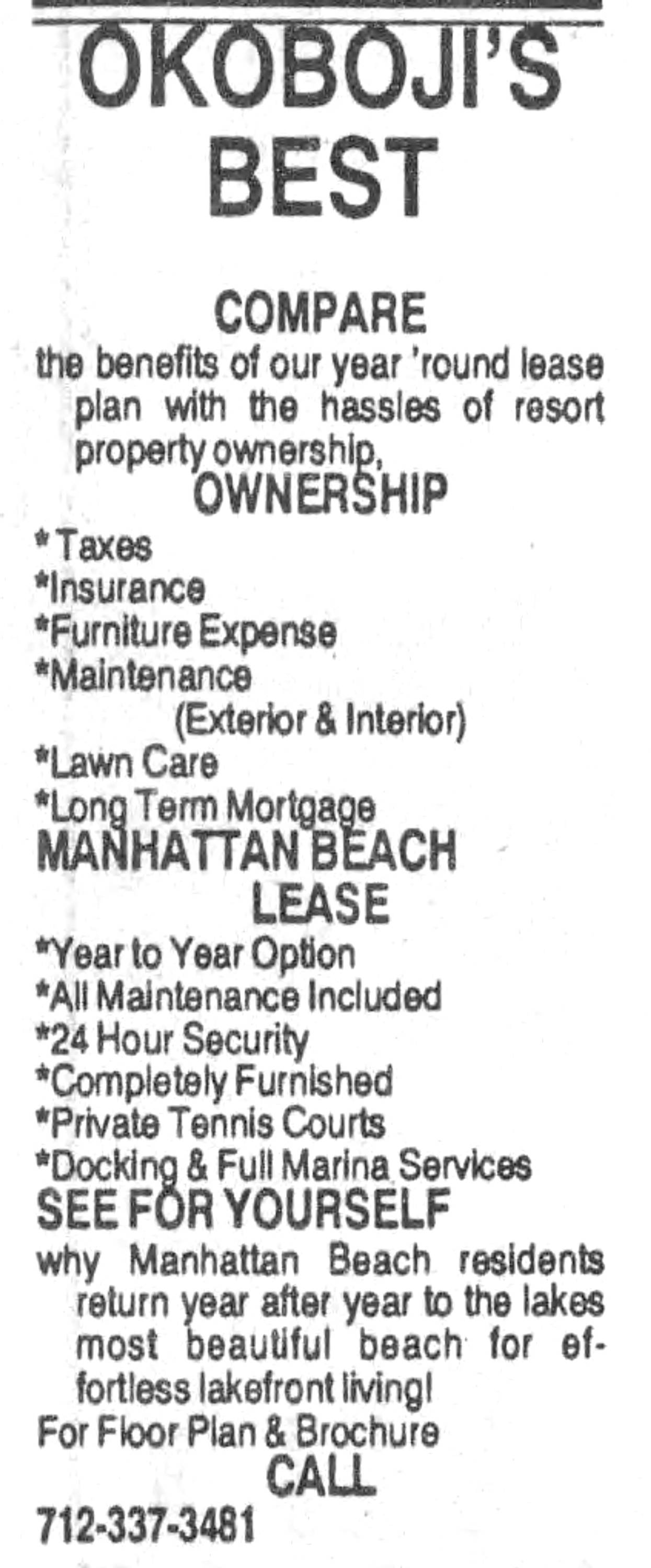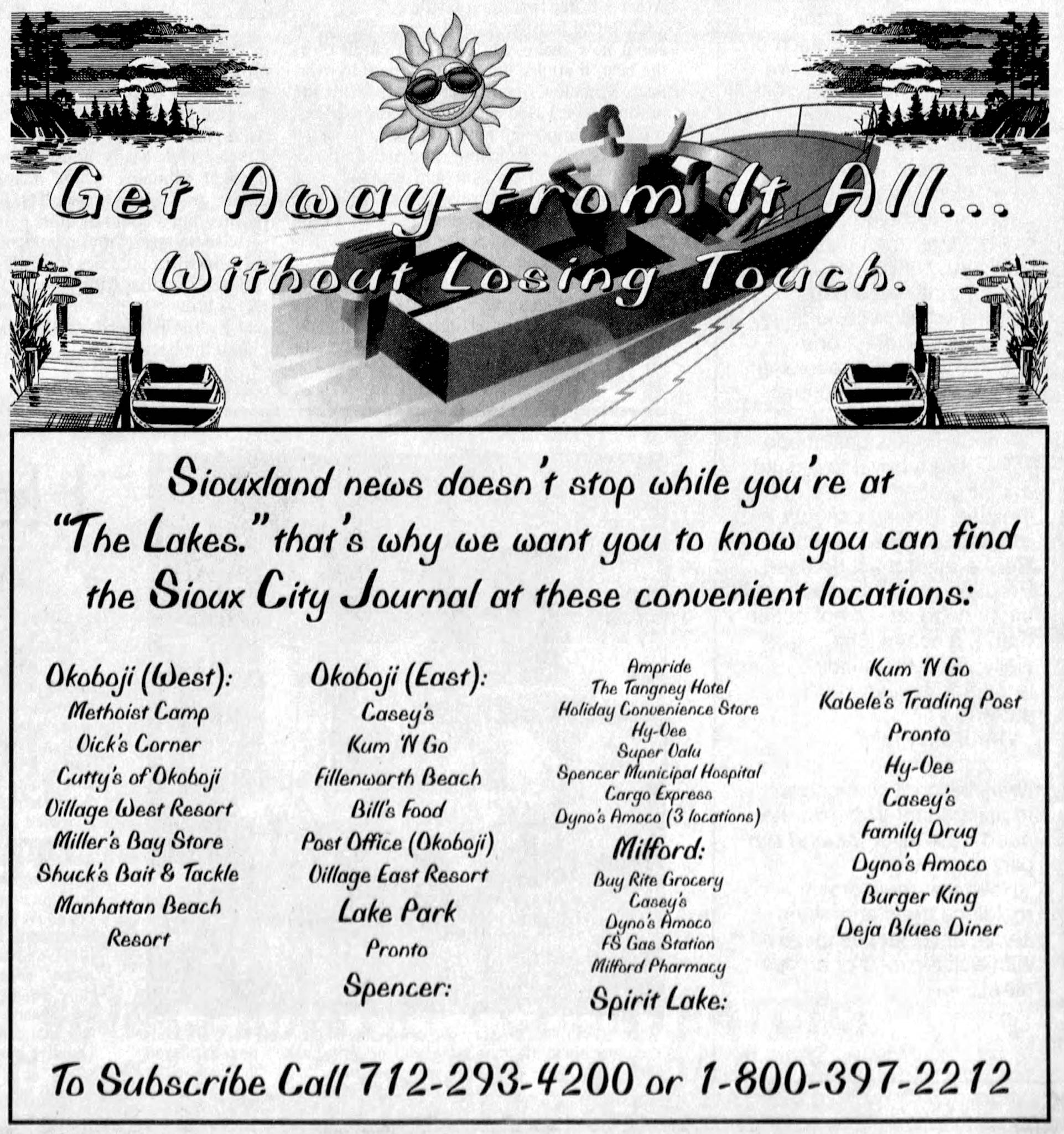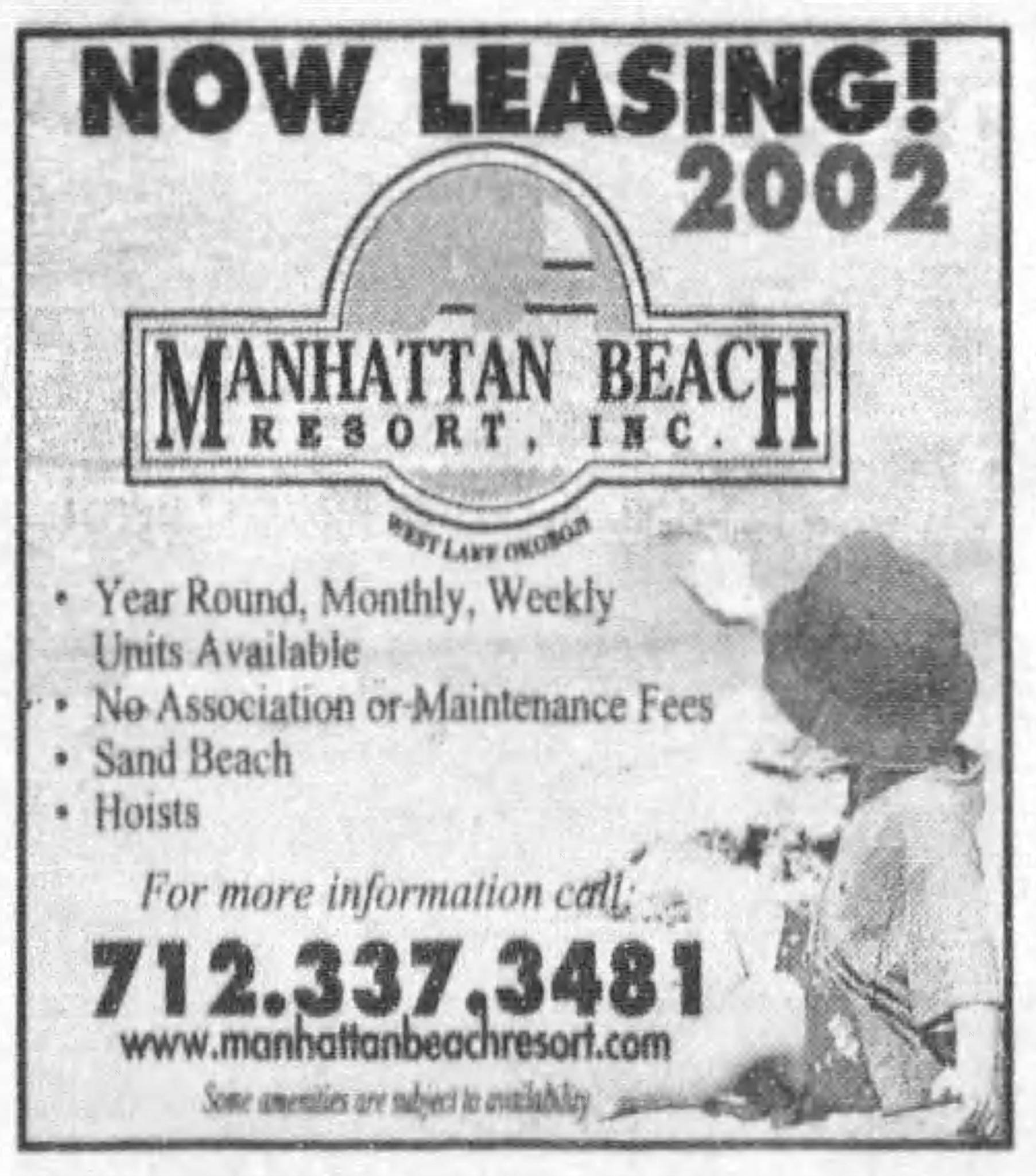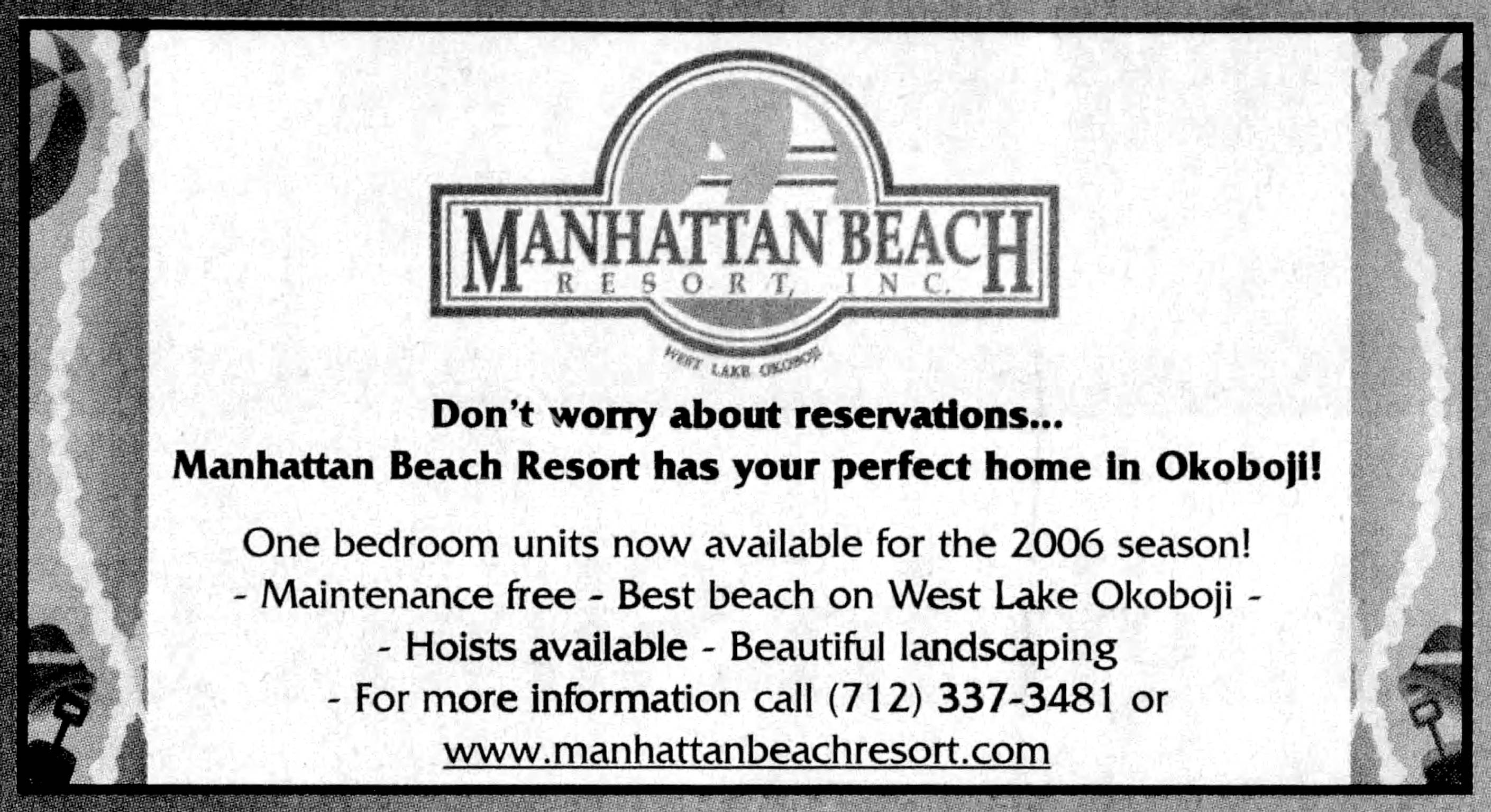Robert Mathieson (the First Settler of Manhattan Beach) and the Spirit Lake Massacre
(Fall 1856 - March 1857)
In July 1856, Rowland Gardner Sr. of New Haven, Connecticut, settled in Okoboji with his wife, Frances, and their four children (Mary, Eliza, Abigail, and Rowland Jr.) Many claim seekers visited the lakes region before the Gardners, but no official claims had yet been staked out. Thus, Gardner and his son-in-law Harvey Luce were the first settlers to establish claims on Lake Okoboji–a “promised land” of natural beauty, abundant fish, wild game, large groves, and sand beaches. They surveyed the entire lakes area and its surrounding prairies but ultimately decided to construct grand cabins on the southeastern shore of West Lake Okoboji, close to (what is now known as) Pillsbury’s Point. By November 1, 1856, at least six other groups of people settled after the Gardners and Luces–all within a six-mile radius of the Gardner cabin.
The first family to settle after the Gardners were the Mattocks of Delaware County, Iowa. The Mattocks brought with them an 18-year-old young man named Robert Mathieson (frequently misspelled 'Madison'.) Robert was the only member of the Mathieson family who spent Winter 1856 in Okoboji. The rest planned to join Robert in Spring 1857 after he constructed suitable accommodations for them.
The Mattocks settled at the south end of the Okoboji Bridge (about one mile from the Gardner cabin.) Robert Mathieson, however, claimed the large grove along the western shores of West Lake Okoboji. Although this area is now known as Manhattan Beach, these shores were known for many years as “Madison Grove.”
After several years of growing tension and (minor) violent conflicts between the settlers and the Wahpekute tribe of the Santee Sioux (led by 55-year-old renegade chief Inkpaduta), the Wahpekute massacred nearly all of the Okoboji settlers in early March 1857. It was a particularly harsh winter and resources were low for both the Wahpekute and settlers alike; starvation and death was imminent. Thus, the tribe first attacked the Mattock cabin and killed everyone inside, including Robert Mathieson. The first U.S. troops to arrive in Okoboji after the massacre documented that the Mattock Cabin and its occupants were the only group to put up a resisting fight against the Wahpekute’s slaughter.
Shortly after attacking the Mattock cabin, the Wahpekute went to the Gardners' cabin. They demanded all of the Gardners' flour–only to immediately shoot Rowland Sr. from behind as he went to retrieve it. The tribe then viciously and relentlessly killed everyone in the cabin (including the youngest children), sparing only 13-year-old Abigail (Abbie) Gardner–possibly due to her exotic light-colored hair and blue eyes.
By the end of the Spirit Lake Massacre, the Wahpekute tribe killed at least 36 Okoboji settlers. They held Abbie Gardner and three other women (Thatcher, Noble, and Marble) as prisoners for several months. The Wahpekute killed Thatcher for being ill and unable to keep up with the intense slave labor. Inkpaduta’s son, Roaring Cloud, clubbed Noble to death for refusing to exit a tipi. The tribe traded Marble (unknowingly to her eventual freedom) for various goods. And finally, approximately three months after the massacre, Abbie Gardner was also ransomed for two horses, two kegs of powder, 12 blankets, 20 pounds of tobacco, 32 yards of blue cloth, 37.5 yards of calico and ribbon, and other miscellaneous articles. Her obedience, stoicism, perseverance, and baking skills (in addition to her appearance) mystified the Wahpekute and saved her life. Nevertheless, on May 30, 1857, she finally returned to freedom.
By 1862, the Sioux’s string of massacres reached a slow yet bloody end in Minnesota.
In 1885, Abbie Gardner published a short memoir of the massacre and her captivity–which became a very popular seller. Six years later, in 1891, she returned to Okoboji for the first time and bought her family’s cabin. The state erected a monument close to the Gardner cabin to honor the massacred settlers in 1895. Gardner operated the cabin as a tourist site until she died in 1921.
Abbie Gardner, Robert Mathieson, and Inkpaduta
Artistic Depictions of the Spirit Lake Massacre
The Gardner Cabin
The Spirit Lake Massacre Monument
David B. Lyons of Des Moines, IA
Original Manhattan Beach Plat Documents
19th-Century Manhattan Beach
Ben Lennox and the Manhattan
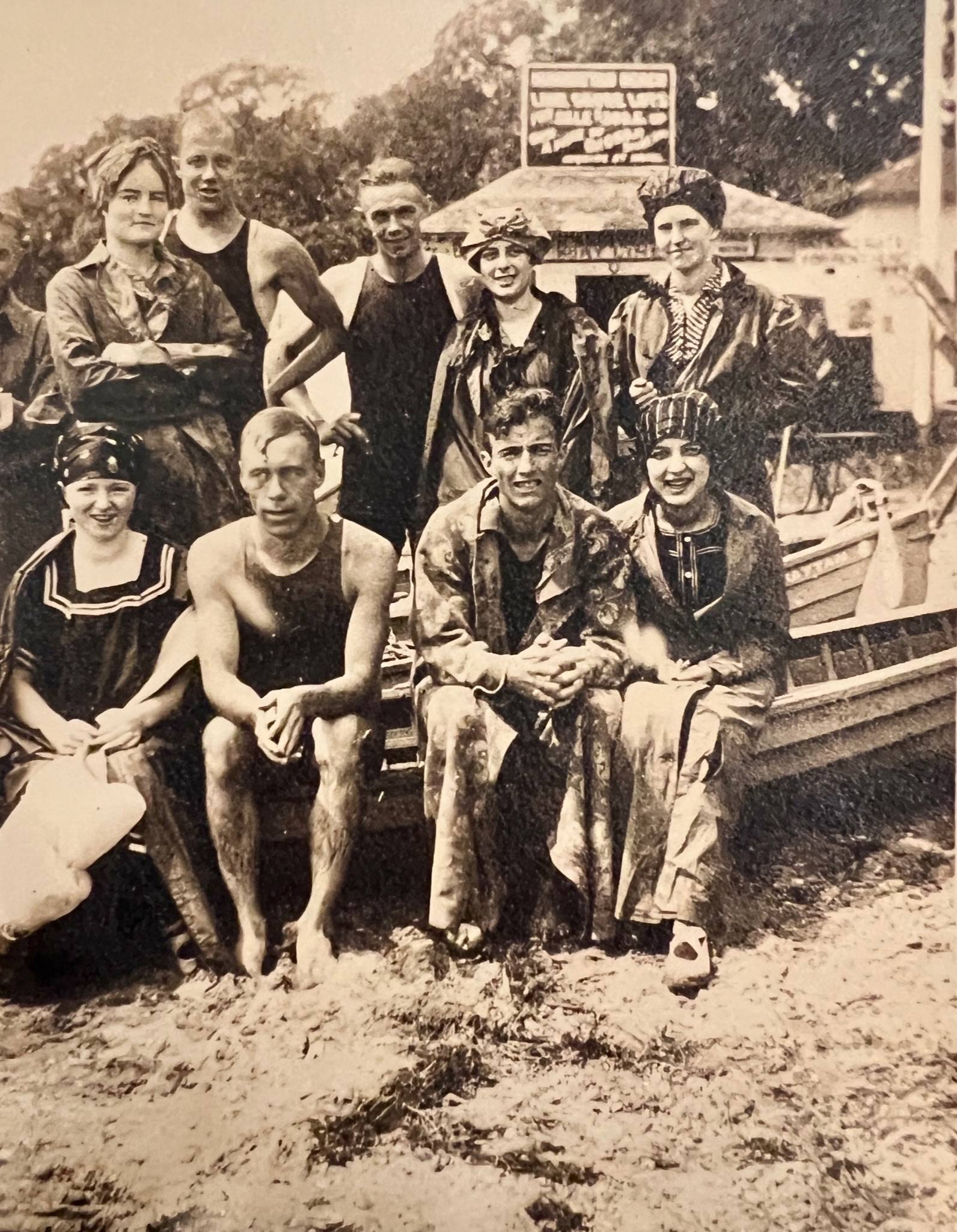
One of the oldest photographs of Manhattan Beach, featuring its swimmers. The sign behind them reads "Manhattan Beach Lake Shore Lots for Sale $300."
David B. Lyons and the Manhattan Beach Company
(January 1892 - 1899)

One of the oldest photographs of Manhattan Beach, featuring its swimmers. The sign behind them reads "Manhattan Beach Lake Shore Lots for Sale $300."
David B. Lyons of Des Moines, IA
Original Manhattan Beach Plat Documents
19th-Century Manhattan Beach
Ben Lennox and the Manhattan
Myerly's Revamped Manhattan
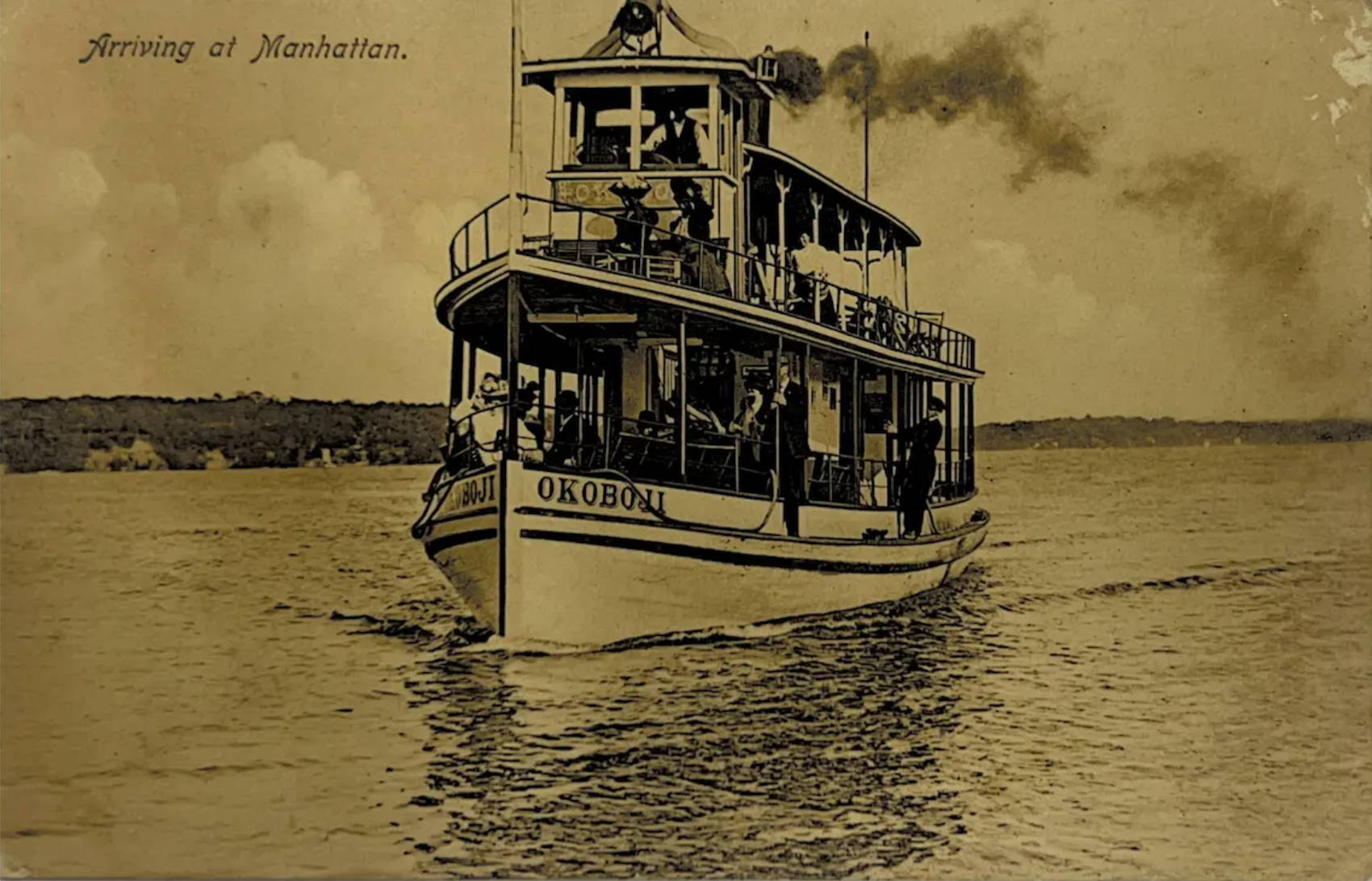
The Okoboji (previously the Manhattan) arrives at the Old Hotel.
Joseph I. Myerly Revitalizes the Manhattan Hotel
(October 1900 - September 1911)
The Manhattan Hotel was essentially deserted after its bankruptcy in 1899.
In October 1900, Joseph I. Myerly of Des Moines formed the Manhattan Hotel and Land Company, of which he and his two sons were the primary incorporators. The company purchased the property with plans of renovating the hotel and building several house lots closer to the hotel. Myerly hired Will A. Brown of Leon, Iowa as manager and his wife as hostess for many successful summers at the resort.
In 1902, Myerly doubled the hotel’s capacity with 14 new bedrooms. He also added a new 40 ft x 90 ft dancing pavilion (with space for an orchestra) and wide porches surrounding the entire building.
By 1903, the hotel had accommodations for 250 guests, a new billiard hall, and a 300 ft long patio with a beautiful, panoramic view of West Lake Okoboji. There were also considerable improvements to the resort’s grounds, beach, boat landings, and a newly installed electric lighting plant.
For the 1905 and 1906 seasons, D.B. Fleming and Horace Birdsall of the Savery Hotel Company of Des Moines leased out the Manhattan Hotel. Unfortunately, this arrangement lasted only two summer seasons after Birdsall died of a heart attack in August 1905.
For about a decade, Myerly relied heavily on the “certainty” that there would be a rail line built along the west side of the lake–taking travelers directly to Manhattan with no need for steamers or sailboats. This line, however, was never built and forced Myerly to cut his losses. As a result, Myerly sold the Manhattan Hotel in 1911.
Myerly's Revamped Manhattan

The Okoboji (previously the Manhattan) arrives at the Old Hotel.
Life at Old Manhattan
Old Manhattan Beach Advertisements
Owners of the Manhattan Beach Hotel
(September 1911 - May 1933)
Life at Old Manhattan
Old Manhattan Beach Advertisements

Hobart A. Ross Rebuilds Manhattan
(April 1933 - September 1948)
Ross's Manhattan Cottages
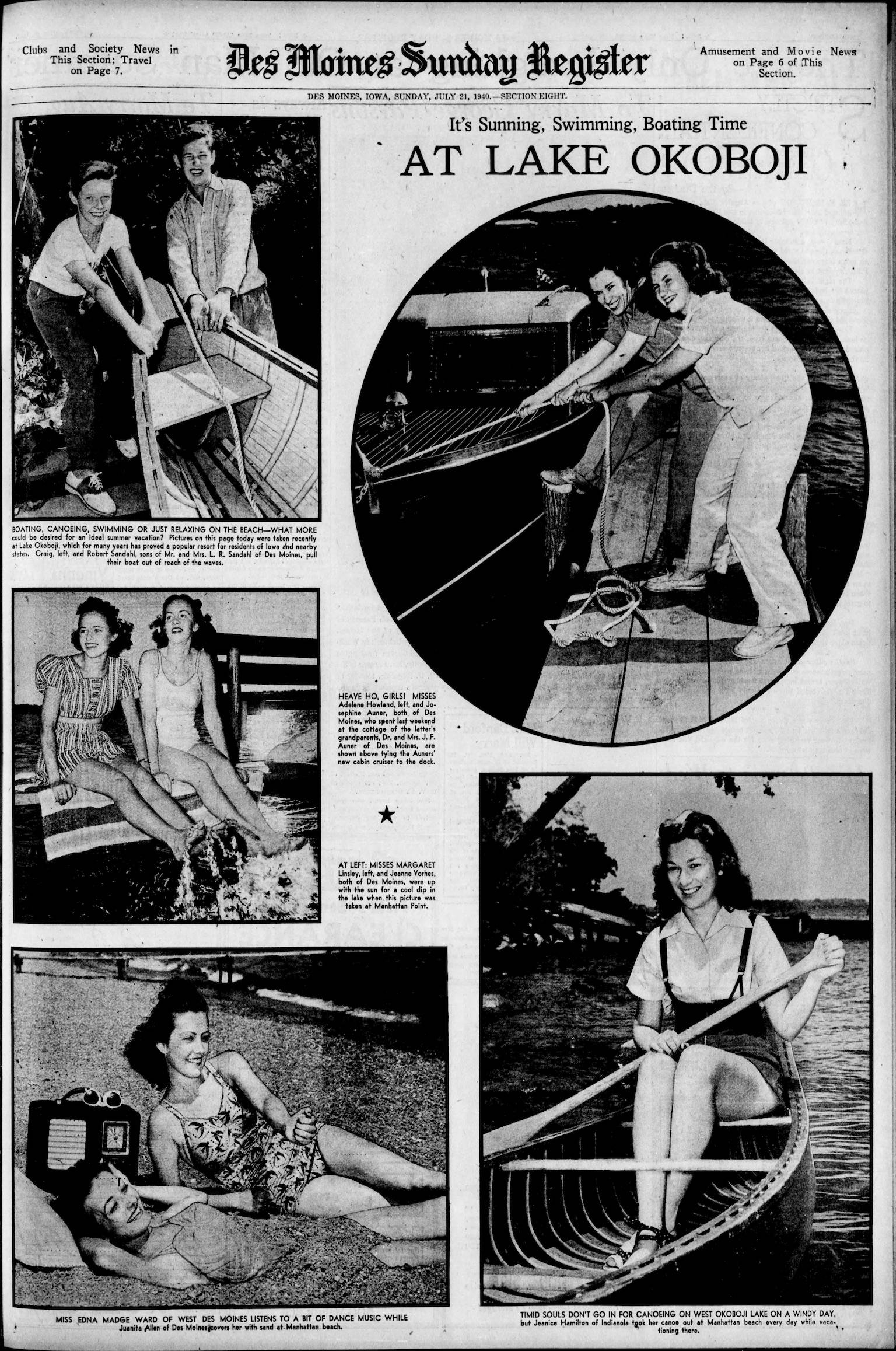
Ross's Manhattan Cottages
Evans's Manhattan (February 1957 - June 1975)
Fedora's Manhattan (June 1975 - March 1984)
Previous Owners of Manhattan Beach Resort
(September 1948 - March 1984)
Evans's Manhattan (February 1957 - June 1975)
Fedora's Manhattan (June 1975 - March 1984)
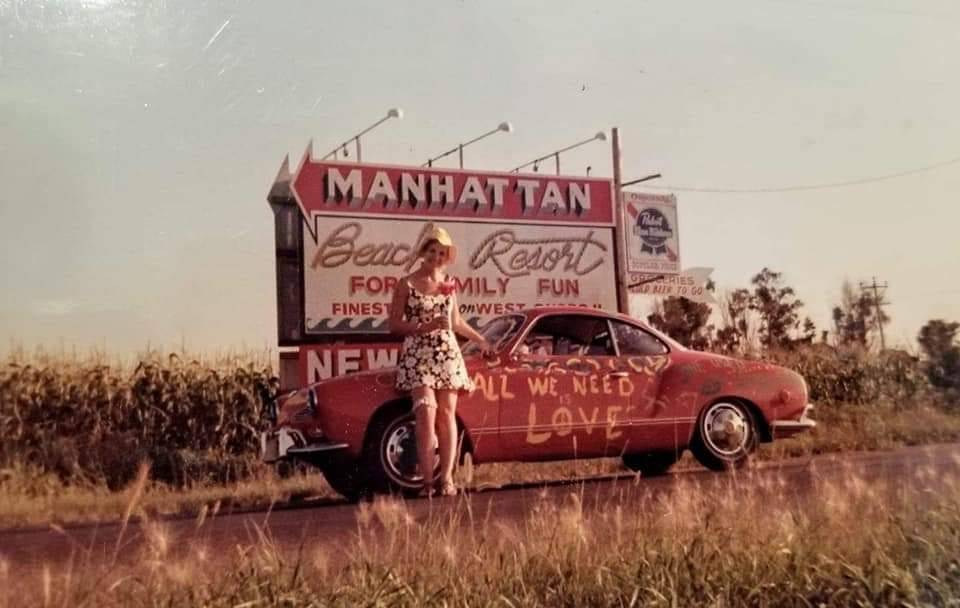
Manhattan Beach Resort Today
Interesting Newspaper Ads and Articles
Current Owners of Manhattan Beach Resort
(March 1984 - Present)
Manhattan Beach Resort Today
Interesting Newspaper Ads and Articles
Affordable, family-operated resorts are nearly extinct in the Iowa Great Lakes region. The unique value proposition of Manhattan Beach Resort cannot be understated. There is significant demand to join our beloved resort, which is managed by a waitlist that grows every year.
